
2018 VOLUME 30
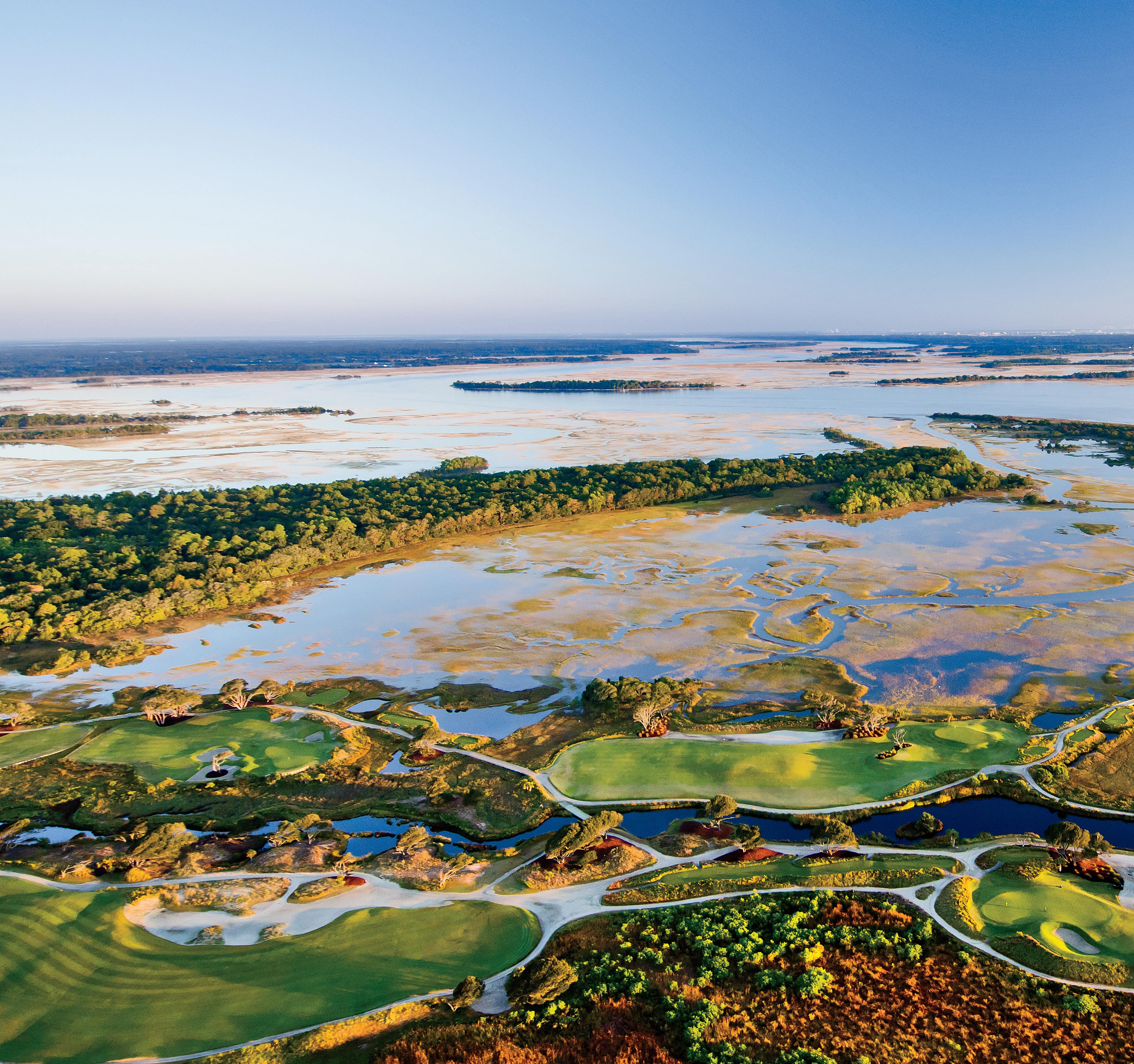
Where will you be, when the legends arrive? GRANDSTAND HOMESITES FOR YOUR VIEWING SPRING 2018. Obtain the Property Report required by Federal Law and read it before signing anything. No Federal or State agency has endorsed or judged the merits of value, if any, of this property. This is not intended to be an offer to sell nor a solicitation of offer to buy real estate in any jurisdiction where prohibited by law. This offer is made pursuant to the New York State Department of Law’s Simplified Procedure for Homeowners Associations with a De Minimis Cooperative Interest (CPS-7).The CPS-7 application (File No. HO16-0007) and related documents may be obtained from the sponsor. This project is registered with the State of New Jersey Department of Banking and Insurance Real Estate Commission. Obtain and read the NJ Public Offering Statement before signing anything (NJ Reg#16-15-0012). AN AFFILIATE OF KIAWAH PARTNERS Kiawahisland.com 866.554.2924 TOP 5 PLACES TO BUY A SECOND HOME ~ Barrons, 2017 Host of the 2021 PGA Championship, the magnificent Ocean Course has inspired Ocean Park – an extraordinary community in a landscape of legends. Kiawah Island’s impeccable lineage could only lead to this.




For generations We Build It As If It Were Our Own. Buffi ngtonHomes.com 843.768.8525
Photo: Newport653
Photo: Newport653
Photo: Newport653
Photo: Newport653



architecture v interior design 843.937.6001 theandersonstudio.com
To design, build, or renovate a home, the team you surround yourself with is just as important as the materials. Actually, it means everything. Dolphin Architects & Builders starts the process the right way — with listening and conversation. You’ll get to know us, and most importantly, we’ll get to know you. For more than 27 years, we’ve created homes with only our clients and the highest standards in mind. Because in the end, it’s your home.
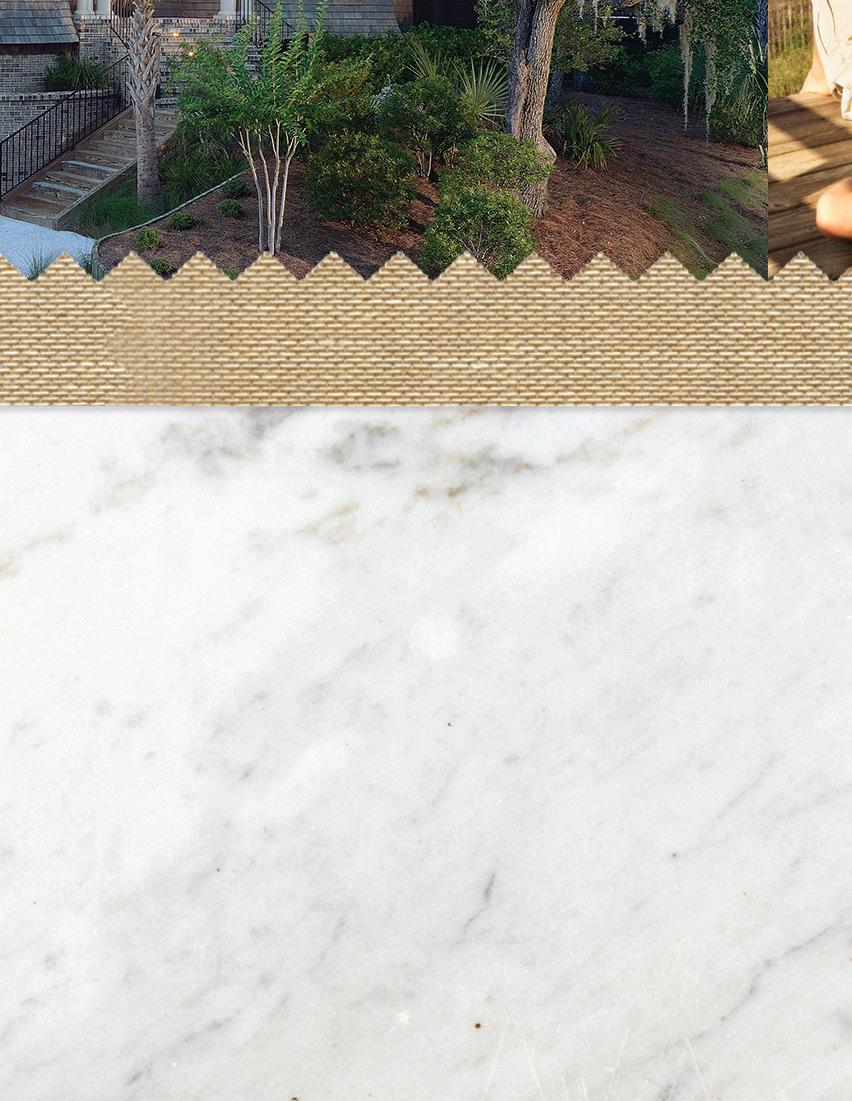
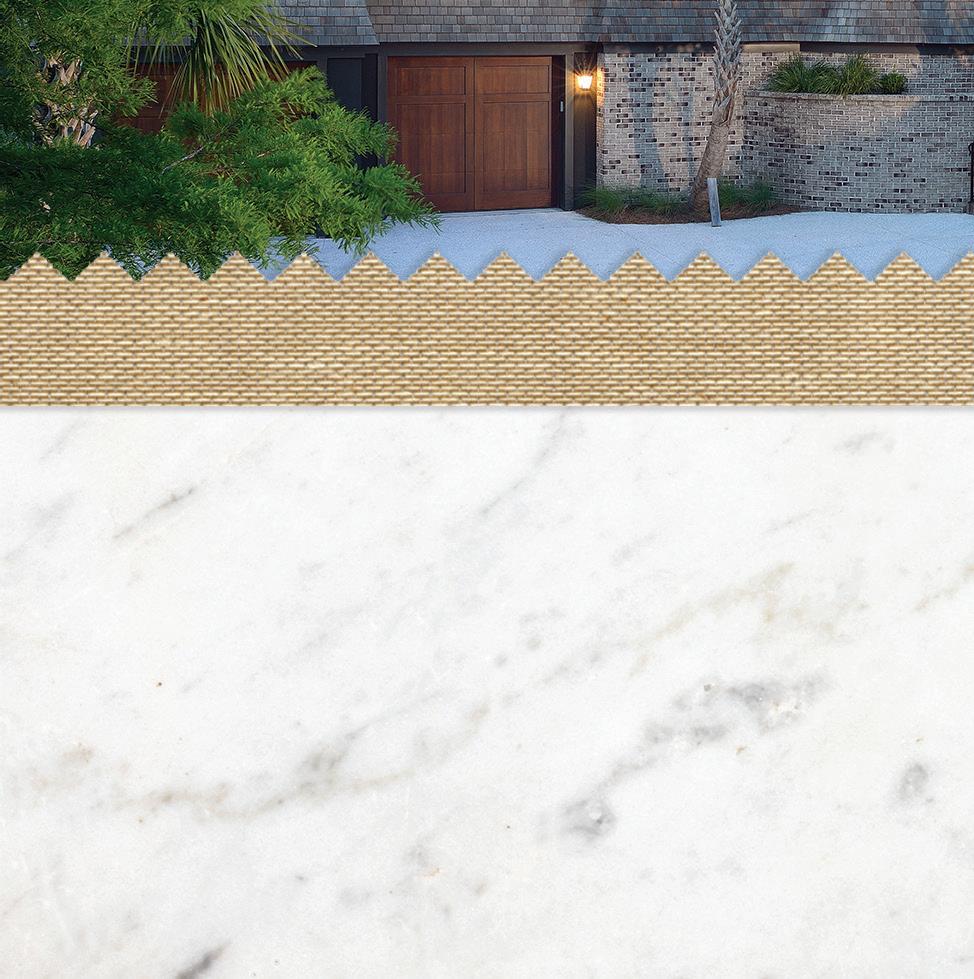


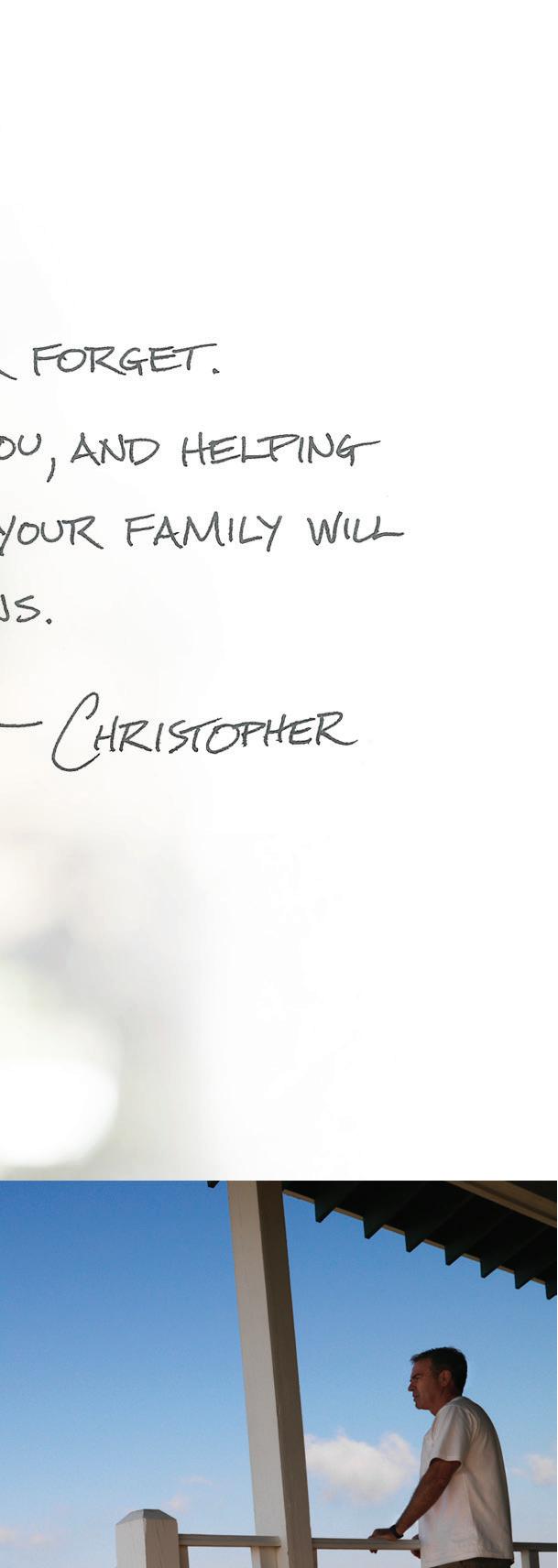
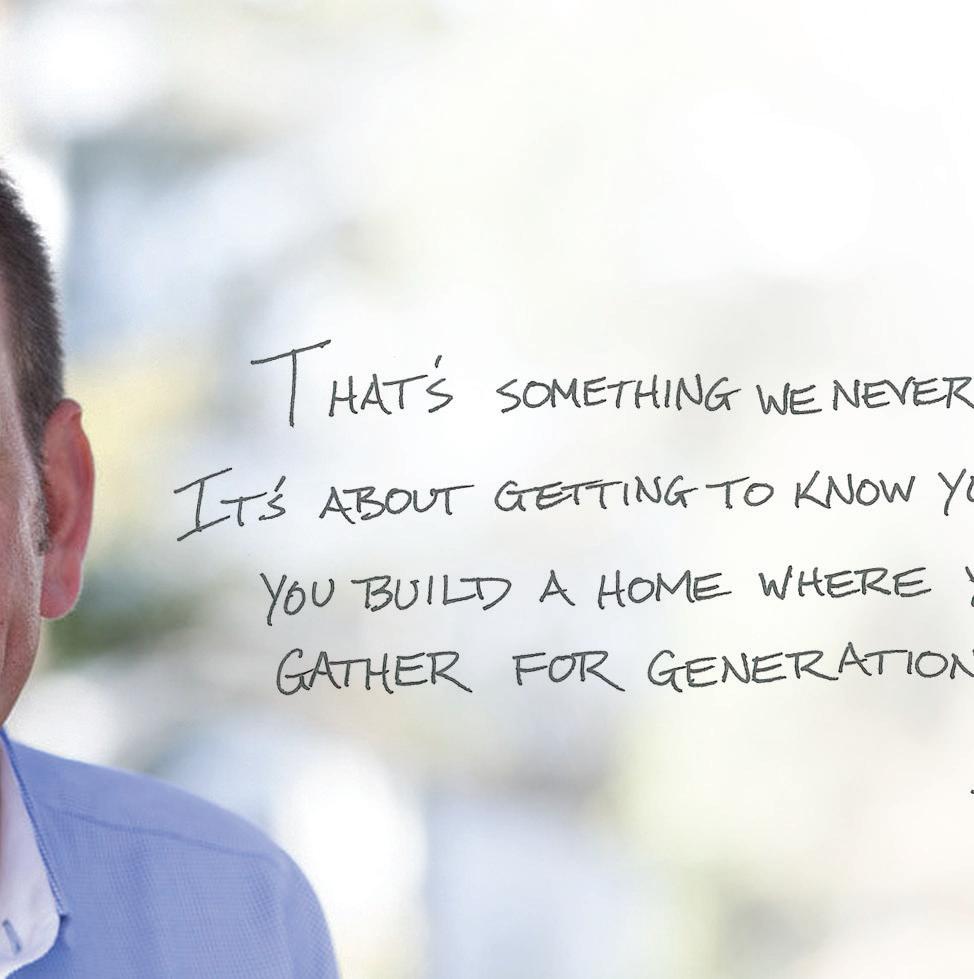

DolphinDesignBuild.com 843.768.2404
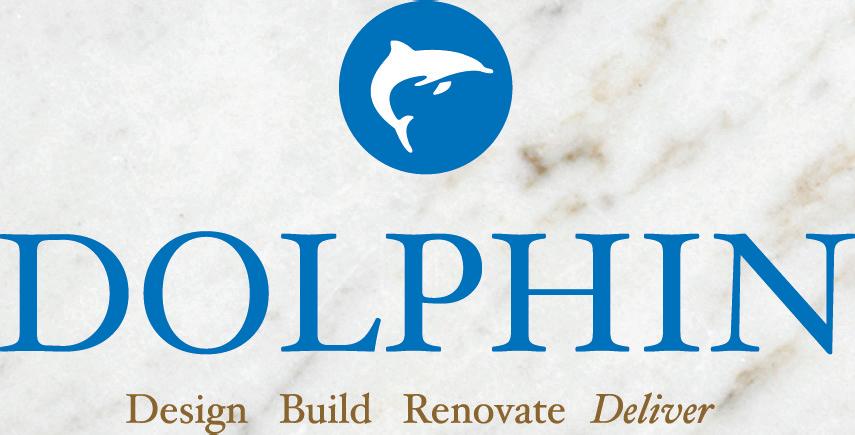

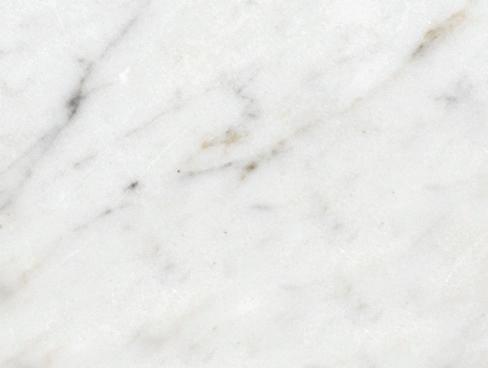



LEGENDS MAGAZINE
NOW PROUDLY OFFERING PROPERTY MANAGEMENT SERVICES – CALL FOR DETAILS
Owner, Dolphin Architects & Builders
It’s Your Home.
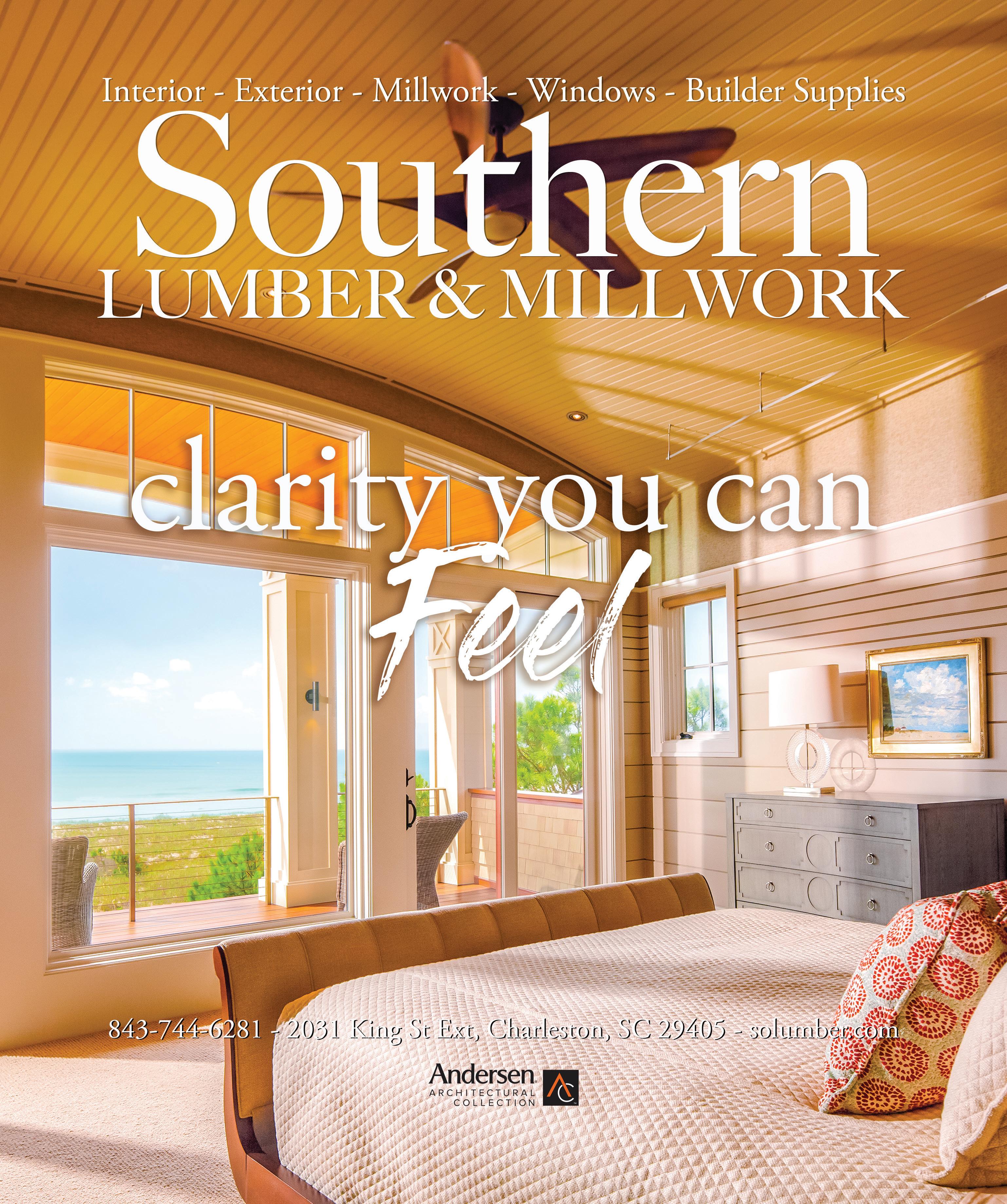

MT. PLEASANT 695 COLEMAN BLVD. 843-849-0711 CHARLESTON 1290
RITTENBERG BLVD. 843-571-5142
SAM
KI AWAH 420 FRESHFIELDS DRIVE 843-768-4 246 FURNITURE RUGS ACCESSORIES LIGHTING FABRICS BEDDING OUTDOOR FURNITURE DESIGN SERVICES
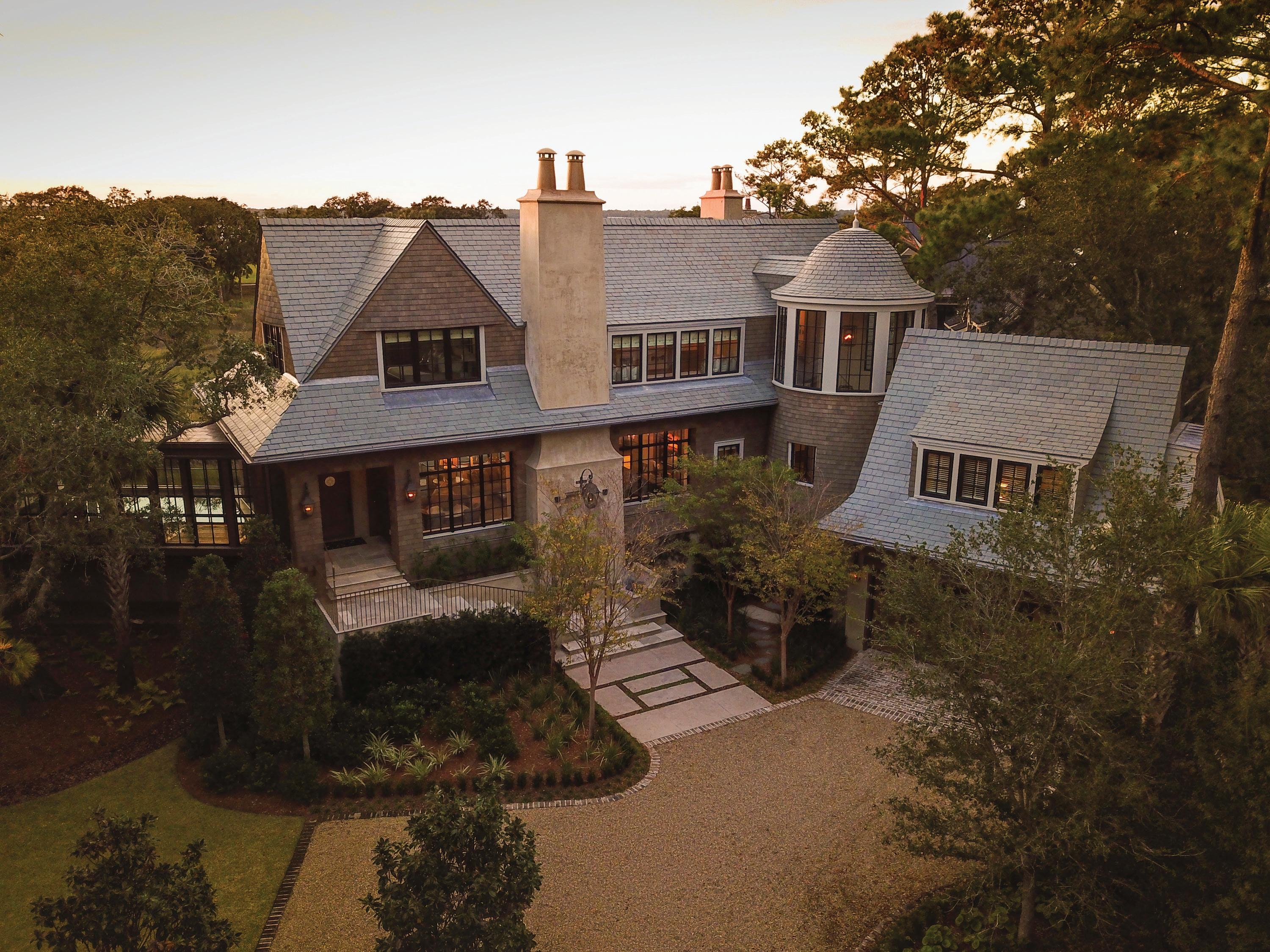
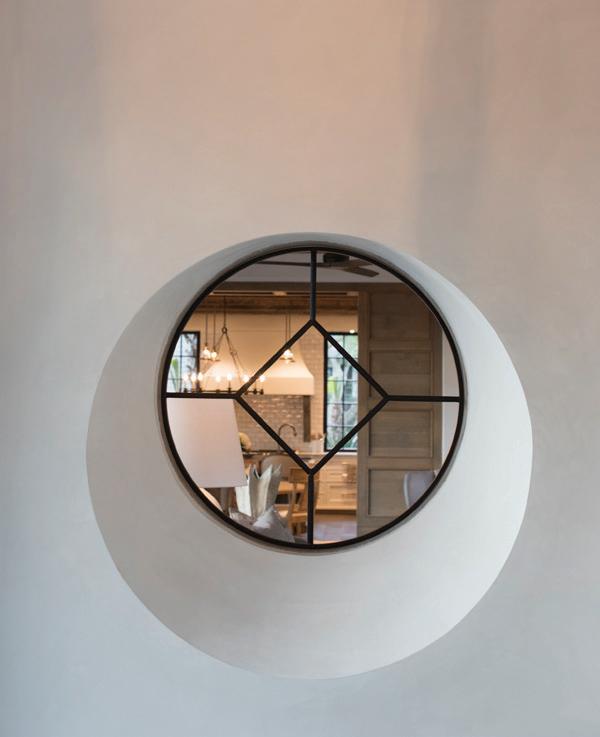


Epic Development, LLC (843) 224-7151 epicdevelopmentsc.com PO Box 868 Johns Island, South Carolina 29457
the nicest homes on Kiawah.
IT’S ALL IN THE DETAILS Building
Architecture: Anderson Studio of Architecture and Design
Photography: Brennan Wesley

INSURANCE OUR PASSION. YOUR PEACE OF MIND. Insuring residential and commercial coastal properties. steadmanagency.com | 8 Vanderhorst Street | Charleston, SC | 843.723.4001






LEGENDS MAGAZINE 2018 NO 30 DESIGN | BUILD | RENOVATE | POOL MAINTENANCE 843.767.7665 | www.aquabluepools.net Voted “Best Pool and Spa Service” ree Years in a Row! Serving Kiawah for 27 Years
Photo by Patrick Brickman
Photo by Holger Obenaus



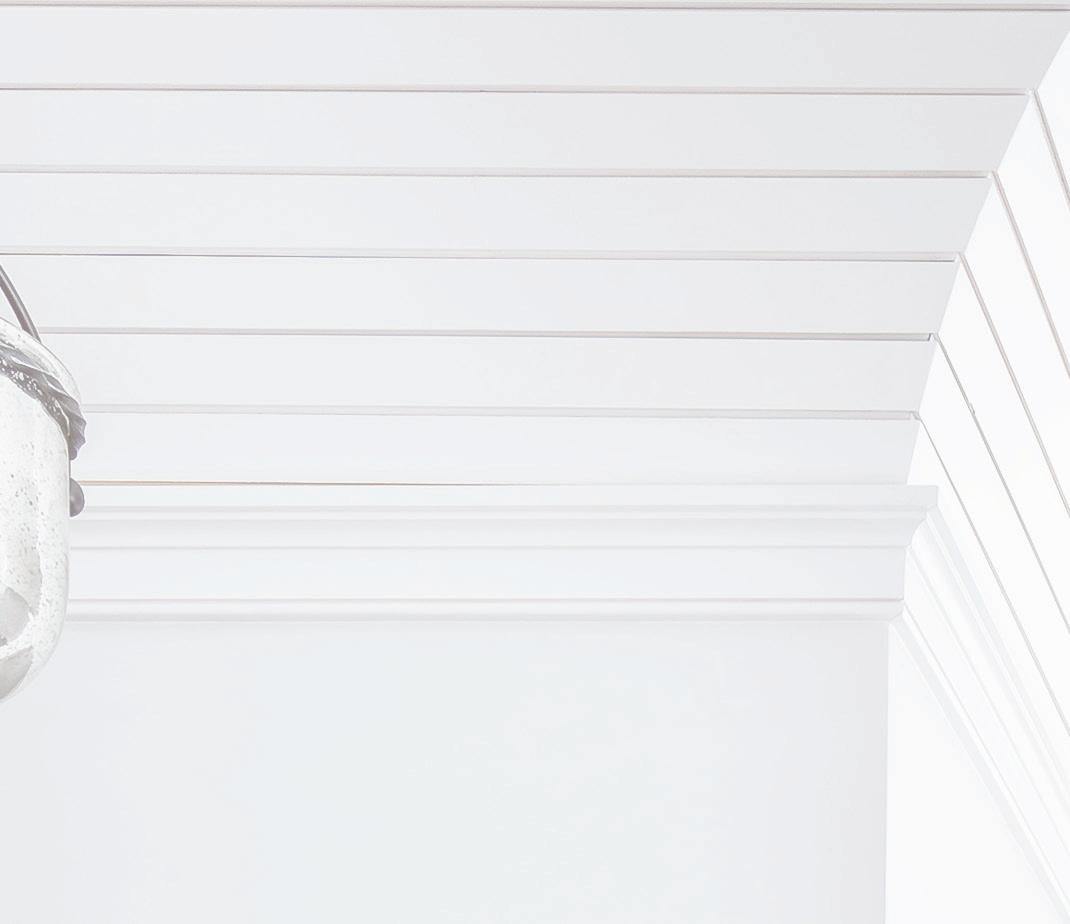





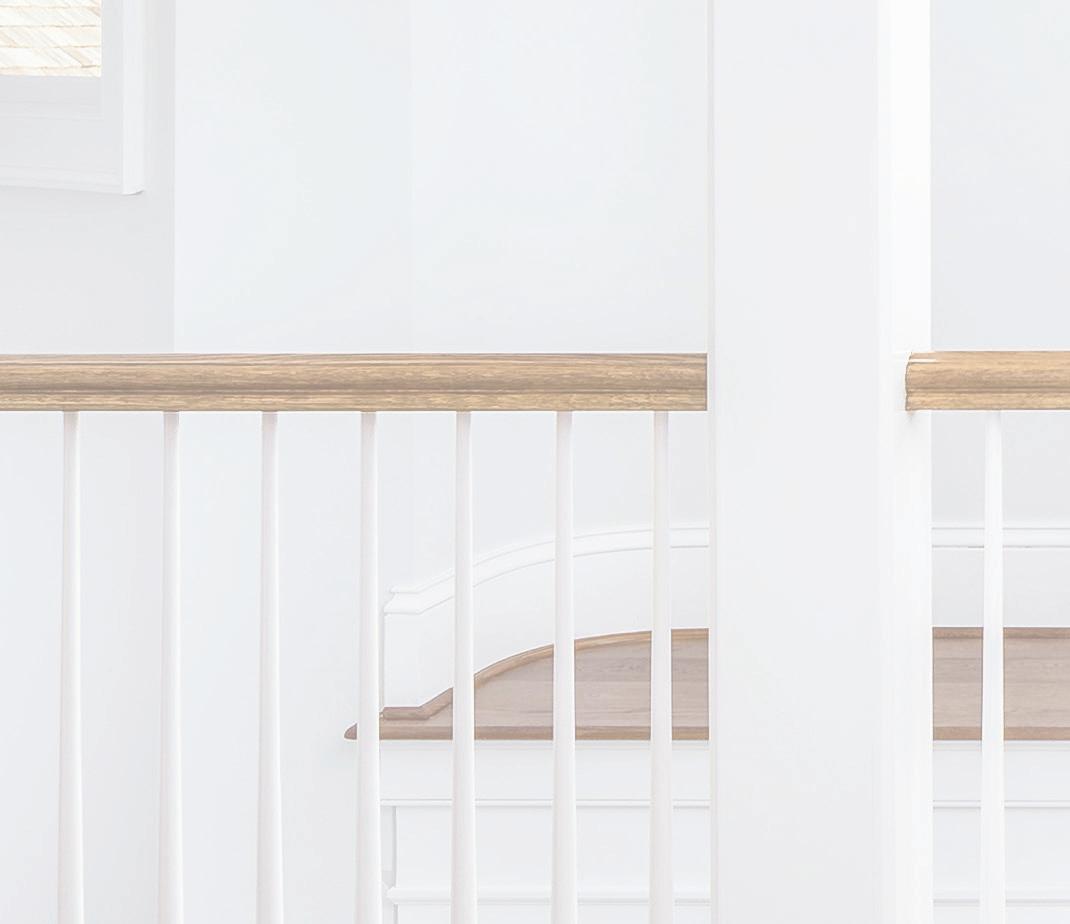

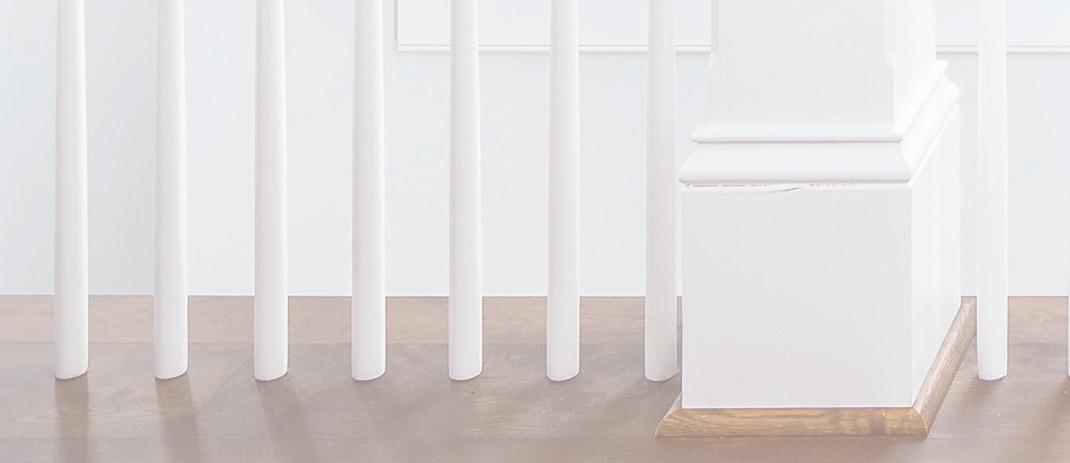









www.manganinccustomhomes.com Quality | Dedication | Integrity
OWNER PROFILES
KAREN & DEE BURGER
MAUREEN & RICH DABRUZZI
30
PIECE OF CAKE
A romantic Island elopement: How this happy couple tied the knot.
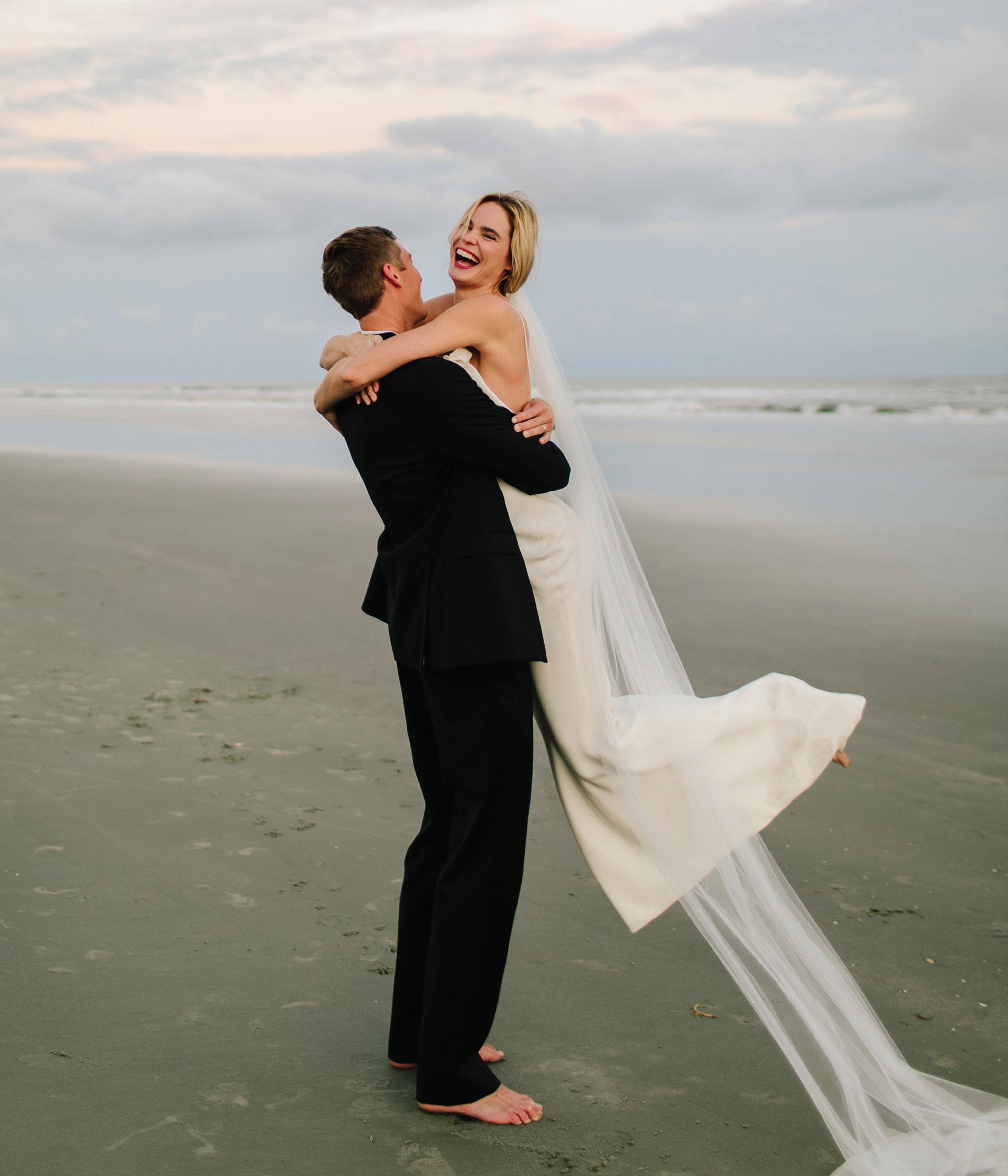
40
DIARY OF A KIAWAH PIONEER
The final installment of Blanche Brumley’s hallmark diary—looking to the future.
50
CHASING REDS
The fall morning on the water with Voysey’s Doug Blair and celebrity chef Tom Colicchio was nothing short of thrilling.

66
A FAMILY AFFAIR
Two brothers taking the golf world by storm: Wesley and George Bryan discuss golf, family, and food.
76
RIVERS RUN THROUGH IT
Explore the extraordinary lacework of blackwater rivers that flow from the Carolina piedmont to the Atlantic.
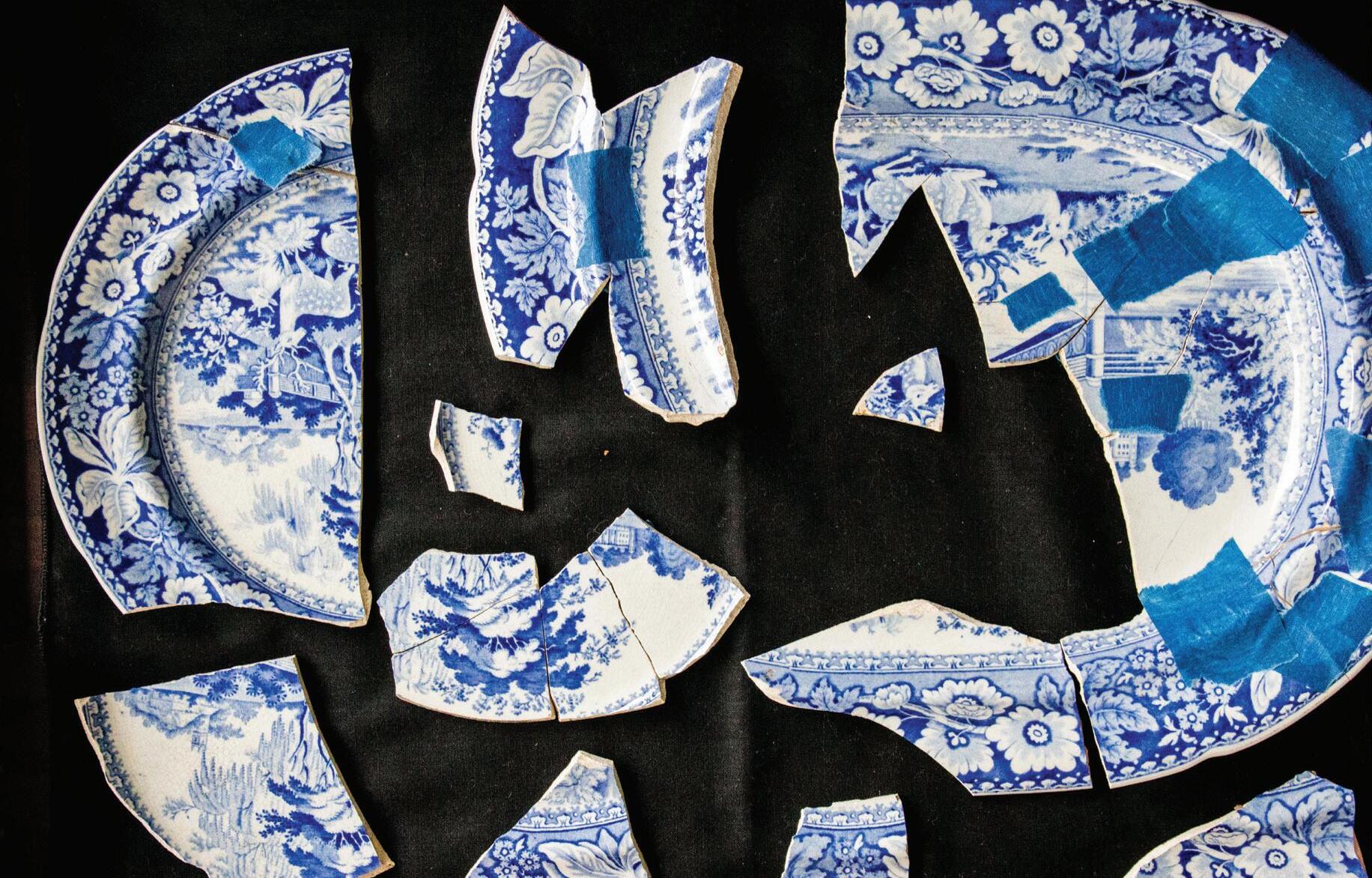
12 LEGENDS MAGAZINE 2018 NO 30
26
86 30
94
ON & ABOUT KIAWAH | 148
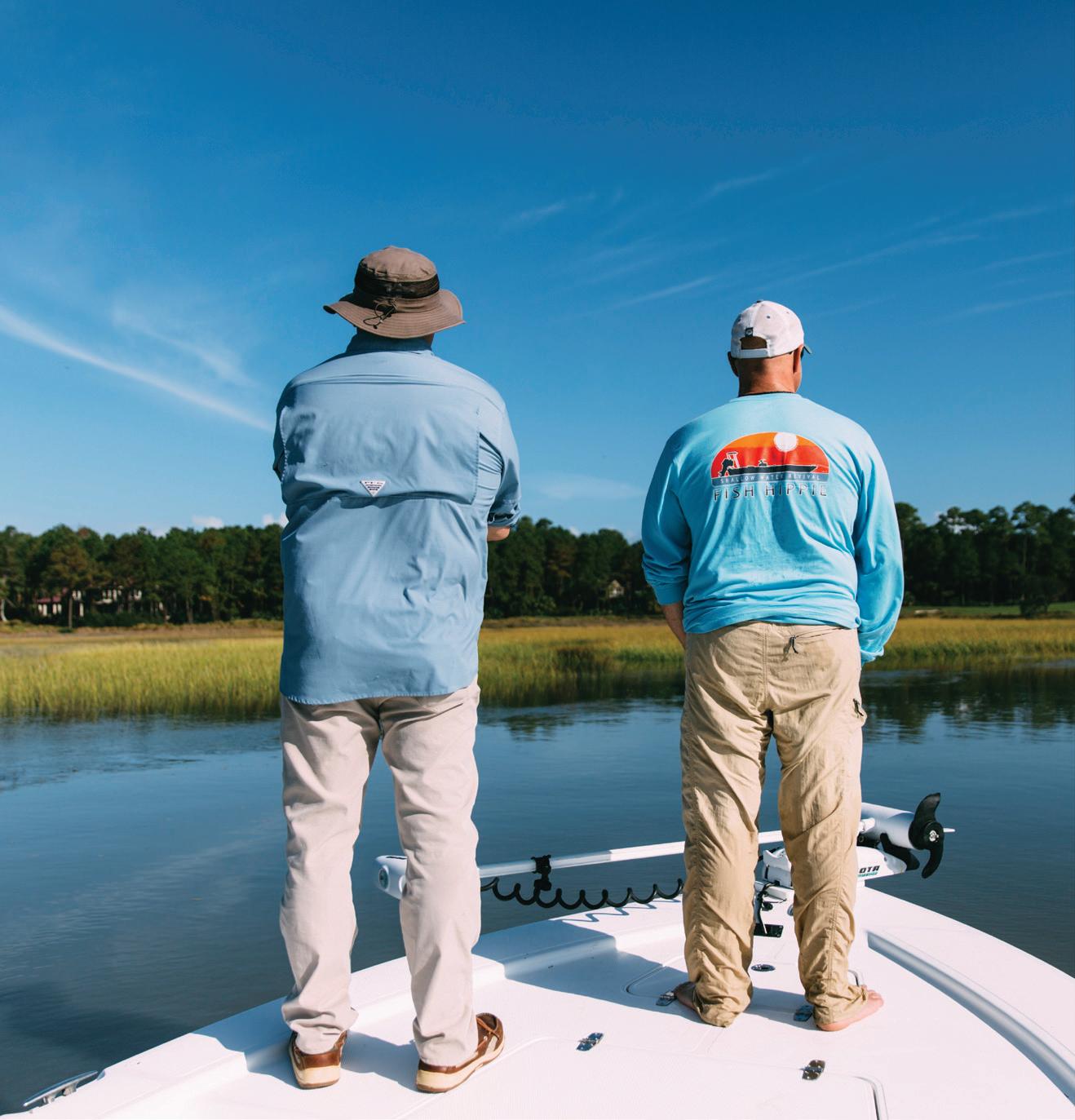
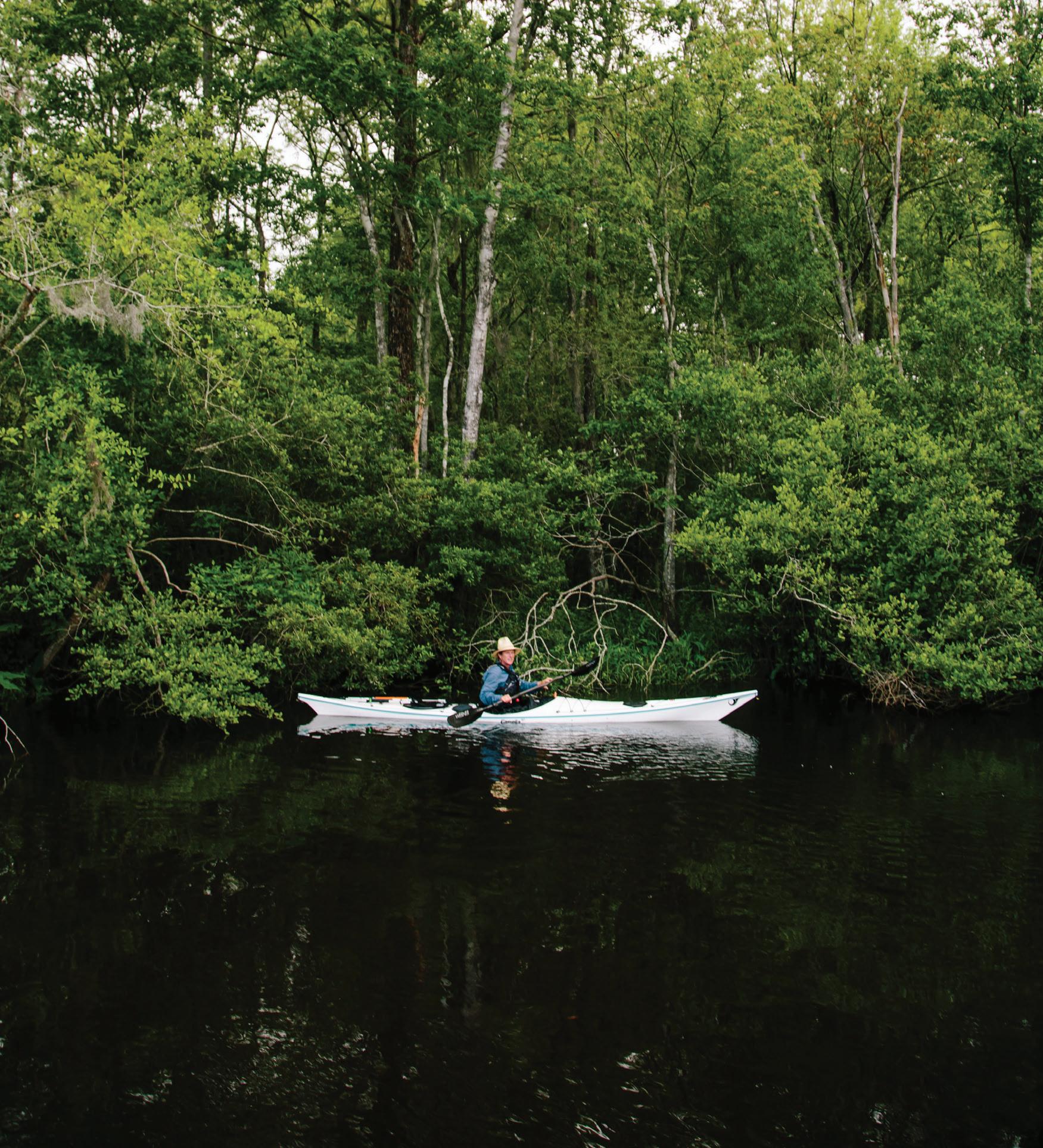
INSIDER’S CORNER:
ELLEN WALKLEY & GORDON HILLOCK | 142
COUGAR POINT
CLUBHOUSE | 136
END NOTE | 159
ON THE COVER: George and Wesley Bryan
86
A FRENCH CONNECTION
Juliana Falk stumbles upon relics of the past in the backyard of her Laurens Street house and embarks upon an incredible journey of preservation.
100
THE LOST PARAKEETS
Learn how the colorful Carolina parakeet dwindled to extinction last century and discover a cue for conservation.
108
SEWE BY THE SEA
From sheep to shrimp, water dogs to winning cocktails: The inaugural SEWE by the Sea was a wild success!
120
ARTIST-IN-RESIDENCE
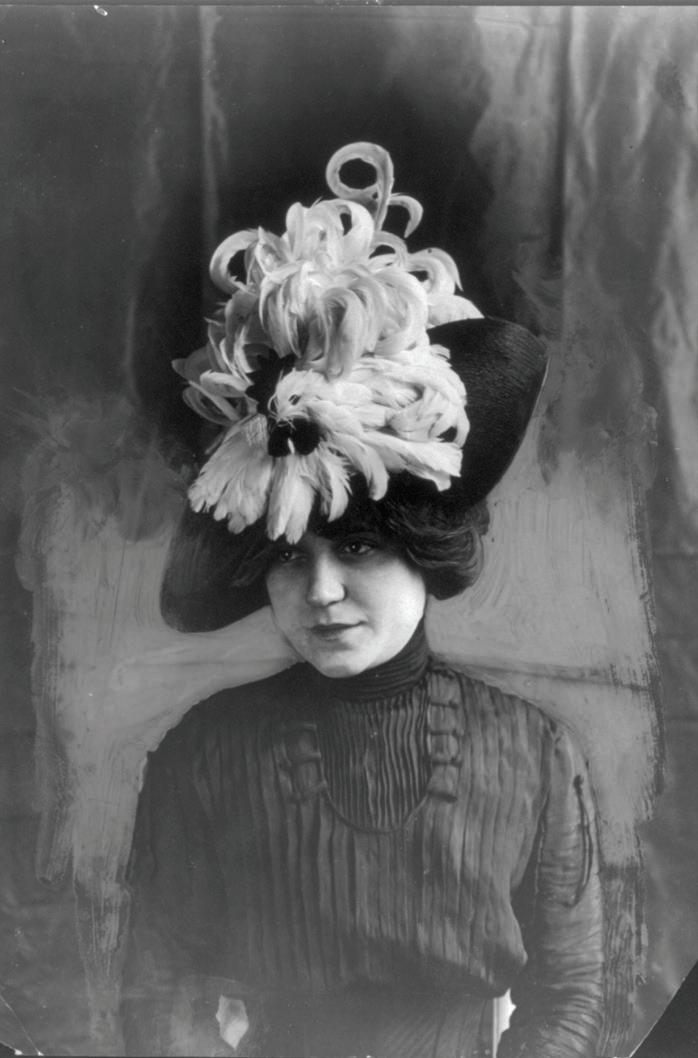
Wildlife painter and Charleston resident Peggy Watkins comes to Kiawah Island, sharing her thoughts on light and shape.
128
GOOD WORKS: FISHER HOUSE CHARLESTON
Trux and Durbin Emerson tell the incredible story of the newly opened facility, including the big hearts and endless optimism that made it all possible.
20 100 50 76
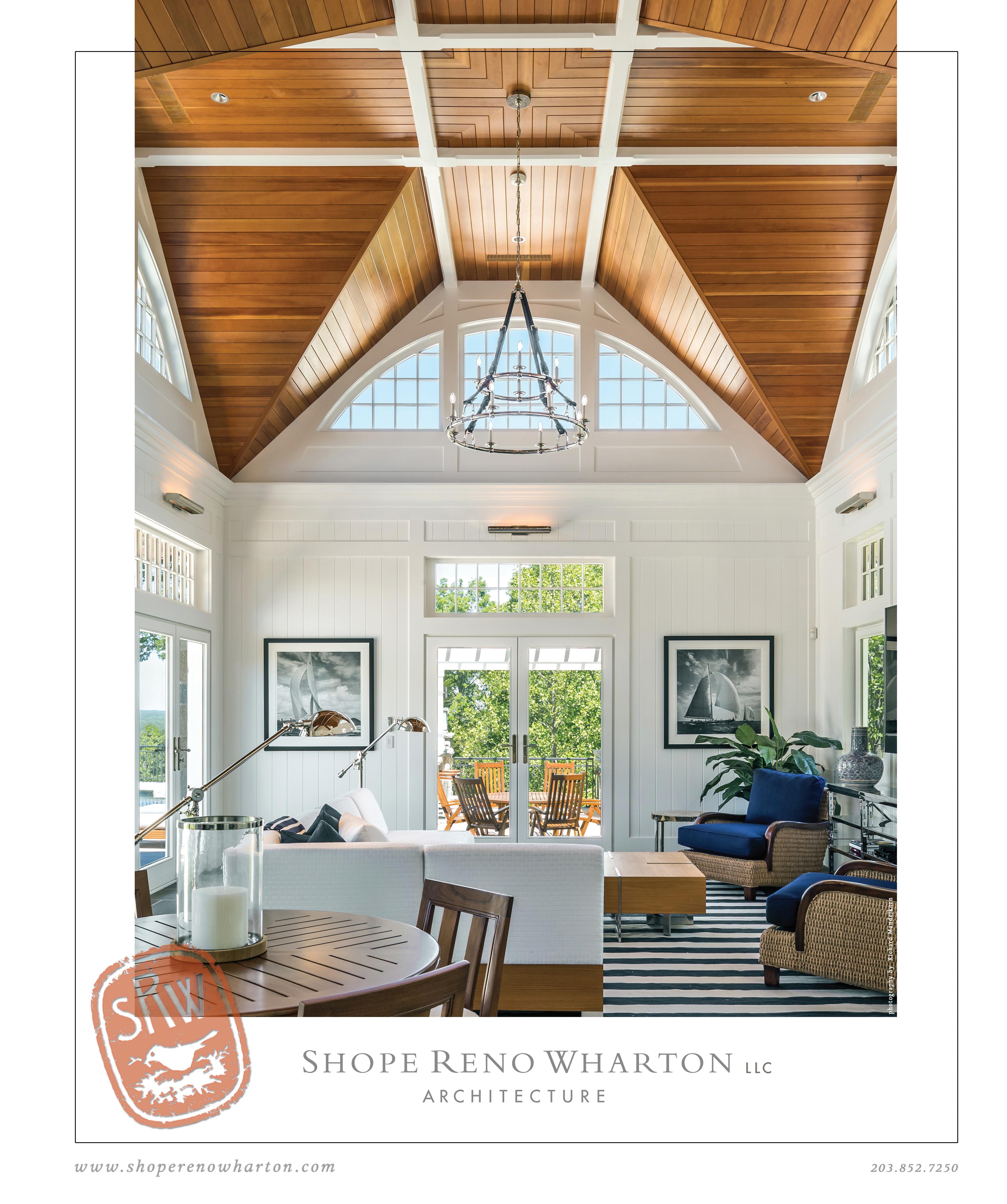
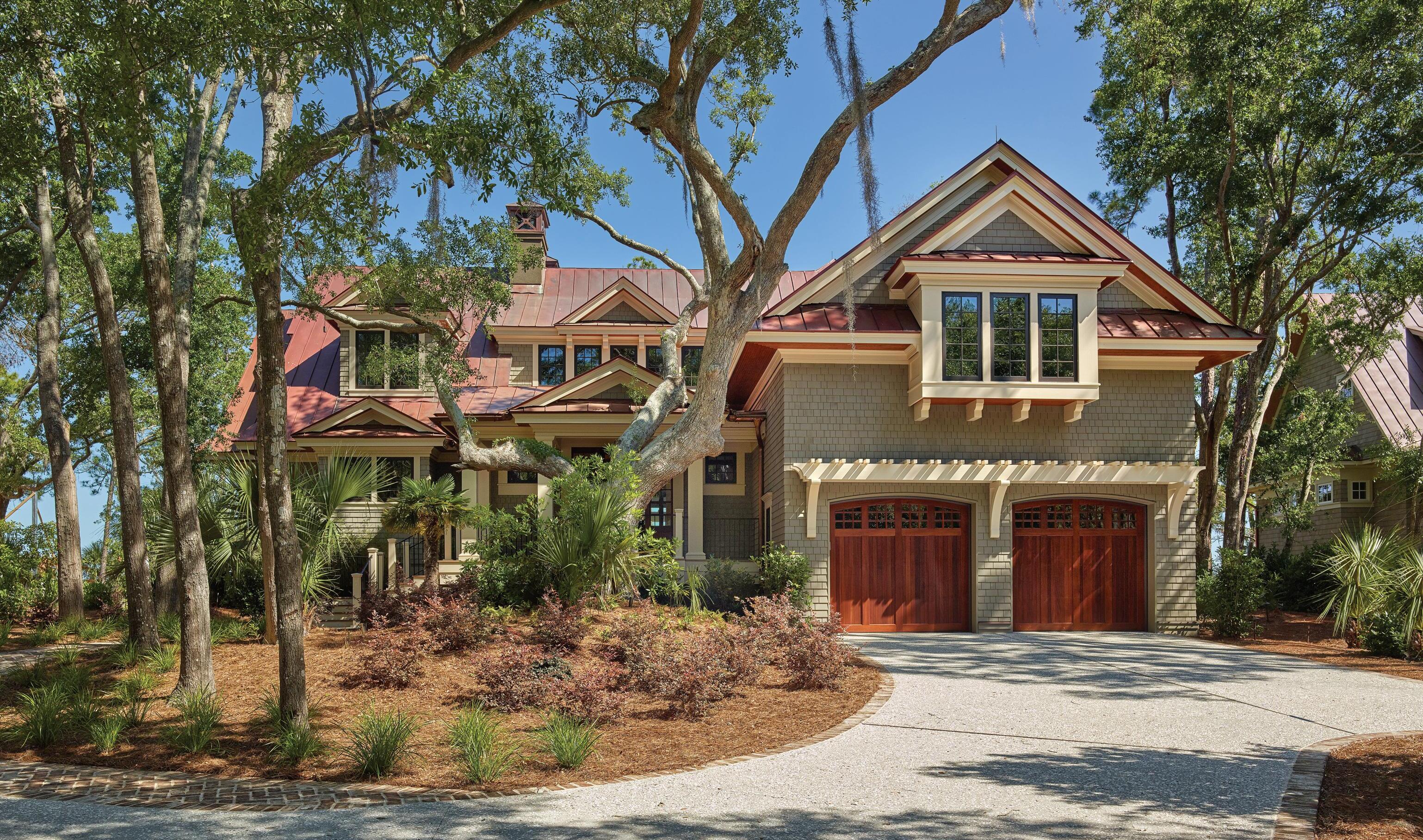

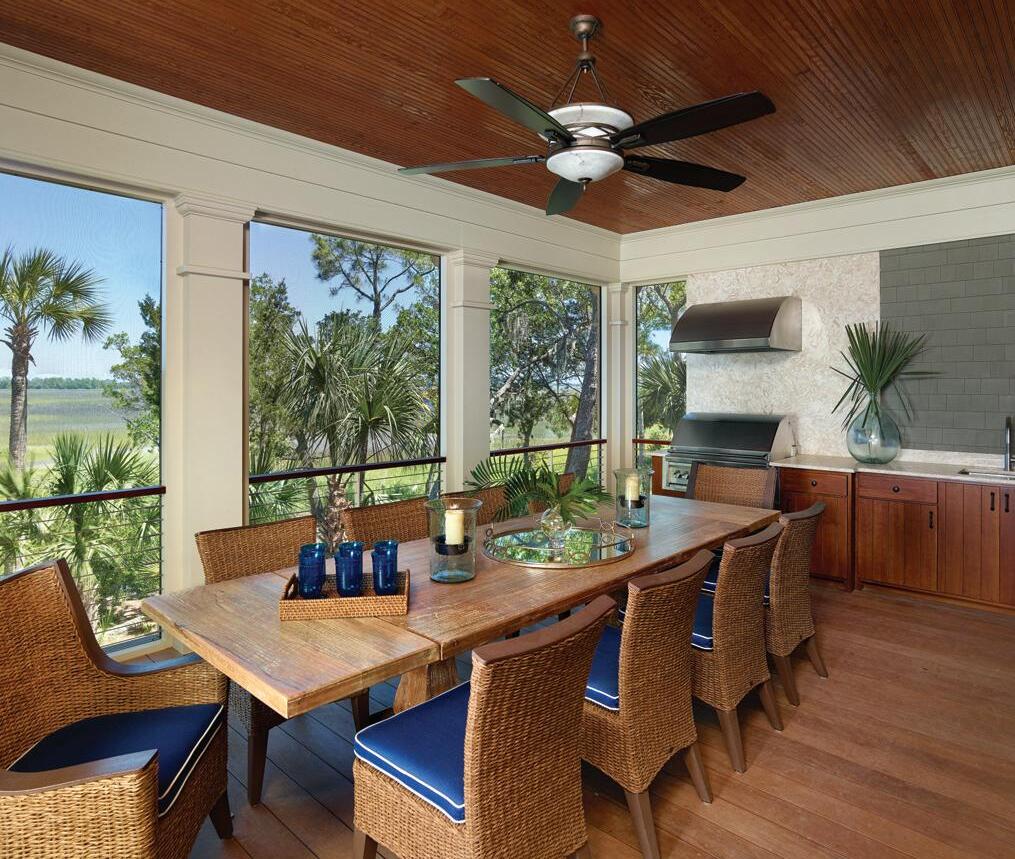
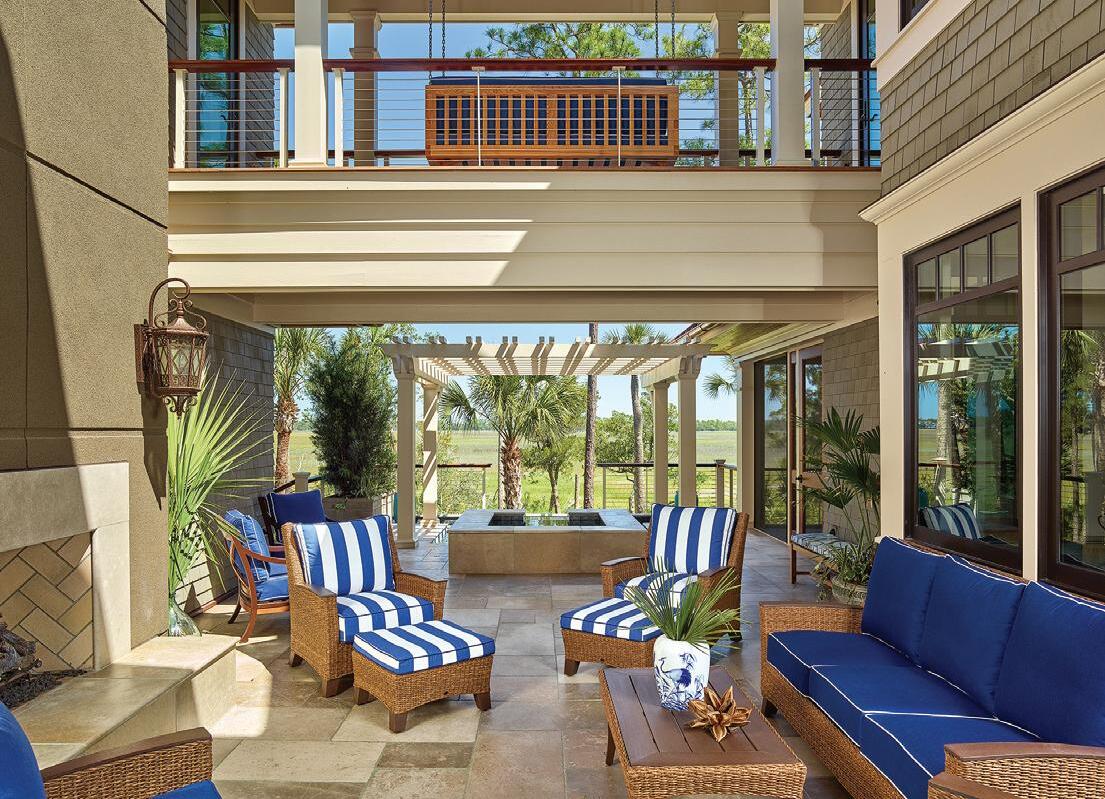
rmbuck.com Custom Luxury Homes. Renovation. Property Management 843.559.1155 ATTENTION TO DETAIL... only a family builder can provide.
Photography: Holger
M.
E. Obenaus

Obtain the Property Report required by Federal Law and read it before signing anything. No Federal or State agency has endorsed or judged the merits of value, if any, of this property. This is not intended to be an offer to sell nor a solicitation of offer to buy real estate in any jurisdiction where prohibited by law. This offer is made pursuant to the New York State Department of Law’s Simplified Procedure for Homeowners Mother Nature created it. We perfected it. It’s time to pick your place in paradise.

Associations with a De Minimis Cooperative Interest (CPS-7).The CPS-7 application (File No. HO16-0007) and related documents may be obtained from the sponsor. This project is registered with the State of New Jersey Department of Banking and Insurance Real Estate Commission. Obtain and read the NJ Public Offering Statement before signing anything (NJ Reg#16-15-0012). AN AFFILIATE OF KIAWAH PARTNERS Kiawahisland.com • 866.554.2924 TOP 5 PLACES TO BUY A SECOND HOME ~ Barrons, 2017 If life is but a dream, THIS IS LIVING .
EXECUTIVE EDITOR & DESIGN
Hailey Wist
COPY EDITOR
Sunny Gray
PHOTO EDITOR
Nathan Durfee
ADVERTISING
Kelly Keen
SPECIAL THANKS
Leah Bell
Kelly Bender
Melanie Birch
Peter Birch
Doug Blair
Blanche Brumley
Frank Brumley
George Bryan
Wesley Bryan
Dee Burger
Karen Burger
Deborah Cardenas
Jack Case
Townsend Clarkson
Tom Colicchio
Chris Crolley
Maureen Dabruzzi
Rich Dabruzzi
Joe Dan
Lucinda Detrich
Durbin Emerson
Trux Emerson
Juliana Falk
Elliot Hillock
Gordon Hillock
Janie Hills
Bryan Hunter
David Keller
Lenny Kohlmayer
Celeste Marceca
CONTRIBUTORS
Christina Rae Butler
Joel Caldwell
Peter Frank Edwards
Stephanie Hunt
Bryan Hunter
Olivia Rae James
Sandy Lang
Lindsey Shorter
Melissa Toms
Gately Williams
Charlotte Zacharkiw
Christine Marley
Rachel Moore
Josh Nissenboim
Amy Pastre
Katie Peterson
John Powell
Chris Randolph
Helen Rice
Mary Roberts
Courtney Rowson
Kiawah Island Legends is a publication of Kiawah Island Publishing, Inc., an affiliate of Kiawah Island Real Estate. Copyright 2018.
Chuck Schaffer
Chris Shope
Bonnie Singletary
Kim Souza
Blake Suarez
Cory Sullivan
Christina Sundberg
Matt Sundberg
Ellen Walkley
Peggy Watkins
All rights reserved in all countries. Contents may not be reproduced in any manner without the written permission of Kiawah Island Publishing, Inc. Kiawah Island Publishing, Inc. does not necessarily agree with the viewpoints expressed by authors of articles or advertising copy.
kiawahlegends.com
18 LEGENDS MAGAZINE 2018 NO 30
, , . LEGENDS . , . , LEGENDS .
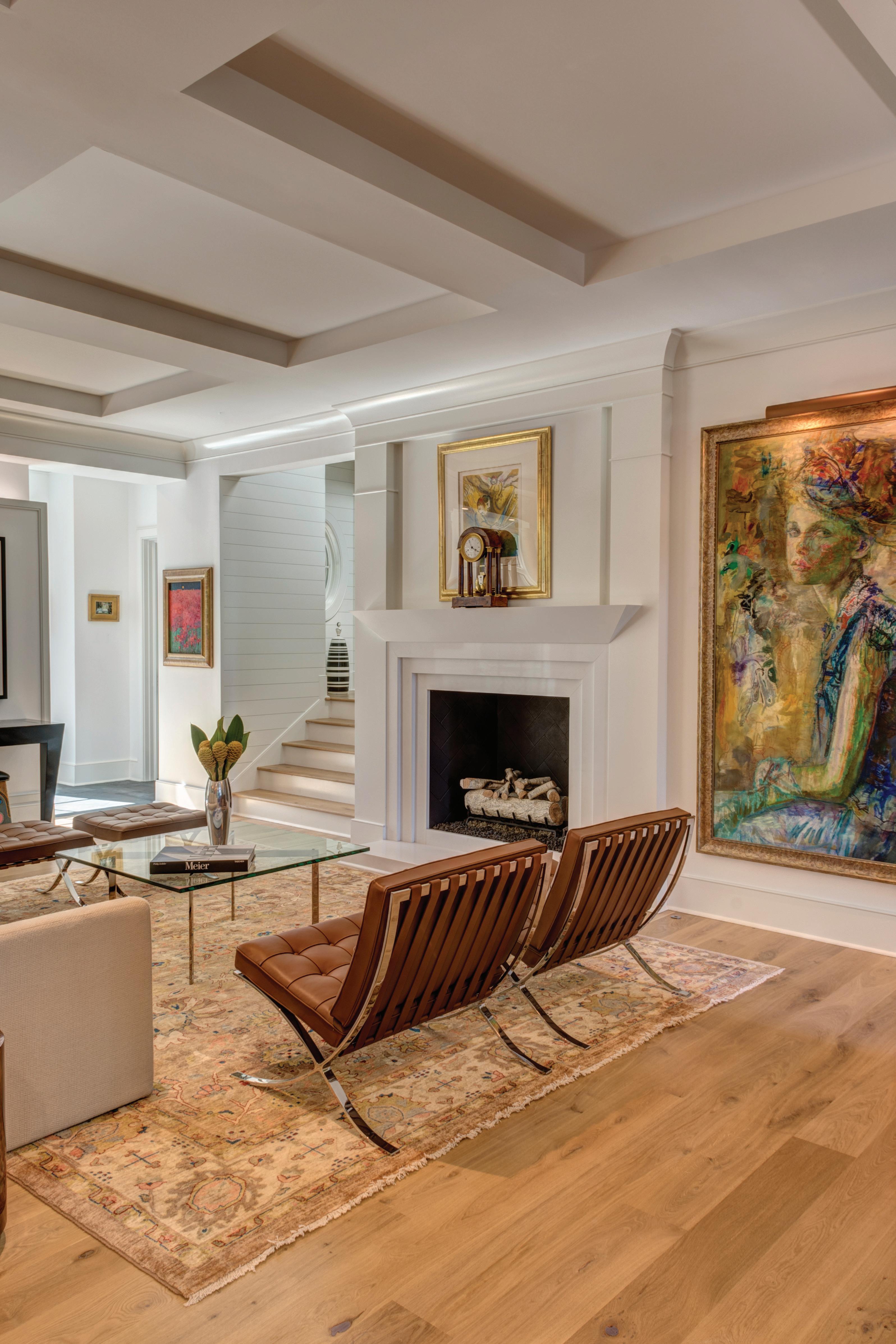
CHARLESTON · CHARLOTTE World Class Living KINGS W OO D The Mark of Distinction in World Class Home Building Charleston (843) 801.1600 Charlotte (704) 889.1600 www.kingswoodhomes.com TM



294
WWW.MDUMASANDSONS.COM | 843-723-8603 VALIDATED PARKING WITH PURCHASE
SOUTHERN TIDE | BARBOUR | ETON | HICKEY FREEMAN | SAMUELSOHN FILSON | ROBERT TALBOTT | FAHERTY | FERRAGAMO | TOD’S
KING STREET | CHARLESTON SC 29401 CORNER OF KING & SOCIETY
We believe impeccable craftsmanship and superior quality are not mutually exclusive. Siteline wood windows and patio doors from JELD-WEN are the definition of both. FPO
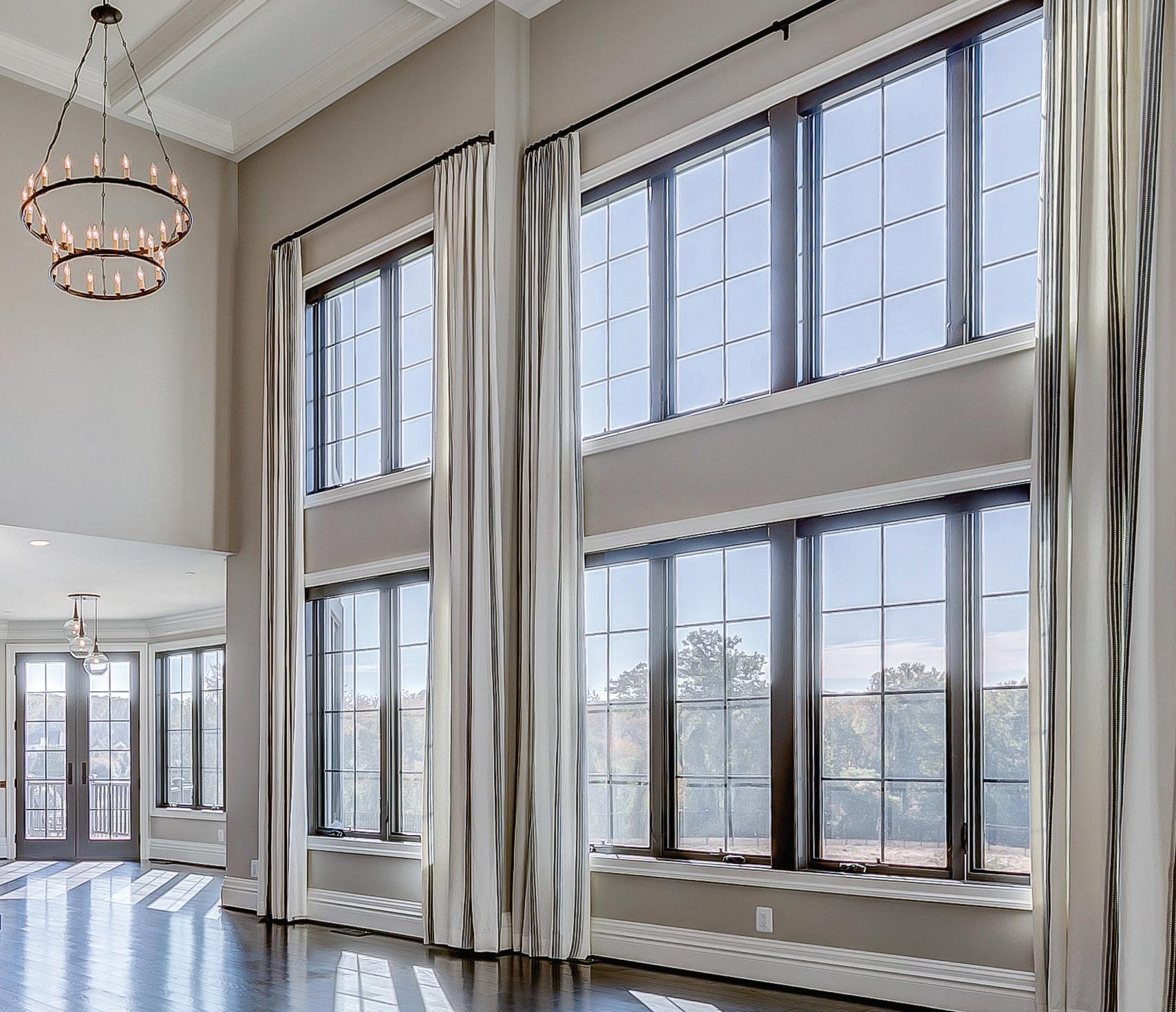
the other.
We believe impeccable craftsmanship and superior quality are not mutually exclusive. Siteline ® wood windows and patio doors from JELD-WEN are the definition of both. FPO
and quality.
without
Photo credit: Zander Homes, Baltimore, MD
Craftsmanship
You can’t have one
Let life in™
CO-BRAND
© 2017 JELD-WEN, Inc. 12965-7 jeld-wen.com
and quality. You
one without
other.
Photo credit: Zander Homes, Baltimore, MD
Craftsmanship
can’t have
the
Let life in™
CO-BRAND 630 Skylark Drive | Suite U | Charleston, SC 843.572.9727
800.899.5712 | Muhler.com
|
Contributors
Olivia Rae James is a wedding and editorial photographer living in Charleston, SC. Recent weddings have taken her to the English countryside, Sonoma, Aspen, and Harbour Island. Editorial clients include Food & Wine, Garden & Gun, and Monocle, among others.
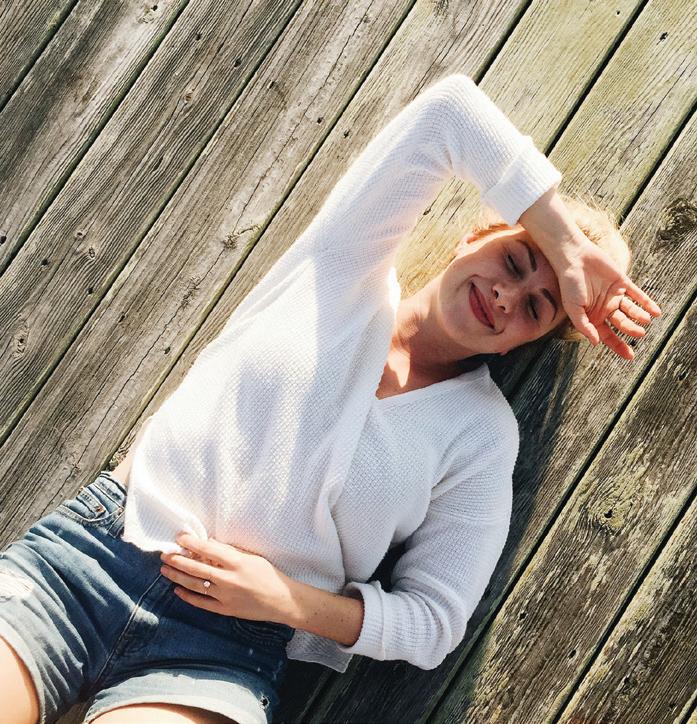
I loved photographing real-life couple (and newlyweds!) Matt and Christina for the elopement story. They are so fun and playful together, which made my job of capturing them (with a gorgeous Kiawah backdrop) very easy.
When not writing features, profiles, and travel stories, Stephanie Hunt is happy exploring the backwoods and blackwater rivers of the Lowcountry. She loves adventures by bike, kayak, or on two feet, and writing about them for publications such as Legends, Charleston magazine, Coastal Living, and U.S. News & World Report.


Burrowing deep in our forests to paddle along our blackwater rivers entails totally shifting gears. It’s an invitation to sanity and renewal, right at our back door.
Lindsey Harris Shorter is an editorial and lifestyle photographer living in Charleston, SC. She is a full-blown empath with a knack for creating comfortable and honest spaces for others to tell their story. Previous and current projects include work with The Style Line, Tiny Atlas Quarterly, Garden & Gun, and Local Wolves.
Joel Caldwell is an expedition photographer and writer based in New York. He uses outdoor adventure to tell conservation stories to a wider audience. Lately he’s been working in Central Asia, documenting snow leopard conservation. He has been published in National Geographic Voices, Iron & Air, and bioGraphic, among others.
Shooting the blackwater meant traveling the waterways of South Carolina’s Lowcountry— paddling between buttresses of ancient magnolia trees, talking in whispers, and feeling the magic.

22 LEGENDS MAGAZINE 2018 NO 30
OLIVIA RAE JAMES | PHOTOGRAPHER
STEPHANIE HUNT | WRITER
JOEL CALDWELL | PHOTOGRAPHER
LINDSEY SHORTER | PHOTOGRAPHER
Photographing SEWE by the Sea was mesmerizing!
My favorite part of the experience was watching the collie herd the sheep. I couldn’t take my eyes off of them!
Gately Williams is an editorial and landscape photographer. Taking breaks often to explore, his hiatuses from Charleston have included sixteen cross-country journeys via bicycle, motorcycle, and cars. Gately believes travel and collecting experiences are invaluable in progressing and staying inspired in his work.
Peggy was fun to photograph in the artist-inresidence piece. She is confident in her process and didn’t seem to notice my circling her with a camera.
Christina Butler is a professor at the American College of the Building Arts as well as an adjunct professor for the College of Charleston’s historic preservation department. Christina is the owner of Butler Preservation L.C., specializing in historic property research, preservation, National Register nominations, and restoration projects. Christina lives in Charleston with her husband, historian Nic Butler.
Researching the Carolina parakeets tugged at the heartstrings! It was refreshing, however, to learn that today there are tens of thousands of acres protected in our state to provide refuge for native species.
A frequent contributor to Legends, Peter Frank Edwards’s photography also appears in Garden & Gun, Bon Appétit, Coastal Living, and Food & Wine. When not on assignment, he enjoys cooking, tinkering with vintage audio, and being outdoors.

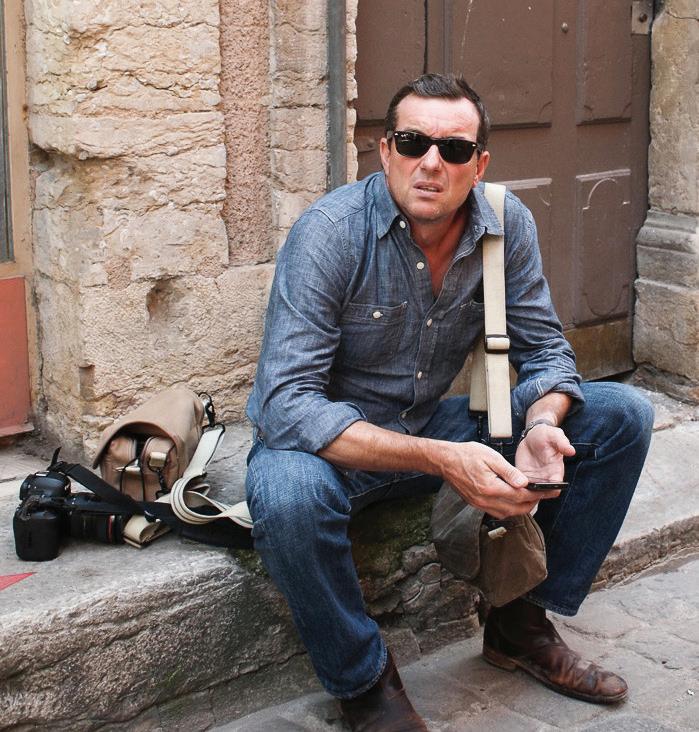
I enjoyed photographing nineteenth-century artifacts for this issue, and the experience brought back memories of my own experiences on digs. I studied archaeology at the College of Charleston and Florida State University.
Most of all, travel and food writer Sandy Lang wants to tell some good stories. She’s a contributing editor to Charleston magazine and Maine and writes often for Legends. She also frequently collaborates with Peter Frank Edwards Photographs for commercial, book, and editorial projects.

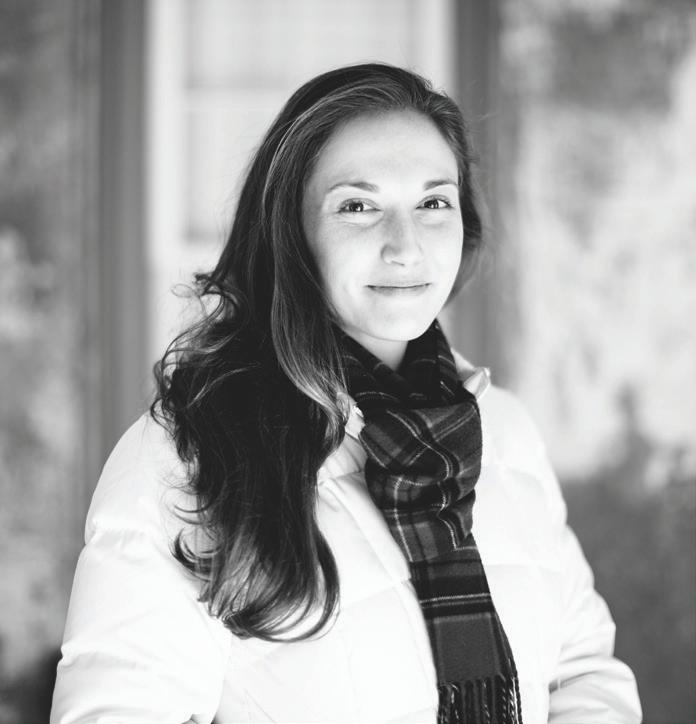
LEGENDS MAGAZINE 2018 NO 30 23
GATELY WILLIAMS | PHOTOGRAPHER
CHRISTINA RAE BUTLER | WRITER
PETER FRANK EDWARDS | PHOTOGRAPHER
SANDY LANG | WRITER
For French Connection , I spent several afternoons downtown with the “accidental preservationist” Juliana Falk. We happily had the chance to delve into several personal favorite subjects: old houses, Charleston gardens, and French wines.


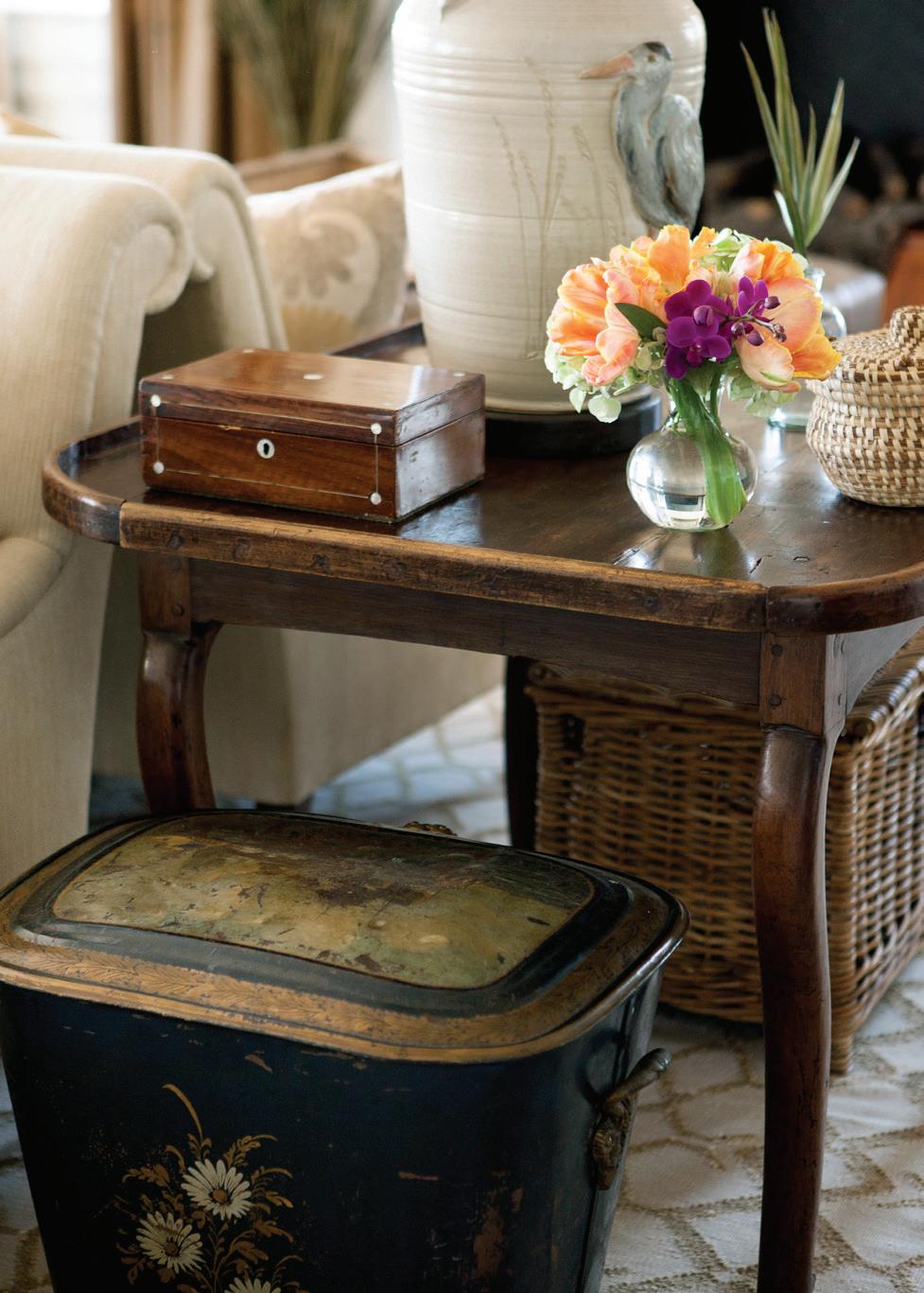

BIRMINGHAM • CHARLESTON • WWW.TAMMYCONNORID.COM




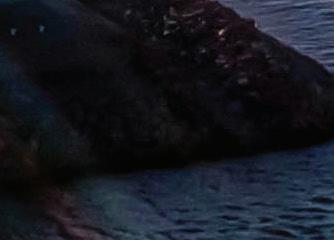

Corporate Litigation Intellectual Property Employment & Labor Financial Services Bankruptcy & Restructuring Federal & International Taxation Real Estate Estate & Wealth Planning Privacy & Data Security Energy & Environmental Public Affairs Health Care Global Services Economic Development Transportation We’ve helped
clients navigate the legal system for 20 years. Thank you for the opportunity to be a part of this remarkable community for two decades. Moore & Van Allen is proud to provide a broad spectrum of advice, counsel and local insight to businesses and individuals who call Charleston home. mvalaw.com Charleston O ce 78 Wentworth Street Charleston, SC 29401 Charlotte, NC Research Triangle, NC
our
for
content
this ad.
Moore & Van Allen Member Paul Lynch, whose o ce address is 78 Wentworth Street, Charleston, SC, is responsible
the
of
When I met artist Kathryn Mapes Turner on a warm afternoon in October, she was nearly delirious with joy. Perhaps the Wyoming native is always this exuberant, I can’t say for sure. But when I asked her about her visit to Kiawah Island for SEWE by the Sea (pg. 108), she told me about her morning on Captain Sams Spit. She described the sky, the way it is reflected in the shimmering wet sand, the birds and butterflies on the spit. We went all the way, she details, as far up on the spit as we could—we saw dolphins. She was so thrilled, she tells me, that she jumped into the water, right where the Kiawah River meets the Atlantic, clothes and all.

This happy anecdote is everything to me. It embodies the magic of Kiawah—the carefree bliss of the Island that has so captured our hearts. In a way, Kiawah lets us be kids again, to frolic in the surf, to bike into the dusk, to watch fireflies from the back porch.
This spring we celebrate the 30th issue of Legends magazine . It has been a joy to create. Thank you for another wonderful year.

26 LEGENDS MAGAZINE 2018 NO 30 EDITOR’S LETTER
WIST
HAILEY
WITH AN EYE MADE QUIET BY THE POWER OF HARMONY, AND THE DEEP POWER OF JOY, WE SEE INTO THE LIFE OF THINGS.
—
WILLIAM WORDSWORTH


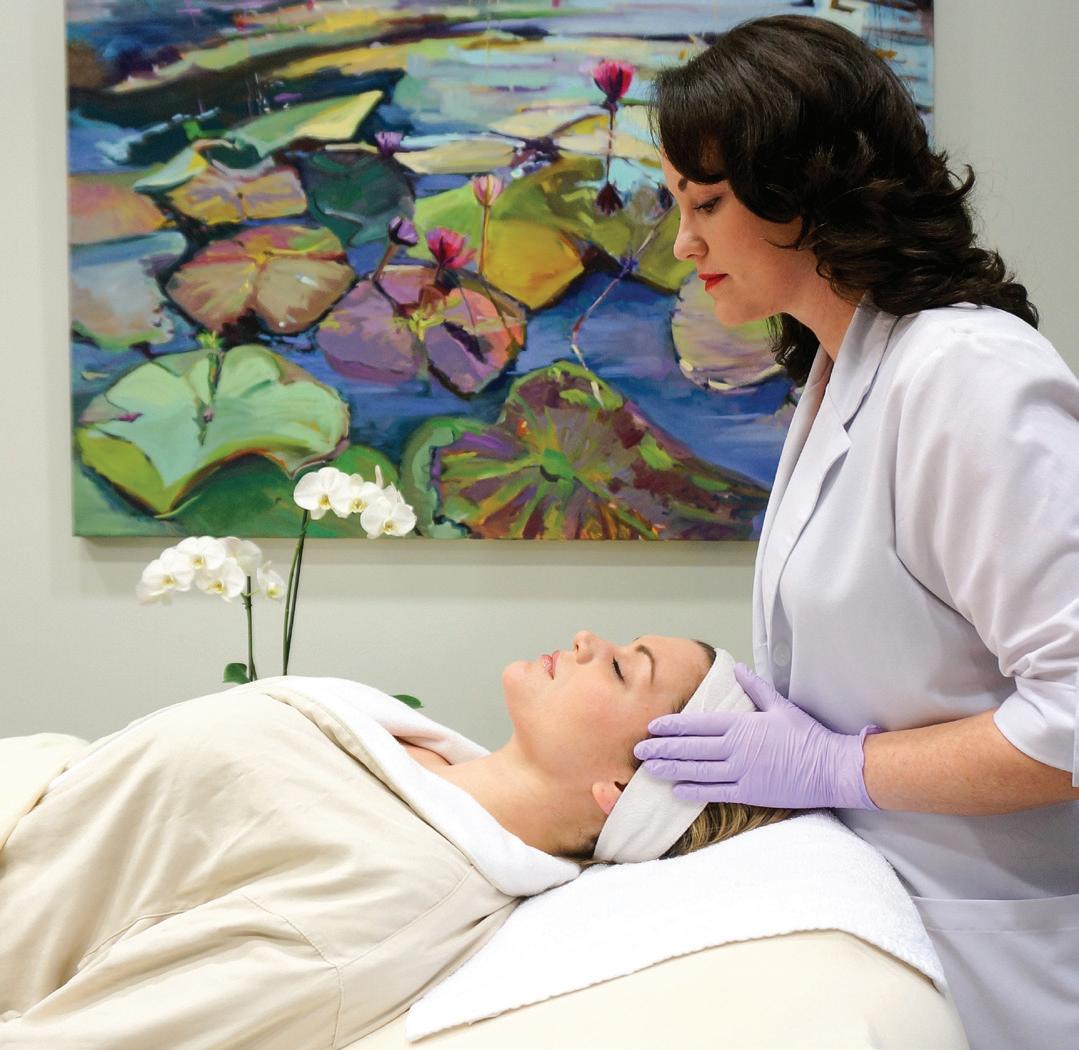





THE MEDICAL SPA AT KIAWAH & AUBERGINE HOME COLLECTION now located at 1 Beachwalker Drive, Kiawah Island | Next to the Main Gate FACIAL TREATMENTS | INJECTABLES & FILLERS | TEETH WHITENING | WELLNESS & WEIGHT LOSS | MASSAGE medspakiawah.com | 843.768.0156 ON-SITE WORKROOM | CUSTOM WINDOW TREATMENTS & BEDDING | FINE LINENS | BATH | FURNITURE | GIFTS | INTERIOR DESIGN NOW A CERTIFIED HUNTER DOUGLAS DEALER auberginehome.com | 843.768.5554
 From ATLANTA, GEORGIA KAREN & DEE BURGER Property Owners
From ATLANTA, GEORGIA KAREN & DEE BURGER Property Owners
Q Where are you from?
A Dee: I grew up in Delaware. I had been in Atlanta for twenty-five years [before moving to Kiawah].
Karen: I’m originally from the San Francisco Bay Area.
Q How did you find Kiawah?
A Dee: My parents had a place here in the nineties, so I started coming [to Kiawah] right out of college. Although they left in 2001, Karen and I started visiting about seven years ago for vacation.
Karen: I fell in love with it, and, knowing it’s such a special place for Dee, we decided to have our wedding at the Ocean Course in 2013!
Q Oh my goodness! How wonderful!
A Dee: It was great!
Karen: It was ridiculously great.
Q Did you know then that you wanted to live here?
A Dee: It evolved. We came to Kiawah the Tuesday before our wedding and spent time with our real estate agent looking at various houses and areas within Kiawah. We really loved the house we are currently leasing here in Cassique, and actually almost bought it!
Karen: We weren’t quite ready.
Dee: We finally bought a lot in 2014 in Cassique and moved here the summer of 2016 with the idea that we’d rather be close while we build. So we have a long-term rental in this house that is just down the street from our lot, which is ideal.
Q Where is your lot?
Dee: Our lot is literally three hundred yards down the fairway, halfway down the 15th green on LeMoyne Lane. It’s so beautiful. You can actually hit a golf ball from the 15th tee all the way to our lot.
Q Tell me about the Cassique community.
A Dee: We love our neighbors. The people who live in Cassique are more full time, and they’re typically very active. And it’s a true neighborhood.
Karen: We love all the neighborhood get-togethers— whether it’s a dinner party or happy hour at the dock!
Q What do you do for work?
A Dee: I work for Capgemeni. It’s a large, global IT consulting company.
Karen: We actually met there. I left Capgemeni when we got engaged, and I moved into a sales exec role for Gartner for four years. When we decided to move to Kiawah, it was a surprisingly easy transition from full-time work to retirement. I met so many fantastic women and got involved very quickly in women’s golf groups and local art and charity activities.
Dee: My job isn’t in any particular place. It’s Atlanta, Chicago, or New York typically. The real difference is that we used to come down here for three or four weeks of vacation, and now I get fifty long weekends of vacation. It’s a great trade.
Q So you leave every week?
A Dee: Yes. And the airport is so easy. Literally, I can park and be at my gate in less than ten minutes.
Q What do you do for fun on the Island?
A Dee: We love to golf together, and, weather and tides permitting, we really enjoy kayaking, especially since the kayak “Boat House” is just a five-minute walk for us.
Karen: We use the gym/Sports Pavilion a lot. We also love to go on bike rides, and we enjoy relaxing poolside at the Beach Club during the summer.
Dee: Today I was playing golf, and there were three eagles flying overhead. And when we kayak we almost always see dolphins swimming around us.
Q What do you think makes Kiawah so special?
A Karen: I think the [Kiawah Island] Club. You can’t beat it. The level of service, the quality of people. It’s phenomenal. Dee: The Club really is unbelievable. We didn’t even understand that fully. Everyone knows your name when you walk in. I don’t know how they do that. How do they do that? Some memory trick?
Karen: Whatever they do, it works. It feels like a big family. It’s like a Cheers environment wherever you go. (Laughs) It’s fabulous.
Dee: You never find anyone who lives here who doesn’t understand how great it is.
Karen: Every day I wake up and think, Okay, this is really spectacular. This is really beautiful. Every day I think that! How lucky are we? I wouldn’t trade it for anything.
LEGENDS MAGAZINE 2018 NO 30 29
A
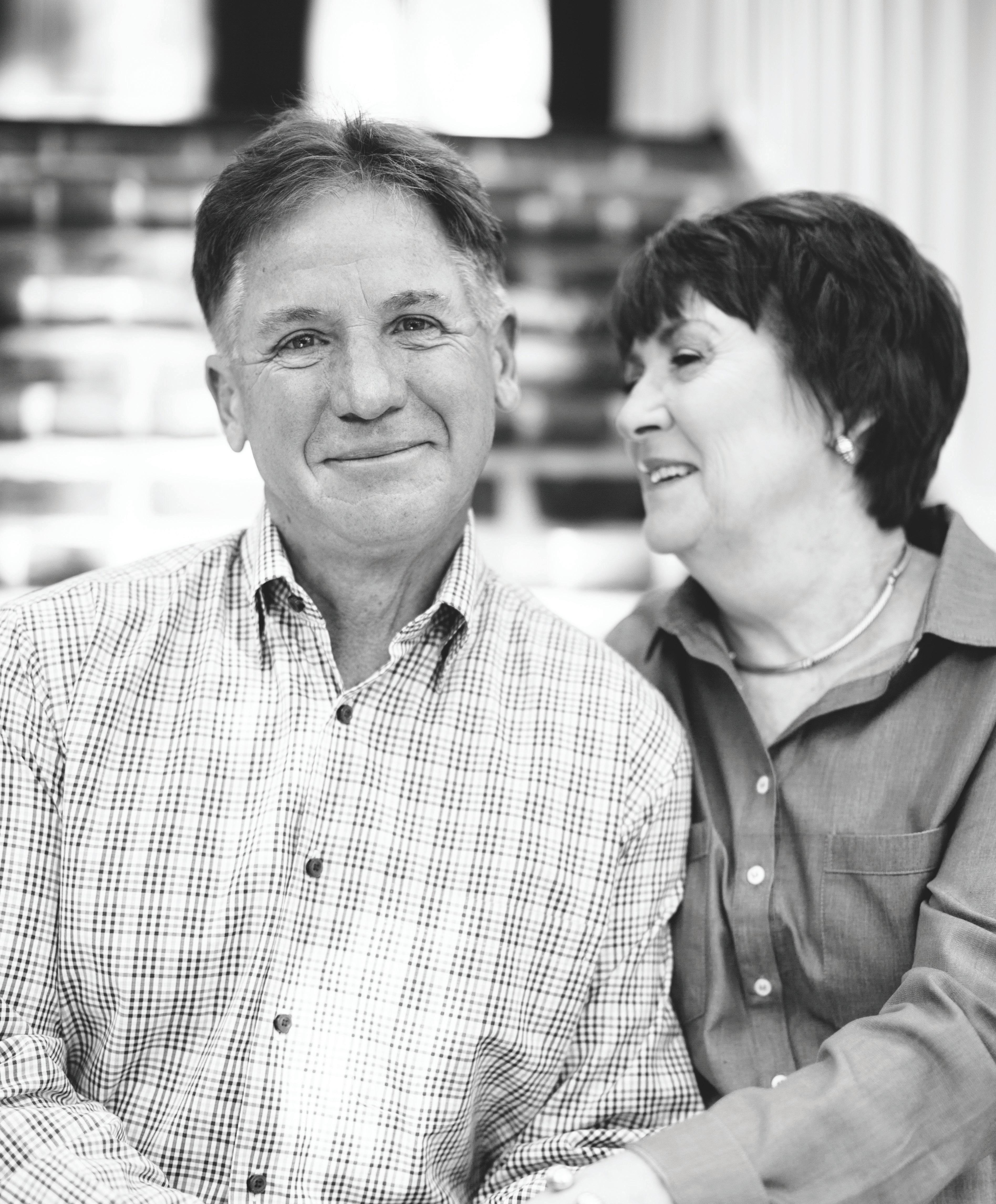
Q Where are you two from?
A Maureen: We were both born in New York actually. Rich: We met when we were sixteen years old!
Q How did you make your way south?
Rich: Maureen’s parents were transferred to Atlanta in ’76. We went down to visit, and we fell in love with it and spent the next twenty-eight years there.
Maureen: We raised three kids in Atlanta.
Rich: When the last one graduated from Wake Forest [University], we said, We’re going to the beach! We decided to enjoy the middle part of our lives. Why work until you’re seventy and have no gas left in the tank? Let’s take some time to do what we want to do, to have some fun, to do a little traveling. We moved here in 2005.
Maureen: And we love Kiawah.
Q And how did you choose Kiawah?
A Rich: A friend of mine in Atlanta brought a bunch of guys down. Maureen and I had been visiting Hilton Head and Daufuskie [Islands] for twenty years. But Kiawah has the privacy and distinctive landscape of Daufuskie, but there’s just so much more to do!
Maureen: When we started looking at property, we wanted to be in The Preserve.
Rich: We fell in love with the [Kiawah Island] Club. So we bought property in The Preserve. And when we decided that this was the place where we were really going to retire, we traded that lot for this lot! We started building in 2004 and finished in 2005.
Q Tell me a bit about your life here.
A Rich: Life is very full here. You retire and you think that you’re going to have a lot of time to read—but I’ve gotta tell you, we just don’t stop. You don’t come here with one or two things to do—you reinvent your life! I’m doing about eight different things right now that keep me busy. Every day I have something to do.
Maureen: Rich is being modest. He does a lot of work with the [Lowcountry] Food Bank, and he’s big in the wine community here on the Island.
Q What about you Maureen?
A Maureen: I started out with a variety of different things when we first moved here. I got involved with the Kiawah Conservancy and spent six years on their board. I was invited to join an art organization, which is now called
Arts, etc., that does the Kiawah Art & House Tour. The funds go to arts education in the local community. Johns Island and Wadmalaw Island schools benefit from the funds we raise. I’ve met a lot of people and I love it. Also we entertain a lot! Rich is a fabulous cook. Our life is very full here.
Q What is your favorite thing about Kiawah?
There are so many different combinations and permutations in the Kiawah landscape—it’s always a different perspective, a new combination of factors. It’s the light, time of year, texture, the hue, the angle— everything changes if you take time to look. We’ve been here for thirteen years now, and there are some roads we’ve never been on! Views we’ve never seen! I was at Cassique two weeks ago, and it had rained the night before. I was on the putting green, and I looked down at the green and it was iridescent because the sun was shining at an angle, and it almost looked like it was under a black light. It was unreal. The landscape, every sense, every physical sense is heightened here.
Q What is the community like?
A Maureen: We’ve made some incredible friendships. We have the best neighbors you could ask for. We watch out for each other, socialize together, travel together. We are ambassadors for the Club, so we have the fun of meeting new people and telling them our Kiawah story.
Q Tell me about your children.
A Maureen: I love being with my kids and grandkids— they’re coming to run in the Kiawah Island Half Marathon in December. Our kids love it.
Rich: Yeah, it’s a vacation! If we lived in Buffalo, we’d probably never see our kids. (Laughs)
Maureen: We have two grandsons. We call them on the phone and they say, I want to come to the beach! They love to go to the Nature Center to see the snakes.
Q Do you golf much?
A Rich: I do, yes. I think the River Course is top fifty in the United States. There’s no question about it. Tom Fazio did a fantastic job. Honestly, if Kiawah didn’t exist tomorrow, we really wouldn’t know where to go. There is no plan B. There is no next step up. This hits every one of our sweet spots.
LEGENDS MAGAZINE 2018 NO 30 31
LONG ISLAND, NEW YORK
A A From
MAUREEN
& RICH DABRUZZI Property Owners
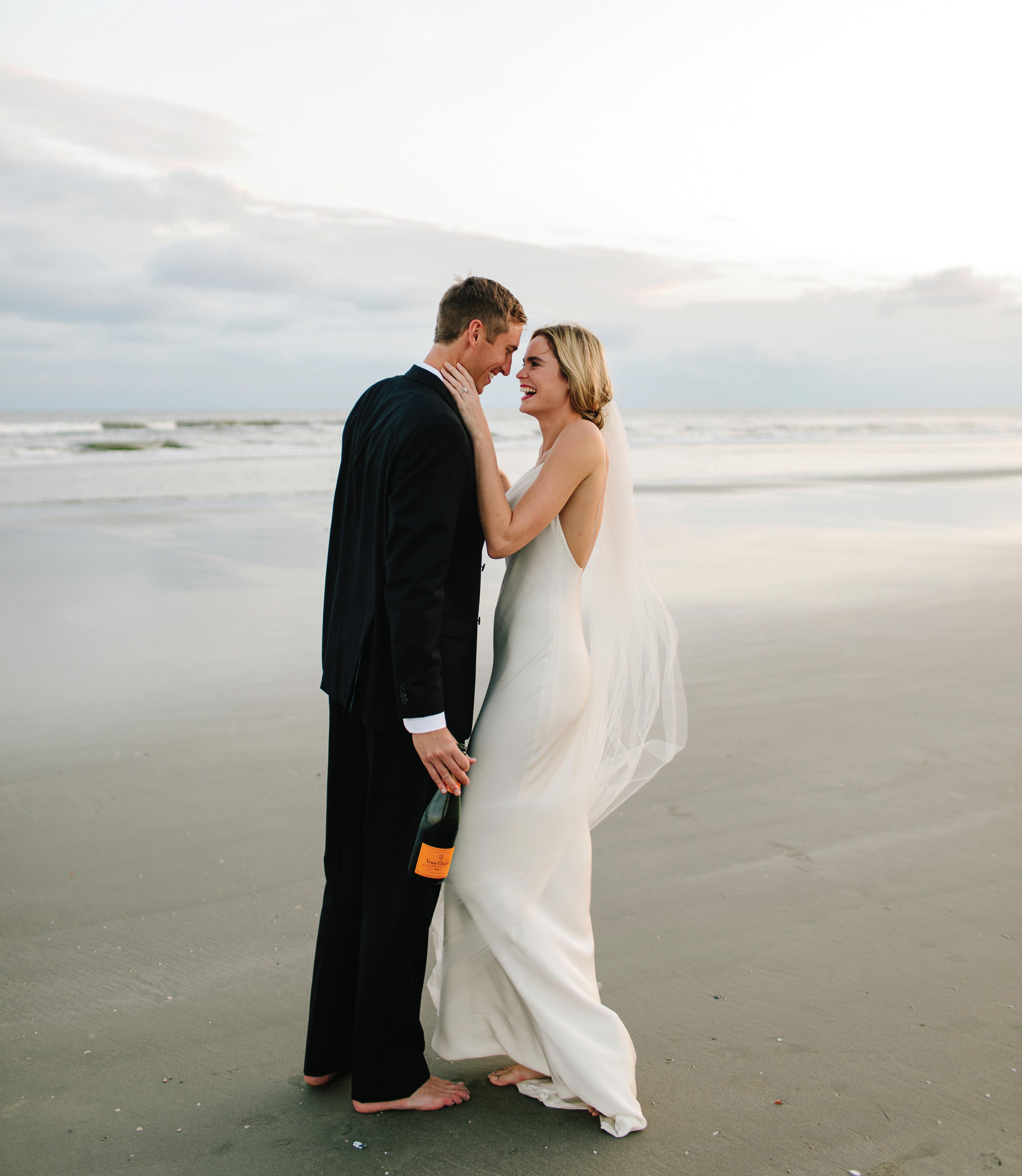
piece of cake
PHOTOGRAPHY by OLIVIA RAE JAMES

I am walking through a leafy forest, magnificent towering trees with sunlight filtering through the canopy. I step slowly, with a keen sense of anticipation. Up ahead the trees thin, revealing the shimmer of a calm ocean. Still, I feel like I’m waiting for something. I stop, my eyes on the glint of sea. Suddenly, behind me, a twig snaps. I spin around, my heart beating wildly.
He is smiling. He had been there all along.
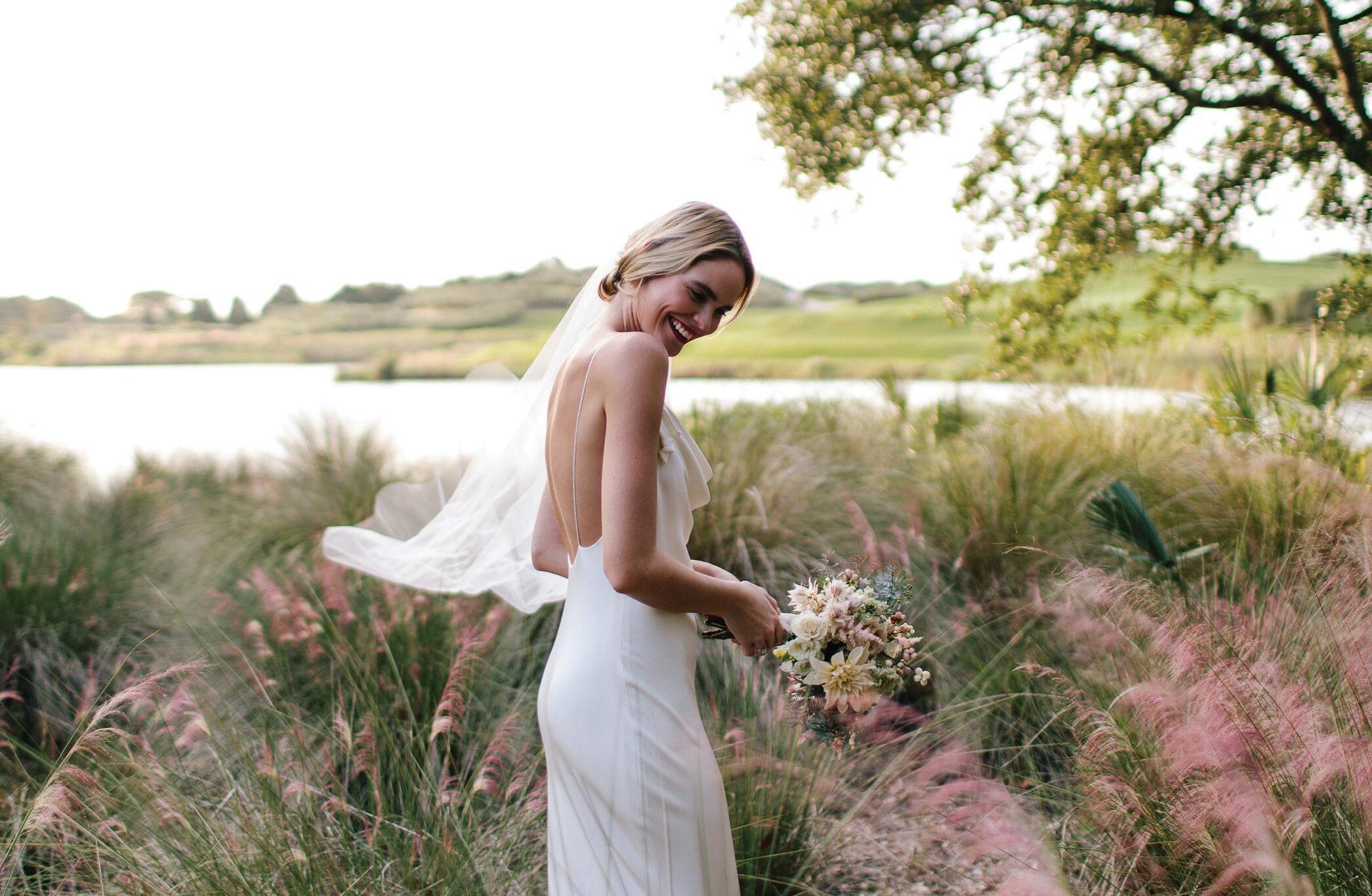
LEGENDS MAGAZINE 2018 NO 30 35
On the c usp of waking, I hold onto a wonderful dream.
The morning sun pours through the picture window now. I sit up. My wedding day. James’s side of the bed is cool and empty. We had decided to sleep apart, keeping with custom and all that. A shiver of excitement runs up my spine. I stand and stretch, then open the windows to let the breeze in. I start a bath and turn on Bach, loud.
I met James ten months ago. Just after Christmas. Mutual friends set us up, and we had been wary. James suggested we meet at Milk Bar, a trendy cookie shop in the city and an absurd place for a date. Unbeknownst to each other, we both suffered from dating fatigue—tired of long dinners on first dates we knew wouldn’t go anywhere. So the cookie shop felt safe, and I agreed—if the date was a dud, we’d part ways in under an hour.
James told me later that when he saw me standing outside under the streetlight, waiting to step into the crowded shop, he knew immediately. He proposed within six months. He asked me just after breakfast in bed on a Sunday morning in June.
And here’s the thing, our life together is glorious. We have jobs we love. We travel often and to beautiful places. We have a huge and wonderful circle of friends. It is such a good life, but it is so stunningly full. There isn’t an evening of the week that we don’t have a dinner or a work engagement or a party. We travel for our jobs, and we’ve both just received promotions. Environmental charities take up a lot of James’s extra time, and I’m in the pottery studio whenever I have a free hour, which is rare. I think we’ve been sleep deprived since we met.
So when it came to planning our wedding, and my mother was tallying up a guest list of four hundred, I lost it. It came
out of nowhere. It was a Tuesday evening, and James and I were walking up Mulberry, yet again discussing whether or not to have a bridal party, and I burst into tears. James looked at me wildly.
What? What is it? What’s wrong?
I stopped walking, miserable. The wedding, I sputtered. It’s too much.
His face darkened.
No! I want to get married, I said quickly. I just don’t want all this. This wedding. My mother, the bridesmaids, the flowers, the menu…it’s too much.
He nodded slowly, carefully. After a long pause, he said, I just want to be married now.
I hiccuped with relief. You do? I asked. Really, do you?
He nodded. More than anything.
A wave of relief washed over me. I started to giggle. Uncontrollably. He looked at me strangely and then started to laugh too. And then there we were, laughing and hugging, then crying and laughing all over again on the busy sidewalk.
So we cancelled everything. I let my parents down with the promise of a big party at Thanksgiving. I wrote a card to each of my best friends, explaining our plan. I cancelled all of the flowers and food and gold-leaf invitations and set my sights on Kiawah Island.
36 LEGENDS MAGAZINE 2018 NO 30
He asked me just after breakfast in bed on a Sunday morning in June.

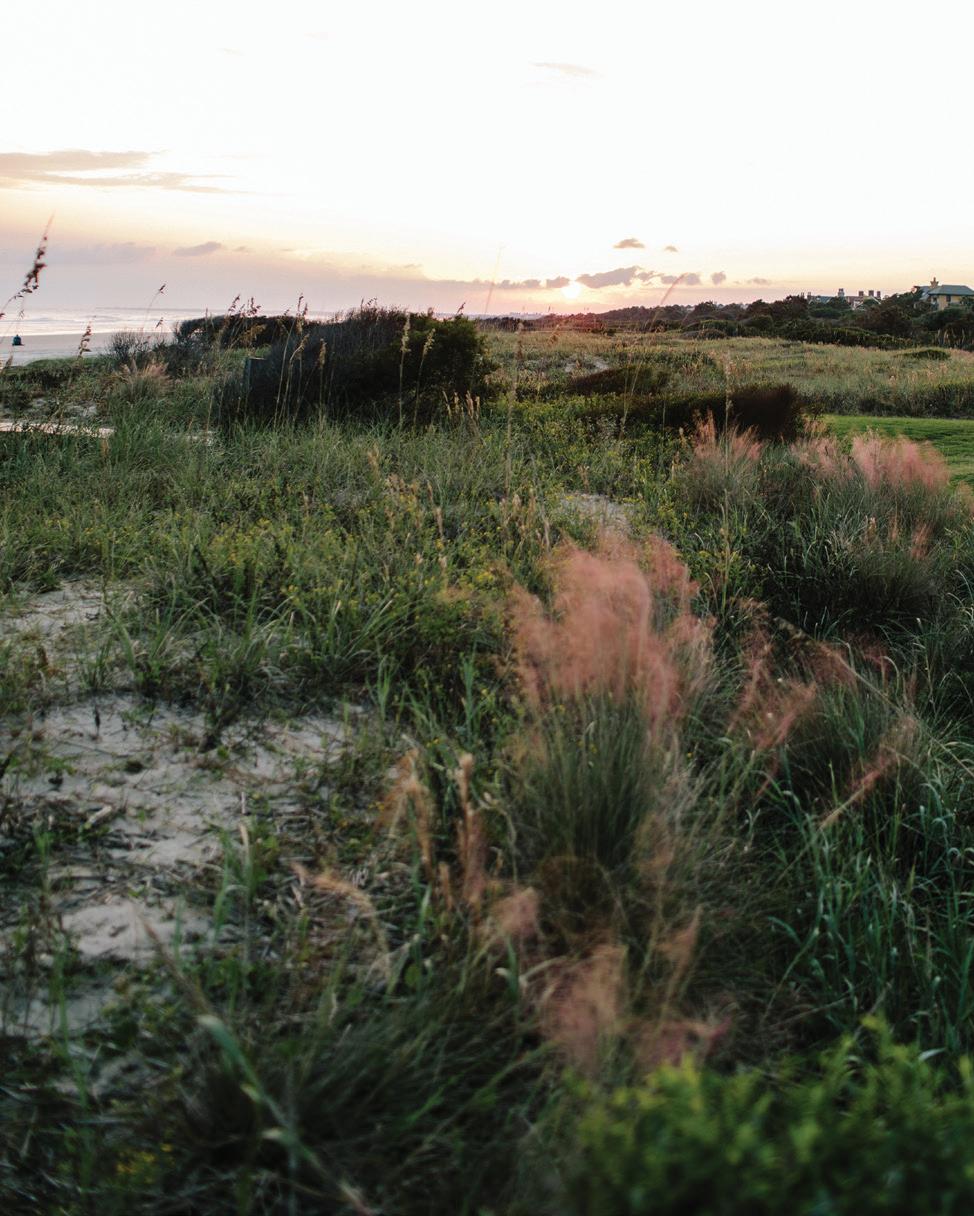
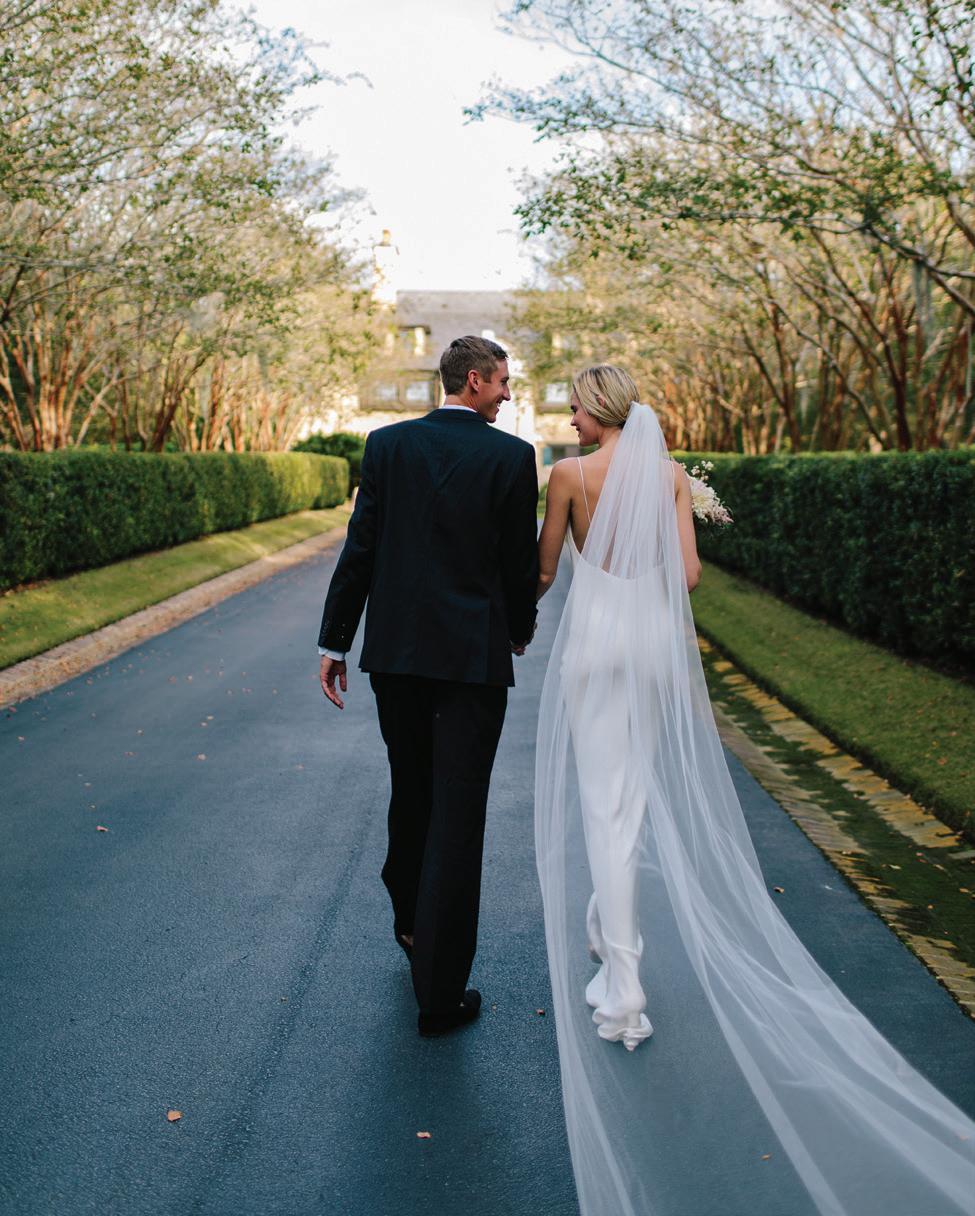
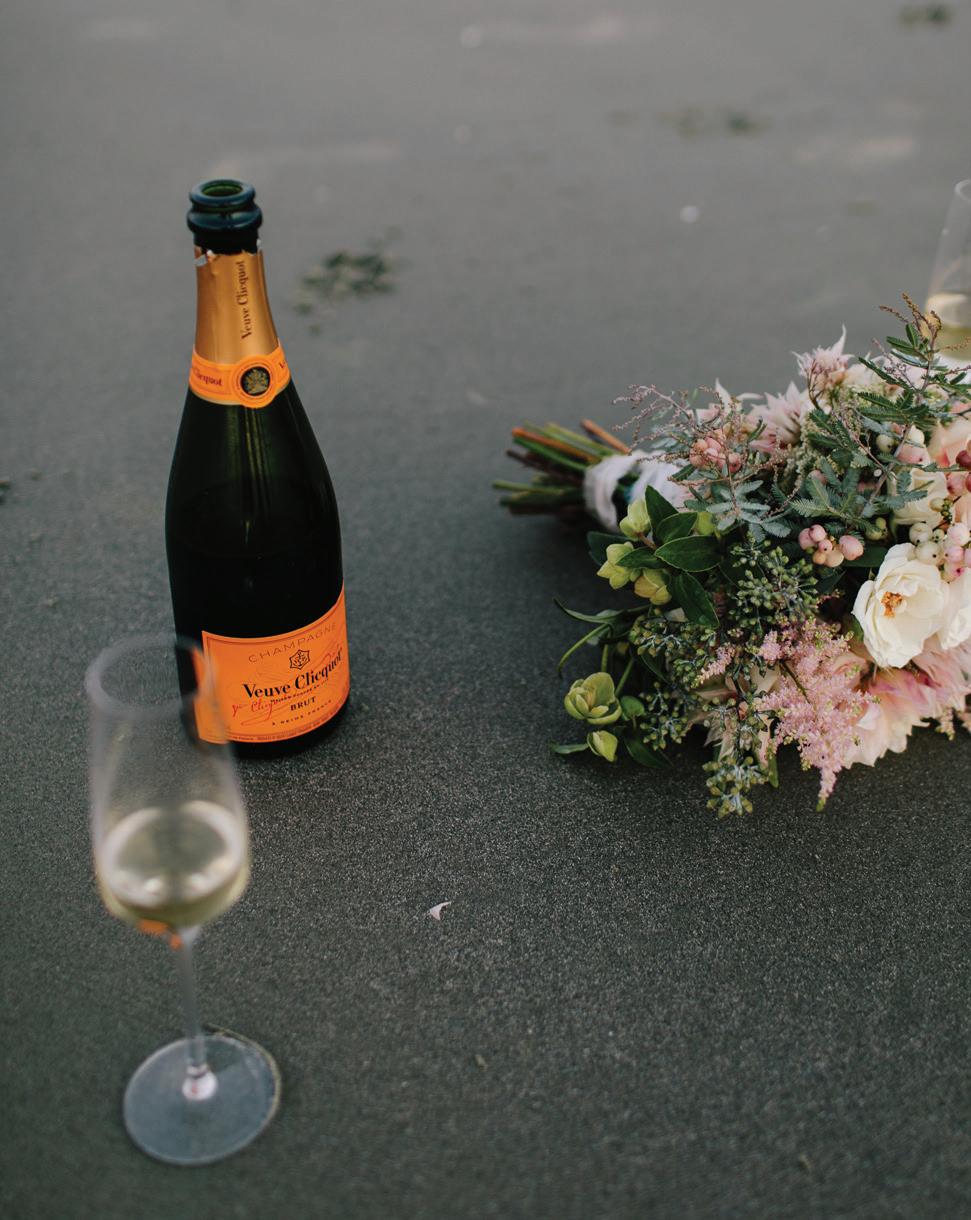
LEGENDS MAGAZINE 2018 NO 30 37

My parents took me to Kiawah as a young girl, and the magic stayed with me. It’s like the wonder and joy of childhood enchantment was imprinted onto my soul. When I return to the Island, when the ocean air hits my face, I feel like a little girl again, playing in the dunes, climbing magnificent live oaks in the warm summer dusk.
James visited once, a quick trip to Charleston and lunch on Kiawah for business. But he understands. When I talk about Kiawah, he says my whole face lights up and I get what he calls “melty”— like you’re melting from happiness.
And so we decide to elope. We take a week and a half off from work—no phone calls, no emails. I pack sandals, swimming suits, a few sundresses, and my silk wedding dress— the one thing I kept. We land late on a Friday night, strangely quiet with anticipation, holding hands and smiling shyly at each other as we exit the airport.
The day arrives, and instead of in a full church, we meet on the beach in the late afternoon, the seagulls and dolphins as our guests. I have pulled my hair loosely at the base of my neck and kept my makeup simple. James stands with the officiant, barefoot in his tuxedo, no tie. As I walk down the boardwalk steps to the beach, he smiles hard, brushing tears from his eyes with his fingertips. My heart beats wildly.
LEGENDS MAGAZINE 2018 NO 30 39
When the ocean air hits my face, I feel like a little girl again, playing in the dunes, climbing magnificent live oaks in the warm summer dusk.

We walked through the trees towards champagne and dinner.
Without a word, he embraces me, kissing my forehead, my eyes, my cheeks. We walk closer to the shore and turn to one another, reciting the vows we’d written over the past weeks, parts we say together, parts we have kept secret until this moment. With tears in our eyes, both hands joined, we say, in turn, I marry you. Forever. The officiant declares us husband and wife.
I half-laugh, half-sob as he circles his arms around my waist and lifts me off the ground. Married. Us.
We walk through the trees towards champagne and dinner, talking excitedly about our dreams—what we want to achieve together, who we want to be for each other, what wisdoms we’ll hold close. It is perfect, this warm fall evening, our arms looped together as we stroll, planning our life together.
By the time we reach the clubhouse, we are giddy and giggling. Kim greets us with congratulations and hugs, a bottle of Veuve Clicquot chilling on the porch. We drink champagne and watch the sun dip low over the marsh. He is everything I hoped he would be. — C.G.
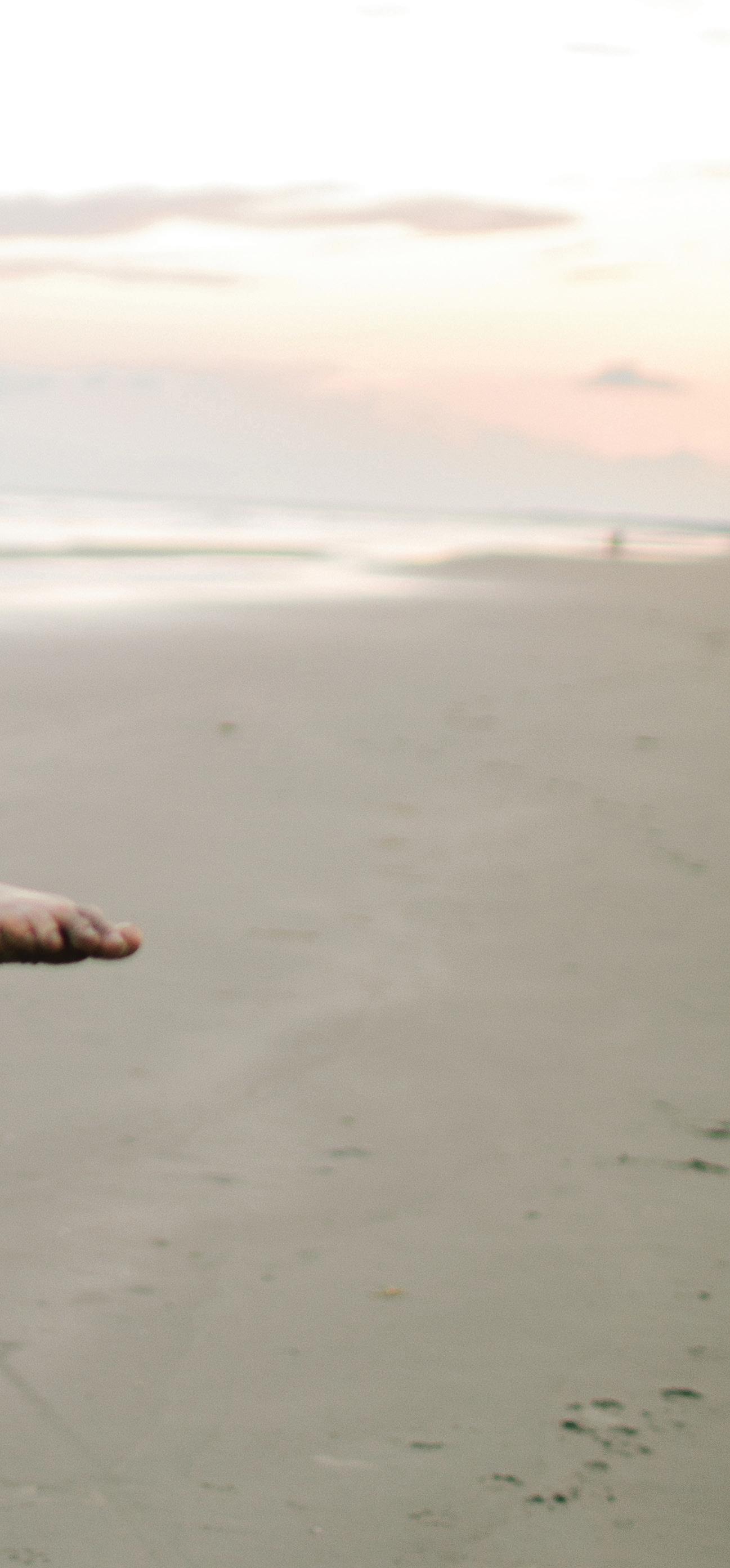
LEGENDS MAGAZINE 2018 NO 30 41
Gown Courtesy of Lovely Bride Charleston
Bouquet by Flowershop Charleston
Enjoy part VI, the final installment of Blanch Brumley’s original diary. Read Part I in the Fall 2015 edition of L Magazine, Part II in the 2016 edition of Legends magazine, Part III in the Fall 2016 edition of L Magazine, Part IV in the Spring 2017 edition of Legends magazine, and Part V in the Fall 2017 edition of Legends magazine.
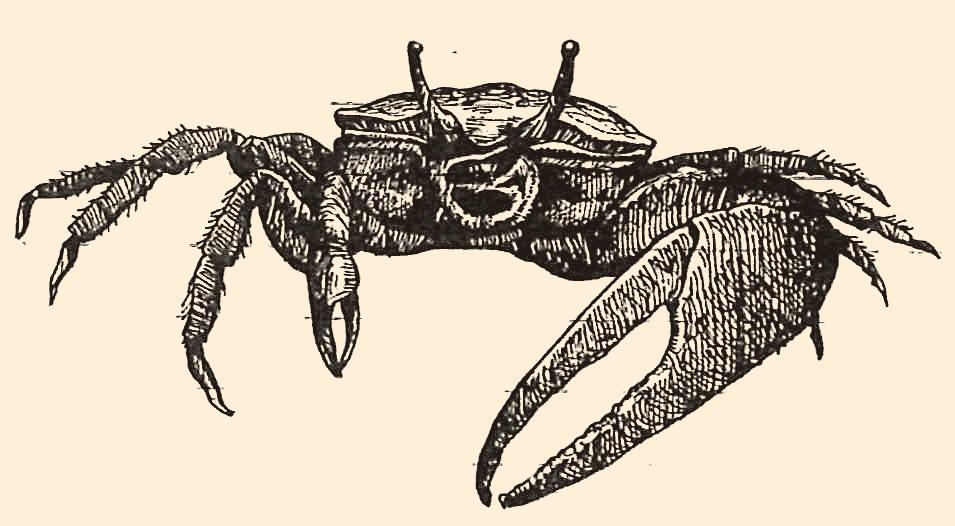

40 LEGENDS MAGAZINE 2018 NO 30





LEGENDS MAGAZINE 2018 NO 30 41
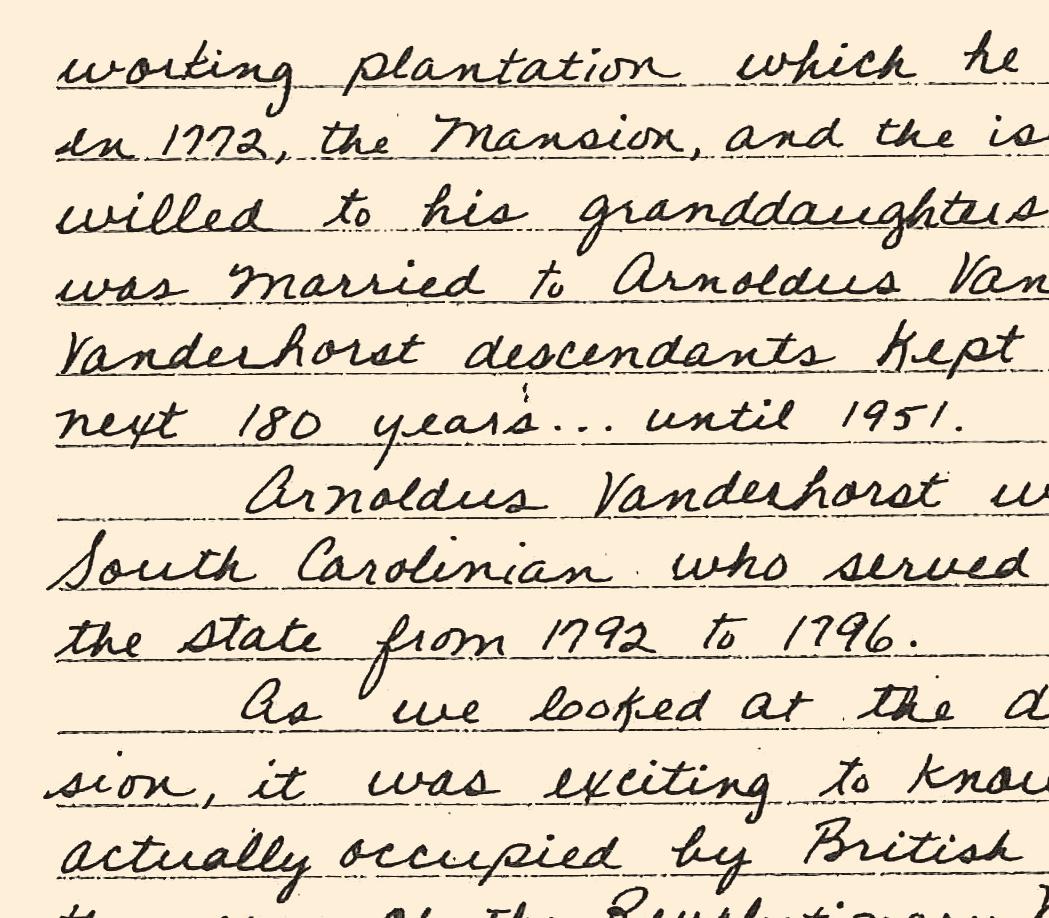

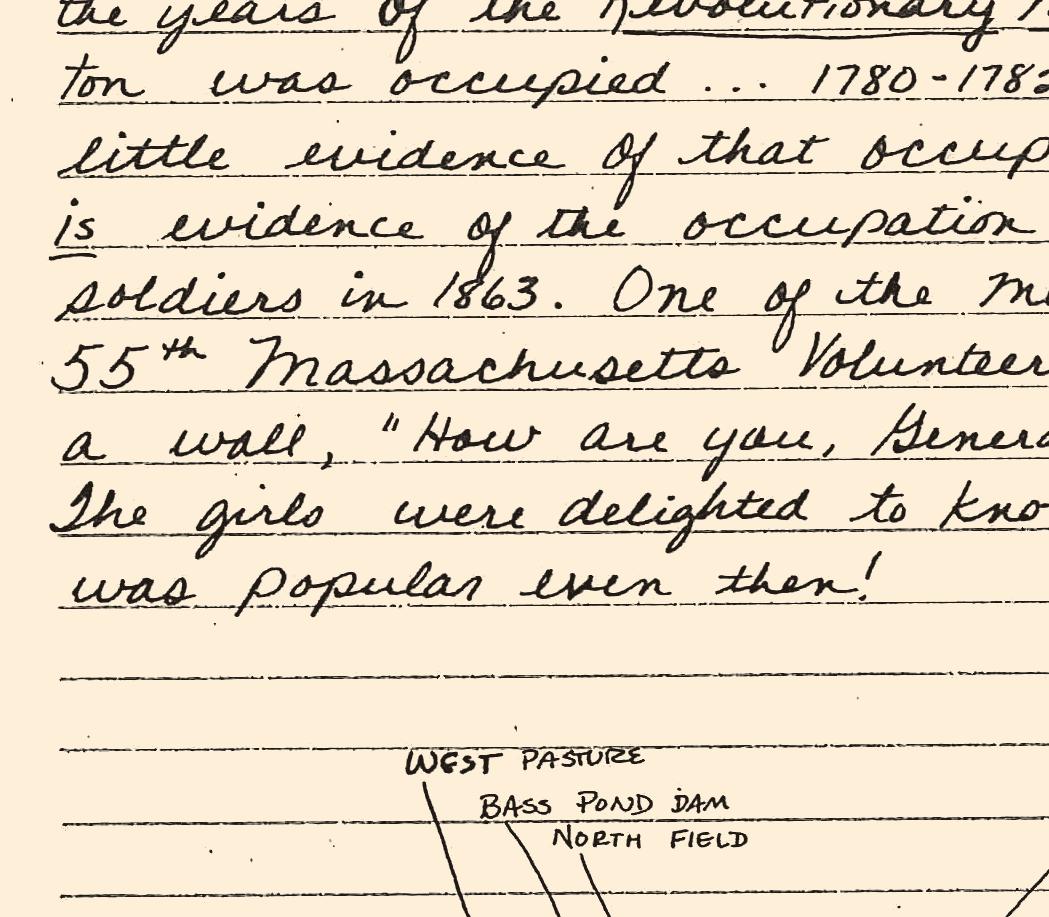
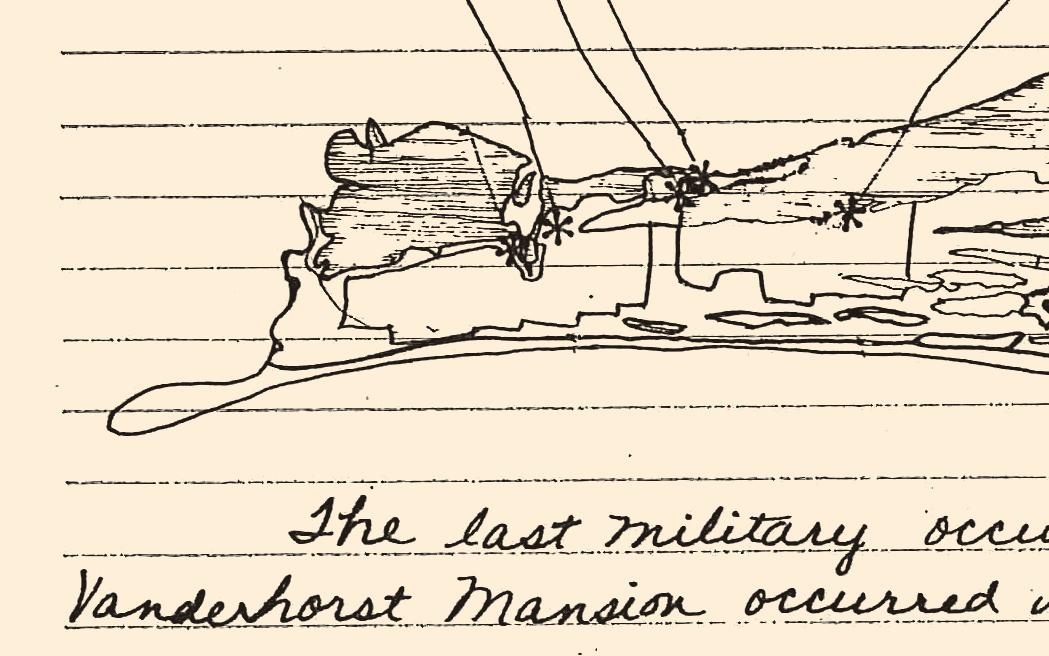
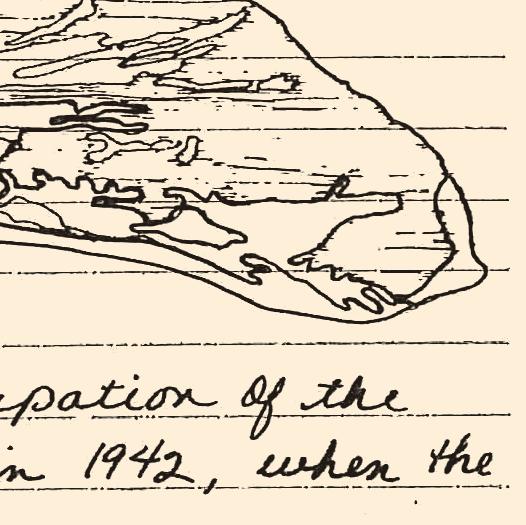
42 LEGENDS MAGAZINE 2018 NO 30
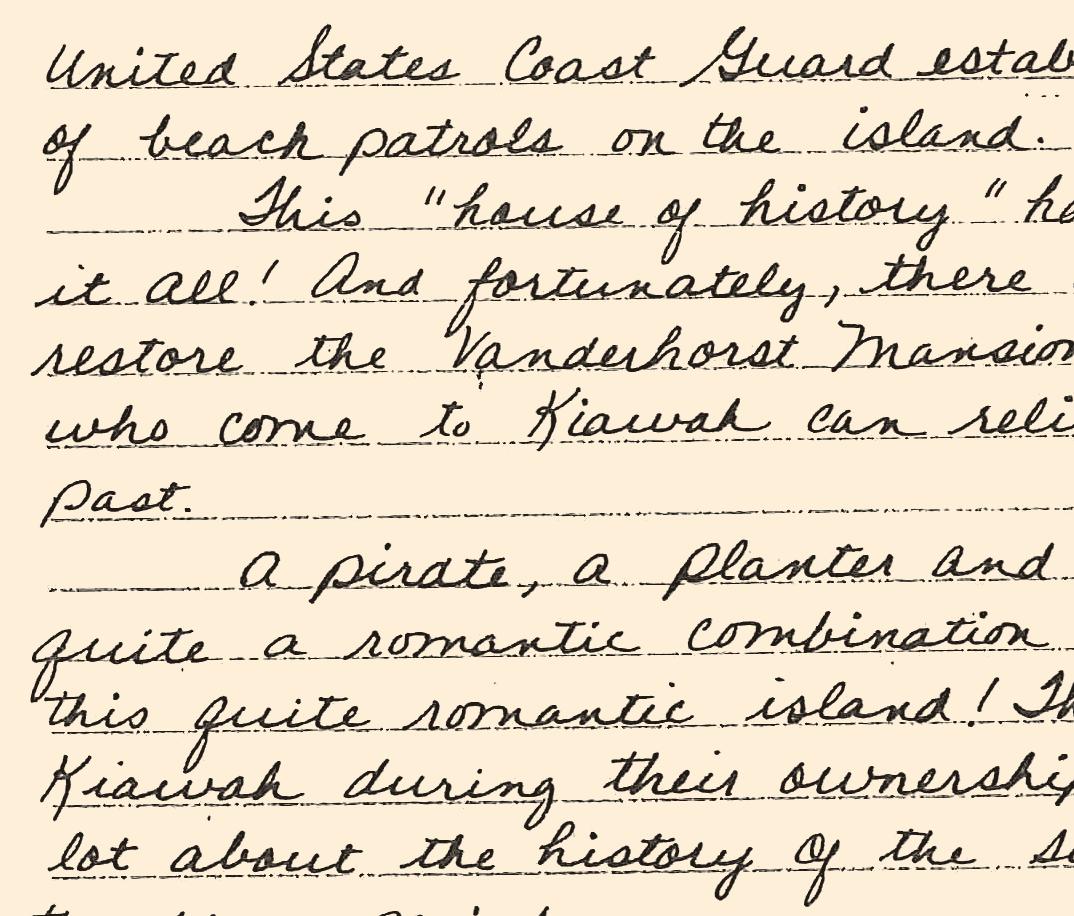

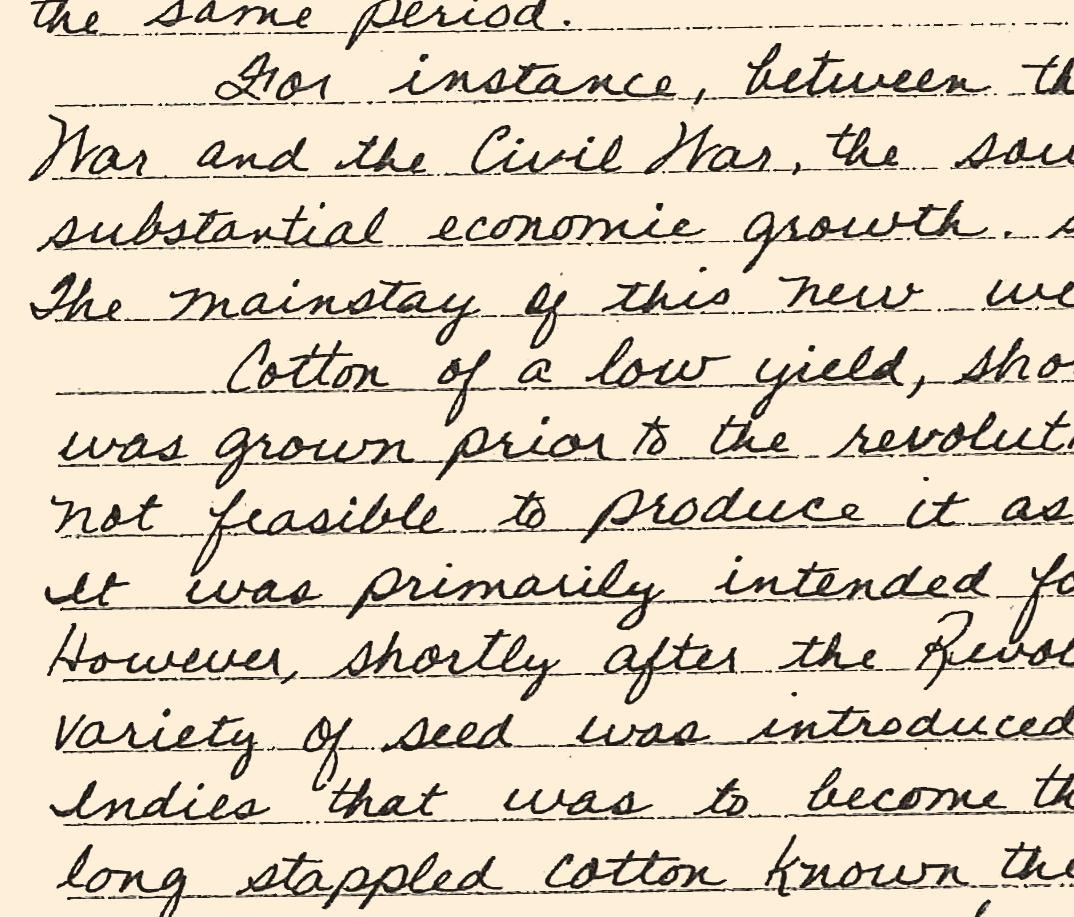


LEGENDS MAGAZINE 2018 NO 30 43



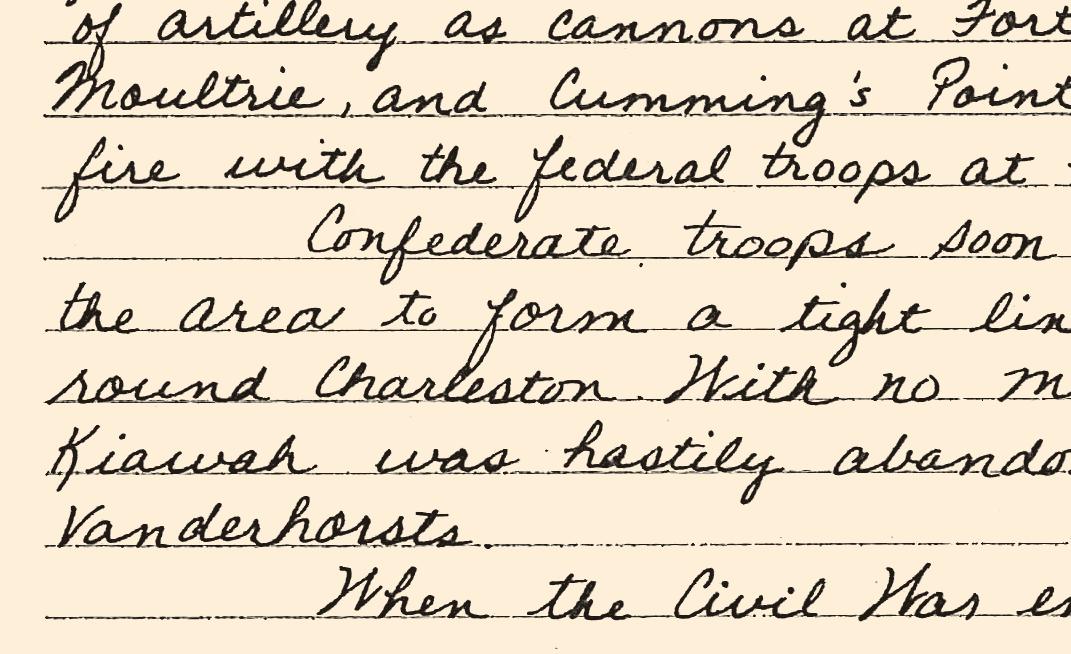
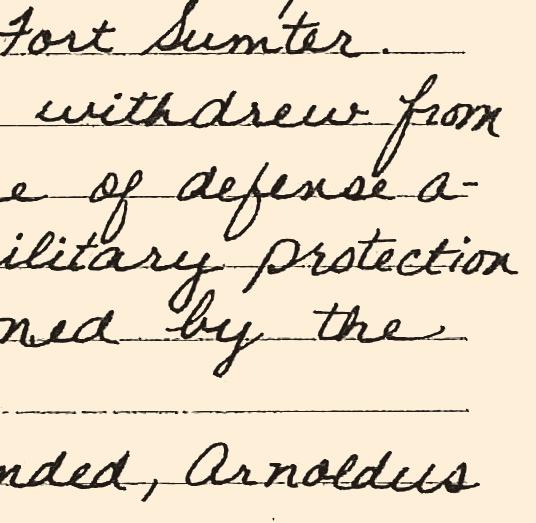
44 LEGENDS MAGAZINE 2018 NO 30
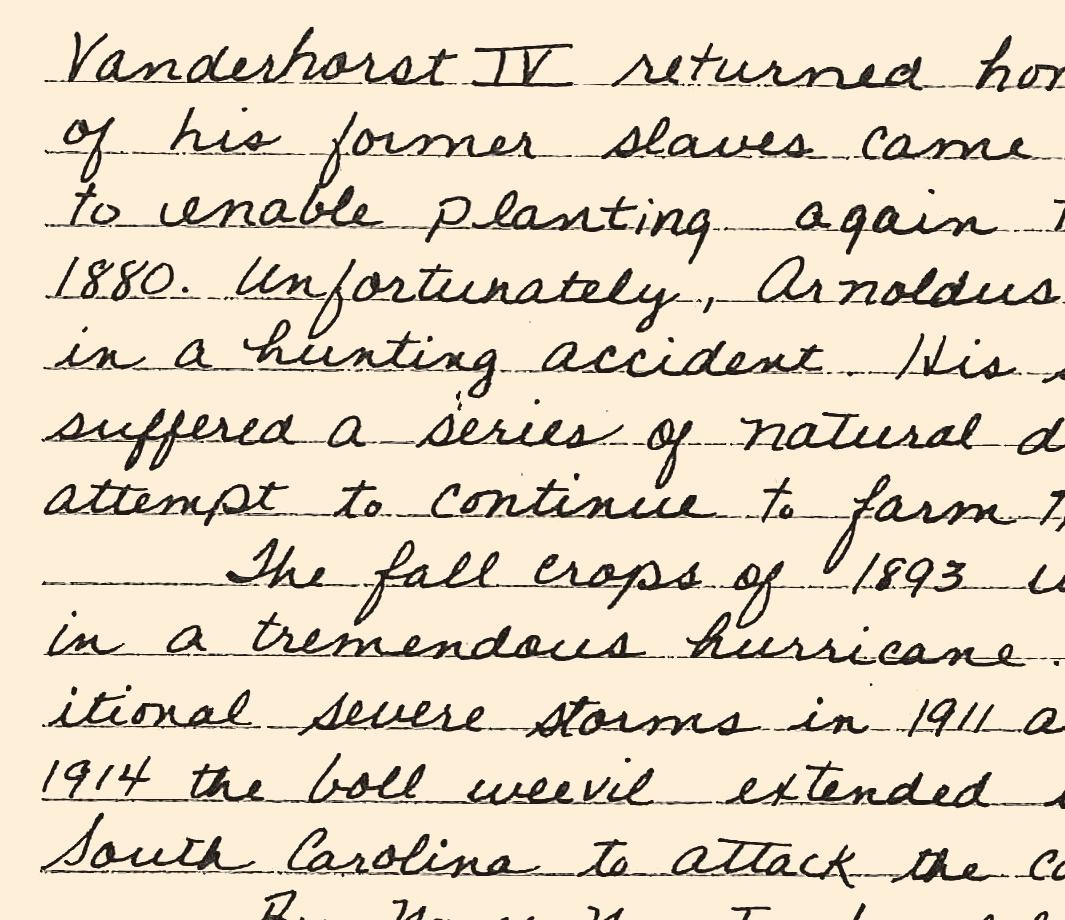


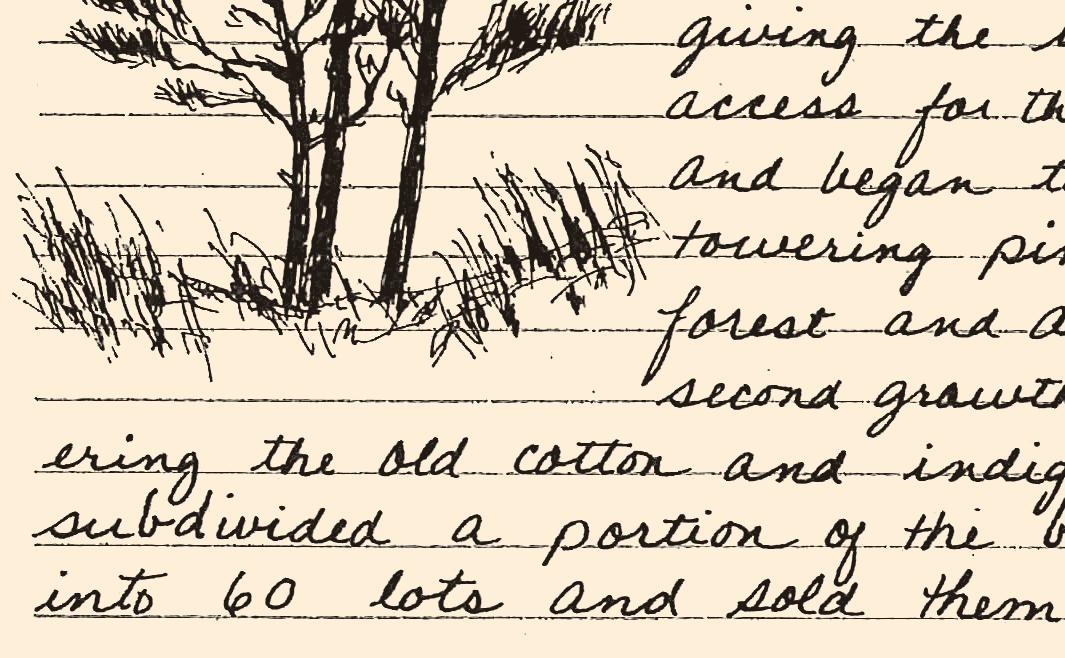

LEGENDS MAGAZINE 2018 NO 30 45




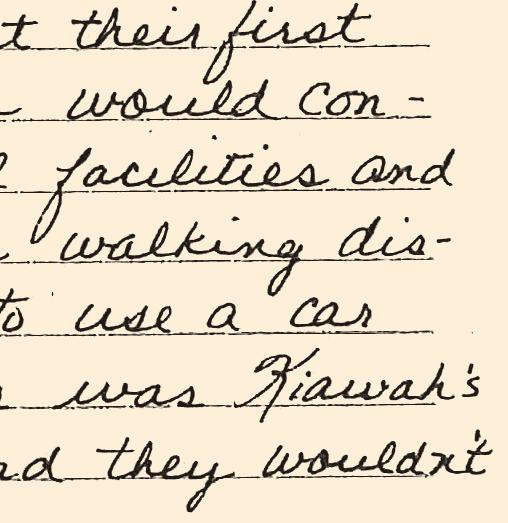
46 LEGENDS MAGAZINE 2018 NO 30
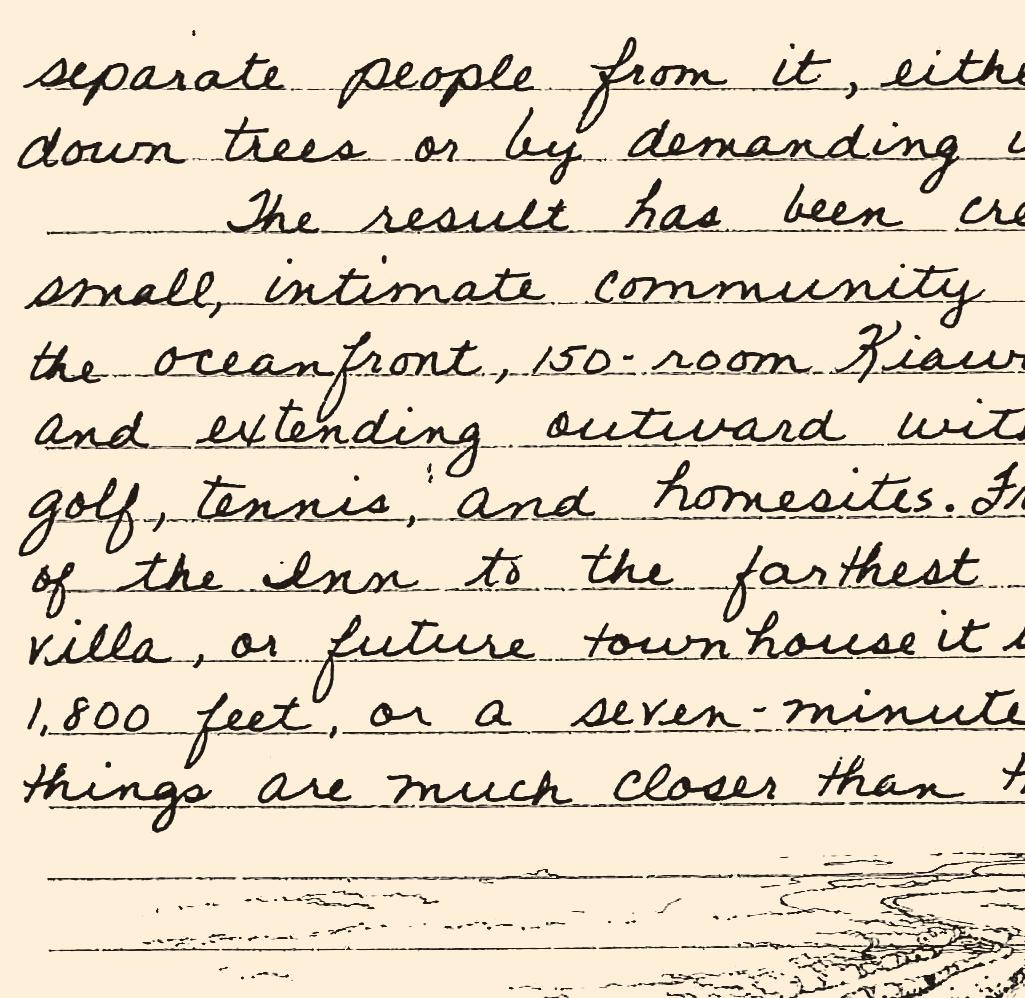



LEGENDS MAGAZINE 2018 NO 30 47

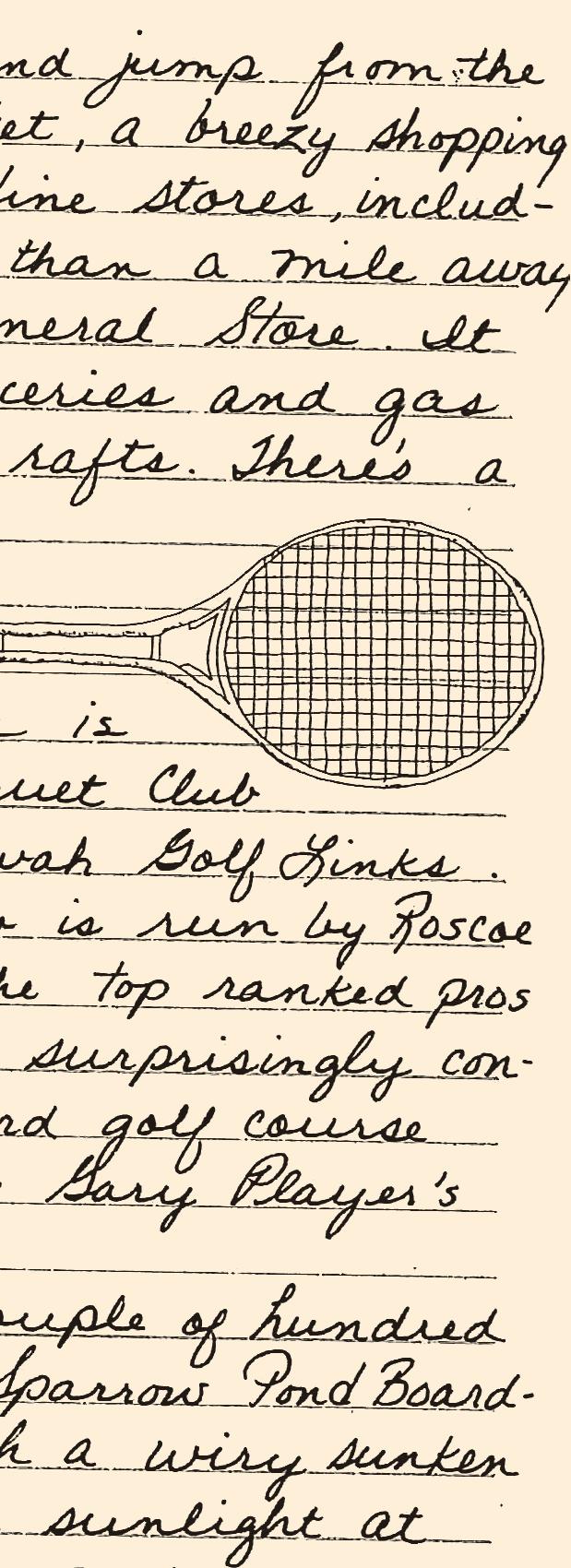



48 LEGENDS MAGAZINE 2018 NO 30

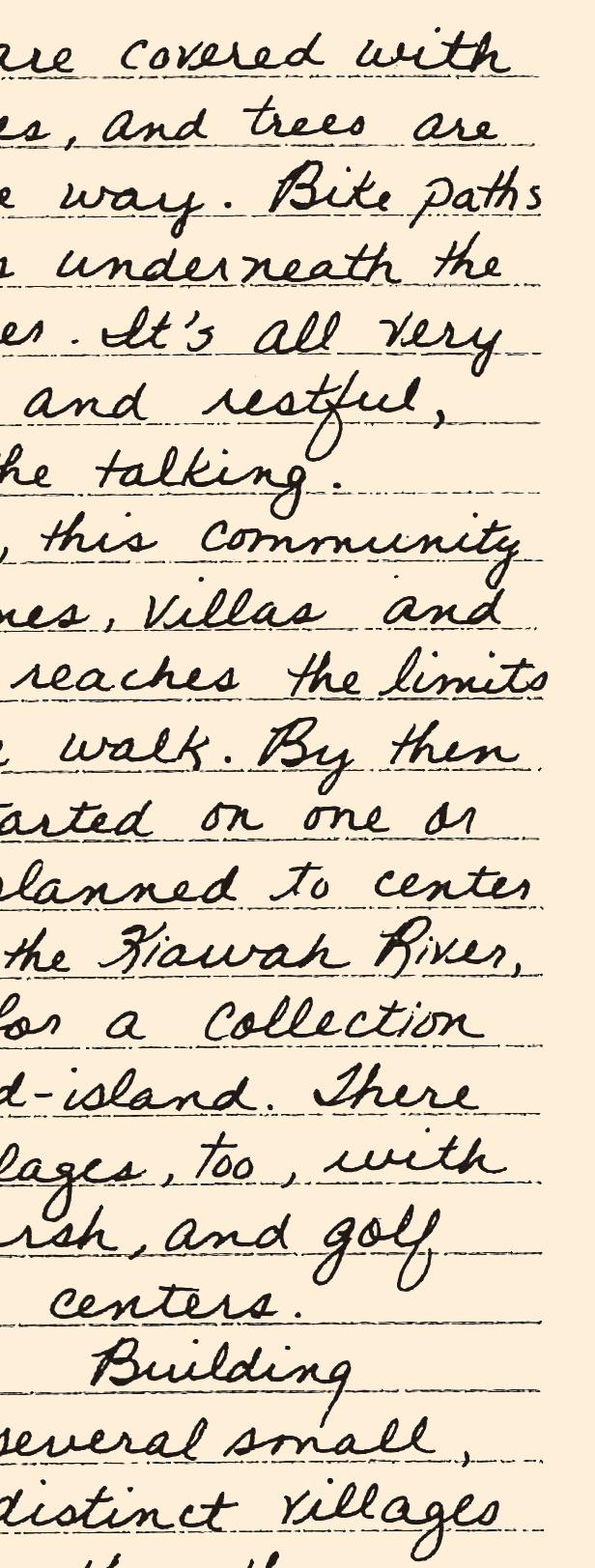

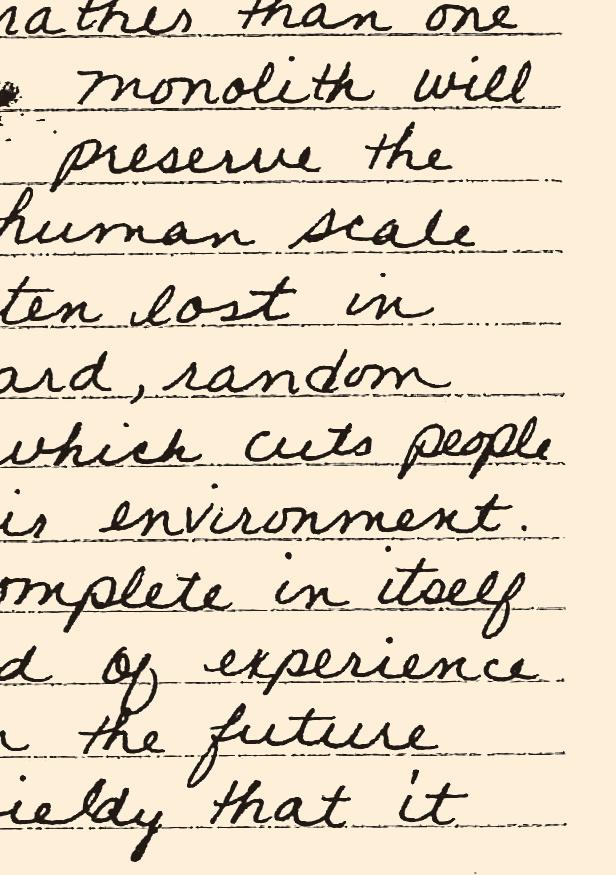

LEGENDS MAGAZINE 2018 NO 30 49
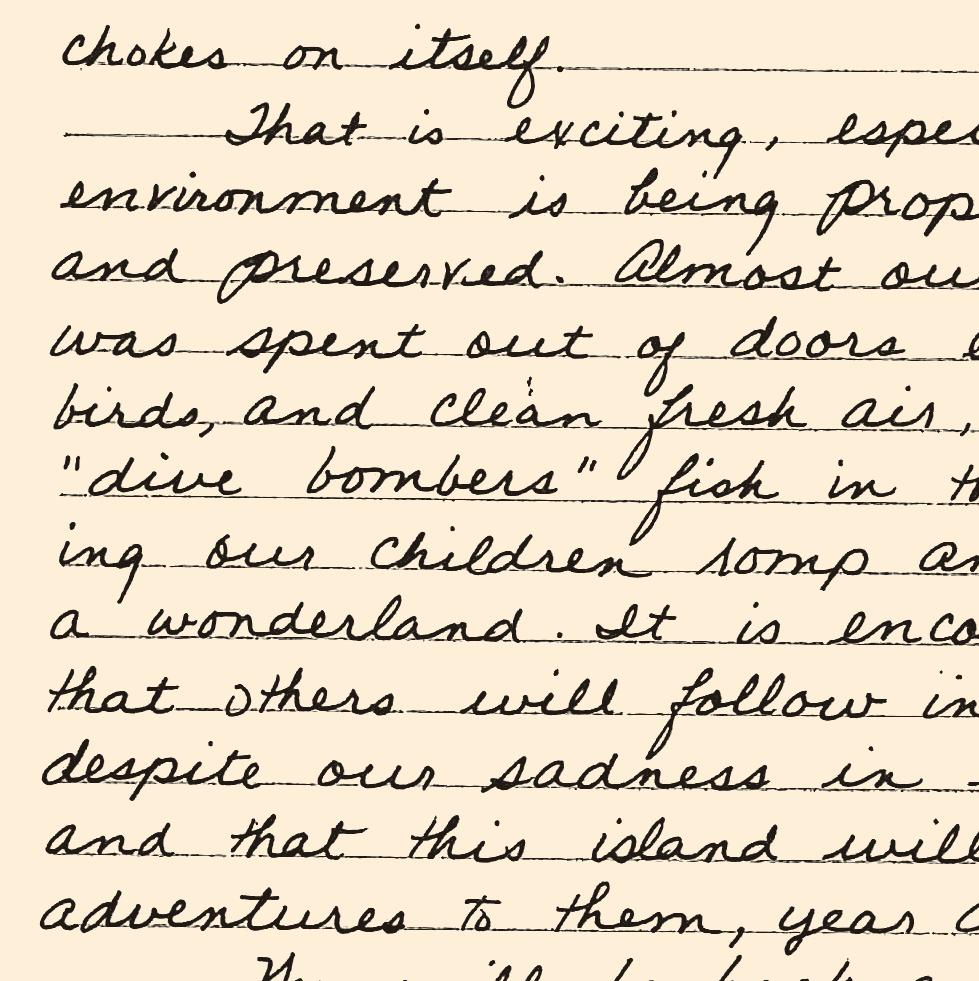





CHASING REDS

PHOTOGRAPHY
STORY AND
by HAILEY WIST
with TOM COLICCHIO and DOUG BLAIR



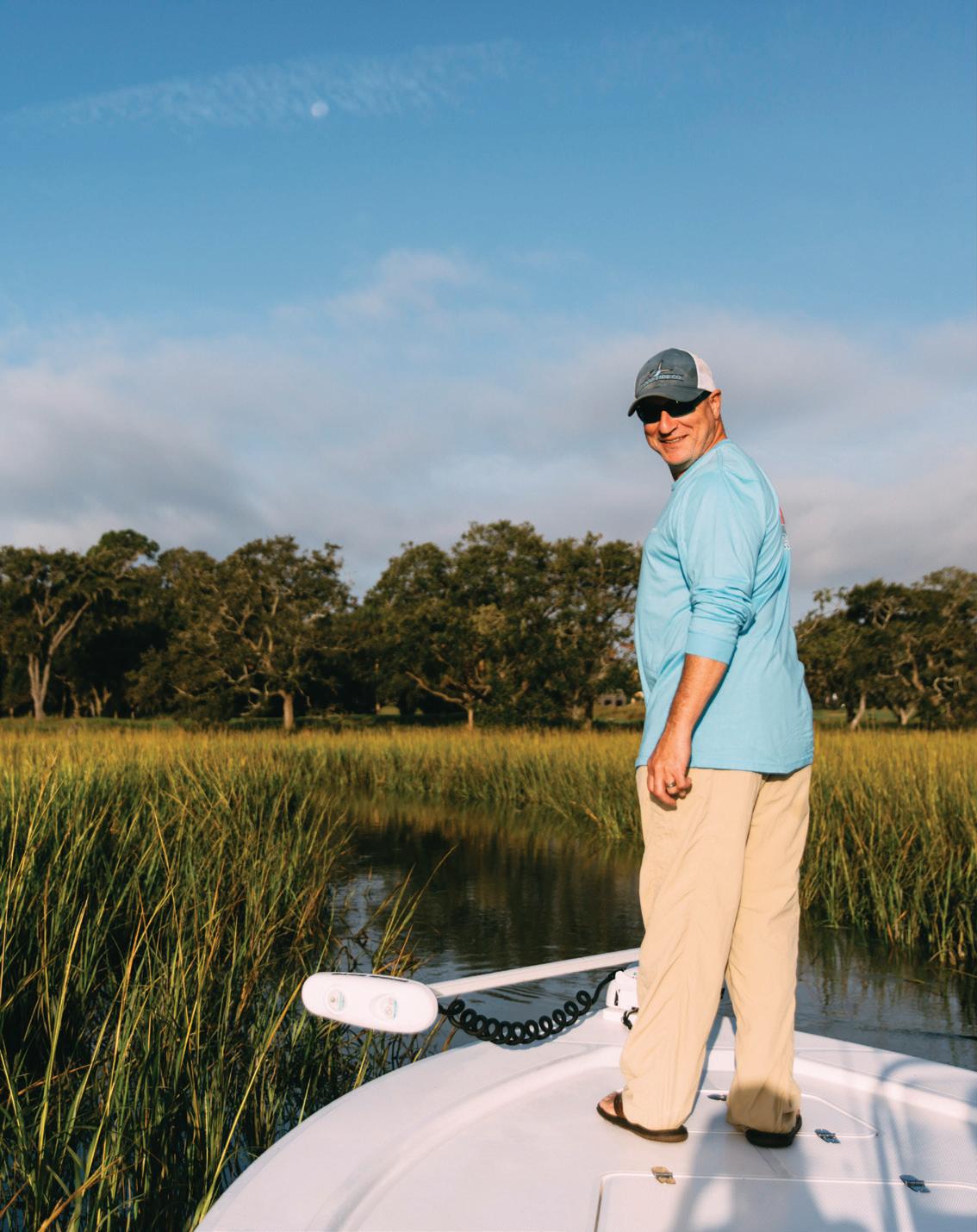
54 LEGENDS MAGAZINE 2018 NO 30
I have this in mind as I sit quietly in the Blackjack. Tom Colicchio, celebrity chef and restaurant magnate, stands at the bow of the small boat, lightly flicking a fly rod. The line rolls gently onto the surface of the water and he waits, still. Voysey’s executive chef Doug Blair and Captain Elliot Hillock stand at the back of the boat in silence, watching the to and fro of the casting arc. There’s a seriousness in the air I didn’t expect, a subtle veneration that proves contagious as I sit in the morning sun.
It is a perfect fall day in the Lowcountry. We have snaked up a little tributary of the Kiawah River and gently pushed our way through the spartina to the furthest point, the waterway just wide enough for the boat. All is quiet but the low hum of cicadas and the chitter chatter of marsh hens.
We’ve hit the tide just so, planned our early morning departure from Rhett’s Bluff to arrive here just at this hour. Elliot explains that we are tailing redfish as they move through the grass to feed. “It’s getting down to that magic hour,” he murmurs. “We’ve got fish moving in the grass here.” Sure enough, I see the glint of a silvery fin swishing through the water.
Tom turns to us. “Where are they getting in?” he whispers. Elliot, who is a veritable savant when it comes to the marsh and anything that inhabits it, points. “See that little feeder creek right there?”
Tom adjusts his cast, ever so slightly, to place the fly precisely where he thinks the fish will see it. But that’s the thing about tailing redfish—they are feeding in the shallow water, their heads all the way down at the bottom, so you have to place the fly precisely for there to be any chance the fish will see it. “You can see the fish,” whispers Doug. “You can look at the tail and figure out which way his head’s going and pull him off of whatever he was going for.” I watch, squinting, and sure enough, the fin is actually a tail and it’s not gliding along, but twisting around in a little radius. The fish is vertical in the water, tail up.
The tide is changing and the fish we’ve been tailing slips off into the grass. “We’ll push our way back” says Elliot. “And if we don’t see any tailers, we’ll just go straight to the next flat.”
Doug pulls a paper bag from underneath the captain’s seat. “Breakfast anyone?” He’s made parfaits and egg sandwiches. I eat my parfait as we motor slowly towards
LEGENDS MAGAZINE 2018 NO 30 55
Ernest Hemingway once wrote, “Somebody just back of you while you are fishing is as bad as someone looking over your shoulder while you write a letter to your girl.”
the Kiawah River, and the waterways widen. A sea plane whines overhead, and two herons startle and resettle in the spartina. As we drift around a wide corner, I point to a peculiar low patch of grass, swaying in the salty water. When I ask Elliot about it, he bends down and plucks a stalk from the water. “Sea pickles,” he says. “It looks like a little pickle. It’s just a burst of salt.”
Tom laughs. “We should harvest these and put them on the menu. Sea pickles!” I am confounded. Mostly I just like the idea that there are snacks to be had way out here. “They’re like a micro-asparagus,” explains Doug. “It has those funny little segments, like miniature bamboo—nice and crunchy.” Elliot offers me what looks like a little green bean, and I bite into it. It’s an explosion of salt, like taking a drink of ocean water. I must grimace because Doug laughs. “Goes really well with the parfait, doesn’t it?”
As we drift towards the river, Elliot is watching the marsh, eyes squinting. After a short time, he motions for Tom, and the two stand at the bow, shielding their eyes and peering towards the shore. Elliot jumps down and readies the rod. “Do you see that tail?” He is buzzing with excitement. “He’s waving right at us. You see those ripples?
You can actually see his fin. That’s a big fish!” I stand, staring desperately at the shore for a long time before I see the tail. The fish is up against the shore, near hole number 15 at Cassique and across a wide expanse of spartina. All of a sudden, Tom swings his legs over the side of the boat and drops into the water. Elliot hands him a rod and then drops in next to him. We watch as they wade purposefully away from the boat.
Doug and I watch as the two get within twenty yards of the tail and then slow. “It looks like he’s beached almost,” says Doug, his voice still low. “He’s down, going for hermit crabs or something.” The wind has picked up and the taut lines of the fishing poles at the back of the boat whine eerily in the gusts. Tom appears to be directly on top of the flashing tail. He stands perfectly still. Elliot has stayed back, watching from a distance in the water.
“This is some of the most difficult fishing,” says Doug quietly. “You have to work towards catching him without getting tied up in the grass. They’re always staying away from the dolphins, so you’ve got to chase them up into the flats.” He motions to the shallow pools of water within the
56 LEGENDS MAGAZINE 2018 NO 30
All of a sudden, Tom swings his legs over the side of the boat and drops into the water. Elliot hands him a rod and then drops in next to him

LEGENDS MAGAZINE 2018 NO 30 57

58 LEGENDS MAGAZINE 2018 NO 30
expanse of spartina. “As that tide comes out, they’re going to stay just shallow enough so that the dolphins can’t get them.”
After what seems like eternity, Tom and Elliot begin the long, watery trek back to the boat. As Elliot nears, he shouts, “That was the biggest tailing red I’ve ever seen!” Tom is behind him, a big smile on his face. This doesn’t appear to be a defeat—they are just thrilled to have seen such a noteworthy specimen. Tom climbs in the boat, his foot bleeding from who knows what. “These fish are so damn comfortable up here. The sharks can’t get in here, nothing can get them. They’re just sittin’ there, eatin’. At one point I nicked him and he blew out,” he tells us. “I gave up and started heading back, but then I turned around to look and he was right there!” Elliot helps Tom bandage his foot, and the three talk excitedly.
It was crazy how close to the shore he was! There was no way he was going to go for it! He was just so thick in the weeds! That one had my heart pounding!
Once Tom and Elliot are dry and all that can be said about the elusive big red has been said, we motor out to the river. “Okay,” says Tom, decisively, “let’s get some big fish.” We flatten out at speed, careening around wide bends in the river, the green of the marsh blurring and the wind roaring. We round the south end of the island, past the mouth of Penny Creek and past the sandy beach where dolphins are often seen strand feeding. The water gets a bit choppier as the boat surges out into the ocean, and we drop anchor about a half mile from the shore.
Elliot sets the rods and we sit, waiting and chatting. The sun is overhead now. We’ve been on the boat for nearly four hours, but nothing tells me that these guys are tiring.
I talk with Tom about fishing for a while, and he tells me about another fishing trip with Elliot a few years back. He caught an eighty-pound amberjack in heavy waves nearly thirty miles off shore. “It was a big fish,” he remembers, shaking his head. “A reef donkey.” Elliot laughs. Tom tells me about coming to Kiawah for the first time, working with Doug on the concept for Voysey’s. “When I first started coming here, no one fished,” he tells me. “Everyone golfed.”
LEGENDS MAGAZINE 2018 NO 30 59
We flatten out at speed, careening around wide bends in the river, the green of the marsh blurring and the wind roaring.
He is mid-sentence, telling me about seeing a redfish from the dock during one visit, when one of the lines starts to sing, the rod bending sharply towards the water. Suddenly, everyone is in motion. Tom takes the helm, bracing the bottom of the rod with a holster at his waist. He reels like mad, the rod bending so close to the water that I fear it will snap. Finally we see the orange-tan shadow of a redfish just below the surface.
It’s a beauty. The redfish we’ve been waiting for. Elliot takes measurements and we snap a few photos before Tom lowers the massive fish back down into the water, holding it in the current until it warms back to life and swims hastily away.

As we speed back to Rhett’s Bluff, I look out at the wild hummocks dotting the marsh, palmetto fronds flashing in the October sun, the dark greens of the maritime shade. What a place to be. — H.W.
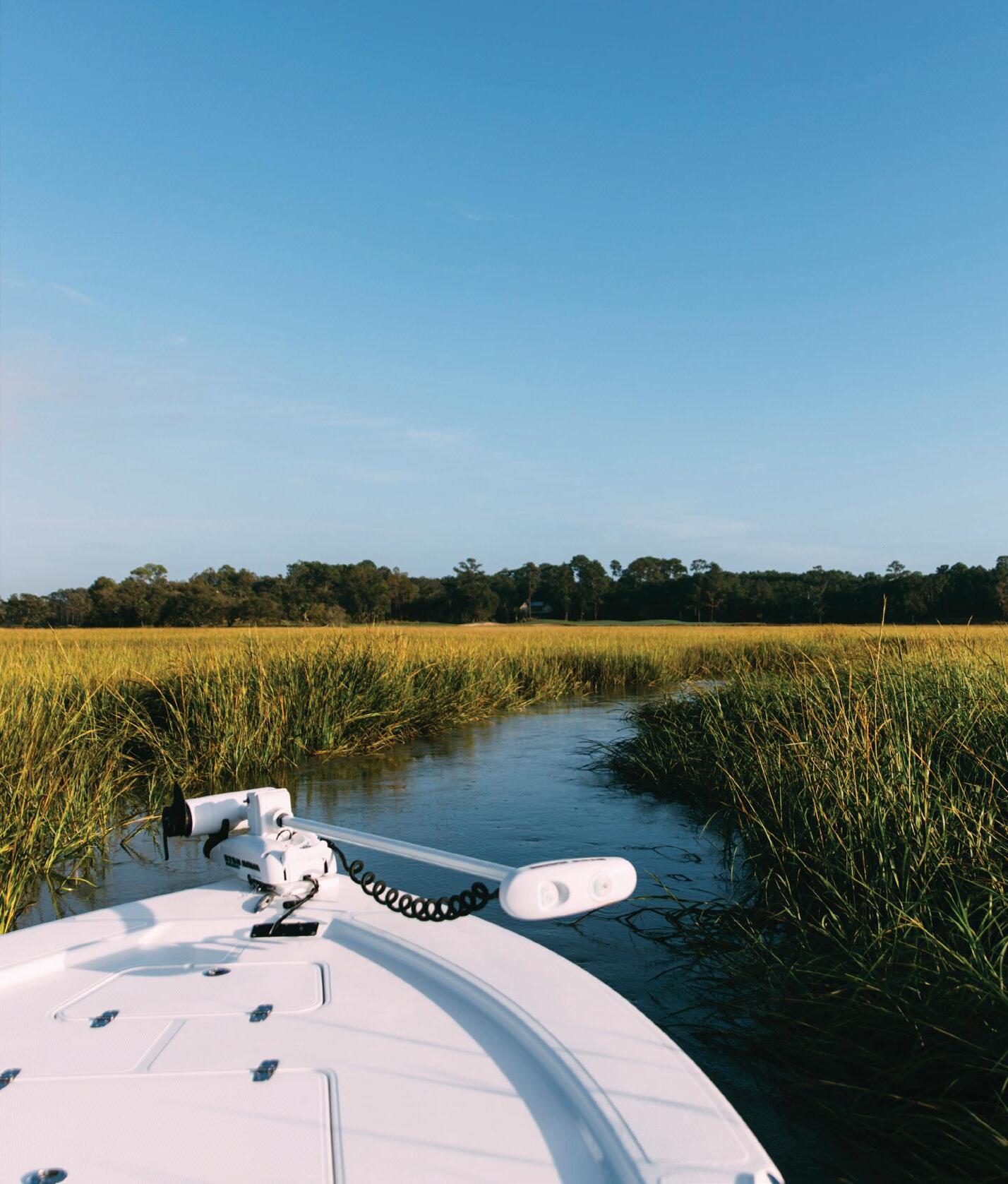
60 LEGENDS MAGAZINE 2018 NO 30
Finally we see the orange-tan shadow of a redfish just below the surface.


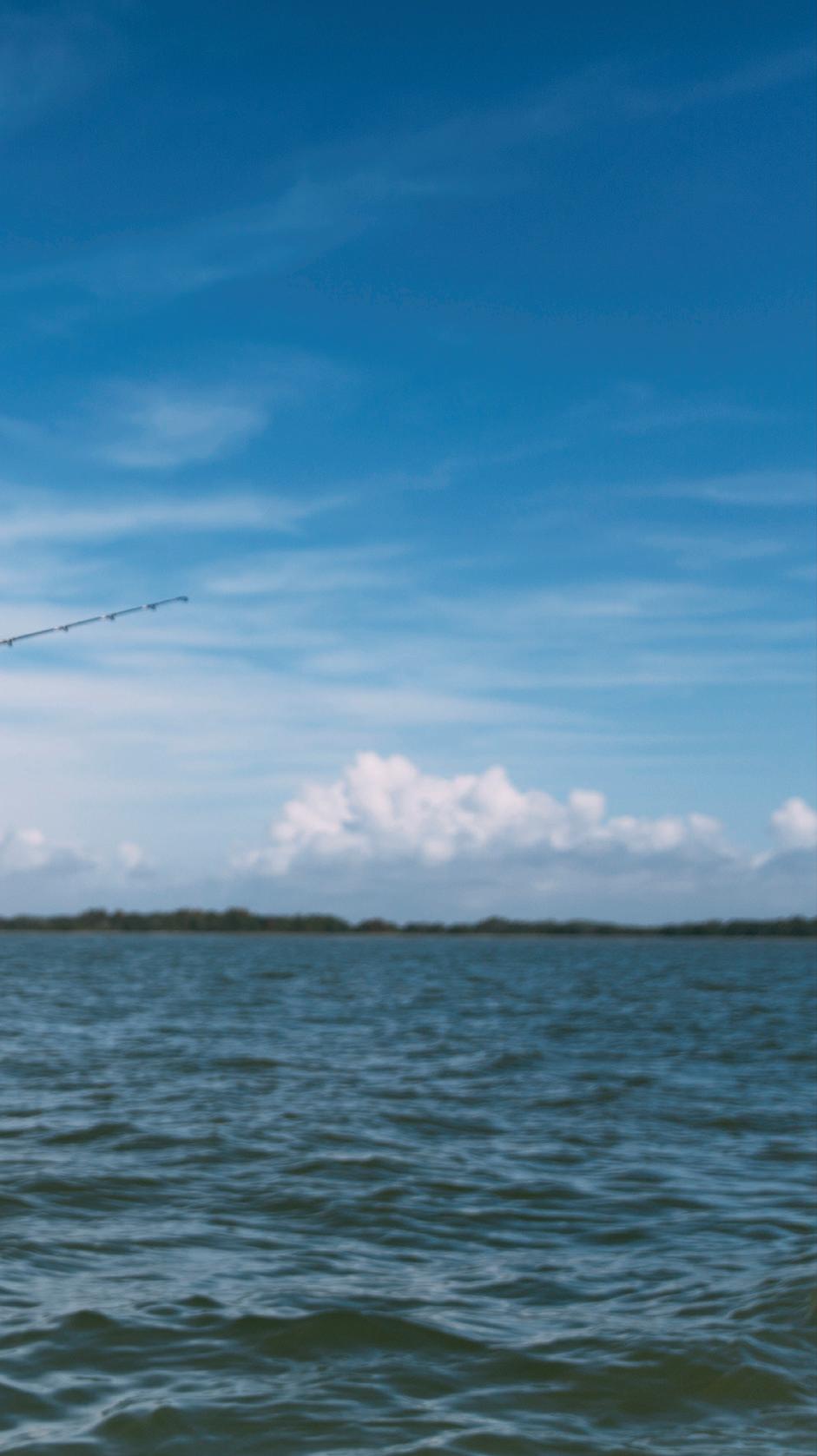

Through human craft and ingenuity, our engineers, surveyors, landscape architects, and analysts collaborate with you to design visions, places, communities, foundations, life.

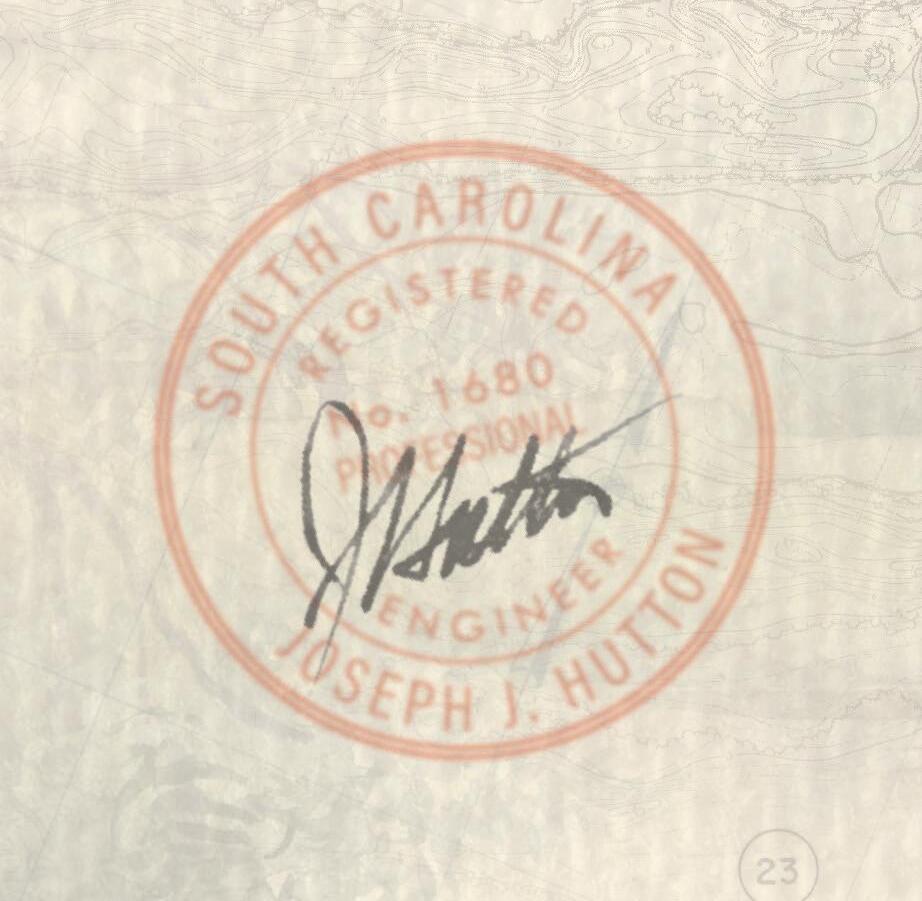



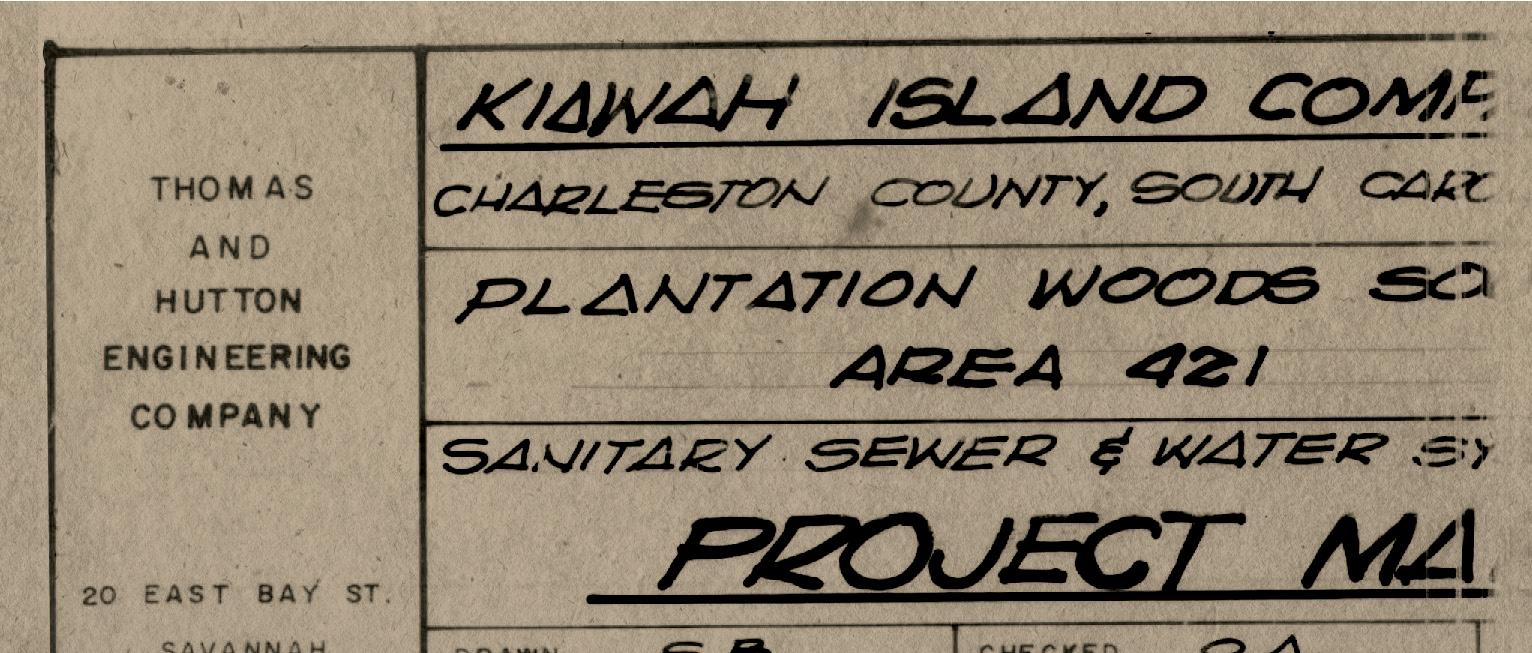
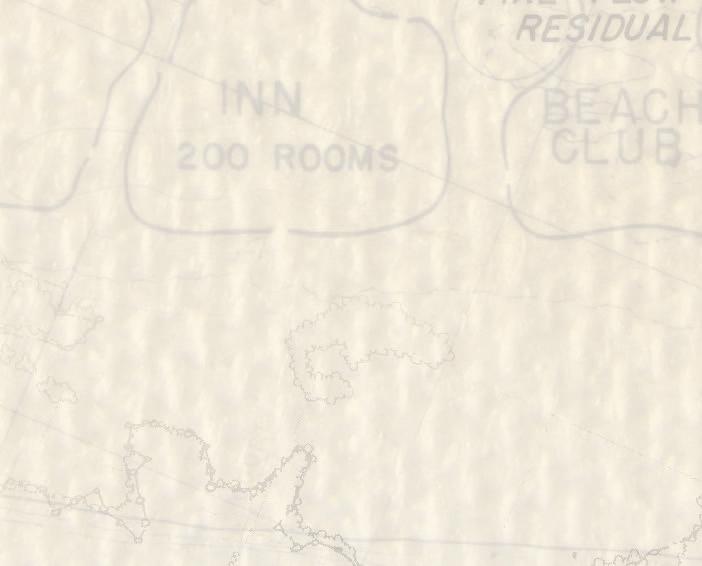
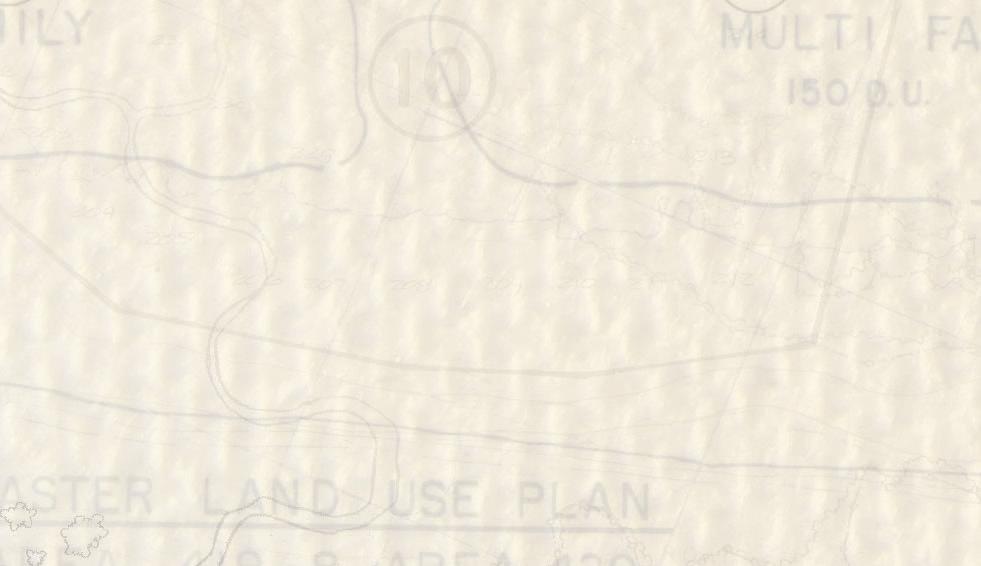

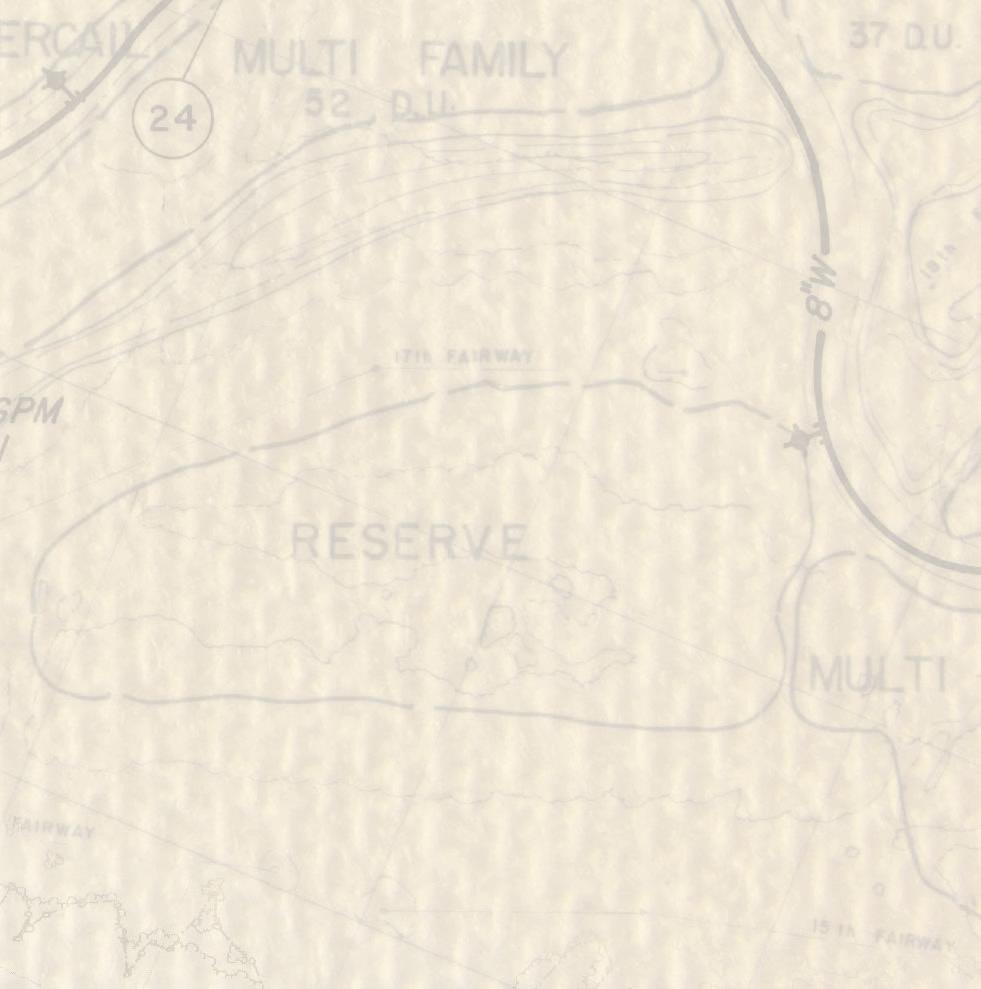




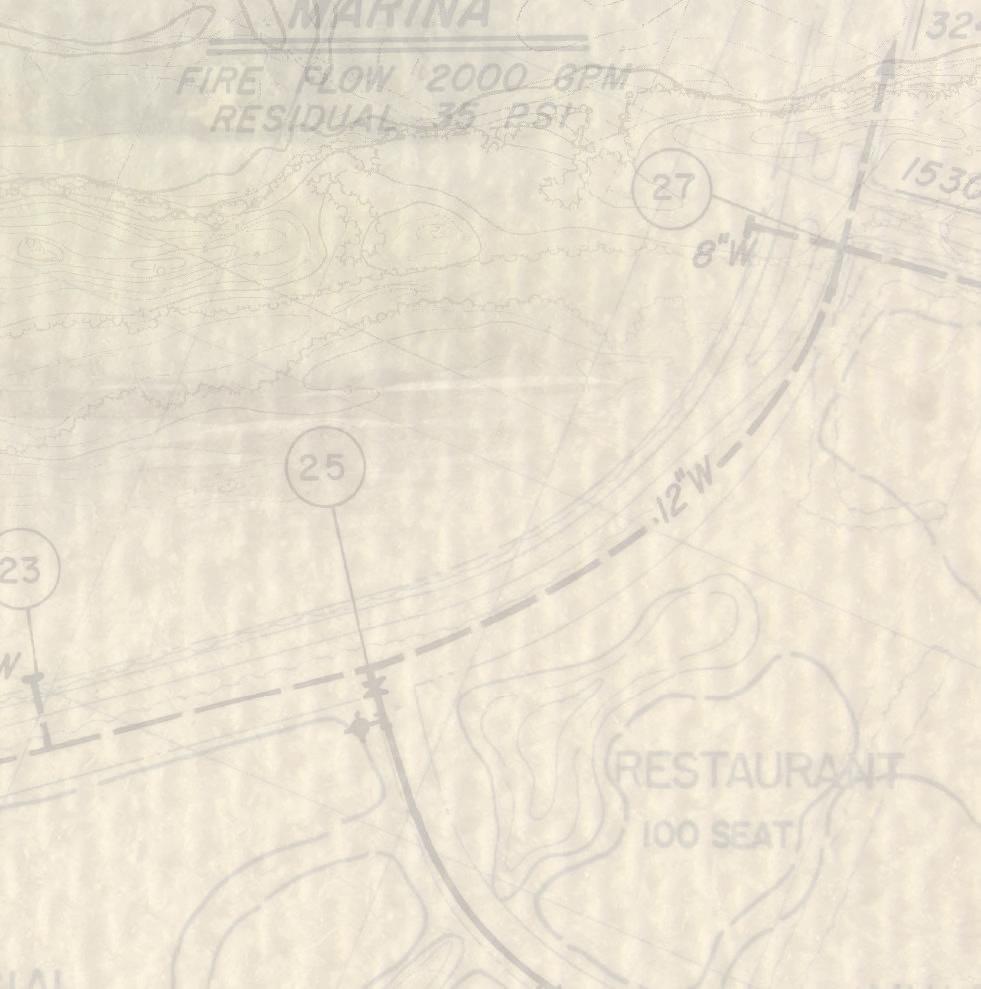


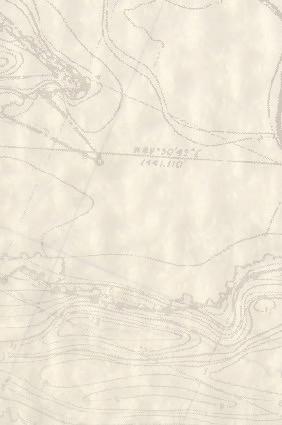
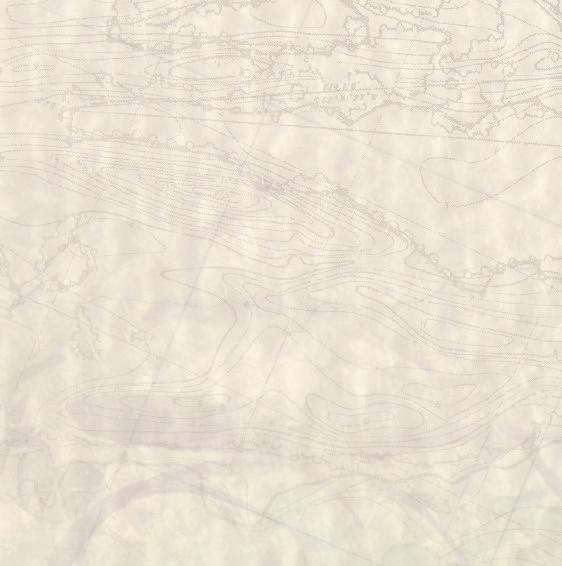
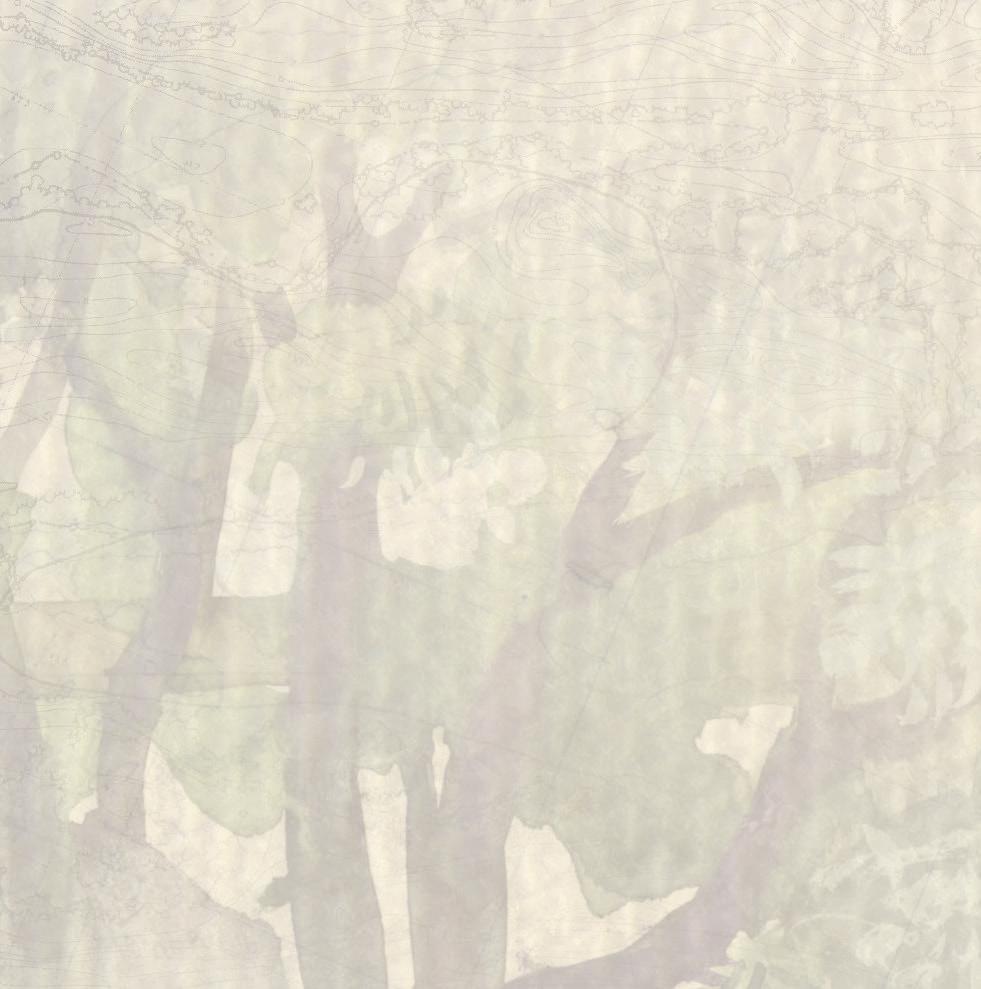



©2018 Ferguson Enterprises, Inc. 0118 701721 FERGUSONSHOWROOMS.COM
BLUFFTON
DECISION.
it comes to your dream home – making sure it is perfect means tons of tough decisions. Let our knowledgeable product experts relieve the stress and restore the fun while introducing you and your design team to our extensive collection of products from the most sought after brands. Request your appointment today at fergusonshowrooms.com
CHARLESTON |
BEST.
EVER. When
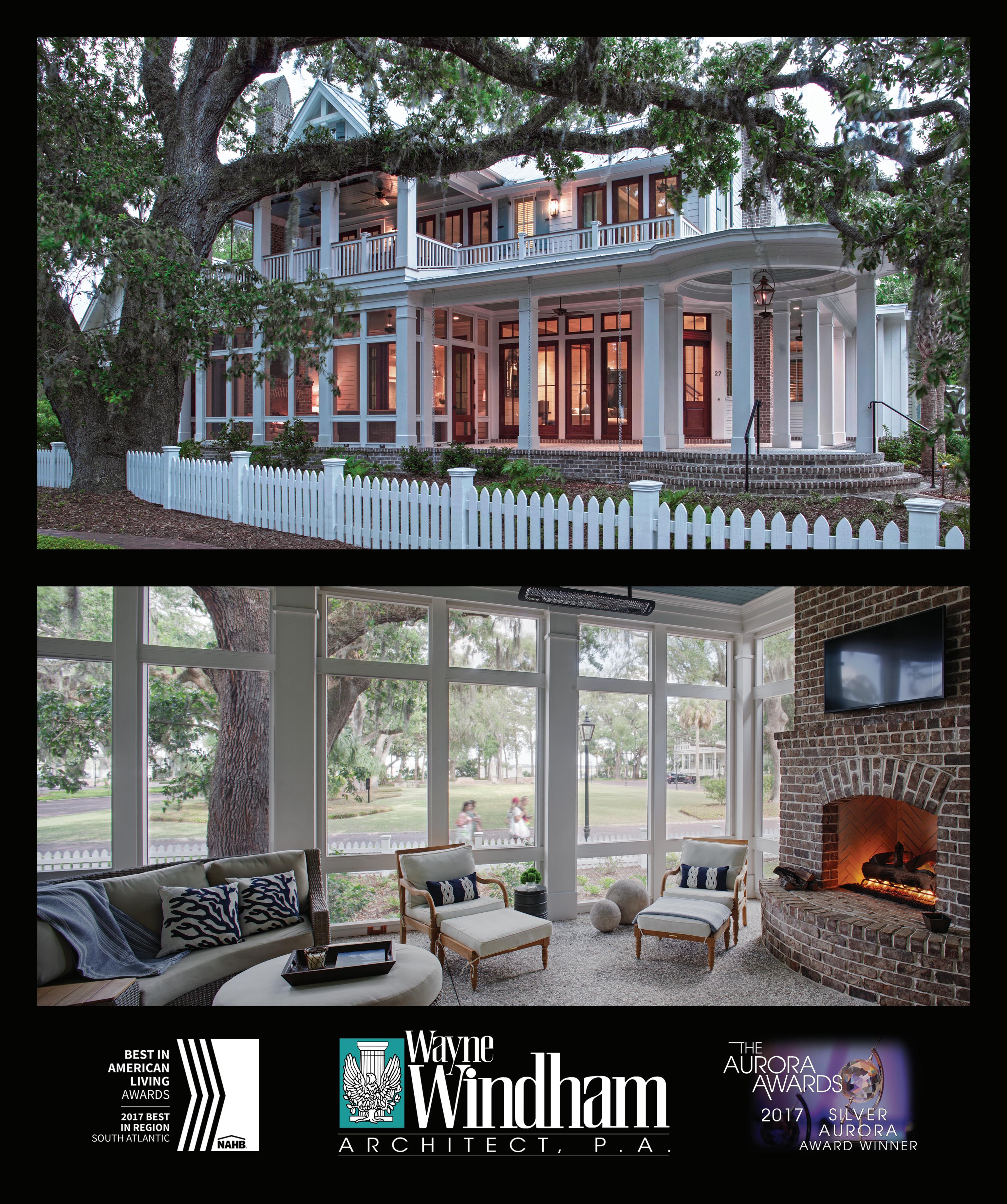

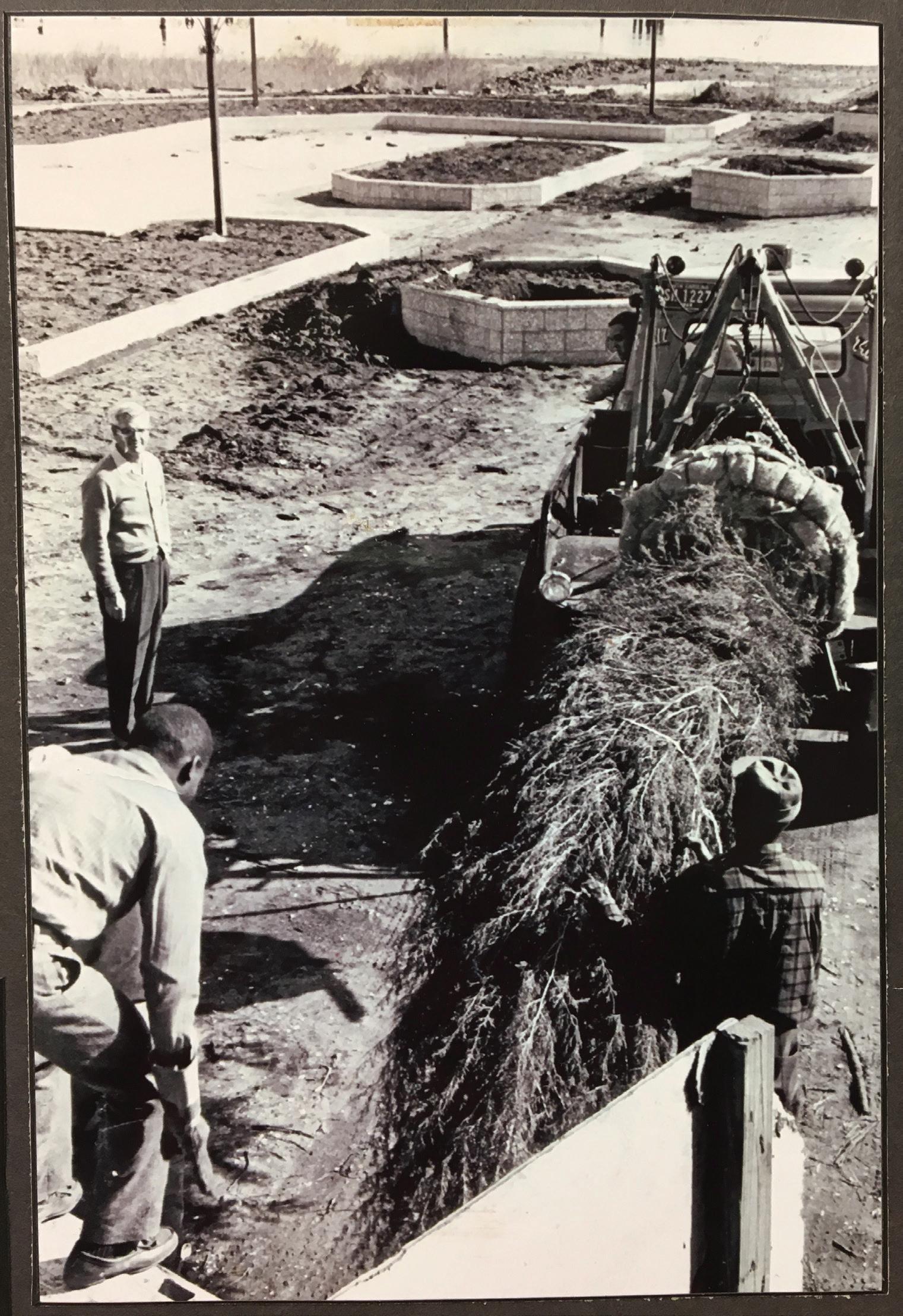
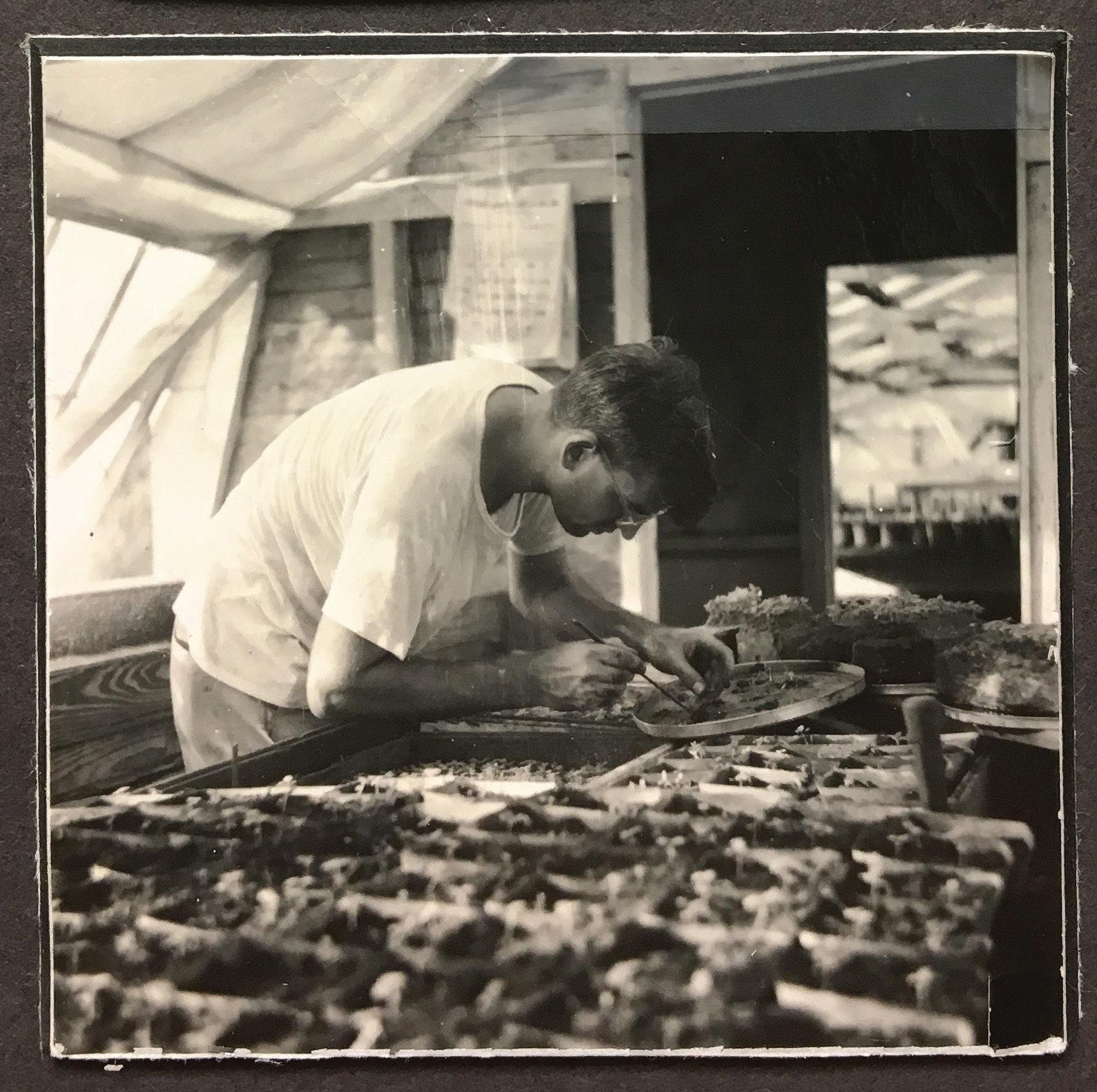





OUR ROOTS ARE DEEP A Family Run Business Since 1950 YOUR LOCAL LEADER IN SITE PREP, CONCRETE, LANDSCAPE DESIGN, INSTALLATION AND MAINTAINANCE 3OAKSCONTRACTORS.COM 843.564.1315 THREE OAKS CONTRACTORS, INC.
Adgers Wharf Park, 1969 | Design by Robert Marvin


Charleston • 843-243-0790 www waynewindhamarchitect com
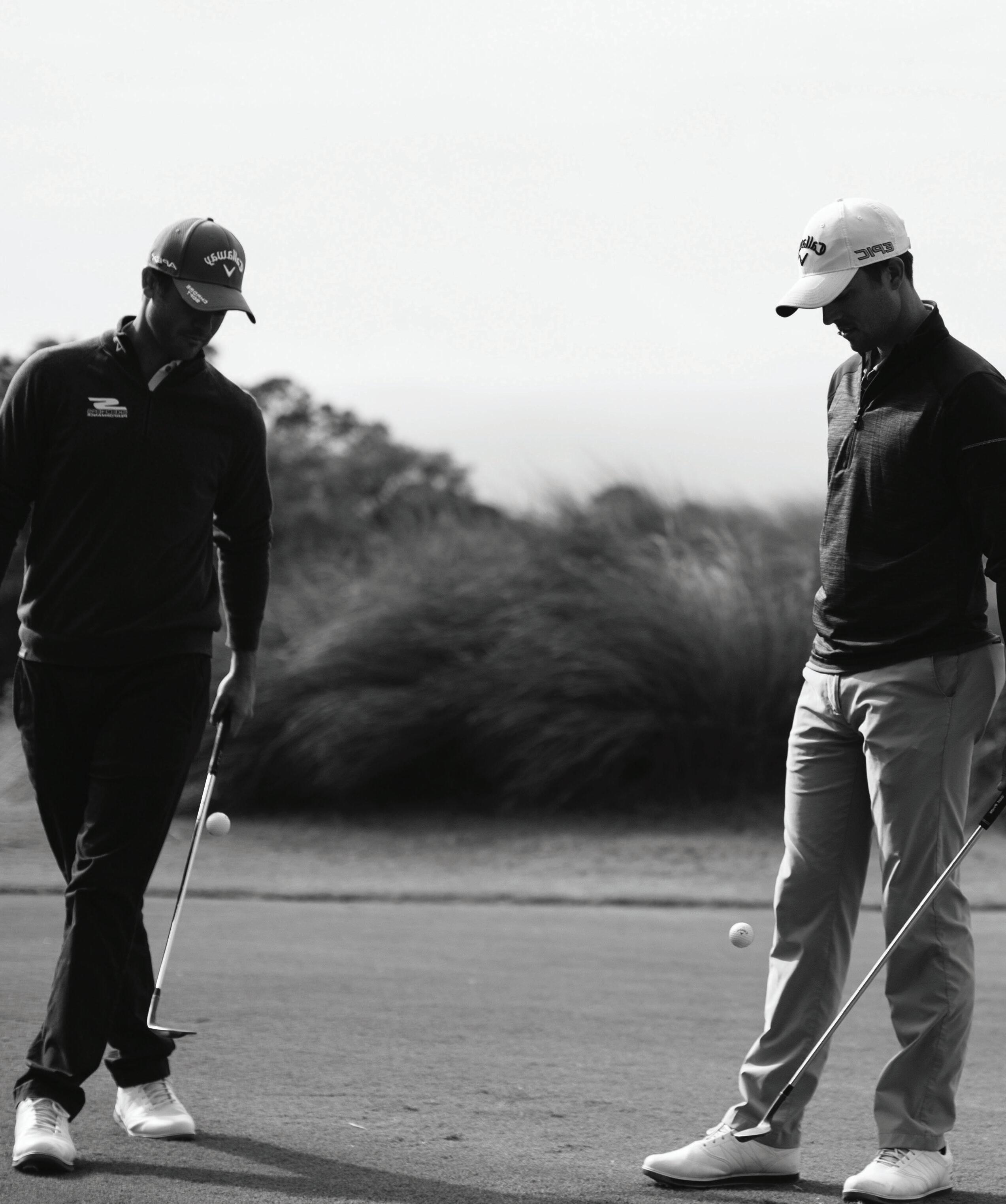
A FAMILY AFFAIR
 STORY and PHOTOGRAPHY by HAILEY WIST
STORY and PHOTOGRAPHY by HAILEY WIST
I catch up with Wesley and George Bryan
on the 15th hole at Cassique the Friday after Thanksgiving. They are playing with sundry family members: dad, sister, inlaws, and wives. The mood is cheerful and gamesome, and I can’t help but think, the family that golfs together…
The Bryan family has come to stay on Kiawah for the holiday—one of the perks of their partnership with the Kiawah Island Club.

“We have a tradition to play every single Thanksgiving, no matter the weather,” says Wesley. “We played River [Course] yesterday—we played nine holes with one club, and it was rainy and windy and awful, but we enjoyed it. It’s a tradition, so we can’t break it.”
Wesley and George Bryan have always golfed. Their father, George Bryan III, was a professional on the PGA TOUR when they were just kids.
“It’s kind of all we did,” says George (IV). “Starting off, we followed our dad around to tournaments. By eight or nine,
68 LEGENDS MAGAZINE 2018 NO 30

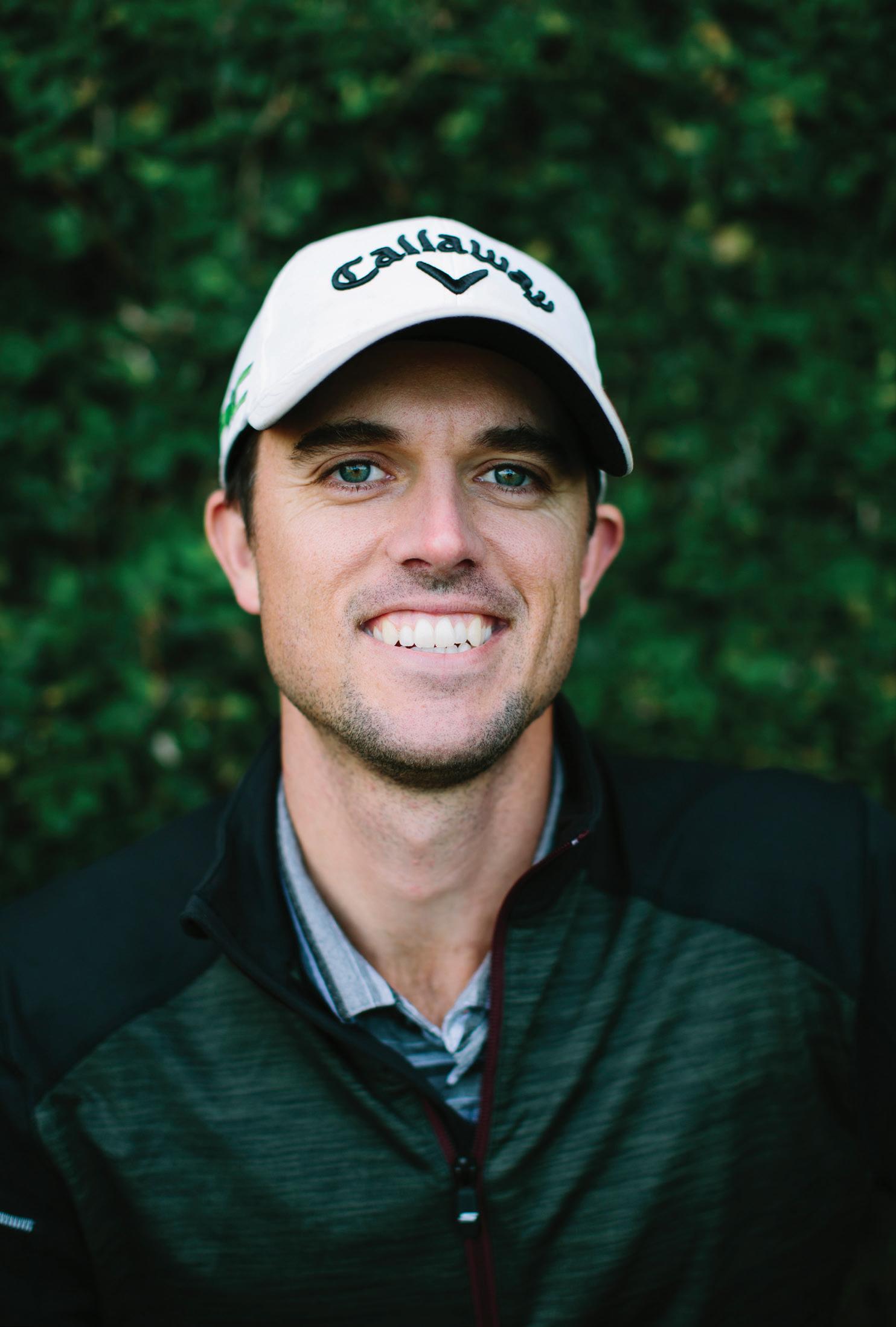

70 LEGENDS MAGAZINE 2018 NO 30
Left: George Bryan |
Right: Wesley Bryan
we were playing in small junior tournaments. That’s where our competitive spirit, our love for competing, started.”
Golf was their world. Actually, golf and video games and Ping-Pong, to be exact. “Oh, and poker. We used to play a whole lot of poker when we were in high school,” remembers George.
Wesley and George are in their twenties and thirties (respectively) now, but it is easy to imagine them as kids, playing an all-out game of Ping-Pong in the golf course locker room.
At twenty-seven, Wesley is already a winner on the PGA TOUR, and George, thirty, is on the PGA TOUR Latinoamérica. Their father, George III, runs the George Bryan Golf Academy in Chapin, South Carolina. Younger sister, M. C. Bryan, plays amateur golf and—wouldn’t you know—she’s engaged to PGA professional William Rainey. They played in college together.
“This is like a golf dynasty,” I say. Wesley nods. “It’s kinda like a family business. We’re on different tours, traveling different parts of the world, but we’re doing the same thing and we have that bond. It’s not always great, so you share the highs and the lows together.”
And what about the mother of this golfing brood? “No. She’s a great watcher. She’s the snack lady,” says Wesley.
These high-profile tours are pretty new for Wesley and George. Back in 2014, when the two brothers were still
struggling on the mini tours, they came across a video of two high school kids doing trick shots on the Internet. “These guys got a lot of attention, a lot of views,” says George. “So we did it. People seemed to like it, so we kept pushing videos.”
Their first video got a thousand views, so they made another. The second video went viral. Pros on the PGA TOUR reposted it; every major golf publication picked it up. All of the sudden, they had fifty thousand views on YouTube. For a year and a half, the brothers toured the country, creating sponsored content, performing tricks at live shows and tournaments.
“It just kind of blew up in our faces, and we just ran with it. I definitely didn’t see it getting to where it did,” says George. “It was pretty wild.”
The videos are amazing to watch. The two brothers are just having fun—they attempt one wild feat after another, razzing each other all the way. And when they make a shot? The celebration is infectious. It’s hard not to cheer out loud yourself.
Then in the fall of 2015, Wesley got through Web.com Tour Q-School. He would go on to be named the 2016 Web. com Tour Player of the Year, and earned his PGA TOUR card thanks to his third victory within that storied season. George periodically caddied for Wesley on the Web.com Tour and then qualified for the PGA TOUR Latinamérica for 2017.
LEGENDS MAGAZINE 2018 NO 30 71
It’s kinda like a family business. We’re on different tours, traveling different parts of the world, but we’re doing the same thing and we have that bond.
Really, the trick shot gig did everything they hoped it would do. Although the initial momentum cooled as their professional careers heated up, their thousands of followers are still loyal to the Bryan brothers.
“It jump-started my professional career again,” says George. “I still keep up with my and [Wesley’s] tournaments and other fun golf content.” He laughs and adds, “For whatever reason, people are still interested in our careers.”
The last year has been a grind for both brothers. For George, it’s pinching pennies and bunking in Airbnb rooms in foreign countries. For Wesley, it’s high-profile events and a lot of time on an airplane. “Being a professional golfer is not as glamorous as everyone makes it out to be,” says Wesley, smiling good-naturedly.
But the Tours slow down for the holidays, and the brothers
can enjoy home for a bit, Wesley to Augusta, Georgia, and George to Aiken, South Carolina (the two towns are within minutes of one another). Both brothers are married and it’s a relief not to travel, to have a bit of stability for a few weeks.
But it’s still all golf, all the time. Here they are on vacation and they’re playing every day. Although, when I venture this point, Wesley squints a little and says, “Personally, I enjoy eating more than I enjoy playing golf. That’s the part that really binds George and me, our passion for food.”
George clarifies, “I wouldn’t say we’re foodies; I’d just say we like food. Foodies like certain dishes paired with certain things…and we just like food.”
“Yeah, we like quantity over quality,” confirms Wesley. Indeed when I ask them later what keeps them on track during a high-pressure tournament, they both answer similarly. “I
72 LEGENDS MAGAZINE 2018 NO 30
It’s really all we know, says George. Even with my dad and my sister—we play to have fun, but we kinda want to beat each other, too. It is a lot of fun.

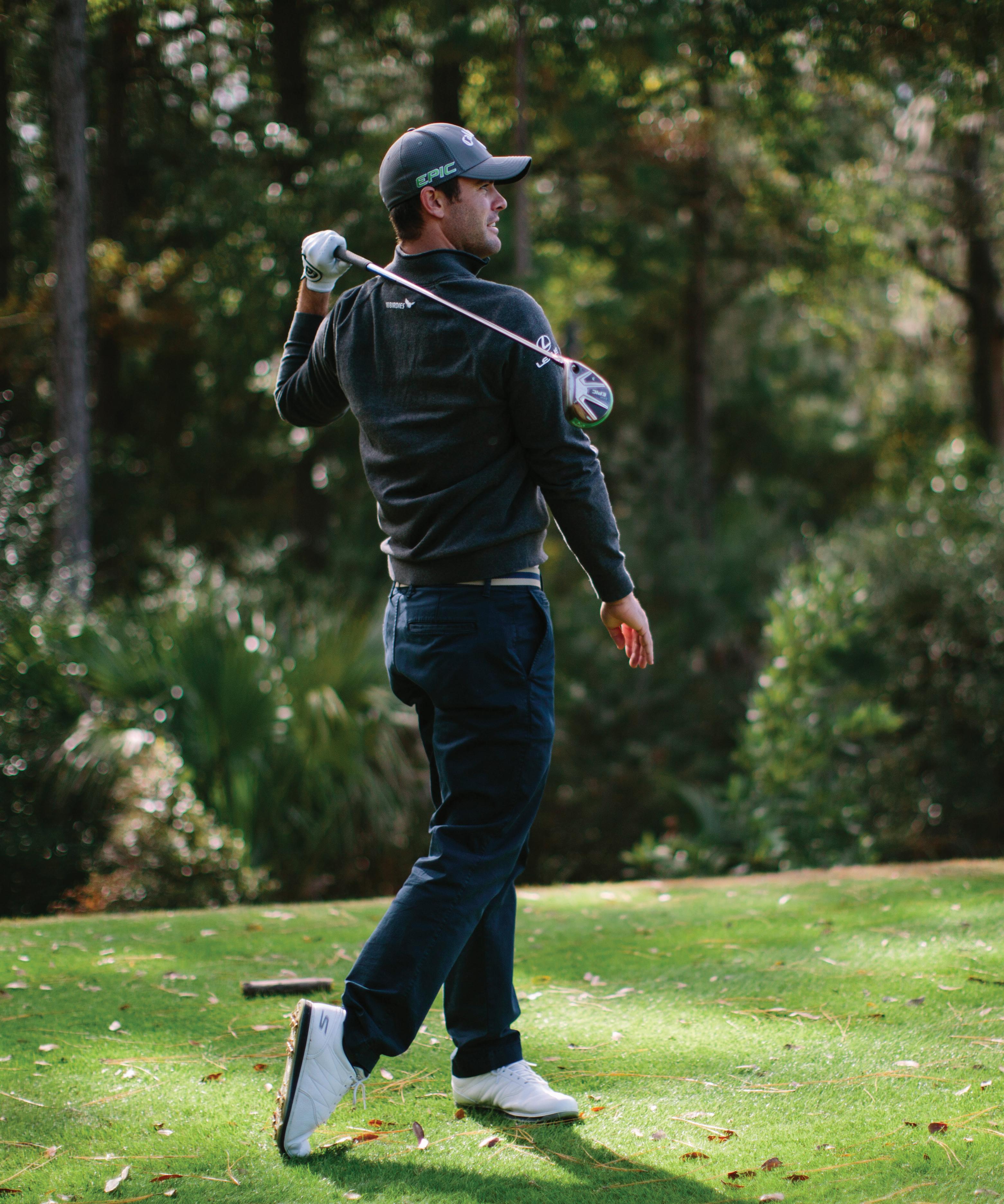
eat,” says Wesley, laughing. “I eat! I have a very routine schedule when I’m playing tournaments, and it keeps me focused.”
“I thought you were going to say emotional fortitude,” I say. George snorts. But back to golf. It’s one thing to have an athletic star in the family, but two? Three? It certainly says a lot about genetics and the quality of instruction from Mr. George Bryan III.

As we stand to shake hands and leave, I say something about being able to play golf together when they are two old men, that golf will be the through line of their entire lives. George laughs. “Yeah, and as competitive as we are, it’s a nice outlet because it’s pretty safe. It’s not like basketball or football where we could really hurt each other.”
“Yeah, we just beat down emotionally,” says Wesley.
“It’s really all we know,” says George. “Even with my dad and my sister—we play to have fun, but we kinda want to beat each other, too. It really is a lot of fun.” — H.W.
LEGENDS MAGAZINE 2018 NO 30 75

RIVERS RUN THROUGH IT
 PHOTOGRAPHY by JOEL CALDWELL STORY by STEPHANIE HUNT
PHOTOGRAPHY by JOEL CALDWELL STORY by STEPHANIE HUNT

Shhh, do you hear that?
Our paddles go still. We drift in silence, sleuths on the inky river. It’s easy to sink into the quiet out here, tucked into a kayak and enveloped in the vast wonder of the ACE Basin, with nothing but yawning sky above us and sweeping marsh and meandering waterways all around. The morning breeze whispers in the spartina, but we tune our ears beyond it. There, listen!—he’s singing again. And we catch it this time—the high-pitched, lilting tsip-tsip-tsip-tsip of the prothonotary warbler. It’s a rapid-fire song, loud and quick like the winged soprano of the swamp himself, who, after announcing his elusive presence, flits by—a flash of yellow brilliance.
“Wow, did you see that? It’s like someone turned on a light switch,” says Chris Crolley of Coastal Expeditions, birder and naturalist extraordinaire and our guide along the blackwater rivers and creeks of the Lowcountry. He’s speaking of the fluorescent glory of the prothonotary’s bright breast, but it could be a million other things. Crolley’s passion is turning on light switches, pointing out hidden treasures of the Lowcountry landscape and bringing the marvels of nature into full view.
Turning the lights on, so to speak, along our blackwater rivers is like peeking into the dark hole of a kaleidoscope. Squint your eyes, recalibrate your focus, and wonders reveal themselves: shifting and enchanting. These slowly rolling ribbons of water are ever-changing. They slink and curl around bends and oxbows at an ancient pace, unlike their friskier whitewater counterparts that begin in the Appalachian escarpments and tumble on down. A blackwater river, by contrast, begins and ends in the Coastal Plain, trickling up from springs in the Sandhills and taking sweet time to thread through sloughs and riffles in the wooded floodplains, where leaves and detritus from deciduous bottomland forests stain the water, giving these rivers their namesake tannin-steeped blackness.
“The same thing that makes your iced tea the color that it is gives blackwater its color,” explains Crolley. Though freshwater, these rivers and creeks fluctuate with the tides. And though dark, they are no less luminous, as a day of paddling in the ACE Basin and in the Francis Marion National Forest proves.
LEGENDS MAGAZINE 2018 NO 30 79
Edisto Enchantment
From the put-in at Willtown Bluff along the South Edisto, one of the three rivers (Ashepoo, Combahee, Edisto) that create the pristine ACE Basin south of Kiawah, we make our way up to Penny Creek. “Welcome to pristine wilderness—some 217,000 acres of protected lands with no cell towers, no electrical lines, no jet trails overhead, no evidence of humankind except for the remnants of rice cultivation,” says Crolley. Paddling along Penny Creek’s blackwater is like gliding through a green wonderland, with water oaks hugging the riverbank and a fringe of marsh grasses outlining the edges. Above is absolute blueness and clouds so puffy they seem cartoonish. Red-winged blackbirds play hide-and-seek and elegant egrets stand and stare. A wood stork glides by. “Would you look at that green heron! Dressed for the prom!” Crolley points out.
In the upper reaches of Penny Creek, “remote” begins to take on a new meaning. You realize that while you are far, far from any urban hustle and bustle, you don’t feel distant and isolated as much as up close and ensconced in raw beauty and natural majesty. This remoteness feels more like connection; it sounds like a deep sigh signaling that this is the real world.
“The botanical diversity here operates at a very high
frequency,” says Crolley. Indeed the freshwater ecosystem along Penny Creek is abundant with tag alder and Southern wild rice, native wisteria and swamp dogwood, Cherokee rose vines and the vivid blue iris. As Penny Creek meets the South Edisto and crawls closer to the sea, spartina and other salttolerant species become more prevalent, and one ecosystem blends in to the next. “It’s all connected, all corridors,” Crolley remarks.
Francis Marion’s Black Magic
While the ACE Basin is the protected land creating the southern boundary of Charleston’s Greenbelt, the Francis Marion National Forest is the natural buffer along the metroregion’s northeastern edge. Here blackwater tributaries wind through oak and hickory stands and tupelo and bald cypress swamps nestled deep within a surrounding longleaf pine forest that stretches across a quarter of a million acres of federally protected land.
“These longleaf pines are like staccato stripes along the landscape. Their rhythms leave such a large-scale vertical impression,” notes Crolley. This is home of the pileated woodpecker and carnivorous flora native to Carolina bays.
80 LEGENDS MAGAZINE 2018 NO 30
There, listen!—he’s singing again. And we catch it this time—the high-pitched, lilting tsip-tsiptsip-tsip of the prothonotary warbler.
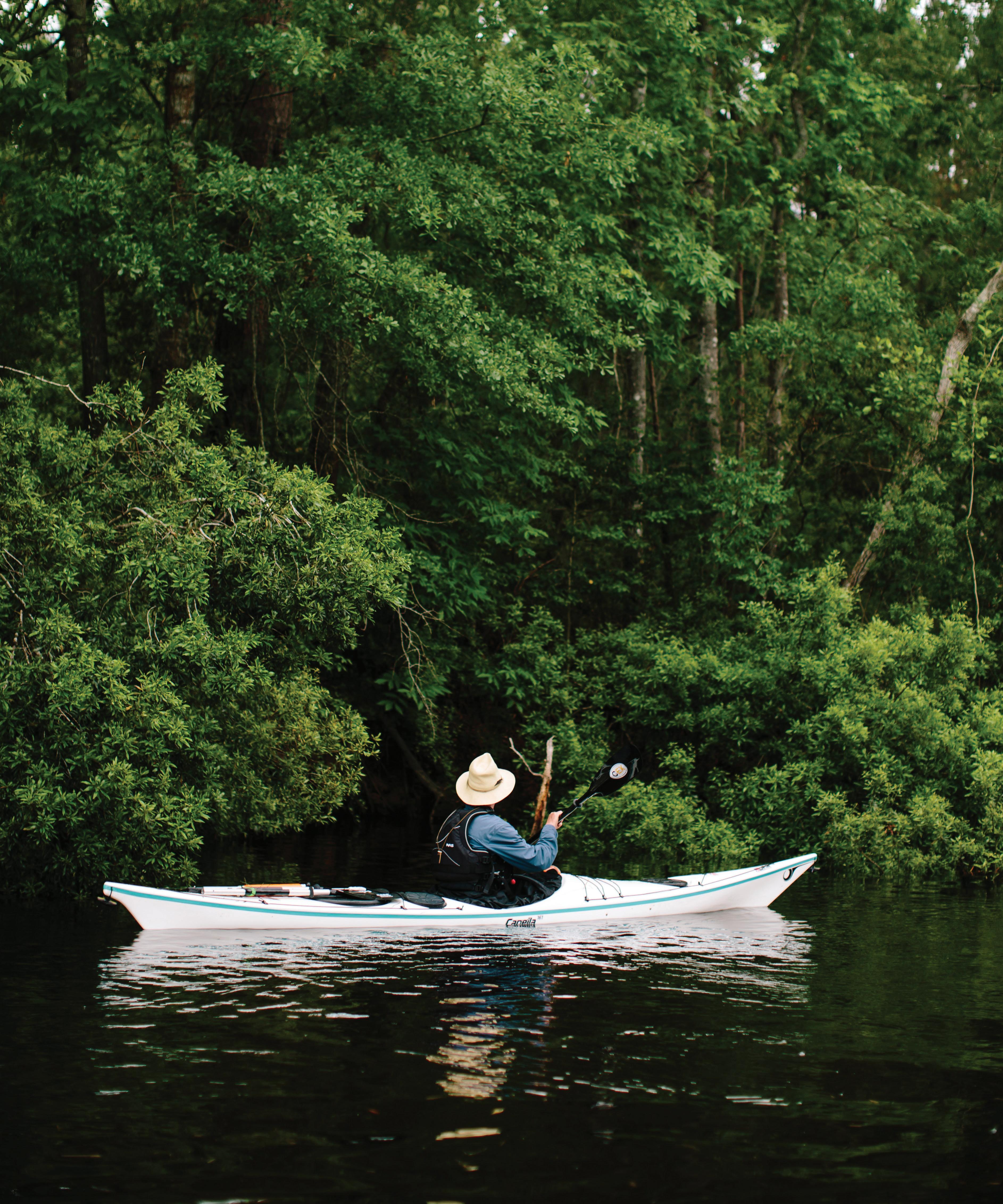



And on the sandy plains of the pine forest understory live a multitude of seed-bearing grasses and ephemeral flowers— “one of the most biodiverse plant communities we have.”

At the end of a long, straight gravel road, Pitch Landing is our put-in for Echaw Creek. Unlike Penny Creek and the South Edisto, the banks here are indistinct; the edges of Echaw and Wambaw Creek (a similar blackwater tributary in the Francis Marion) just seem to morph and disappear into a tangle of cypress knees and tree trunks. Every now and then a majestic one-thousand-year-old bald cypress stands firm in a bold, sculptural statement. “It looks like hobbits would live here; it’s totally a ‘Lord of the Rings’ fantasy land,” Crolley laughs. “I love that sun dance of light off the trees that’s then reflected into the ripples of water. And on blackwater you get twice as much tree—you get the real thing and then its reflection.”
This mirrored world offers a constantly rotating gallery; every paddle stroke creates a new swirling watercolor, every breeze a different dapple of light. “At dawn the river steams like a cup of coffee,” Crolley says, “and at dusk, it’s a whole other muted effect.” And as the planet spins in between dawn and dusk, the Echaw and Wambaw Creeks go about their mellow business: feeding yellow-bellied sliders, harboring

LEGENDS MAGAZINE 2018 NO 30 83
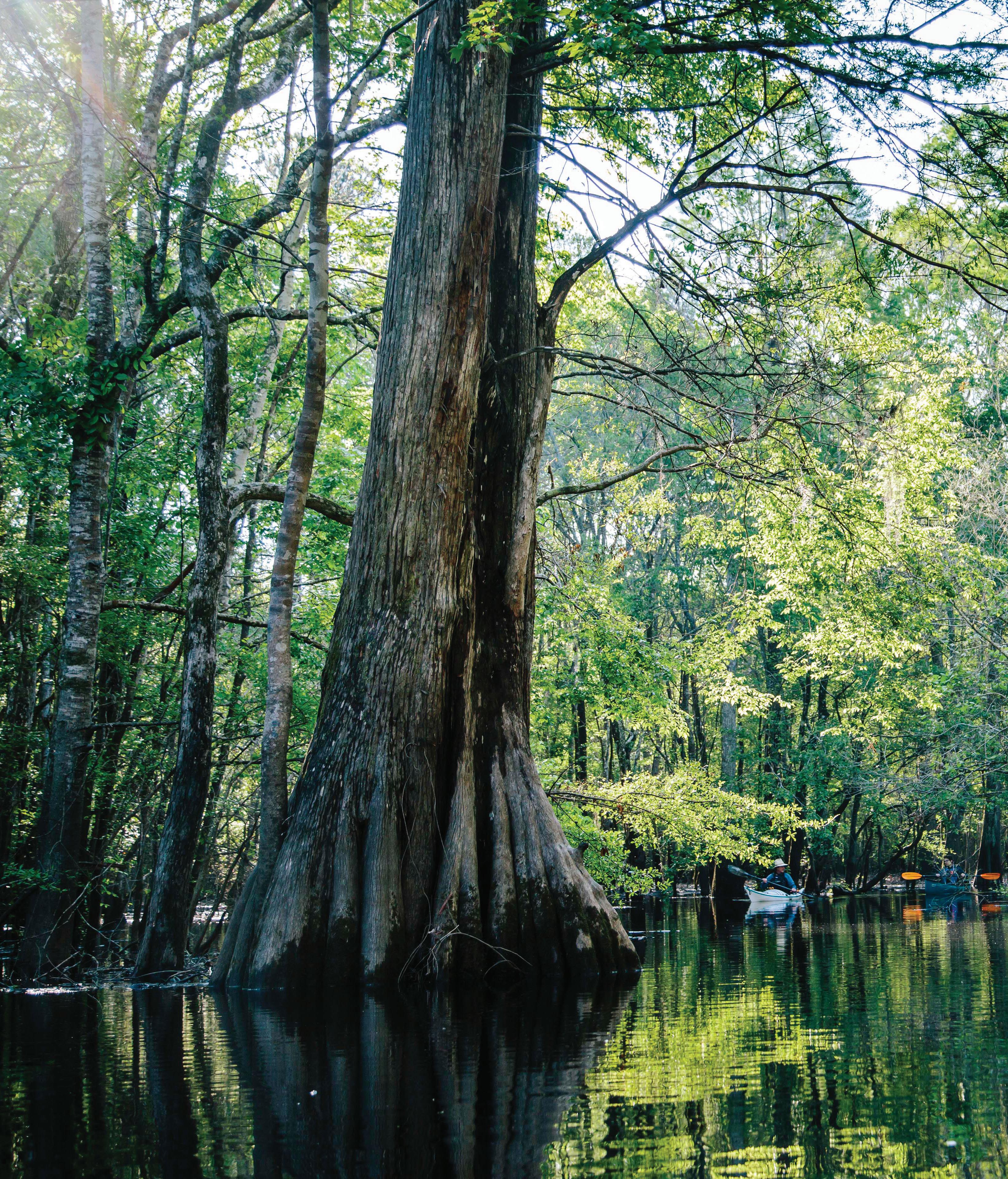
Blackwater can still transport us.
alligators, offering up landing pads and mosquito snacks for whirling dragonflies, going with the flow until they spill into the Santee River, then ultimately into the Atlantic Ocean.
Ashepoo, Edisto, Combahee, Echaw, Wambaw—their names evoke a litany, a poem of remembrance of those who once fished their shallow depths, navigated their waters, saw their own reflection in the rivers’ dark surface. Long before cart paths and railroads and interstates, “rivers were our roadways,” our native infrastructure, Crolley notes. A day spent paddling the rivers in Kiawah’s backyard demonstrates that blackwater can still transport us—back to awakened senses, to appreciation of nature’s mystery and marvels, and perhaps even to a reflection of our truest selves. One in which water gently ripples and sunlight dances and a warbler’s call sings, Hey, listen. Pay attention. — S.H.

LEGENDS MAGAZINE 2018 NO 30 85
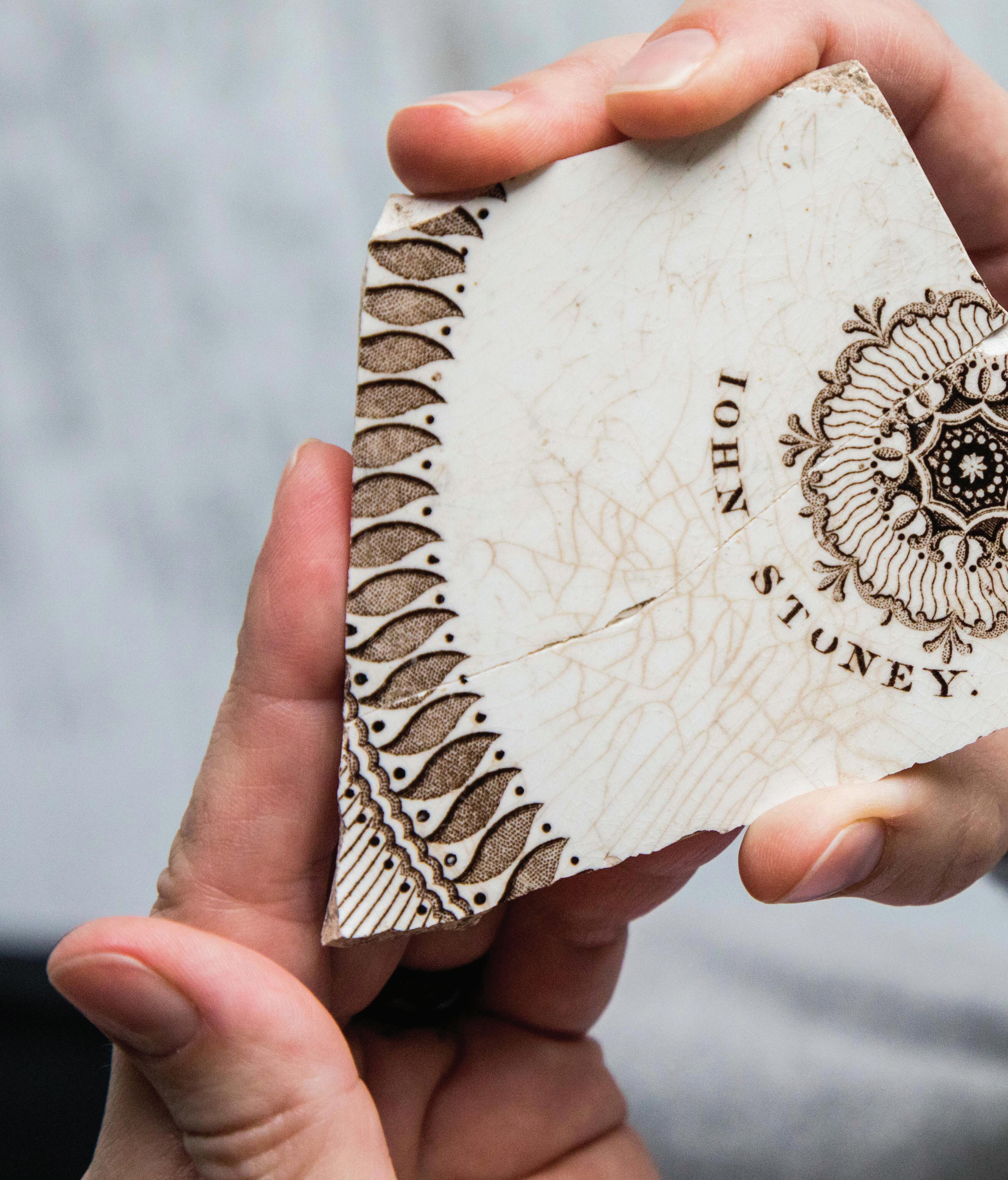
A FRENCH CONNECTION
 PHOTOS by PETER FRANK EDWARDS STORY by SANDY LANG
PHOTOS by PETER FRANK EDWARDS STORY by SANDY LANG

88 LEGENDS MAGAZINE 2018 NO 30
There’s much to mull—letters penned in the early 1800s in flowing, cursive French; mentions of a “bathing-house” that once stood in the garden; merchant listings of imported Champagne and Haitian coffee.
Not to mention the thousands of little artifacts she found digging in a corner of the yard. When visitors stop by, the latest found objects are arranged puzzle-like on a dining room table. In the diffused light of piazza-facing windows, there may be cattle bones, odd buttons, catfish spines, and large porcelain pieces decorated in pagodas, sailing ships, or woodland scenes.
Meet Juliana Falk
Dressed smartly in a black sweater and pants, her brown hair pulled into a smooth ponytail, she’s scratching the dirt with a trowel and has to look upward from the large, hand-dug hole in her yard to see where I’m standing. At that depth, I think, she could be excavating the deep end of a swimming pool. But
soon she produces an object from the dirt walls, a curved piece of pottery. “Part of a rim from a pitcher,” she says, smiling and brushing it off to show me.
Falk first stepped through the gate of the large, walled lot that surrounds 48 Laurens Street about eight years ago. It was the tenth property for sale downtown that she’d visited. Falk was hoping to relocate from Pennsylvania to Charleston but had only been to the city a couple of times. But she was ready for southern climes, and her parents had visited Kiawah Island for years.
“This house spoke to me right away,” she says, even with an overgrown garden and some rooms needing repair. After moving in, she soon noticed pottery pieces in the soft dirt floor in the greenhouse. She did some research, saved each “sherd” (what she’d learn is a preferred archaeological term for shard), and discovered that what she was finding was hand-painted Mocha ware or “dipped ware” from the nineteenth century, each with a “cabling” design in brown,
LEGENDS MAGAZINE 2018 NO 30 89
The mysteries sometimes keep her awake at night.
blue, white, and green. With her collection of artifacts growing, she reached out to experts at Drayton Hall and the Charleston Museum, and she quickly found herself on an “unexpected journey in restoration and research.”
Never subdivided or radically remodeled (only an addition added), the private home was once owned by the Historic Charleston Foundation and is a window into the life of an early nineteenth-century French consul and merchant named Simon Jude Chancognie. Falk knew immediately that this wasn’t just a residence but an intriguing part of Charleston’s early story. The six rooms of the original, three-story house have survived remarkably intact, including woodwork, mantels, floors, and plasterwork (now being carefully revealed after much detail was lost under two centuries of paint). Falk is having the original exterior colors confirmed by paint analysis, but it appears to have been cream-colored with black trim.
She’s gradually working to uncover, restore, and preserve as much as possible at Chancognie House, and becoming what she calls “The Accidental Preservationist.” Falk’s law degree certainly didn’t prepare her for this part-archaeology, parthistory, and part-home renovation.
Chancognie Legacy
Chancognie arrived in 1801 to reopen the French consulate in Charleston. A French colonial naval secretary before his appointment, Chancognie penned his letters in French and socialized with the Spanish consulate; he once imported to Charleston a shipment of precisely 2,124 bottles of “the finest Champagne;” and he married while here—to Marie Susanne Delaire, whose family had been partners in coffee and sugar plantations in the Caribbean colony of Saint-Domingue (French Haiti).
90 LEGENDS MAGAZINE 2018 NO 30
The homesite still has its large walled garden, planted now with mature camellias, Meyer lemon trees, and what must be one of the peninsula’s tallest holly trees.

The consul and merchant sited Chancognie House at one end of a large, mostly open lot in Ansonborough—historically a “suburb” of the city’s oldest neighborhoods closer to the Battery. Along the garden wall, passersby on the sidewalk may read the Historic Charleston Foundation plaque that was updated in 2017 to note the house was built circa-1810—an adjustment because of recent finds by Falk, including 1809 newspapers backing some of the wallpaper plus a listing from 1813 that described the house and outbuildings as being “three years old.” (The residence had previously been thought to have been built in 1814–1816.)
The homesite still has its large walled garden, planted now with mature camellias, Meyer lemon trees, and what must be one of the peninsula’s tallest holly trees. Falk has learned that the grounds originally featured a garden of fruit trees and a “Bathing-House, handsomely built of Philadelphia brick.” Intrigued, in 2016 she commissioned an archaeological dig by the Charleston Museum to see if they could find evidence of the bath house, but no remnants have yet been located. “If we could learn enough about it,” Falk says, “I would love to be able to reconstruct it.”
Some of her other Chancognie House finds include: custom dishware for the John Stoney Steamboat, a Charlestonbased pleasure boat that offered breakfast and dinner cruises on the Cooper River in the 1830s; thousands of fragments of

92 LEGENDS MAGAZINE 2018 NO 30

nineteenth-century transferware ceramics, including brownglazed Portobello pottery, a type made in Scotland as early as the 1770s; a letter written by Chancognie in 1801 with a postmark from Charleston and his grand, ink-pen signature.

Before I go, we’re standing on the piazza when Falk mentions that the artifacts she’s found already “could easily total ten thousand pieces,” and she realizes the discoveries and preservation of Chancognie House could be a lifetime project. I recall then how I’d seen her earlier, when she was happily digging and sifting in the dirt. It’s a favorite place for Falk to be lately, she admits, deep in a hole dug in the yard of this long ago Frenchman’s house—and finding in Charleston her own joie de vivre. — S.L.
To follow Falk’s progress and finds at the Chancognie House, go to www.theaccidentalpreservationist.com or @theaccidentalpreservationist.

94 LEGENDS MAGAZINE 2018 NO 30



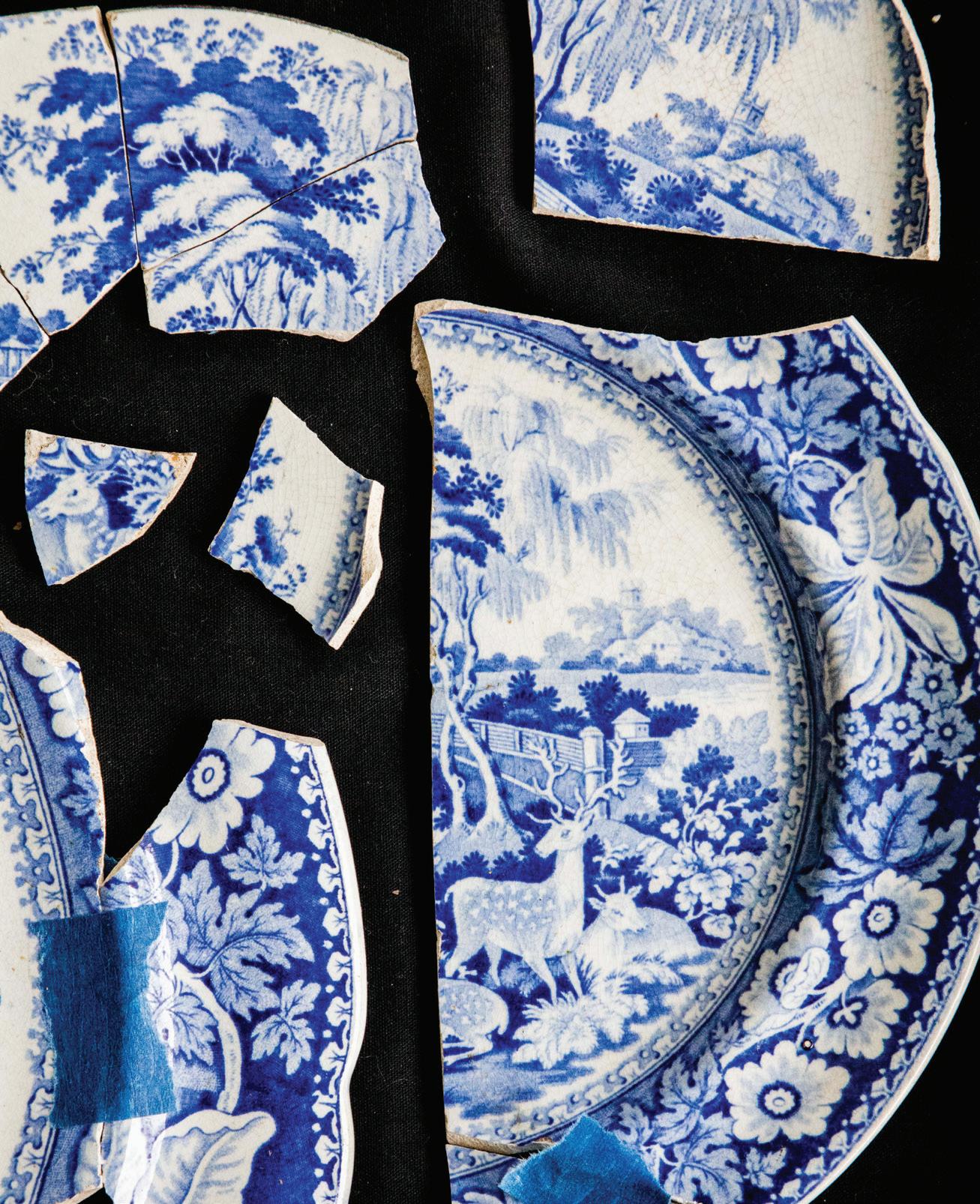


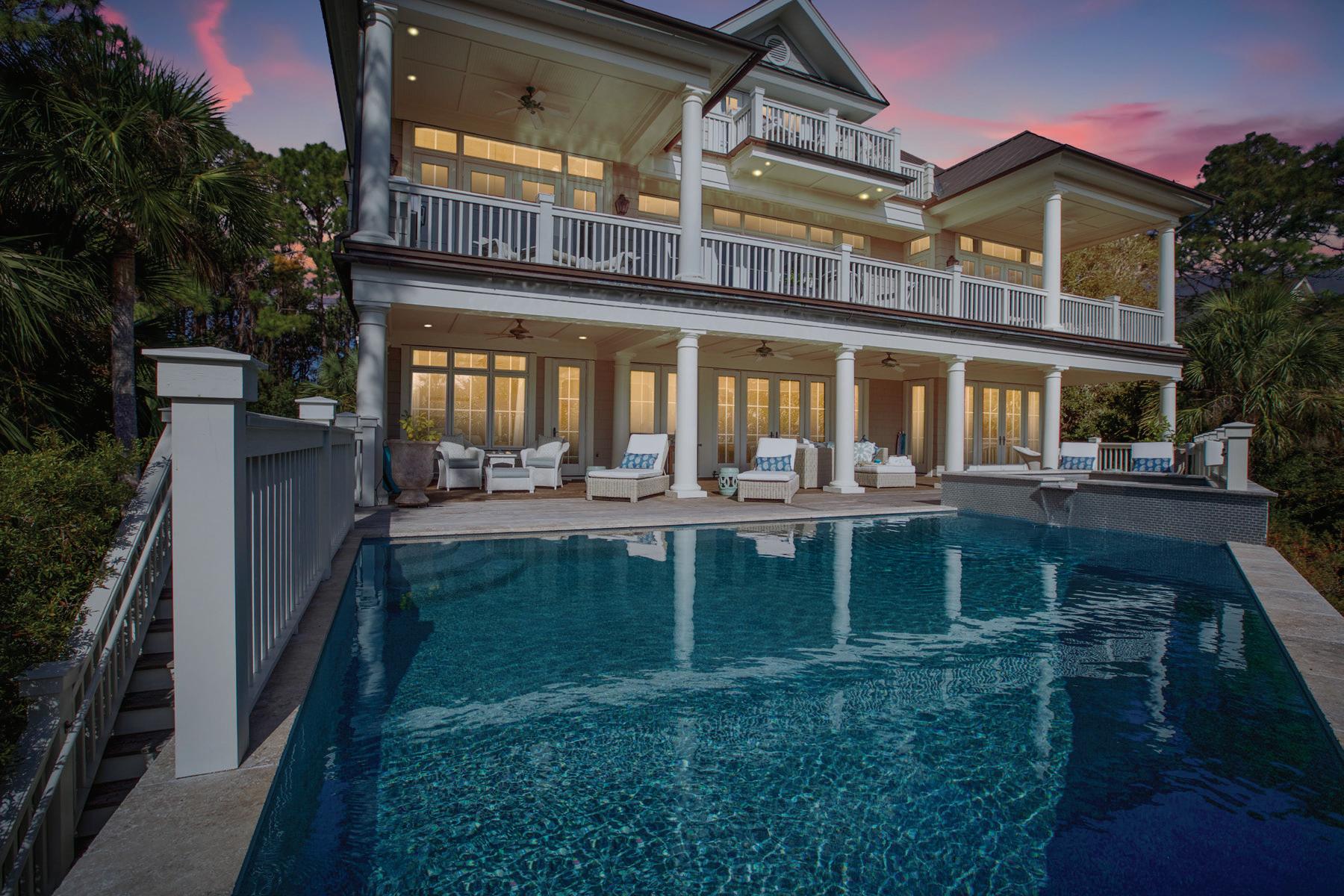
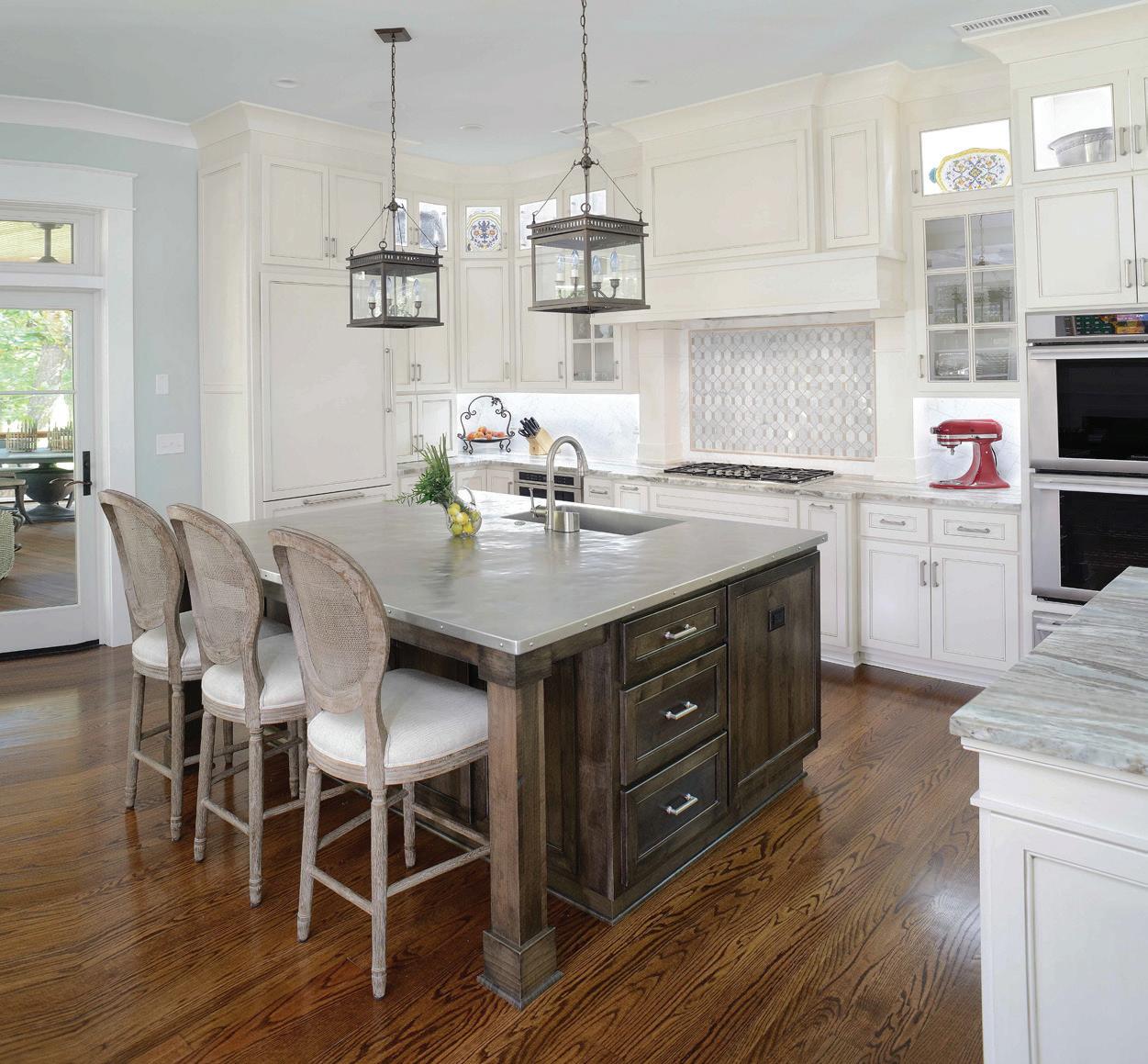
 Custom
Custom
residential home builder on Kiawah and Seabrook specializing in custom homes and renovations. CRAFTSMANSHIP. CHARACTER. COMMITMENT.



Let us help you Live We 843.722.2640 | INFO@MDICHARLESTON.COM | MARGARETDONALDSONINTERIORS.COM

IMAGE COURTESY OF BHL
THE LOST PARAKEETS
OF SOUTH CAROLINA
THEIR HEADS SOM CRYMSEN, SOME YELLOW, SOME ORANGE-TAWNY, VERY BEAUTYFULL
STORY by CHRISTINA RAE BUTLER
THE EXOTIC BIRDS HAD BRIGHT GREEN BODIES AND BRILLIANT ORANGE AND GOLDEN HEADS.
When explorers and settlers first came to Carolina, they were struck by the natural beauty of the coast and the variety of flora and fauna native to the region. One species that caught attention for its beauty (the trait that hastened its demise) was the Carolina parakeet (Conuropsis carolinensis).
They were prized both as pets and as stuffed hat decorations in the nineteenth century. The friendly birds were easy to tame but also easy target practice. Their worst trait was a love of orchards and fruits, which made them enemies to the planters of the Lowcountry. Sadly, these parakeets were hunted with such fervor that they became extinct by the early twentieth century. Today all that survives of the beautiful birds are historic descriptions, a few taxidermy specimens, colorful historic illustrations, and a few eggs that leave the hope of someday being able to revive the beautiful birds.
FIRST IMPRESSIONS
Early colonists spotted the Carolina parakeet as far north as Virginia and southward to the Florida swamps, and later explorers observed flocks inland in Wisconsin and near the Gulf of Mexico. The earliest description comes from William Strachey, who observed the birds in Virginia in 1612:
parikitoes I have seen many in the Winter and knowne divers killed, yet be they a Fowle most swift of wing, their winges and Breasts are of a greenish coulor with forked Tayles, their heads som Crymsen, some yellow, some orange-tawny, very beautyfull.
The brightly colored birds had twelve-inch-long bodies, with pointed wings and tails. They were plentiful in early America, and Jesuits in Florida wrote in 1661 that “the little paroquets are so numerous that we have seen some of our Iroqouis return from those countries with scarves and belts which they had made from these birds by a process of interweaving.”
102 LEGENDS MAGAZINE 2018 NO 30
IMAGE COURTESY OF BHL

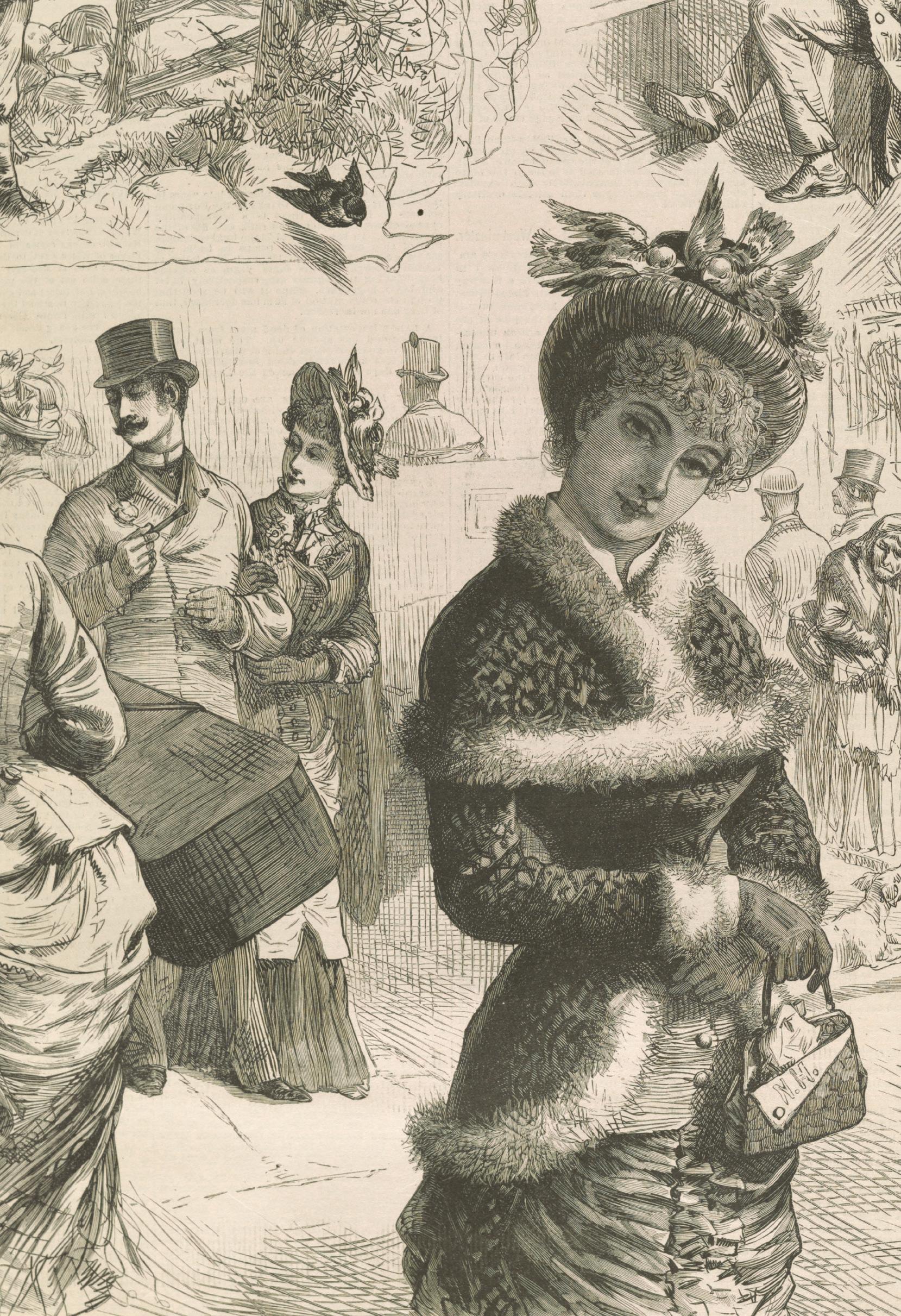
104 LEGENDS MAGAZINE 2018 NO 30 "FINE FEATHERS MAKE FINE BIRDS" /
/
JOHN N. HYDE
LIBRARY OF CONGRESS
South Carolina naturalist Mark Catesby provided the first scientific account of the birds in the 1750s. He described their long, forked tail plumes, colors, and disposition. His colored illustrations of a Carolina parakeet in a cypress branch show a vibrant green body with aquamarine wingtips, a bright yellow neck, and a brilliant orange head. The little bird appears alert and friendly. Curiously, Catesby observed, “their guts are certain and speedy poison to cats. This is the only one of the parrot kind in Carolina: some of them breed in the country; but most of them retire more South.” The Carolina parakeet was indeed the only parrot native to the southeastern United States.
Eighteenth-century ornithologist Alexander Wilson described the vibrant color displays when the birds appeared in flocks: “they alighted on the ground, it appeared at a distance as if covered by a carpet of richest green, orange, and yellow: they afterwards steeled, in one body, on a neighboring tree, covering almost every twig of it, and the sun, shining strongly on their gay and glossy plumage, produced a very beautiful and splendid appearance.” Another observer wrote, “we have seen no bird of the size, with plumage so brilliant. They impart a singular magnificence to the forest prospect, as they are seen darting through the foliage and among the white branches of the sycamore.”
The birds flew quickly and always travelled in large numbers, calling to each other almost constantly. They nested in sycamore and cypress trees in the swamps and the forests of South Carolina and, while not highly migratory, they were hardy birds that were tolerant of winter cold snaps. They had strong beaks that aided them in building nests and gathering
food, but they moved awkwardly on the ground on their small feet. The birds enjoyed sandy beaches and riverbeds and were observed in both salt and fresh water. Carolina parakeets were noisy and social and were most active in the early morning, preferring to nap in the hot midday during the summer months. An observer in the 1790s said that they were easily domesticated and became friendly in two days, while others found them to be “loud and mischievous, like some other pretty creatures” that “seem to delight in screaming.” Famous ornithologist James Audubon said they were “incapable of articulating words, however much care and attention may be bestowed upon their education; and their screams are so disagreeable as to render them at best very indifferent companions.”
“BIRDS OF BEAUTIFUL PLUMAGE BUT BAD CHARACTER”
The parakeets ate cockleburs from cypress and hackberry trees, beech nuts, and leaf chutes. Farmers were only too happy with the birds’ appetite for troublesome burs, which snagged horses’ tails and damaged sheep’s wool, but the parakeets were also especially fond of fruit and grains. They would destroy every apple on a tree, eating only the seeds and leaving the fruit to spoil, which is why the Native Americans and colonists alike destroyed them in large numbers. Audubon described their destruction to crops and orchards in detail: “as if through mere mischief, they pluck off the fruits, open them up to the core, and, disappointed at the sight of the seeds, which are yet soft and of a milky consistence, drop the apple or pear, and pluck another, passing from branch
LEGENDS MAGAZINE 2018 NO 30 105
THEY IMPART A SINGULAR MAGNIFICENCE TO THE FOREST PROSPECT, AS THEY ARE SEEN DARTING THROUGH THE FOLIAGE AND AMONG THE WHITE BRANCHES OF THE SYCAMORE.
THE LAST FLOCKS DISAPPEARED RAPIDLY AND MYSTERIOUSLY IN THE EARLY TWENTIETH CENTURY
to branch, until the trees which were before so promising, are left completely stripped, like the ship water-logged and abandoned by its crew. They visit the mulberries, pecan-nuts, grapes, and even the seeds of the dog-wood, before they are ripe, and on all commit similar depredations. The maize alone never attracts their notice.”
In 1835 James Hall called them “birds of beautiful plumage but very bad character” because of their squawking and fruit predilection. Besides killing them to protect their crops, people also shot them to make them into meat pies. Settlers targeted other native species for damaging their crops or destroying their livestock, leading to the extirpation of the black bear, wolf, and wildcat. Deer and beaver numbers were drastically reduced because their pelts were in demand in England. However, thanks to conservation efforts of the twentieth century, these species were more fortunate than the Carolina parakeet and can be found in the Lowcountry again after near extinction.
Carolina parakeet numbers dwindled for several reasons, including their love of orchard fruit, their tendency to flock around an injured friend (leaving them prey to easy shooting), and the rising commercial desire for their beautiful plumage for hats and garment trim in the Victorian era. The birds were sometimes kept as pets but not actively bred in captivity, and to make matters worse, early ornithologists killed specimens for study rather than attempting to conserve and cultivate living birds. As early as 1832, Audubon reported that “our parakeets are very rapidly diminishing in number, and in some districts, where twenty-five years ago they were plentiful, scarcely any are now to be seen.”
By the mid-nineteenth century, the parakeet had been extirpated in South Carolina, Georgia, and North Carolina, and was becoming endangered elsewhere. There were no
conservation laws in the nineteenth century. Even as the birds were known to be rare, one farmer killed over two hundred in a single afternoon in his orange grove in 1889, and tourists in Florida shot them in droves for sport. The birds were also trapped to meet a brief demand for them as pets in the North and in Europe. The last flocks disappeared rapidly and mysteriously in the early twentieth century. Some experts believe they may have caught an avian disease from domesticated poultry. The last known wild specimen was shot in the Okeechobee swamps of Florida in 1904, and Incas, the last captive parakeet, died in the Cincinnati Zoo in 1918.
HOPE FOR THE FUTURE
In the late twentieth century, great strides were made in land conservation to ensure that surviving native bird, plant, and animal species of South Carolina are able to survive and thrive into the future. The Kiawah Conservancy and the Town of Kiawah Island operate several yearly banding programs to monitor and protect more than two hundred bird species that live on the Island. To date, the Conservancy has preserved more than 1,100 acres of pristine barrier island habitat. To the south, the ACE Basin (Ashepoo, Combahee, Edisto Rivers) conservation project totals more than 200,000 acres of natural habitat and is home to native species and a refuge for migrating birds every winter season.
The Post and Courier reported in 2003 that the Smithsonian Institute and the Charleston Museum have clutches of eggs that might contain enough DNA to allow for further study and possible cloning in the future. It may sound like Jurassic Park, but the possibilities for the future are endless, and perhaps the Carolina parakeet will someday grace the Lowcountry skies again. — C.B.
106 LEGENDS MAGAZINE 2018 NO 30
CONUROPSIS CAROLINENSIS / JOHN JAMES AUDUBON / PUBLIC DOMAIN
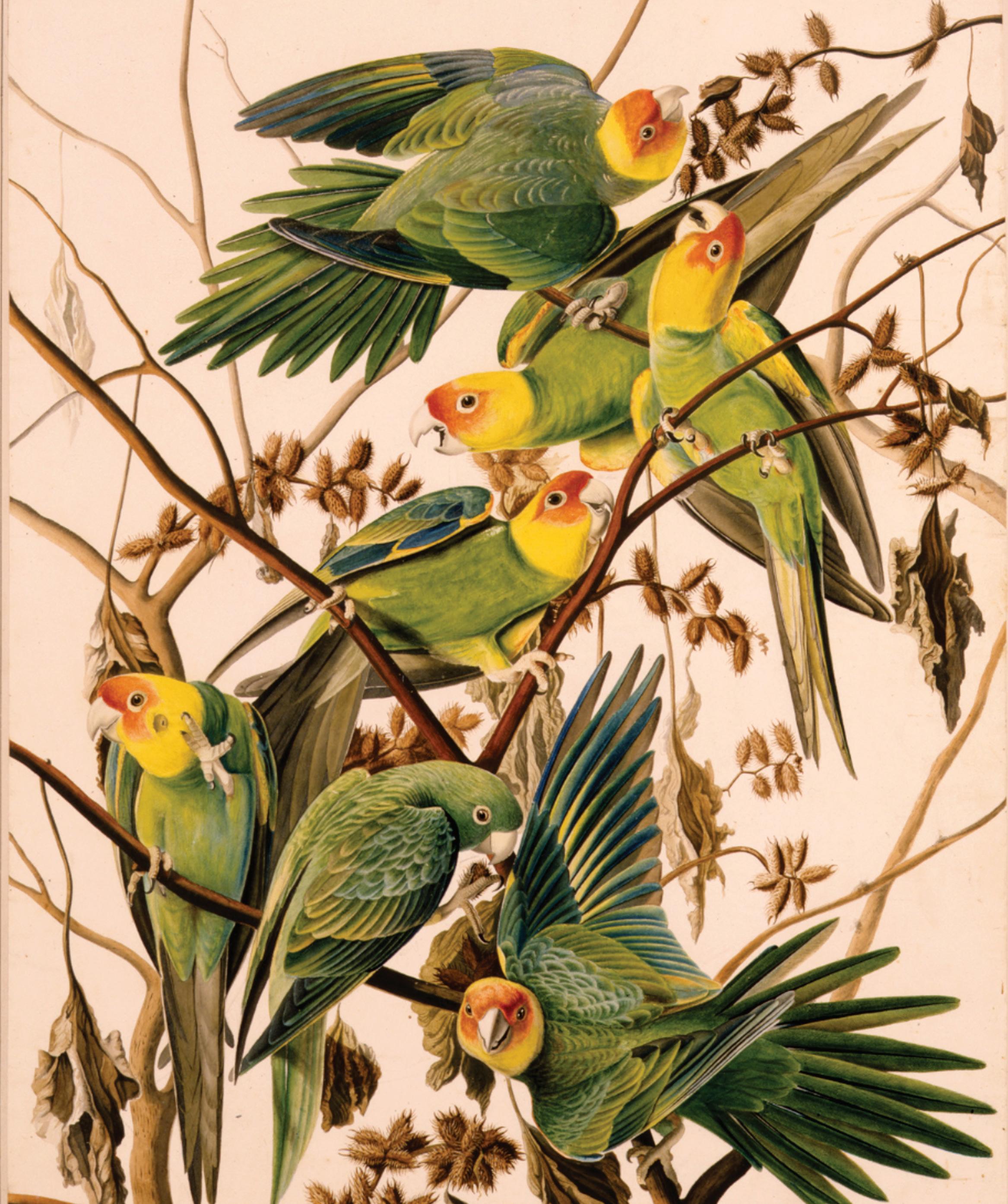

SEWE by the sea
 PHOTOGRAPHY by LINDSEY SHORTER
PHOTOGRAPHY by LINDSEY SHORTER



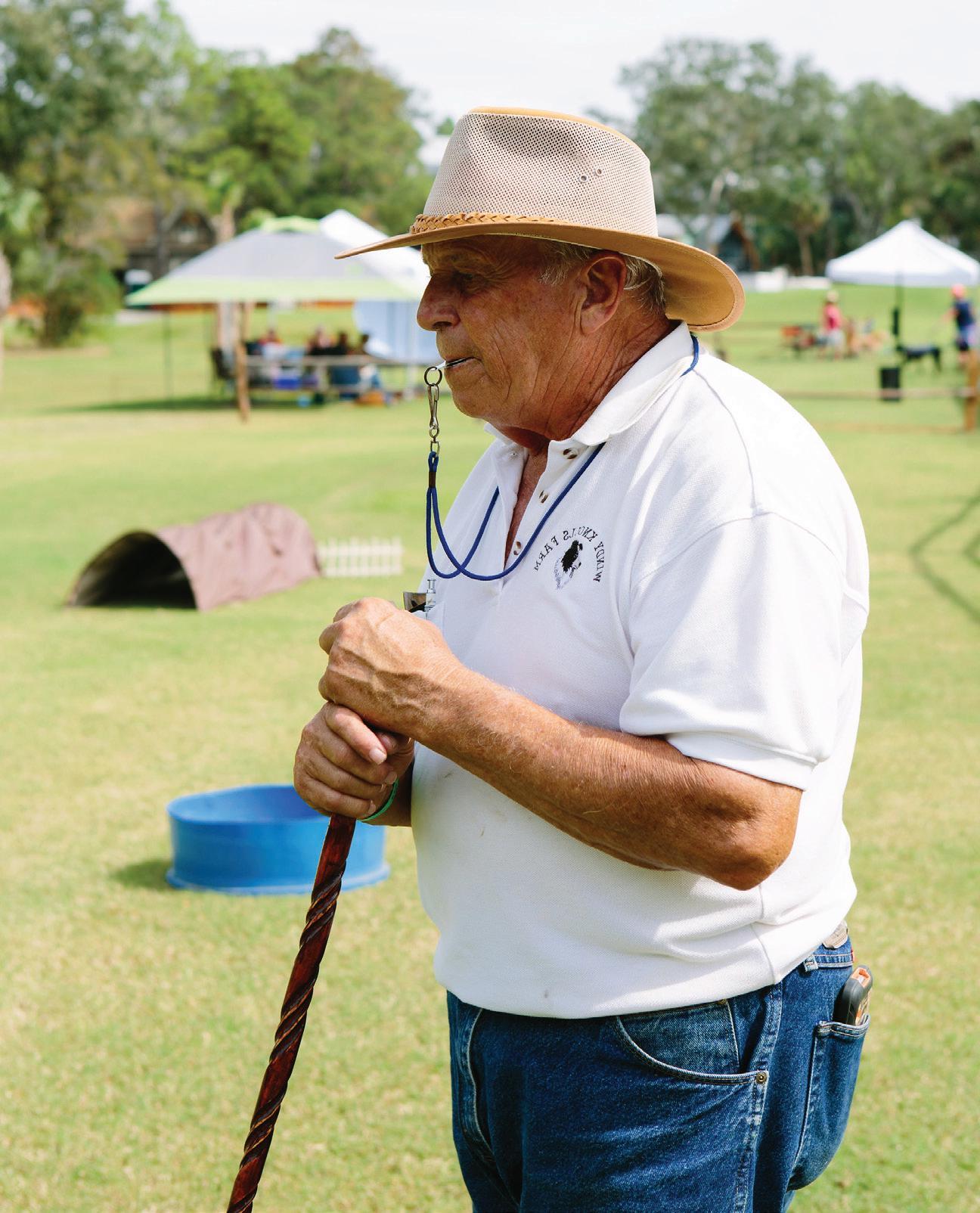
Their eyes are wide and alert, their bodies jostling together as they hasten to a brisk trot. Along a makeshift fence, the audience is rapt, their eyes on the small black-and-white border collie. The handler stands near the fenceline, composed and casual—with only an occasional murmur of direction or tweet of his whistle.
For the past thirty-five years, the Southeastern Wildlife Exposition (SEWE) has, for one weekend in February, filled downtown Charleston with all things wild and wonderful. In the three decades of SEWE, annual attendees have swelled to nearly forty thousand. The weekend is made up of endless fine art exhibits, conservation seminars, sporting demonstrations, and soirees—all a tribute to wildlife and nature conservation.
But for the first time ever, SEWE and the Kiawah Island Club have partnered to bring the wildlife expo to Kiawah Island. “The idea had been discussed for some time between John Powell, our executive director, and the Kiawah Island Club team,” says Mary Roberts, SEWE marketing director. “Exposing SEWE to the demographic of the Club was a no brainer. When they were open to it, things just collided.”
LEGENDS MAGAZINE 2018 NO 30 111
Seven shorn sheep, nearly identical in size and coloring, move in a tight pack around the manicured lawn.
So on this warm Sunday in mid-October, conservationists, sportsmen, and enthusiasts alike have gathered in Ocean Park for the inaugural SEWE by the Sea. The Marsh House is bustling with attendees—there are tasting tables, mint juleps, and cooking demos. There is even an aproned duo meandering through the crowd, shucking oysters on the fly. Later in the afternoon, Tom Colicchio will make a special appearance in a live interview.
Down on the lawn, artists and artisans display everything from paintings to purses under a cavernous white tent. The Bluestone Ramblers, a frequent headliner at SEWE, tune guitars and banjos on a makeshift stage. “The natural setting at Kiawah couldn’t be more fitting for a SEWE event. The natural progression of events and exhibitors, from the park to the Marsh House, created the perfect atmosphere for everything that we try to showcase,” says Powell. And indeed the atmosphere is wonderfully pleasant, more so for the unseasonably warm weather and the breeze coming off the ocean. “It’s insane,” laughs Roberts. “It’s gorgeous here, the views are spectacular!”
A wide path through the trees leads to another expansive lawn. The herding demonstrations and an enormous vinyl pool, the portable tank for the DockDogs® competition.
DockDogs® is a main event at SEWE proper, drawing a crowd of thousands to Brittlebank Park every February.
“Kiawah Island Club wanted us to bring one of the most popular, highest energy events. Bringing in a few regional and local pro teams was a great way to help beginners learn the ropes,” adds Powell.
For the next few hours, both DockDogs® pros and novice pups alike are invited to practice in the pool. Later in the afternoon, local competitors will contend in the three trademark events: Big Air, Extreme Vertical, and Speed Retrieve. There are dogs of all breeds milling about in the midday sun. A wheat-colored poodle is draped around the shoulders of one man, a black lab lays asleep at the feet of a picnicking family, and a nervous Chesapeake Bay retriever whines on the leash, pulling towards the sheep across the lawn.
Back at the Marsh House, Kathryn Mapes Turner, SEWE’s 2018 Featured Artist, paints by the pool. She is the belle of the ball, the sneak peek of SEWE 2018. A native of Jackson Hole, Wyoming, Turner is enthralled by the Lowcountry. “Earlier today we walked along Captain Sams Spit,” she recounts excitedly. “We went all the way to the end, and we saw dolphins. You don’t know how thrilling it
112 LEGENDS MAGAZINE 2018 NO 30
The Marsh House is bustling with attendees—there are tasting tables, mint juleps, and cooking demos.



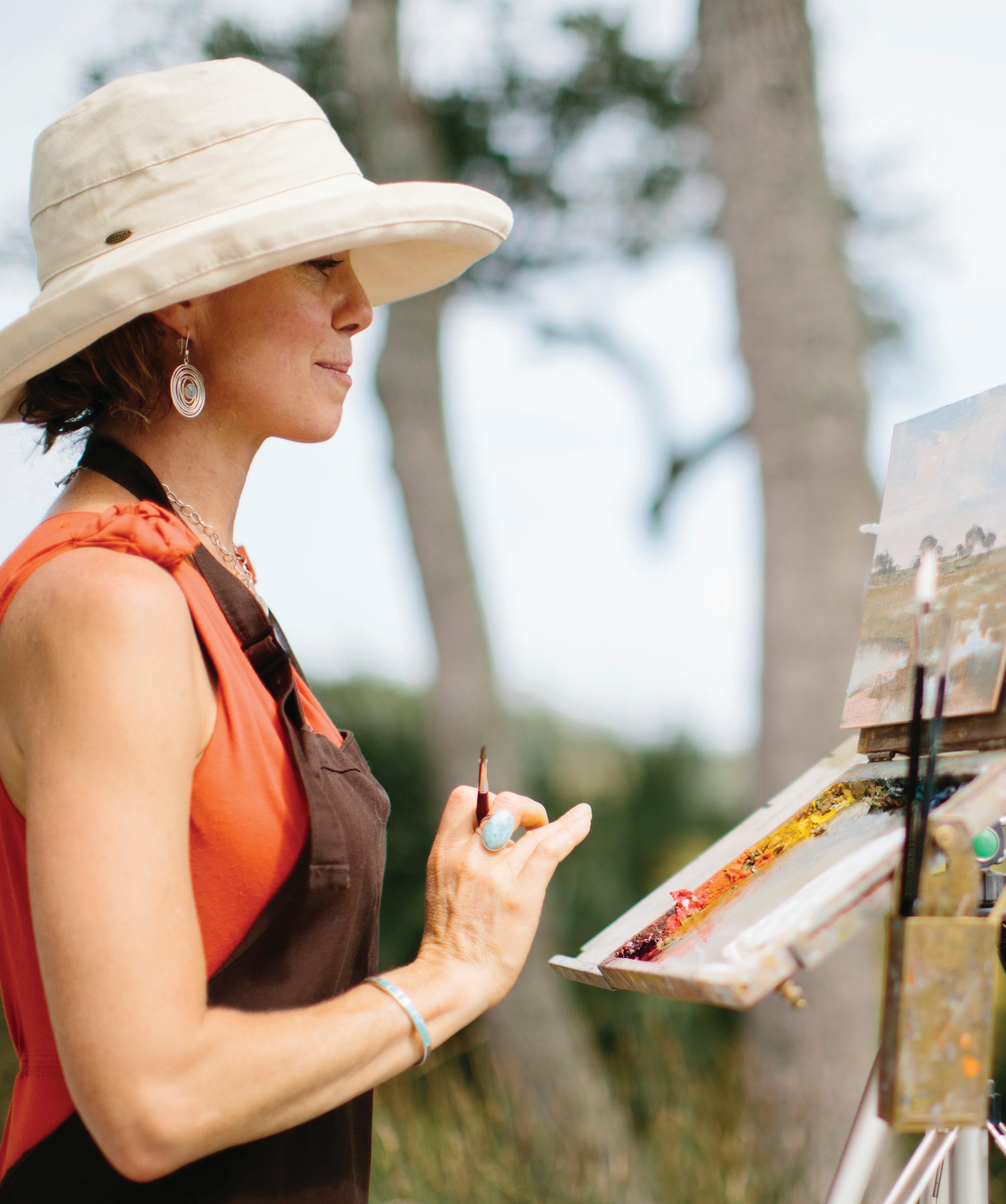
was for me. So I jumped in. That’s why I have this big, big smile!” Her smile is infectious. “I didn’t understand what the Lowcountry was until I came out here,” she says, gazing out at the marsh.
Turner’s work is something to be seen, emblematic of the wildlife art that defines SEWE as an organization. Her paintings of bears and horses, birds and elk, all have a characteristic grace, a certain dignity and inexplicable mystery. “Kathryn was an easy choice for our 2018 Featured Artist, as her work exudes beauty and captures the essence of the wildlife and landscapes she paints. It is a great joy to honor her,” says Natalie Henderson, SEWE Artist Curator. And that’s what makes SEWE so successful, so special—this emphasis on authenticity and a foundational devotion to wildlife and conservation.
Feedback from a microphone hushes the crowd that has gathered around the pool. Tom Colicchio takes the stage, sitting easily in a wicker chair and chatting about his life as a celebrity chef, his relationship to Kiawah and the Club, and his family. The audience is encouraged to ask questions and most want to know about this or that Top Chef contestant. He cuts the interview with a smile and a
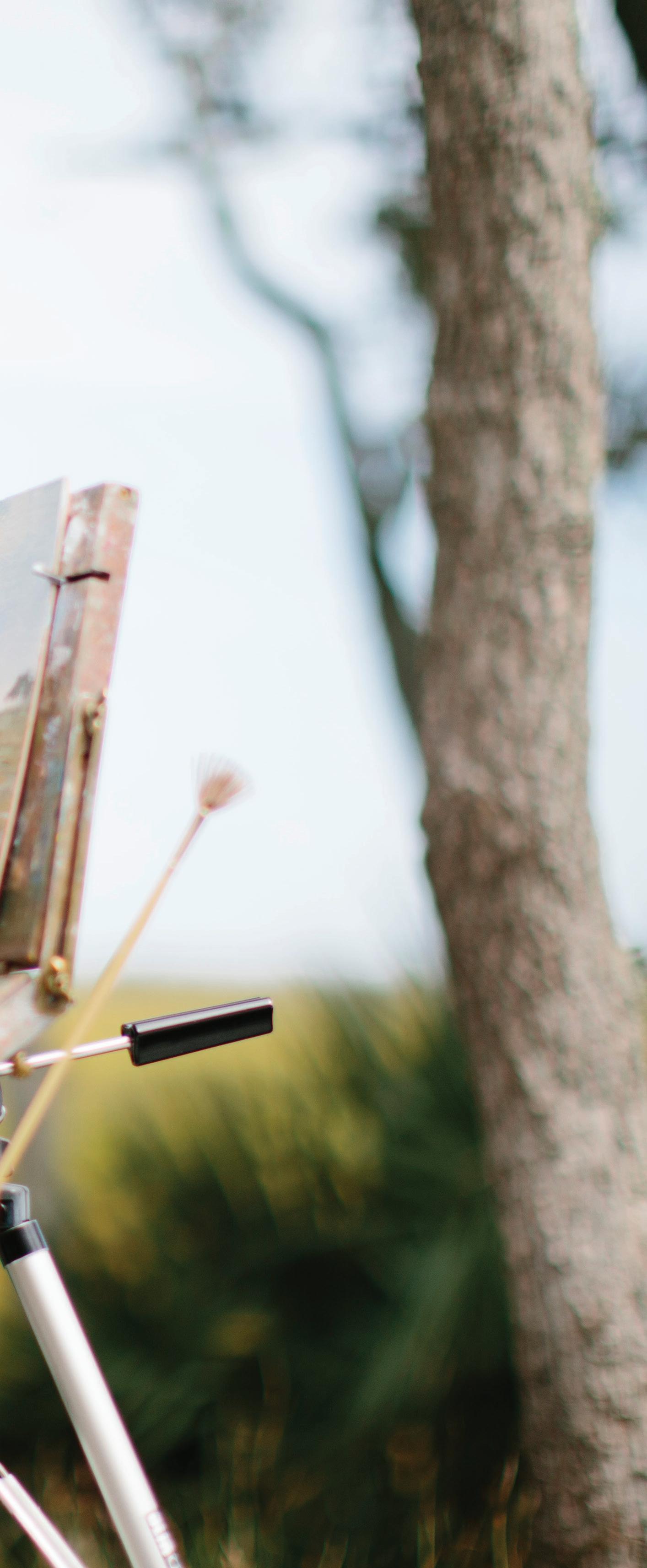
LEGENDS MAGAZINE 2018 NO 30 115
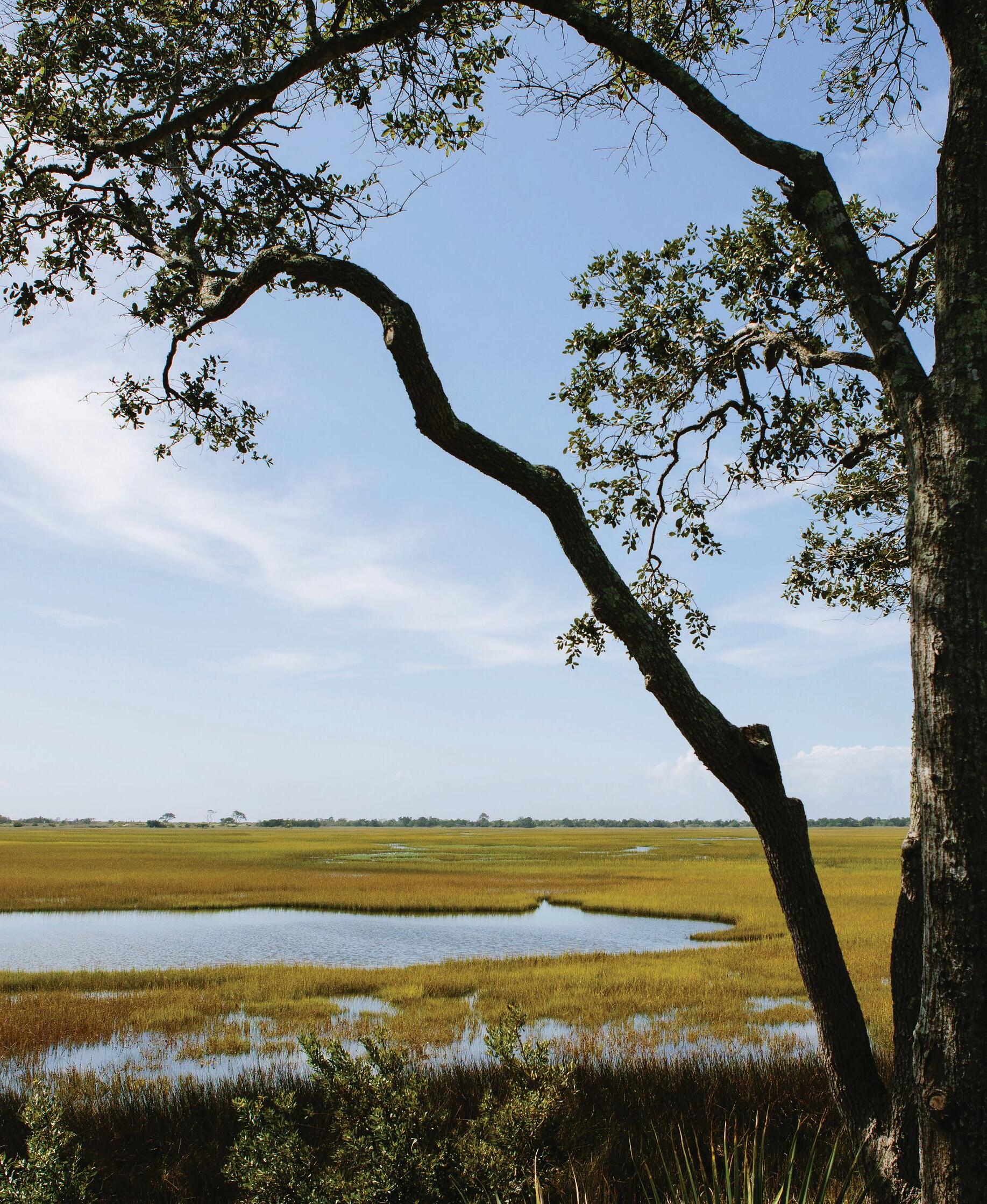
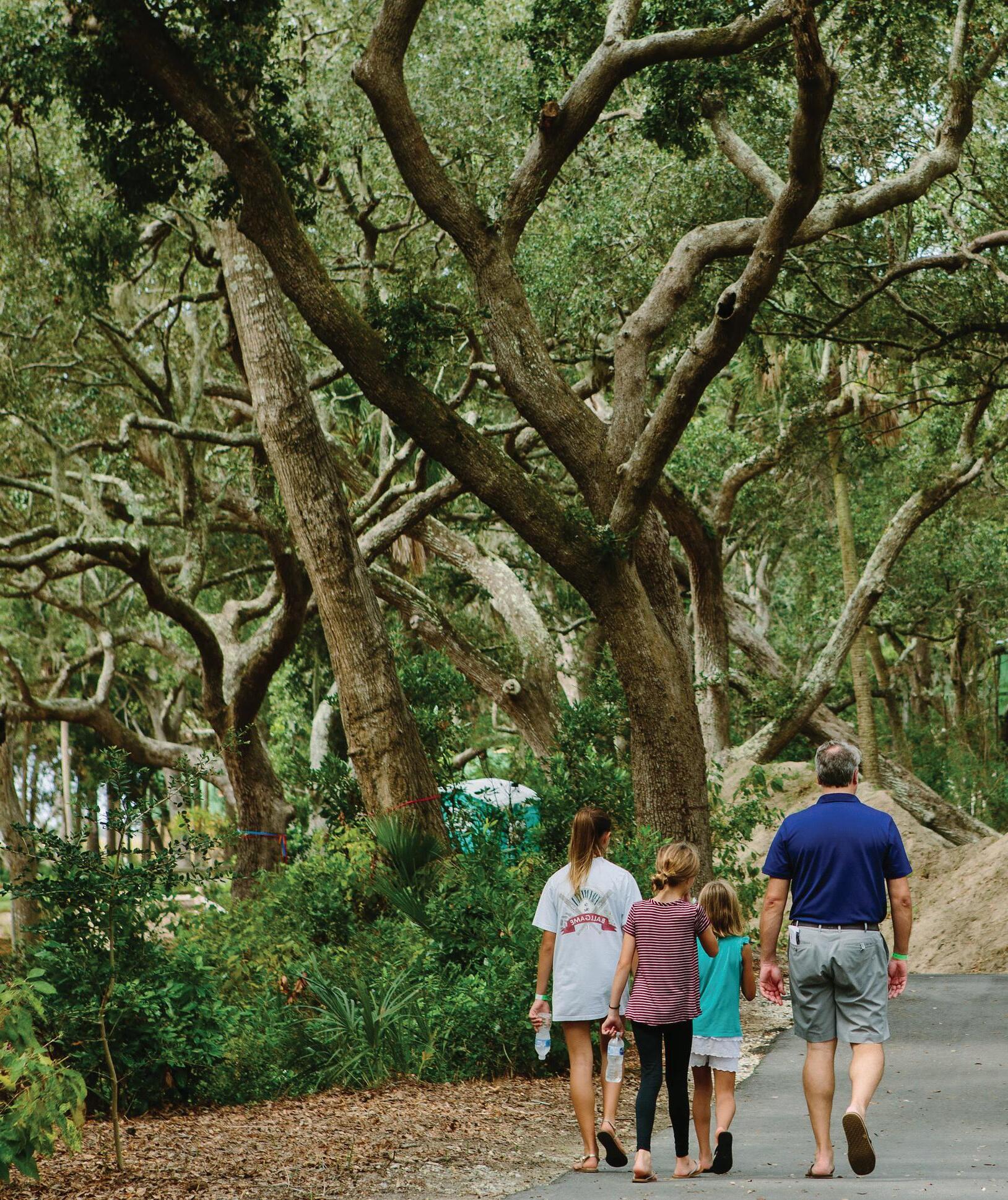
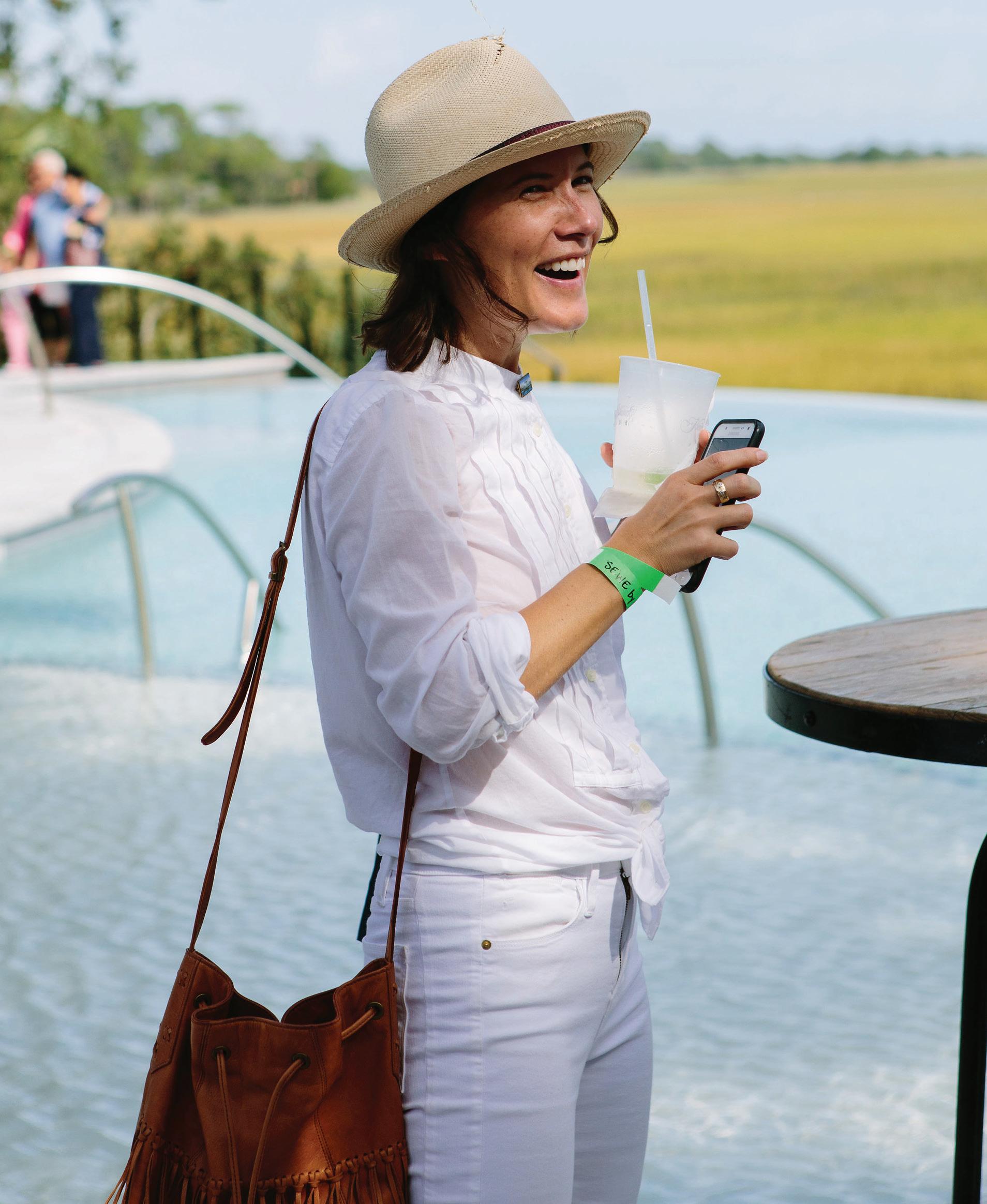



wave, announcing that he has to leave because he promised his son to go fishing for crawdads.
As the fall sunshine fades into the afternoon, the DockDogs® competition heats up. Jump after lofty jump, the dogs soar through the air. Some jump for height— snapping towards a rubber decoy suspended over the pool. Others leap vertically—well over ten feet across the water. The wheat-colored poodle from earlier in the day wins the Extreme Vertical at over seventeen feet. Kathryn Turner, who has abandoned her canvas and paints, stands at the edge of the vinyl tank, whooping and clapping as the dogs hit the water.
“SEWE hopes to stay engaged with the Kiawah Island Club,” adds Powell. “It’s a special place that brings people from all over the world, and we want to continue to show them our little piece of SEWE in Charleston.” — H.W.
LEGENDS MAGAZINE 2018 NO 30 119
A black lab lays asleep at the feet of a picnicking family, and a nervous Chesapeake Bay retriever whines on the leash, pulling towards the sheep.
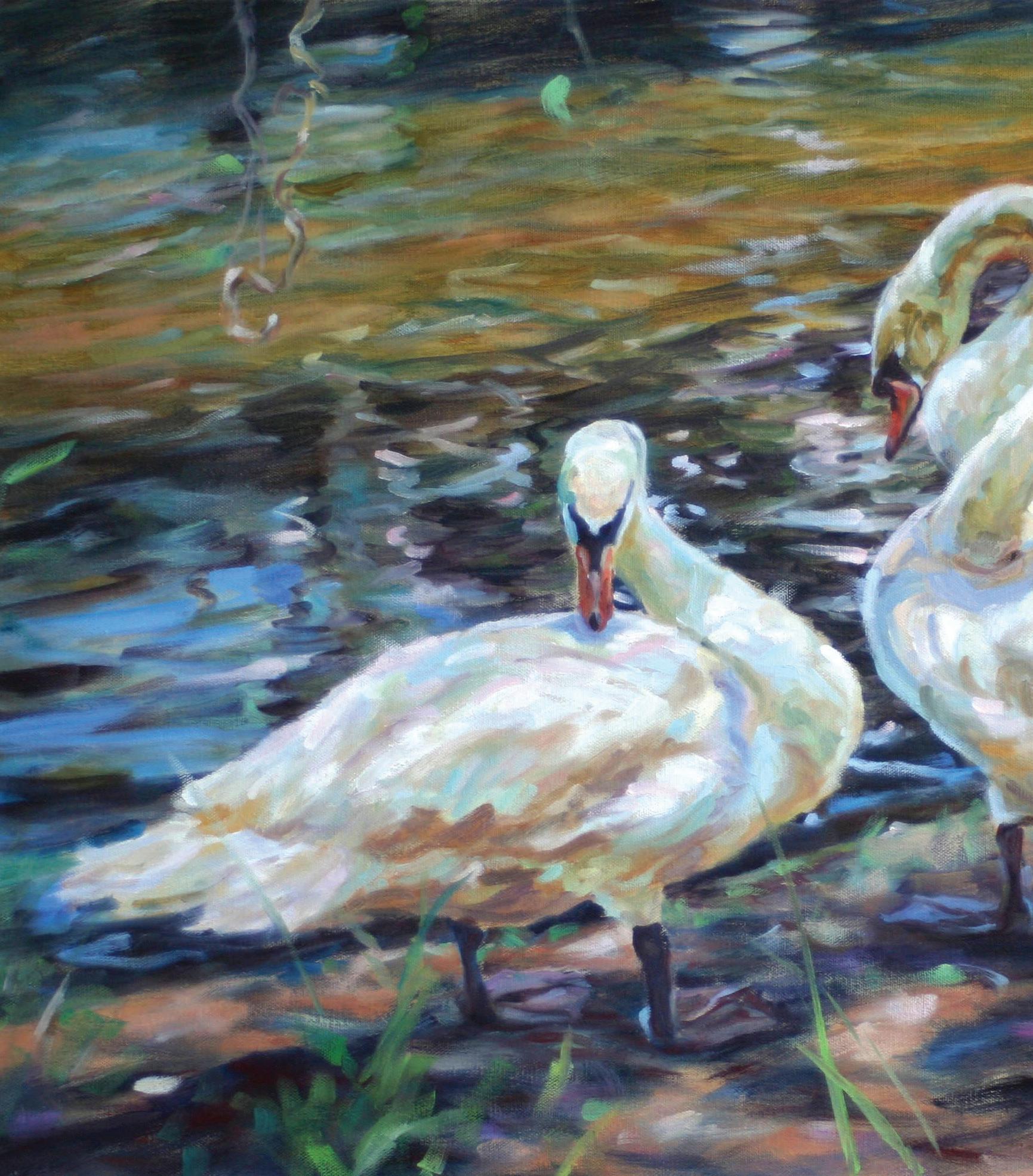
THE BATH | OIL | 20” X 30”
ARTIST IN RESIDENCE Peggy Watkins
 PHOTOGRAPHY by GATELY WILLIAMS
STORY by STEPHANIE HUNT
PHOTOGRAPHY by GATELY WILLIAMS
STORY by STEPHANIE HUNT

122 LEGENDS MAGAZINE 2018 NO 30
The tiniest dab of paint—that’s all artist Peggy Watkins needs. She applies it not with the brush bristles but with the tip of the handle. An artist’s confident hand, a quick pop of white—a bare speck really—and suddenly Dallas, via Dallas’s eyes, comes to life. “See? That bit of white catches the light. Eyes are easy, really. It’s all about catching the light coming in and coming out,” says Watkins, an acclaimed animal and wildlife painter and Kiawah’s fall artist-in-residence.
That would be Dallas, the adorable eight-month-old German wire-haired pointer, “a scruffy monkey,” claims her mama, Karen Krey, who’s delighted to watch how Dallas’s puppyish “jump de vivre” and over-the-top cuteness leap from a photograph and onto canvas, thanks to Watkins’s deft demonstration to a group of ten or so art enthusiasts.
The group sips coffee and samples scones as the morning sun washes over Voysey’s, as paint begins to wash over what only a short while ago was the artist’s blank canvas. Questions come up, and Watkins, ever relaxed and casual despite being watched as she works (giving new meaning to “performance art”), welcomes them. Why start with a yellow background?
“That’s a good question,” Watkins replies. “If I’m using cool colors in the foreground, I like to have a warm background; otherwise, the painting can feel pasty and flat, and the opposite is also true. It’s subtle,” she adds. “Plus, I don’t like starting with white.”
Never mind the white canvas, Watkins almost didn’t paint professionally at all. Her father was in the Navy and the family moved frequently, eventually settling in Alabama. She loved to draw as a child, and she dreamed of going to art school, but her father had more practical ideas. “He told me I could study business, teaching, or nursing, and so I graduated from Auburn University and worked as an accountant for twenty years,” she says. But while living and working in Atlanta, she began taking art classes, specifically oil painting, at the Atlanta College of Art at night, and discovered she still had a passion for drawing and painting and she had talent. “I took to it and eventually began working my way out of accounting,” says Watkins, who has painted professionally since 2003, full time for the last twelve years. “I’m a believer that what is meant for you always comes back around to you.”
LEGENDS MAGAZINE 2018 NO 30 123
See? That bit of white catches the light. Eyes are easy, really.
It’s all about catching the light coming in and coming out.
From the get-go, even as a young girl, Watkins’s subject matter tended toward the four-legged variety—both wild and domestic animals, like scruffy Dallas, as well as the landscape they roam. After she and her husband married, they honeymooned in Africa, and were so enchanted that they’ve since returned numerous times and now own a home in Zambia’s bush country. “I can’t really describe it, but there’s just something about animals that has always compelled me,” Watkins says, who was especially interested in painting lions and other big cats. “I love painting dogs, too, especially bird and hunting dogs, but there’s something about the intensity of a wild animal. You can really feel it, especially in a predatorprey situation.”
Watkins was selected as the Featured Artist at the Southeastern Wildlife Exposition (SEWE) in 2008, and her work hangs in the permanent collection of the Bennington Center for the Arts in Vermont, in the private collections of Ted Turner and Pebble Hill Plantation, and in the gun rooms of Holland & Holland, a company that makes fine sporting
guns. Largely due to the relationships developed with SEWE, she and her husband decided to move to Charleston in 2013. Today she paints at her Tradd Street home studio and shows her work at the Sportsman’s Gallery on King Street. And when she’s not painting, she enjoys honing her aim with sporting clays with the Charleston Annie Oakley Shooters, a group for women shooting arts enthusiasts that she founded along with members of the Kiawah Sporting Club.
But this particular morning, her aim zeros in on Dallas and the task at hand: capturing the pup’s spunky, tail-wagging essence in less than two hours. “To me a painting is less about ‘here is a dog’ than about creating an overall design within the painting. Shape is what creates energy and makes the eye want to look at it,” Watkins says. “I start with the face, the eyes, and then everything else needs to be integrated.” This, she explains, is really a matter of finding a balance between the painting’s “value relationships.” In other words, the color temperatures of warm and cool hues, light and dark, need to be in harmony.
124 LEGENDS MAGAZINE 2018 NO 30
There’s something about the intensity of a wild animal. You can really feel it, especially in a predator-prey situation.

LEGENDS MAGAZINE 2018 NO 30 125
IN THE PALMS | EXCERPT | OIL | 36” X 24”
Watkins refers to this as knowing her “rules,” but she’s also quite comfortable playing around with those rules, finding out how far she can bend them, learning as she goes. “After all, the beauty of oil is that you can paint right over it,” she laughs. Take Dallas’s tail, for example, a mere stroke of dark vertical energy across the top part of the canvas, but it’s not clearly defined. “I love lost and found edges, where the lines blur a little,” she says. “The viewer’s eye loves to find variety. It’s what moves the eye around the canvas.”
How do you know when a painting is finished? “When the truth is revealed,” Watkins answers. “I’m not being coy or woo-woo. That’s really it. I can just feel it,” she says. “It’s finished when I know that one more brush stroke isn’t going to add anything more to it.” — S.H.

126 LEGENDS MAGAZINE 2018 NO 30
I love lost and found edges, where the lines blur a little.

LEGENDS MAGAZINE 2018 NO 30 127 THE PRIZE | OIL | 18” X 24”

FISHER HOUSE

GOOD WORKS
Charleston
photography by Lindsey Shorter
In late 2012 Trux and Durbin Emerson were at a crossroads. They felt compelled to give back, to contribute to their country, and perhaps more specifically, to veterans. “We were just at a stage where we could take the time and effort to do something,” says Durbin. She sits with Trux in their Kiawah home, their Welsh terrier puppy, Rodie, snoozing at their feet.
It started as a golf tournament to raise money for veterans, which sounded simple enough. The Emersons enlisted Robbie Crawford, general manager at the River Course Clubhouse, to speak with the Kiawah Partners on their behalf. They hoped to host the tournament at the River Course. “They said yes way faster than we expected,” remembers Durbin. Trux laughs. “And it scared the bejesus out of us!”
That set things in motion. They enlisted the help of a few passionate Kiawah residents and set to work. In conversations about the upcoming tournament, Crawford suggested the Emersons elect an honorary board member, and he recommended General James Livingston. “Many, many people have now heard the story of our ten-million-dollar sandwich with General Livingston,” laughs Durbin.
They met in October 2012 at Hominy Grill in downtown Charleston. General Livingston brought Tonya Lobbestael, Director of Public Affairs at the Ralph H. Johnson VA Medical Center, and the two made a huge ask. The VA was in desperate need for a Fisher House-type facility, a place where the families of veterans could stay while their loved ones were in the hospital. “He asked if we would be willing to do something like that. We didn’t even know what a Fisher House was!” As it turned out, Fisher Houses must be built on federal land, and the Charleston VA didn’t even have room for a new parking structure, let alone a spare acre for this type of facility. In other words, the Emersons were asked to be the
private solution to a public need. They needed to buy land and build a house, all within walking distance of the hospital. “We naively said, Sure, why not?” remembers Trux. “We’ve built a house before!”
Over the course of that one momentous lunch, the Emersons went from a $50,000 raise to a $10 million raise. “We walked out of that restaurant with our knees knocking. What had we just committed ourselves to? We had never done anything remotely like this in our lives! Not even close.” But they dove into fundraising, looking for property, and planning the golf tournament. By August 2013 they had established 501(c)(3) status, and in September they hosted the tournament at the River Course. “It was a phenomenal success,” says Trux. We had set the goal at $50,000, but in that single day we raised over $160,000. “It was especially amazing how the Kiawah and Seabrook community responded,” says Durbin. “None of this would have happened, I don’t think, if not for the success of that first golf tournament.”
Since the lunch with General Livingston earlier that year, the Emersons had organized around a Fisher House-type concept. The board initially named it the Charleston Harbor House, and in conversation with potential donors and press, the Emersons had compared it directly to the Fisher House model. In January of 2013 Durbin received a call from the president of the Fisher House Foundation, David Coker. “I thought, Oh, they’re going to sue us, cease and desist!” she laughs. “But when I answered the phone, this voice started speaking—sometimes you can just feel how wonderful a person is when you hear their voice and the way they talk to you.” Coker made the Emersons an offer. If they would identify a piece of property and get it approved by Veterans
130 LEGENDS MAGAZINE 2018 NO 30 GOOD WORKS
We walked out of that restaurant with our knees knocking. What have we just committed ourselves to? We had never done anything remotely like this in our lives! —Trux Emerson


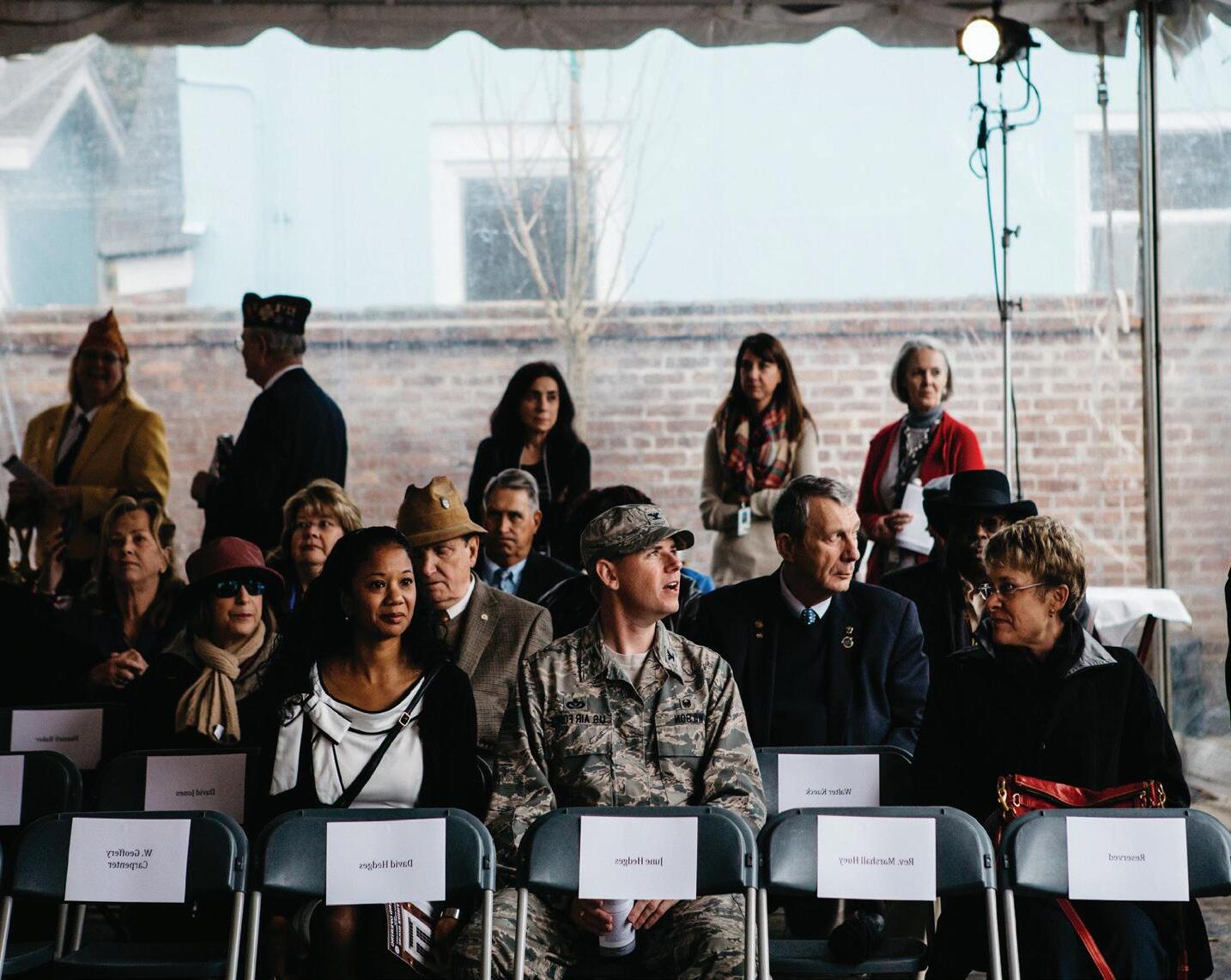


GOOD WORKS

Affairs, then the Fisher House Foundation would build the house. At the time, it was a six-million-dollar gift. “I mean how could we even say thank you?” marvels Trux.
When they found the property at 150 Wentworth Street, they had only $300,000 in the bank, but the property was perfect. The odds of finding an acre in downtown Charleston were slim enough, but the task was further complicated by the requirement that any existing structure needed to be torn down—a tall order in an historic district with ironclad preservation codes. And so the Fisher House Foundation stepped up with another momentous gift—a loan to cover the purchase of the land. Another $3 million.
With the funds from the Fisher House Foundation in place, the momentum continued to build. The Fisher House Charleston project received millions of dollars from donors, 40 percent of which came from the Kiawah and Seabrook communities. In 2014 the Shipley family, who have a home on Kiawah, contributed an additional 30 percent. “After we got the first gift from the Shipley Foundation, we went up [to Boston] and met with the executive director, Julia Satti Cosentino,” says Durbin thoughtfully. “She’s somebody that I think will be a part of our lives forever.” In January 2017, thanks to thousands of individual, church, community, military, fraternal, association, corporate, and foundation donations, Fisher House Charleston repaid $3 million plus interest to the Fisher House Foundation, and in the Fall of 2017 the building was complete.
“The learning curve for us throughout this whole thing was incredibly steep because there was so much we didn’t know when we started,” says Durbin. “To say that it’s been an education is an understatement.” The Emersons are five years out from that fateful lunch with General Livingston in 2012. The dedication of Fisher House Charleston is days away. Ken
Fisher, CEO of the Fisher House Foundation; Dave Coker, president of the Fisher House Foundation; John Tecklenburg, mayor of Charleston; and Scott Isaacks, director and CEO of the Ralph H. Johnson VA Medical Center, are among many of the notable guests to attend. The house will be open for a grand, inaugural tour. “It still hasn’t really hit us,” says Trux.
Fisher House Charleston
The Fisher House Foundation builds comfort homes where military and veterans’ families can stay for free, for as long as they need, while their loved one is in the hospital. In downtown Charleston, where lodging is upwards of two and three hundred dollars per night, many family members sleep in hospital room chairs, or in their cars, a considerable hardship in addition to the stress of hospital stays. The Fisher House provides comfortable, free lodging within walking distance to the hospital. The Volunteer Services Office estimates that the Charleston Fisher House will run between 95 percent and 100 percent occupancy, 365 days a year.
“In today’s dollars, if you just said the rooms are worth two hundred bucks a night—you do the math—that saves these families over a million dollars in the first year!” explains Trux.
The Ralph H. Johnson VA Medical Center serves twentytwo coastal counties, from Myrtle Beach all the way to Hinesville, Georgia. It has close partnerships with both the Medical University of South Carolina and Roper St. Francis. The VA Medical Center often engages specialists and surgeons from neighboring hospitals, and these partnerships make procedures possible that might not be available to veterans otherwise.
“We were lucky,” says Durbin. “We were really lucky. You look at the Fisher House logo—those hands are divine!” — H.W.
LEGENDS MAGAZINE 2018 NO 30 133
GOOD WORKS
YOUR BRIDGE TO THE GLOBAL MARKET
Lawyers in our Charleston office have provided trusted legal counsel to local, national, and multinational companies for decades. Backed by a fully integrated global platform, our Charleston lawyers offer unparalleled depth and breadth of experience to businesses and the people who own and manage them.

K&L Gates LLP. Global legal counsel here in Charleston and across five continents. Learn more at klgates.com.
Matt Norton, Partner 134 Meeting Street, Suite 500 Charleston, South Carolina T: +1.843.579.5634 matt.norton@klgates.com
Austin Beijing Berlin Boston Brisbane Brussels Charleston Charlotte Chicago Dallas Doha Dubai FortWorth Frankfurt Harrisburg HongKong Houston London LosAngeles Melbourne Miami Milan Munich Newark NewYork OrangeCounty PaloAlto Paris Perth Pittsburgh Portland Raleigh ResearchTrianglePark SanFrancisco SãoPaulo Seattle Seoul Shanghai Singapore Sydney Taipei Tokyo Warsaw Washington,D.C. Wilmington

www.knightresidentialgroup.com KIAWAH ISLAND | CHARLOTTE 704.733.9566


COUGAR POINT CLUBHOUSE
STORY by BRYAN HUNTER
When Cougar Point golf course reopened to rave reviews last October after being closed for ten months of renovations, it signaled the final installment in a series of refurbishments for all of Kiawah Island Golf Resort’s five championship courses. But any golfers who’ve been fortunate enough to recently experience Cougar Point leave knowing there’s one element missing: a clubhouse befitting Gary Player’s enduringly brilliant and newly spiffed-up design.
Not to worry. On a prominent live oak-graced knoll overlooking the 18th green and fairway, Kiawah Island Golf Resort has broken ground and begun construction on a new clubhouse. The building, which signals the revitalization of West Beach (more to come on that), was designed by Robert
A. M. Stern Architects.
That name should ring a bell. Stern is the same firm that designed the elegant Ocean Course clubhouse. Robert Stern established the firm in 1977, with headquarters in New York and New Haven, and instilled an architectural philosophy that strongly takes its cues from classical forms adapted to local needs. In the process he became one of the greatest influences on what has been termed the “new classicism” school of architecture.
This vernacular approach can be clearly seen in the highly symmetrical design for the new Cougar Clubhouse as it will feel very rooted to its place in the South Carolina Lowcountry. The design calls for a well-proportioned story-and-a-half rectangular central block adorned with wide verandas supported by gleaming white columns and surmounted by a
railed gallery. The roofline is punctuated by three dormers and flanking brick chimneys. Centrally placed on the roof’s ridgeline is a looming rectangular cupola with lantern windows.
While the entry façade is traditionally clad in white clapboard pierced by tall paned windows equipped with louvered shutters, the walls on the opposite side, facing the golf course and driving range, are filled with enormous plate glass windows to admit light and soak in the dramatic views, a brilliant riff on a traditional Deep South classical revival cottage.
In a refined touch that frequently elevated the aesthetic of the historic buildings this one draws inspiration from, the central building is flanked on each side by two matching wings with bold Palladian windows on the entry side and deep colonnaded porticoes on the course side. The overall effect is the charmingly added-on appearance so often encountered in centuries-old Southern country houses.
Guests will enter a grand hall-like lobby the width of the whole central block. Cozy seating areas scattered throughout, some huddled around the hearth, visually draw down the scale of the room, while at the same time the wall of glass brings in the phenomenal views of the golf course and helps relate interior to exterior spaces. The wings will contain a full-service pro shop, a lounge, a restaurant that will be an elevated riff on the sports bar theme (complete with comfortable seating and numerous TVs for catching your favorite televised sporting events), banquet space, and locker rooms.
138 LEGENDS MAGAZINE 2018 NO 30
A stunning facility to serve the freshly renovated course signals the revitalization of West Beach and a stirring new chapter for Kiawah Island Golf Resort.
ABOVE: THE OPEN SPACE OF THE ENTRY HALL, FEATURING PLATE GLASS WINDOWS THAT BRING THE OUTDOOR GRANDEUR OF THE COURSE INSIDE, IS MADE MORE INTIMATE THROUGH WELL-DEFINED, RELAXED SEATING AREAS SCATTERED THROUGHOUT THE ROOM.
PREVIOUS SPREAD: THE NEW COUGAR POINT CLUBHOUSE WILL OCCUPY A PROMINENT KNOLL ABOVE THE 18TH GREEN THAT PROVIDES A COMMANDING VIEW DOWN THE PAR-FOUR FINISHING HOLE.
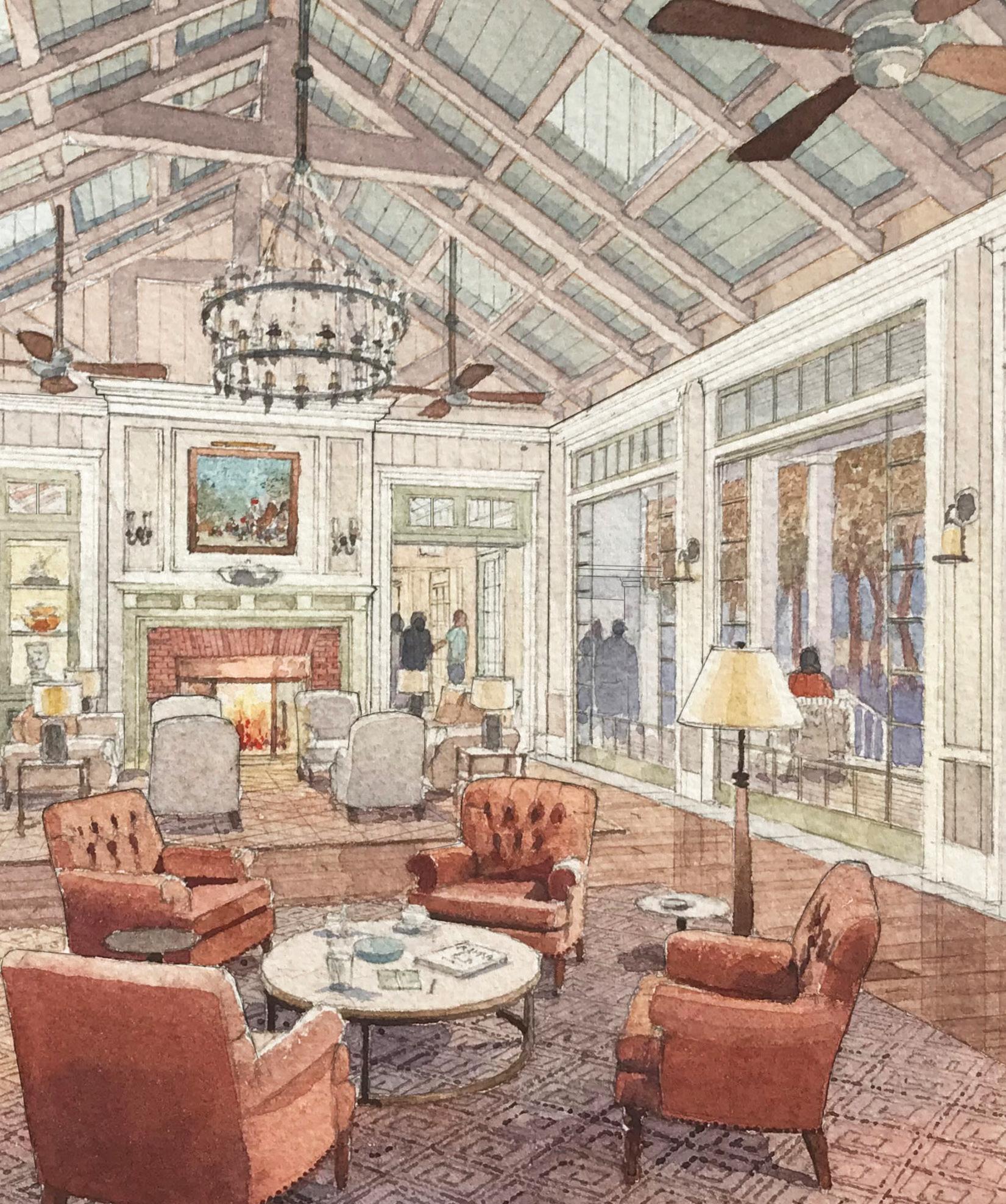
LEGENDS MAGAZINE 2018 NO 30 139
Twenty-five and Counting
The current owners of Kiawah Island Golf Resort acquired the property in 1993. The resort has witnessed remarkable improvements during the past twenty-five years of their stewardship, most notably the opening of The Sanctuary; the addition of a stunning new clubhouse at The Ocean Course; hosting the 2012 PGA Championship; and, of course, the complete renovation of all five of the resort’s championship golf courses.
While the new clubhouse at Cougar Point is newsworthy in its own right, in a larger scope breaking ground on the clubhouse also launches an exciting new chapter in Kiawah Island Golf Resort’s proud history, properly celebrating the past twenty-five years while also signaling the owners’ commitment to the resort well into the future.
The clubhouse at Cougar Point is the first installment in a cluster of new development, all designed by Stern, that will revitalize the West Beach area. While full details have not yet been announced, keep an eye out for regular updates about the exciting new vision for West Beach.
In the East Beach area, all tennis operations will be gathered in one place at the Roy Barth Tennis Center as the West Beach Tennis complex closes to make way for the new vision there. The Roy Barth Tennis Center gains ten new Har-
Tru HydroCourts in addition to the original nine Har-Tru and three hard courts, and all existing courts will be resurfaced. This will bring a total of twenty-two courts in one central locale along with the fully automated practice alley. Tennis guests will also delight in the addition of locker and shower facilities to the clubhouse.
For those with wedding bells in the future, Kiawah Island Golf Resort expands its wedding ceremony venue options with the addition of a stunning new wedding chapel attached to the east wing of The Sanctuary. The chapel is designed by local architectural firm SMHa.

Elsewhere in East Beach, Night Heron Park will be completely reimagined with a new (and much larger) pavilion, a new nature center with twice the current interpretive space, new dining options, a new fitness center featuring a threethousand-square-foot exercise room and a seven-hundredsquare-foot yoga studio, more classrooms, and a multipurpose space for favorite activities such as art classes and nature programs.
All of these new projects—and more yet to be announced— will be completed by late 2020, in time for the 2021 PGA Championship. It is an exciting and ambitious series of developments that will greatly enhance not only the resort experience but also overall life on the island. — B.H.
140 LEGENDS MAGAZINE 2018 NO 30
ABOVE: ROBERT A. M. STERN ARCHITECTS DREW INSPIRATION FROM HISTORIC SOUTHERN MANSIONS THAT INCORPORATED DISTINCTIVE CLASSICAL ELEMENTS—STRICT SYMMETRY, PERFECTLY SCALED PROPORTIONS, COLUMNED VERANDAHS, PALLADIAN WINDOWS, AND A DOMINANT CUPOLA.

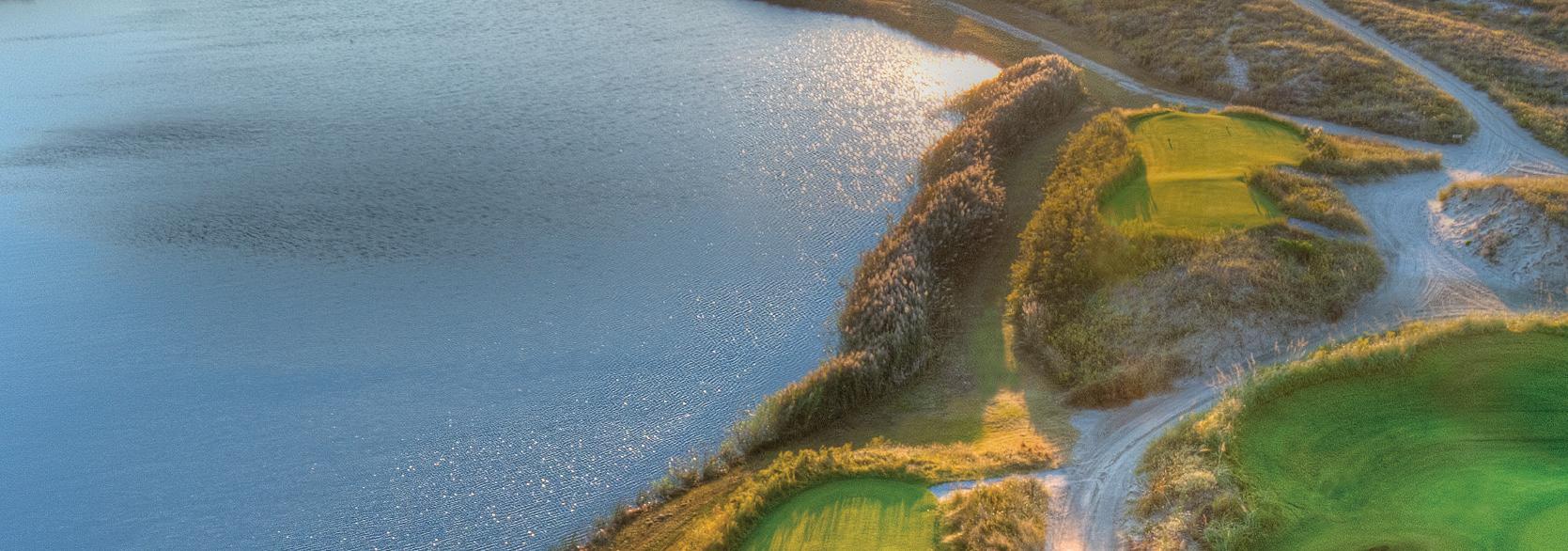
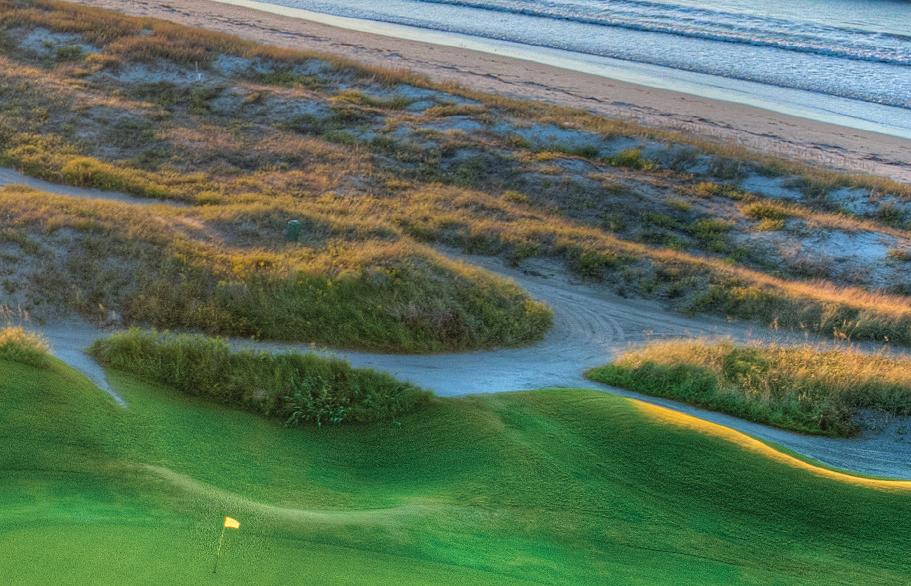
.. • kiawahgolf.com Win THE TRIP OF A LIFETIME! Enter Today at NaturallyKiawah.com ALWAYS REFINING OUR GAME It Comes Naturally. 5 GOLF COURSES 3 POOL COMPLEXES SPA 10-MILE BEACH TENNIS VILLAS THE SANCTUARY Proud Host of the 2021 PGA Championship
Pete Dye reimagines the iconic Ocean Course in preparation for the PGA Championship
Oak Point undergoes a redesign to become a shotmaker’s dream
Tom Fazio leads an extensive renovation of Osprey Point
Jack Nicklaus Design reworks Turtle Point, which reopens to rave reviews
Cougar Point gets a remodel by Gary Player Design to heighten the experience

Insider’s Corner
We sat down with sales executives to discuss what they know best. Ellen Walkley is in her twenty-fifth year of selling real estate on Kiawah Island. Read about her philanthropic endeavors, making new friends, and her love of the beach.
KL I hear you’ve lived on Kiawah a long time!
Yes, I live on the Island. I am in my twenty-fifth year of selling for Kiawah Island Real Estate—a long time! The moment we moved to Charleston in 1981, we knew there would be a day we would move to Kiawah. I came to sell in 1993, and then we started to build our house shortly thereafter. We moved here in 1995.
KL So you’ve really seen the Island evolve. How does it match up to the original master plan?
EW We saw all the best happen! And really, every bit of news about the development of the Island we got was better. There was never a time when we said, Ahh, I wish that hadn’t happened. We kept all the promises and I never felt compromised. And now it’s turned out to be magnificent. That makes it easy to represent.
KL Tell me about your job.
EW
I think the reason I so love what I do is how seamless my life is. I don’t know where work ends and the fun begins. My clients become my friends, and my friends become my clients! It’s so easy to make a life at Kiawah. That’s part of the fun for me when I sell to people— helping them make a life here. We really become family. We make sure nobody is alone for the holidays, and we look after each other. I think that’s probably the best-kept secret about Kiawah: the people. It’s a very contagious atmosphere of inclusiveness. We make new friends every year.
KL You really love what you do, don’t you?
EW EW
I get to sell my own life! I get to sell something so personal! And I think there’s a natural enthusiasm that really shows. When you drive through the gates, your
blood pressure goes down. It is paradise. I notice when we go to dinner with friends that none of us take it for granted. We continue to remark how wonderful our lives are, how wonderful Kiawah is. I think that’s fairly unusual. The love affair continues!
KL I understand you started Arts, etc.
EW In 2001 I started Arts, etc. with some friends. Now we have 170 women! The concept is [to host] a monthly luncheon and Art and House Tour. We donate all of the money we raise to the greater community. And now the mission is primarily to provide arts [education] and to encourage creativity for the children of Johns Island. We’re going on our second million—we’ve already donated one million to the surrounding area. Really, so many people on Kiawah want to make a difference. It’s such a generous, philanthropic population.
KL What do you think is the best selling point of the Island?
EW The natural beauty, for sure. And the beach! I don’t know of a more magnificent beach. When prospective buyers try to imagine themselves here, I show them pieces of my life, and they can start to see that the lifestyle could be theirs too. That’s very helpful. We have always enjoyed [meeting] new people and including them in what we do. So people immediately start to feel at home. If you think about it, everybody is leaving behind a life. So it’s my mission to help them make a life here. And that’s fun for me, because I did it too!
KL So you highlight the natural beauty of Kiawah?
EW I honestly don’t try to sell. I just let the Island speak for itself. The real fun is to meet people and share my Island with them.
LEGENDS MAGAZINE 2018 NO 30 143
PHOTO BY OLIVIA RAE JAMES

Insider’s Corner
As resident of Kiawah Island and a sales executive at Kiawah Island Real Estate for thirty-five years, Gordon Hillock has seen the careful and deliberate execution of a community vision.
KL How long have you been on Kiawah?
We moved to the Island in March of 1979.
KL What was it like back then?
GH It was very wild! There were wild horses on the Island, and most of the roads were dirt roads, old logging trails. The majority of the Island was native maritime forest. Everything we were selling was mostly on paper—a dream. We were working from a master plan that we all hoped would come to fruition. And in fact, it turned out better than we thought.
KL What were some of the defining elements of the plan?
We limited the number of properties that could be built on Kiawah. I think that is one of the things I am most proud of, that the Island is preserved and protected for future generations and that we haven’t succumbed to the temptation to overdevelop a good thing. There are plenty of examples up and down the East Coast, and Kiawah is the exception. Through the years we developed the Island responsibly. There was a lot of luck along the way.
KL What is your favorite thing to tell your clients?
Kiawah is the last of the great barrier reef island communities that can ever be developed. We learned what to do right and what to avoid from other coastal communities. Couple that with our proximity to Charleston and you’ve got a pretty complete package.
KL And building a house on Kiawah is a careful process?
The Architectural Review Board’s mantra is “Designing With Nature.” That’s what they do! We want to add to
what Mother Nature gave us, improve upon what we started with. The goal is to have a unique end result that complements what was already here.
KL Tell me about the Kiawah community.
GH The Kiawah community is a collection of people from literally all over the world. One of the things my clients experience right away is how friendly everyone is here. I think it’s because all of us are from somewhere else. So when we come to Kiawah and become part of the community, we’re all eager to make new connections and new friendships. As a result, Kiawah is a very welcoming community—a community of people who have specifically chosen this lifestyle. They tend to be very happy individuals.
KL What do you love about the Island?
GH I love the natural beauty, the wildlife that has flourished on the Island. There are more deer, bobcats, and birdlife now than ever before! They feel protected. I look out of my office window every afternoon around four o’clock and see the same eight deer. And you can walk right up to them! It’s really very special.
KL And your son also works on Kiawah?
GH Yes, my youngest. He’s a licensed captain for the Kiawah Island Club and does the eco tours, sunset cruises, and fishing charters. So, of course, he’s on the water every day. He’s an animal whisperer! He has a pod of dolphins who recognize him and come right up to the boat.
KL Wow. Kiawah has been good to you!
GH People ask me when I’m going to retire, and I say, Why would I want to retire from something I love to do and look forward to doing every day?
LEGENDS MAGAZINE 2018 NO 30 145
GH GH GH
PHOTO BY MELISSA TOMS

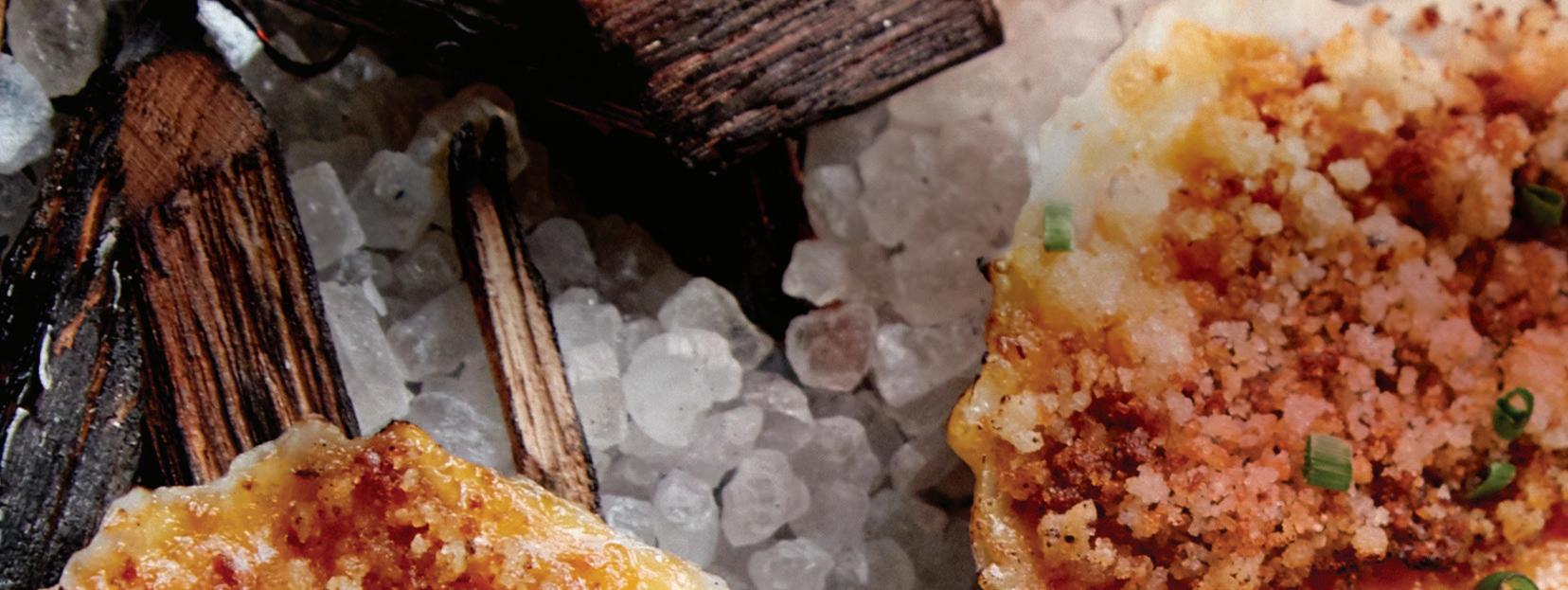
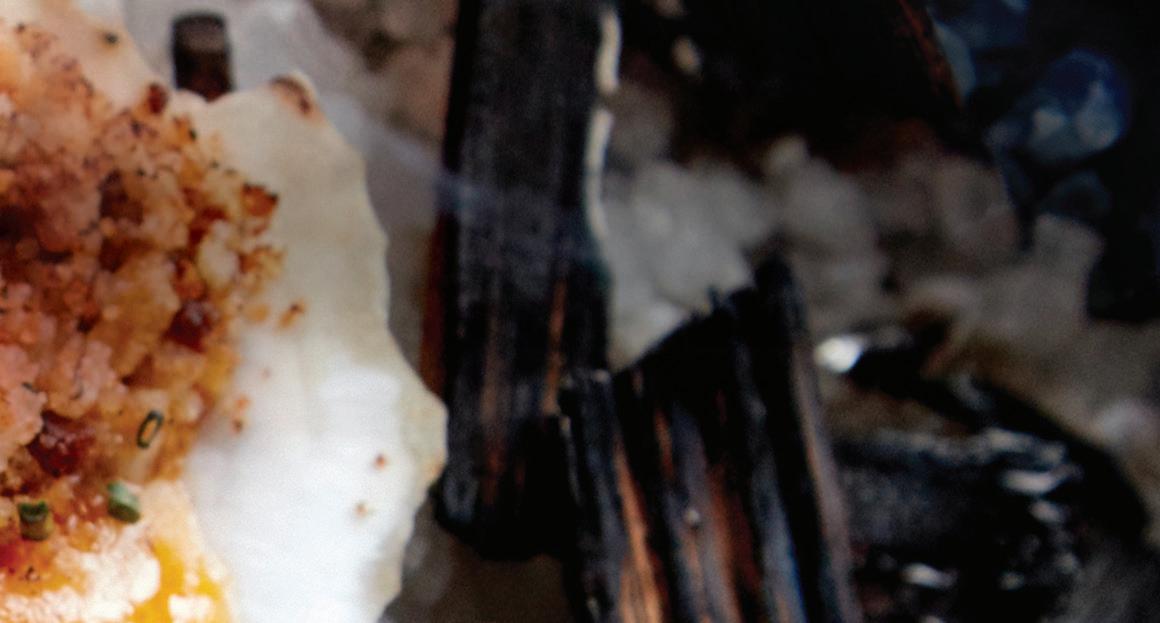
.. • kiawahdining.com Win THE TRIP OF A LIFETIME! Enter Today at NaturallyKiawah.com PURELY BLISSFUL INDULGENCE It Comes Naturally. 5 GOLF COURSES 3 POOL COMPLEXES SPA 10-MILE BEACH TENNIS VILLAS THE SANCTUARY Proud Host of the 2021 PGA Championship
The Best of the Rockies
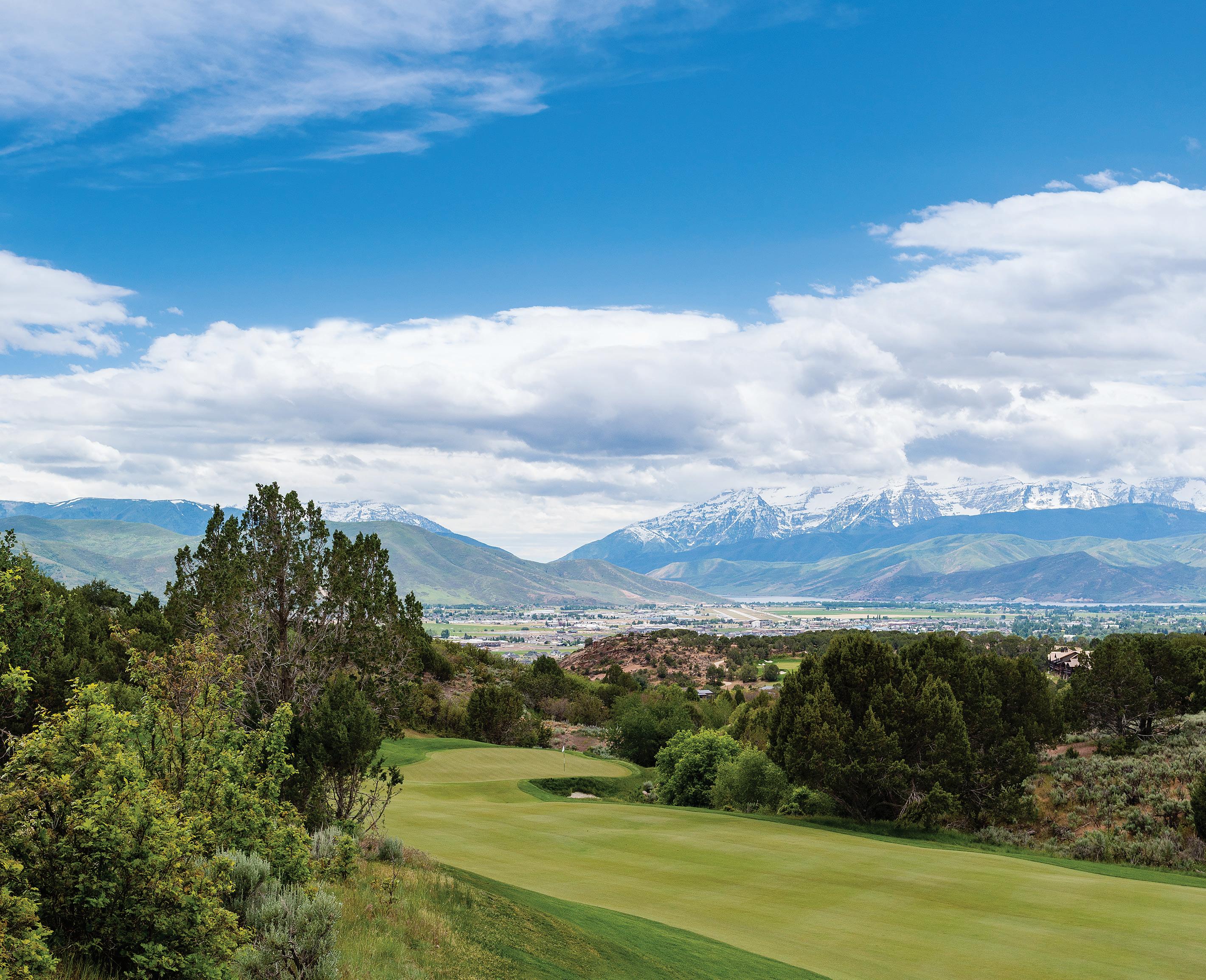
Exclusively Brokered by Red Ledges Realty, LLC. Obtain the Property Report required by federal law and read it before signing anything. No federal agency has judged the merits or value, if any, of this property. All descriptions, depictions, and renderings are provided solely for illustrative purpose and are subject to change. ©2018 Red Ledges Land Development, Inc. Golf • Ski • Tennis • Equestrian • Wellness PARK CITY • HEBER VALLEY 877.733.5334 • RedLedges.com With luxury residences situated minutes from Park City and Heber Valley, Utah, Red Ledges stands at the threshold of outdoor adventure on a grand scale. Hike, bike, kayak, fish, ride – or golf on a Golf Magazine “Best New Private Course,” or ski where Olympians competed in 2002 – in and around a private landscape of ridges, valleys, and mountain views. Traveling here is easy. Buying here is even easier. Join the families building their dream getaway in the most successful private community in the Park City region.
WITH AN EASIER CLIMB As the Rocky Mountains’ premier four-season private community, Red Ledges offers the ideal balance of convenience, privacy, amenities, and a lifestyle to engage the whole family.
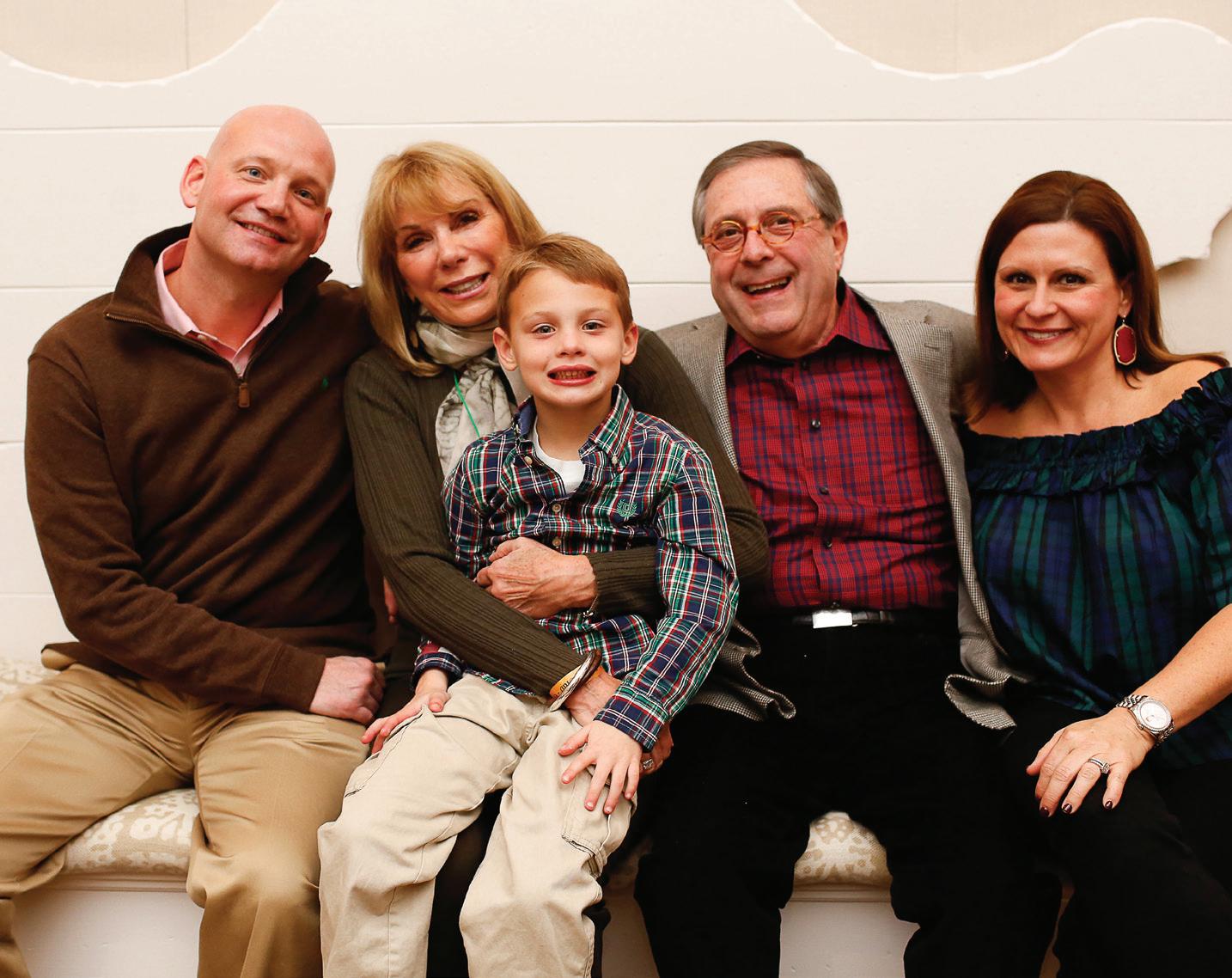



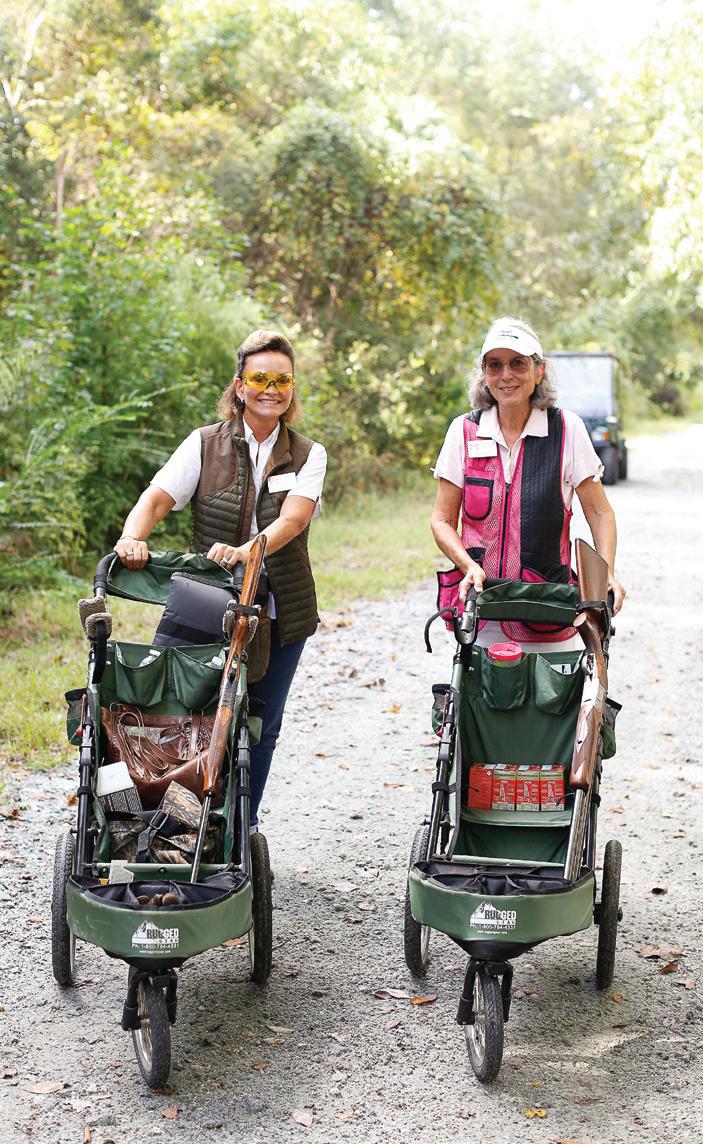

FALL MEMBER MINGLE FALL MEMBER MINGLE NOVEMBERFEST TURKEY TROT
ANNIE OAKLEY SHOOTERS ANNIE OAKLEY SHOOTERS
KIAWAH
Throughout the year, Kiawah hosts dozens of soirees, outings, and activities. It’s been a fantastic Fall and Winter!

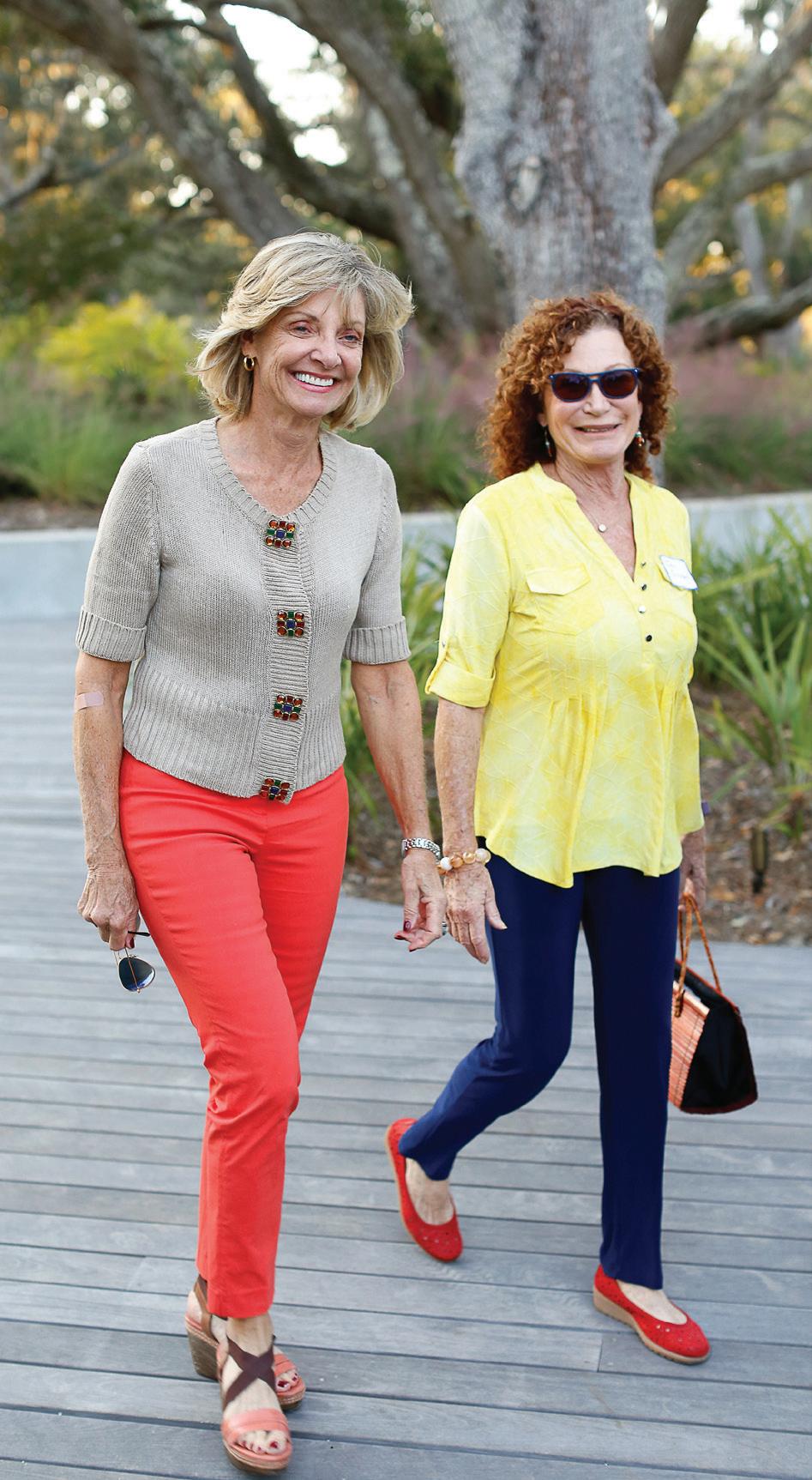

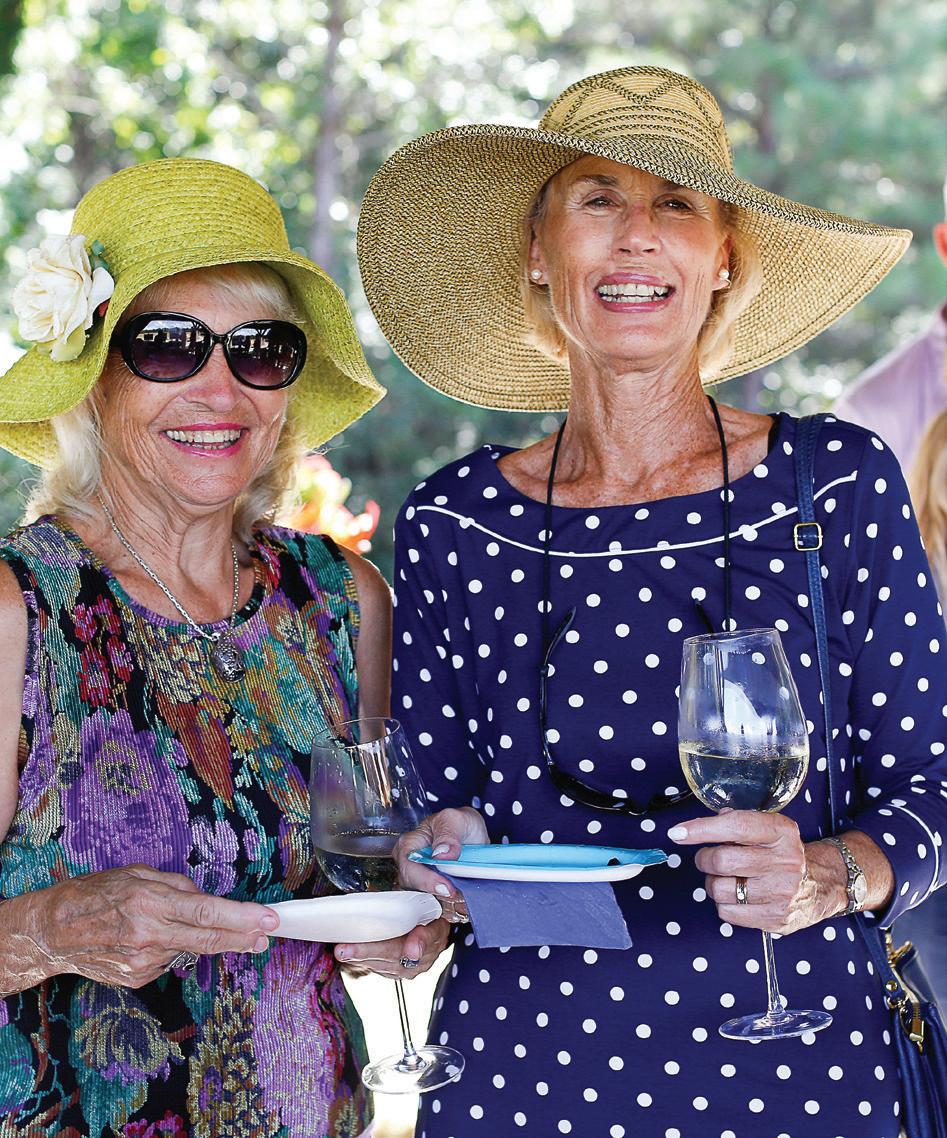
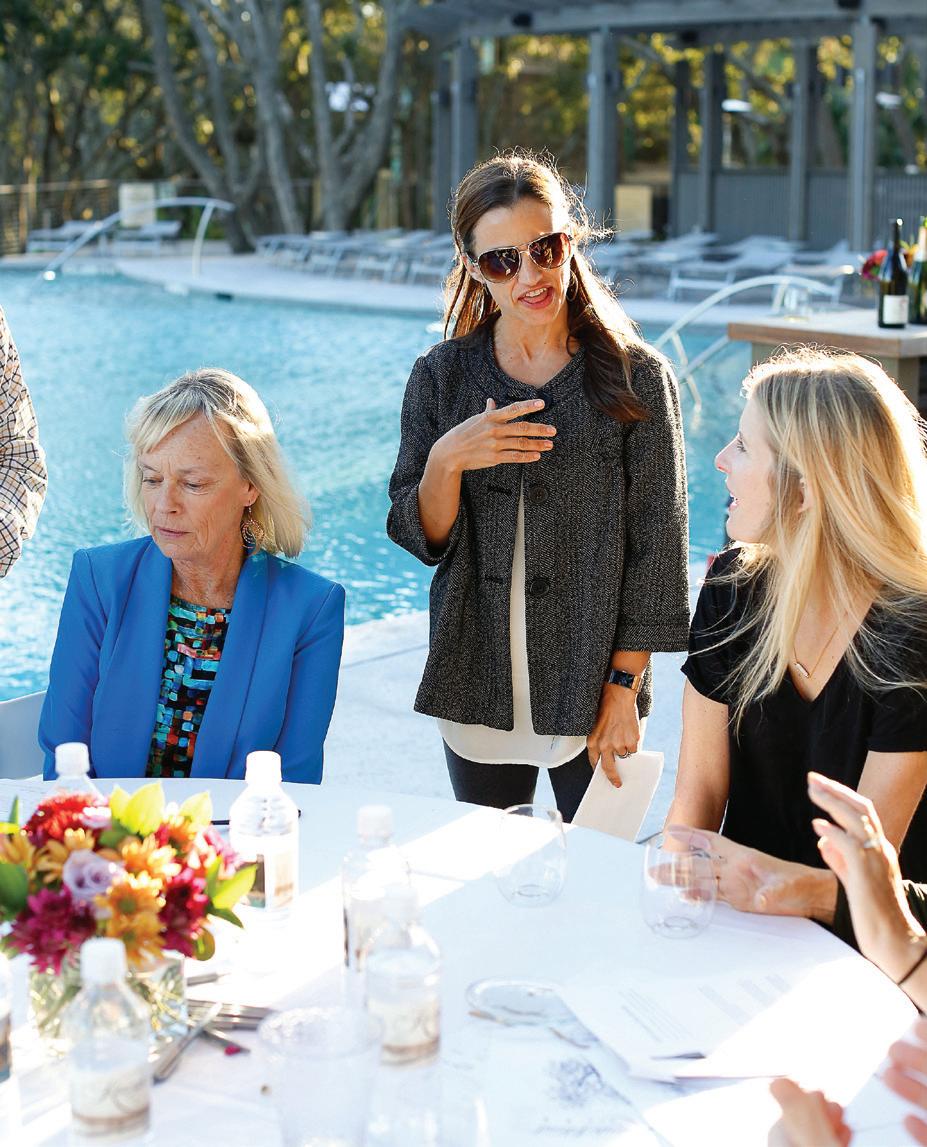
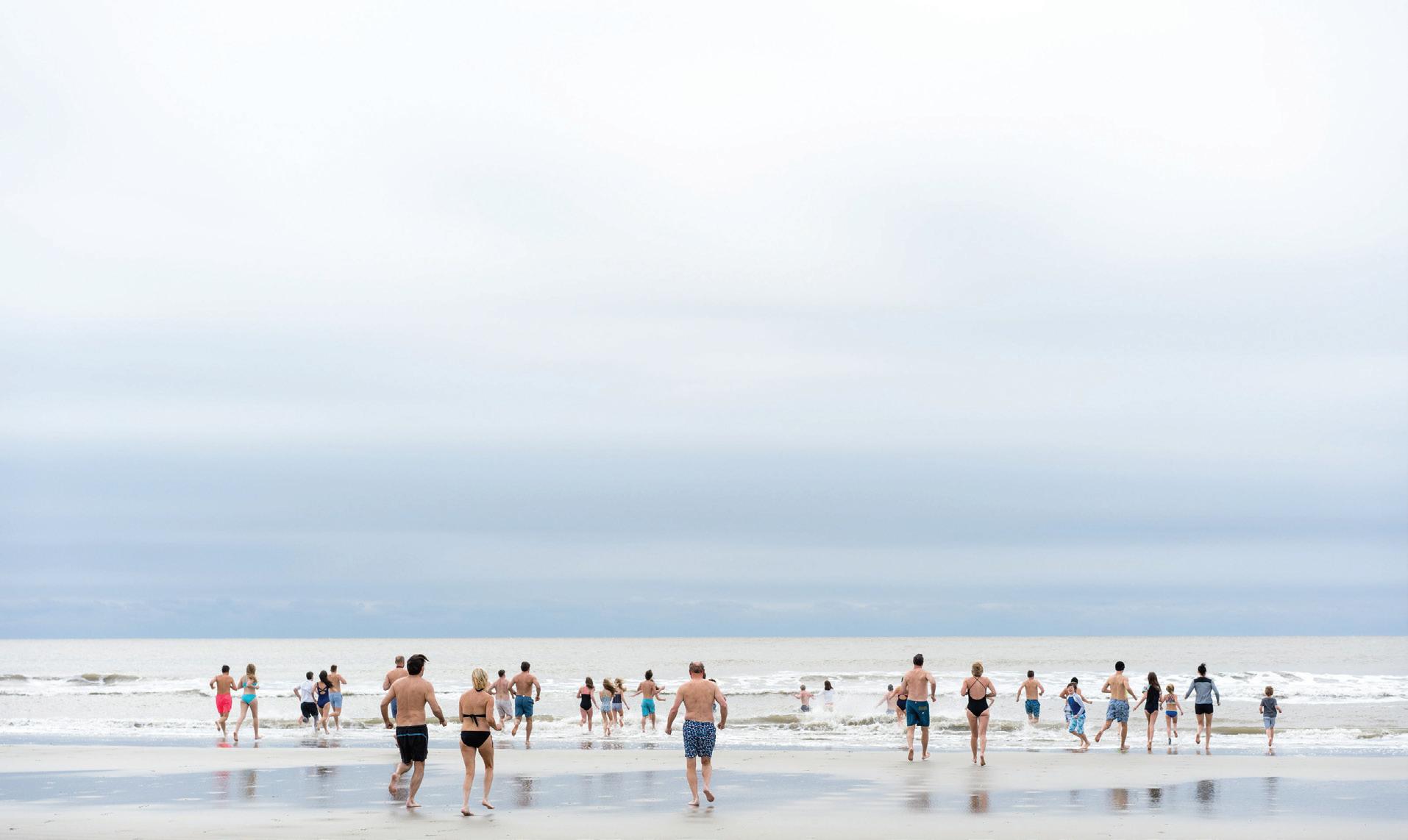
ON AND ABOUT
POLAR PLUNGE NEW YEAR’S EVE BASH TREE HOUSE RIBBON CUTTING
MEMBER MINGLE SEWE ART AND WINE WALK FALL MEMBER MINGLE
FALL
PHOTOGRAPHY by CHARLOTTE ZACHARKIW
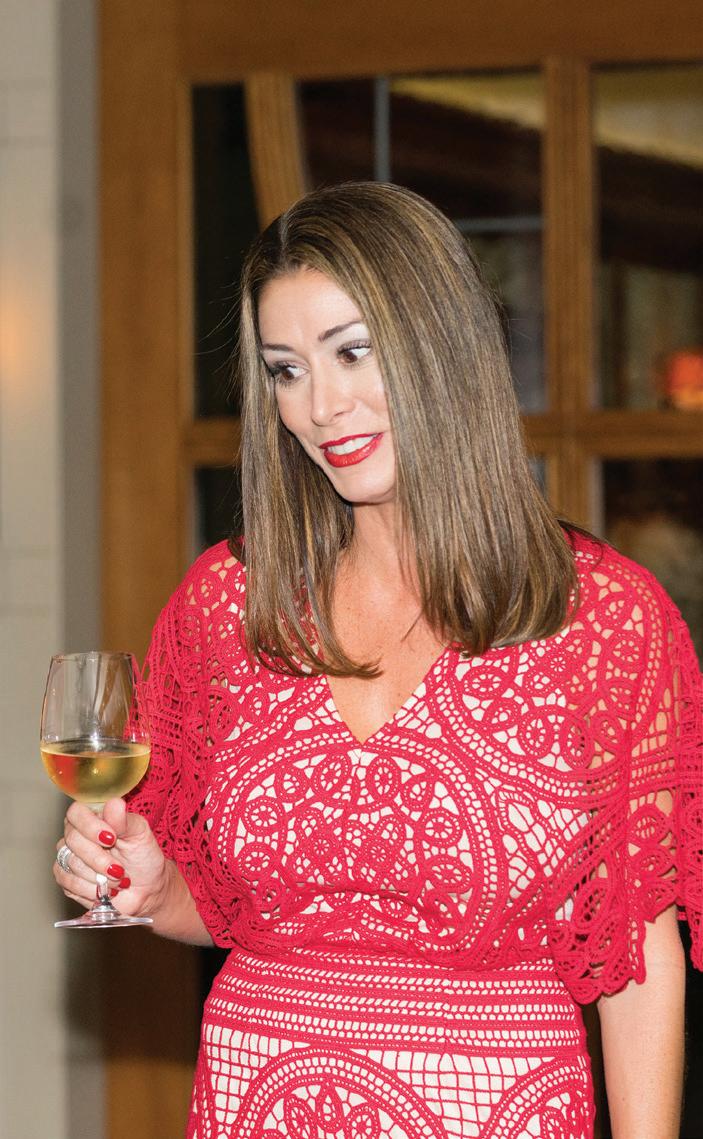

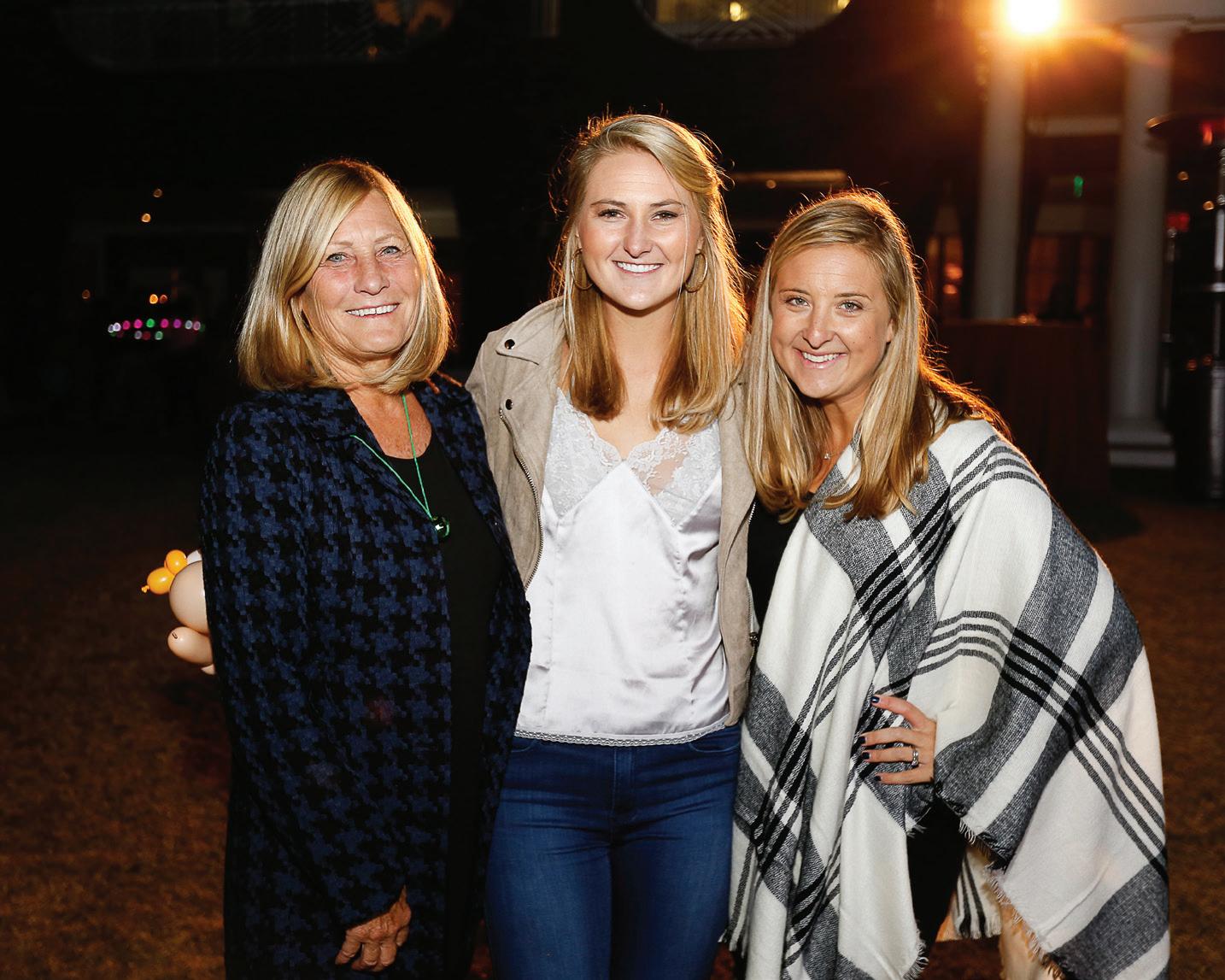

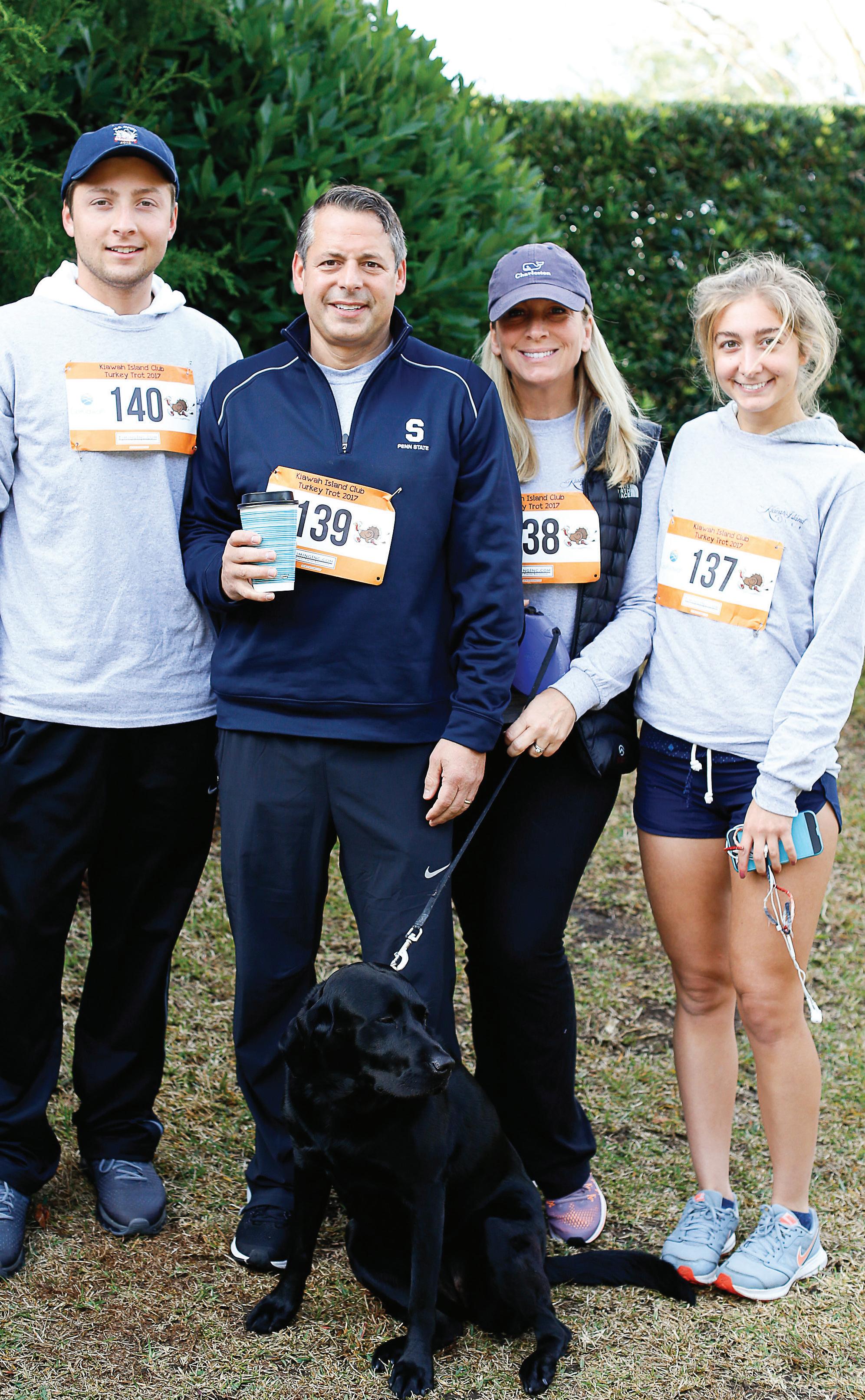


TURKEY TROT NOVEMBERFEST WONDERMENT WINE DINNER FALL MEMBER MINGLE
NOVEMBERFEST
FALL MEMBER MINGLE
WOMEN’S GOLF
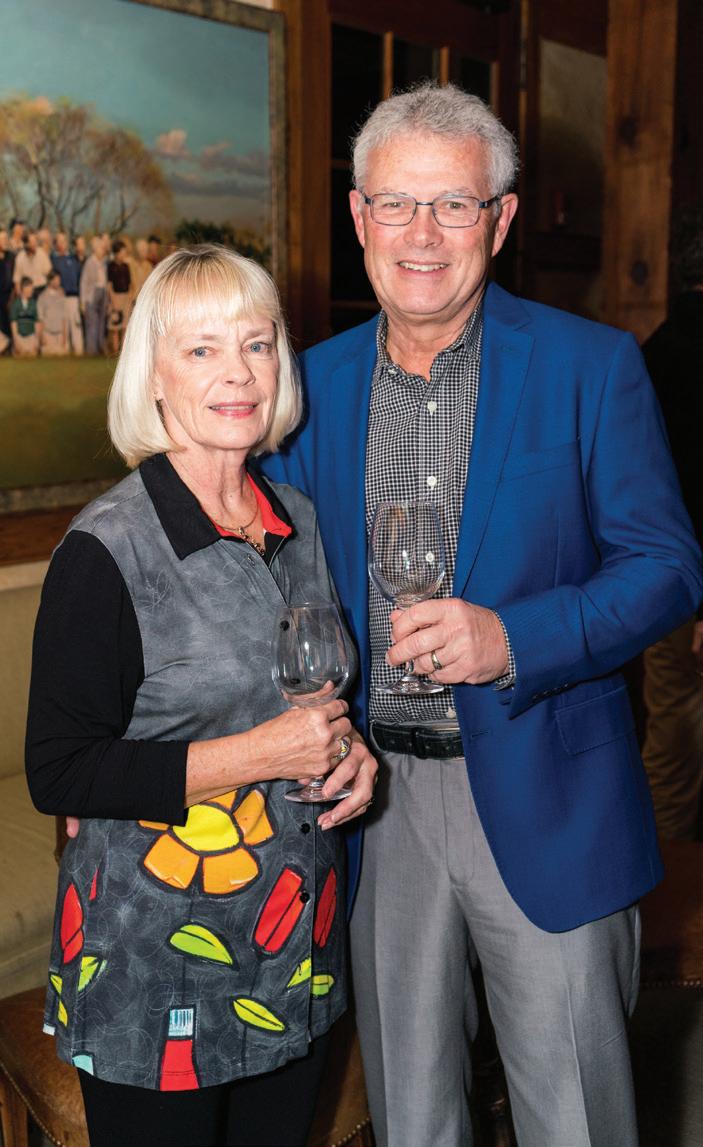
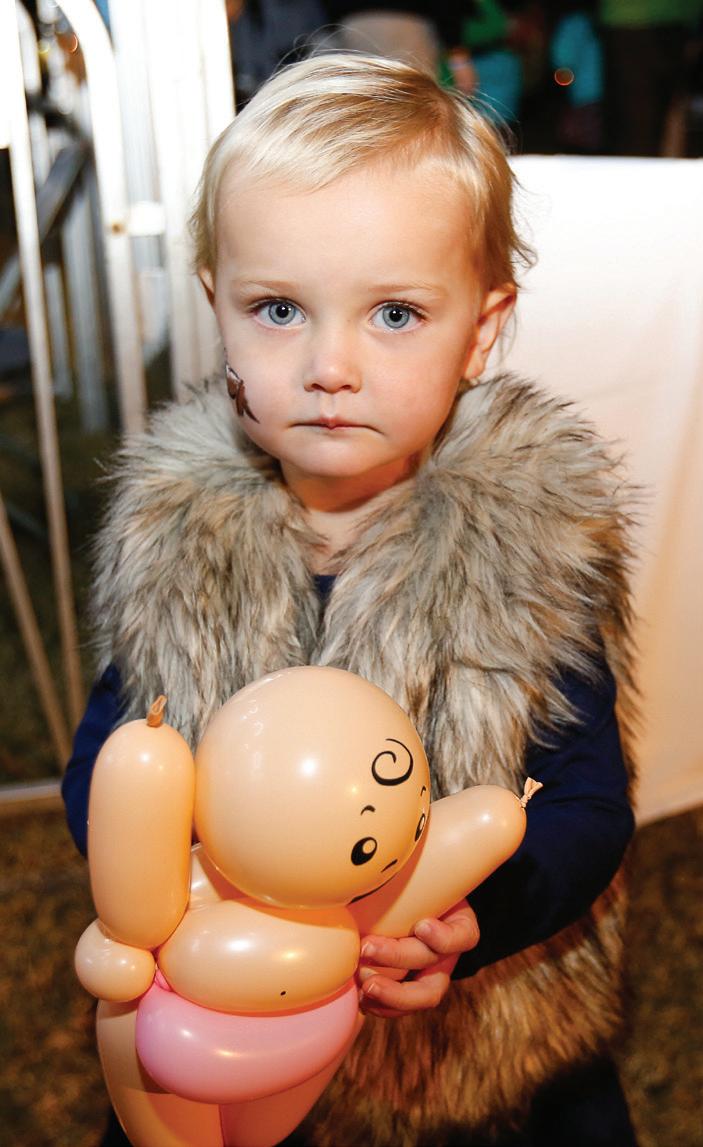


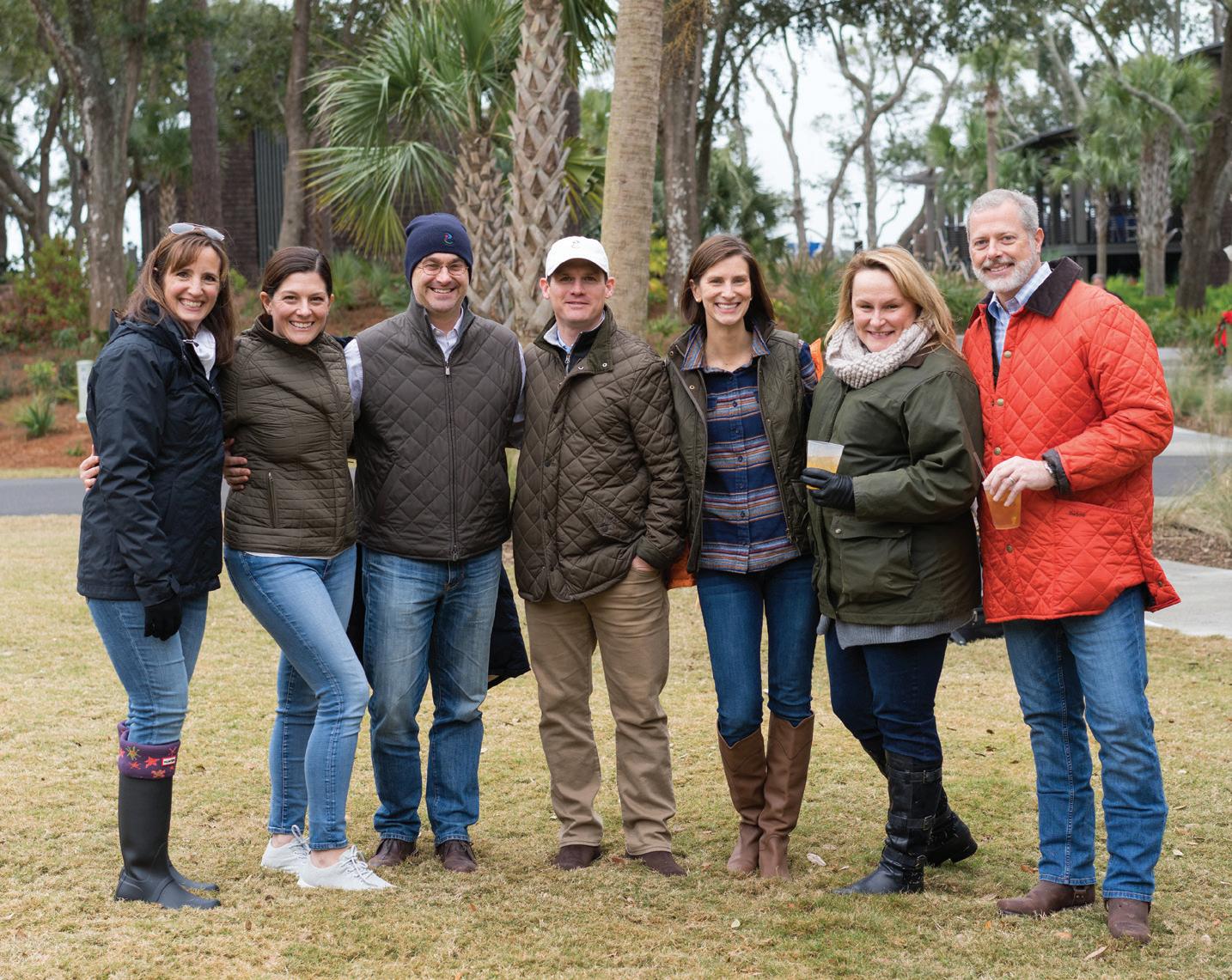

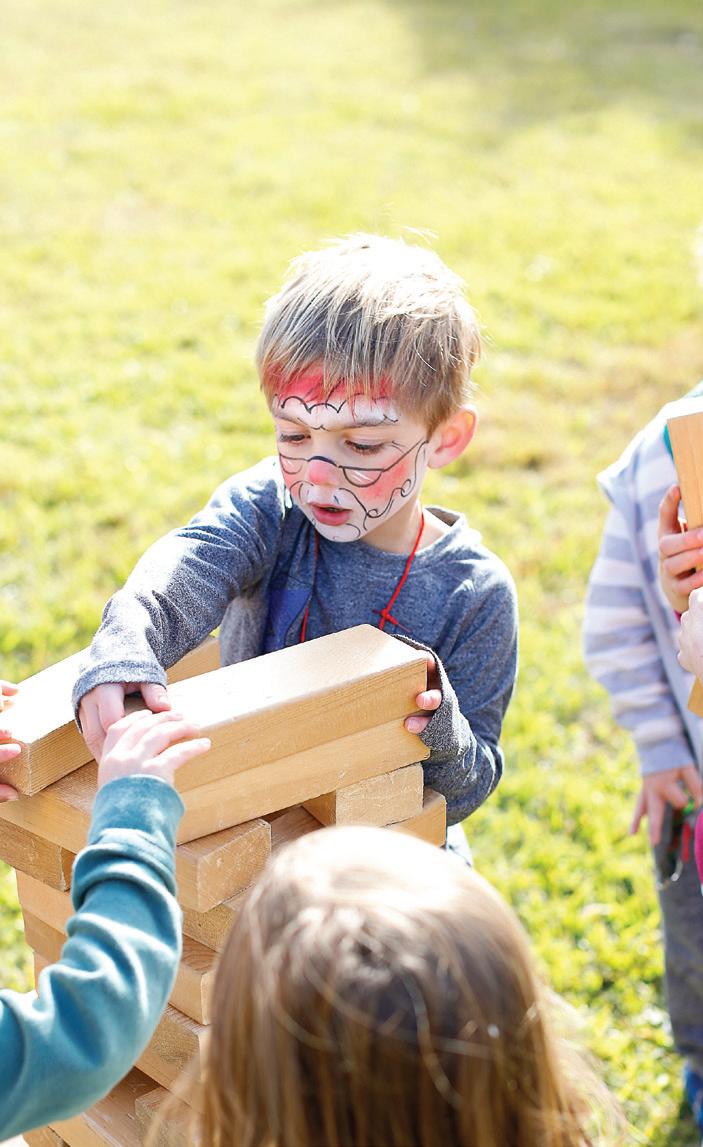
NOVEMBERFEST KITCHEN TAKEOVER NEW YEAR’S EVE BASH NOVEMBERFEST TURKEY TROT TREE HOUSE RIBBON CUTTING TREE HOUSE RIBBON CUTTING

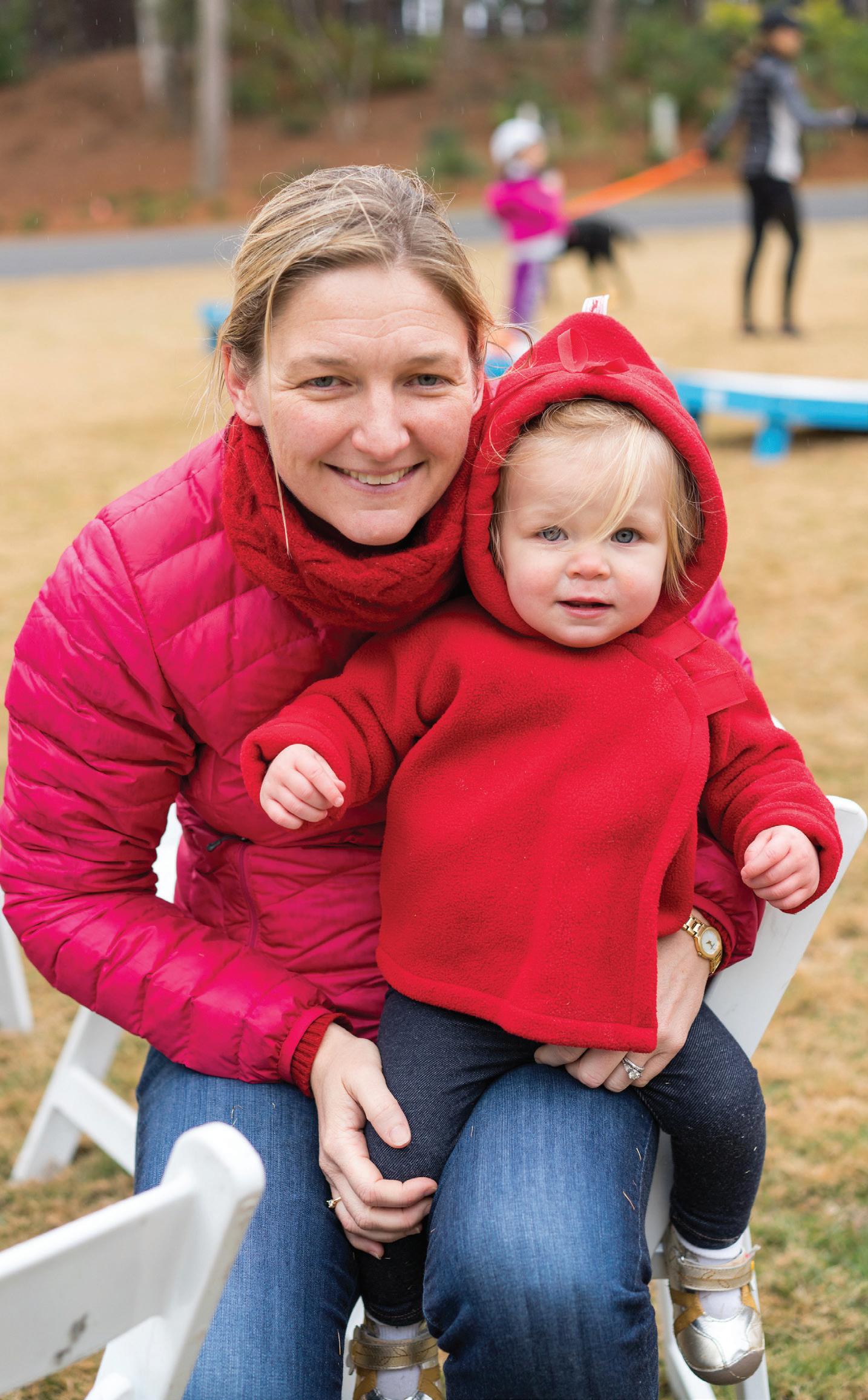
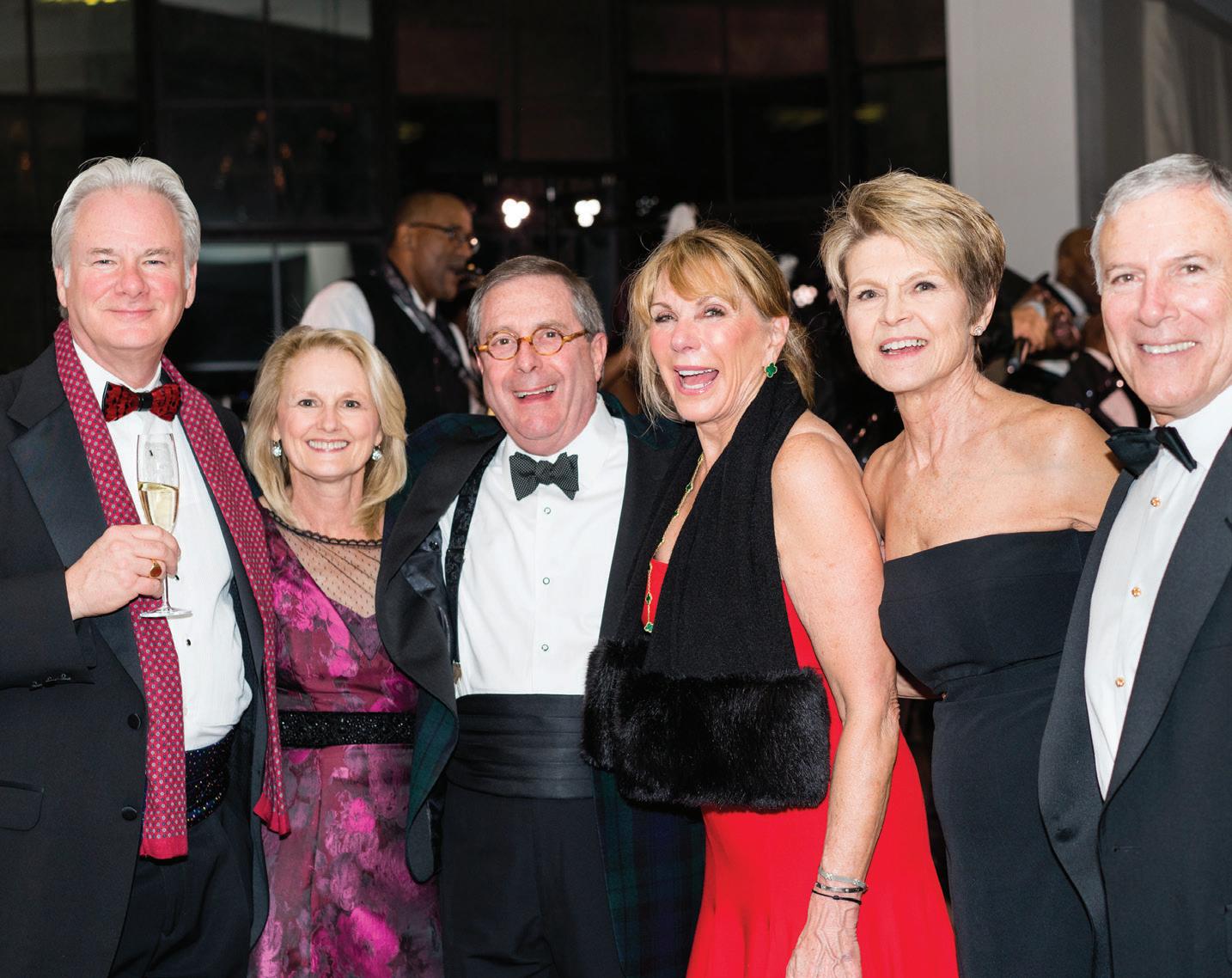



NEW YEAR’S EVE BASH
MINGLE TURKEY TROT TURKEY TROT
RIBBON CUTTING
MEMBER MINGLE
FALL MEMBER
TREE HOUSE
FALL
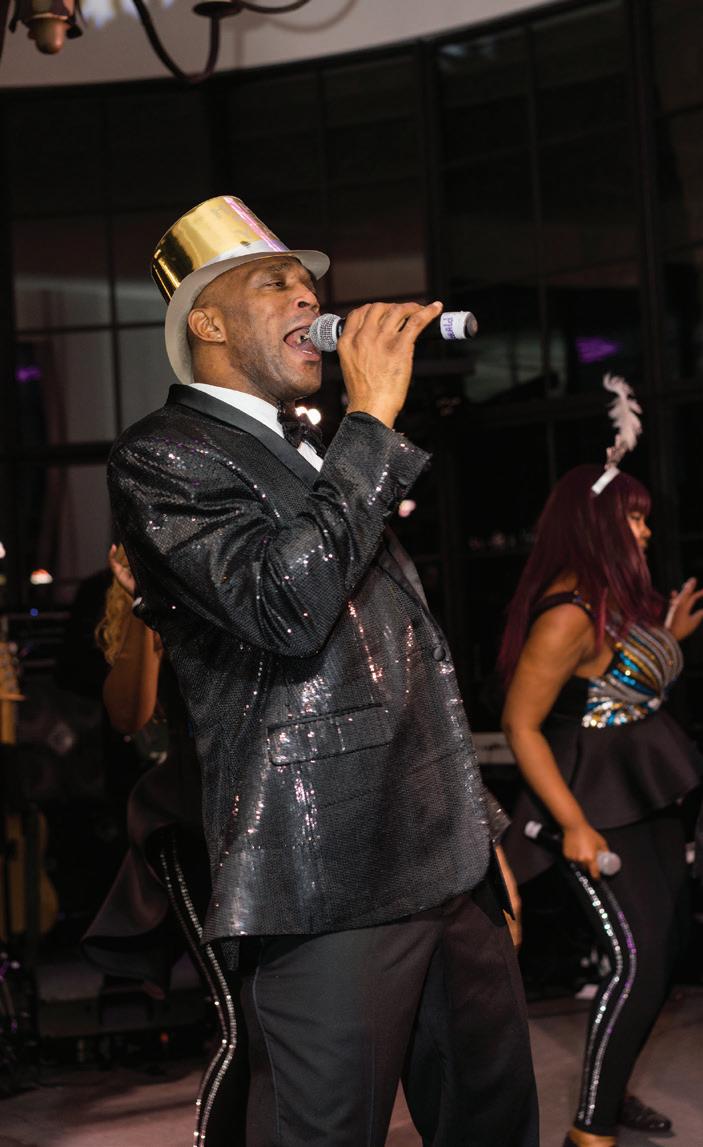


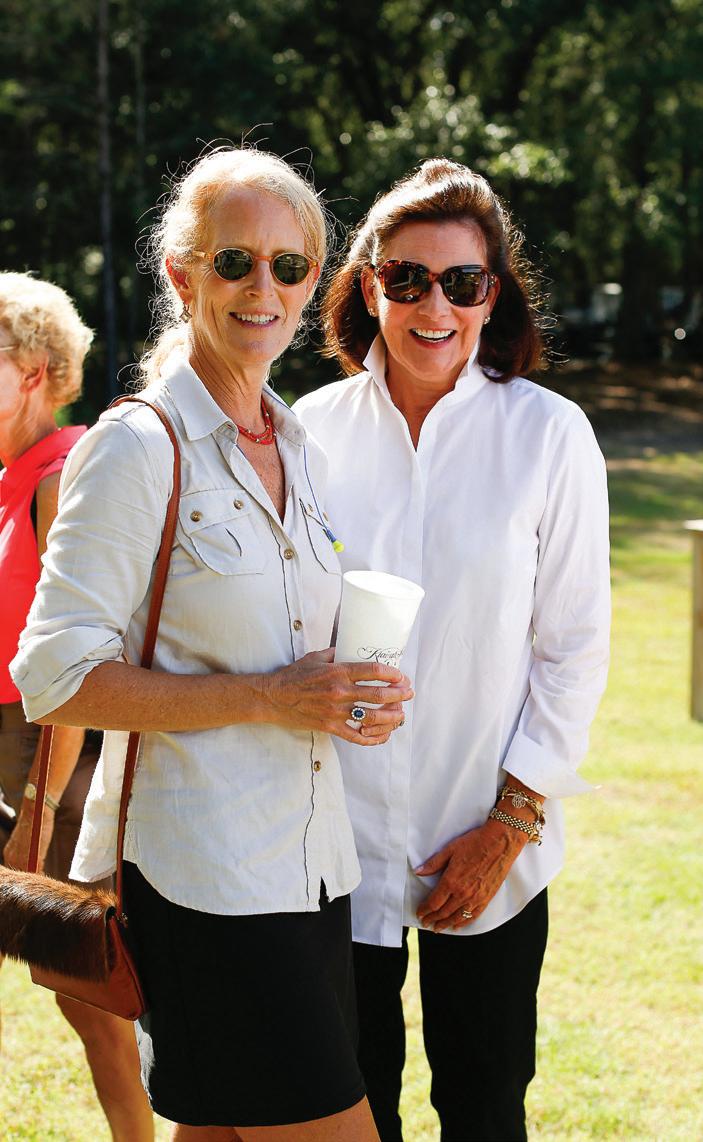
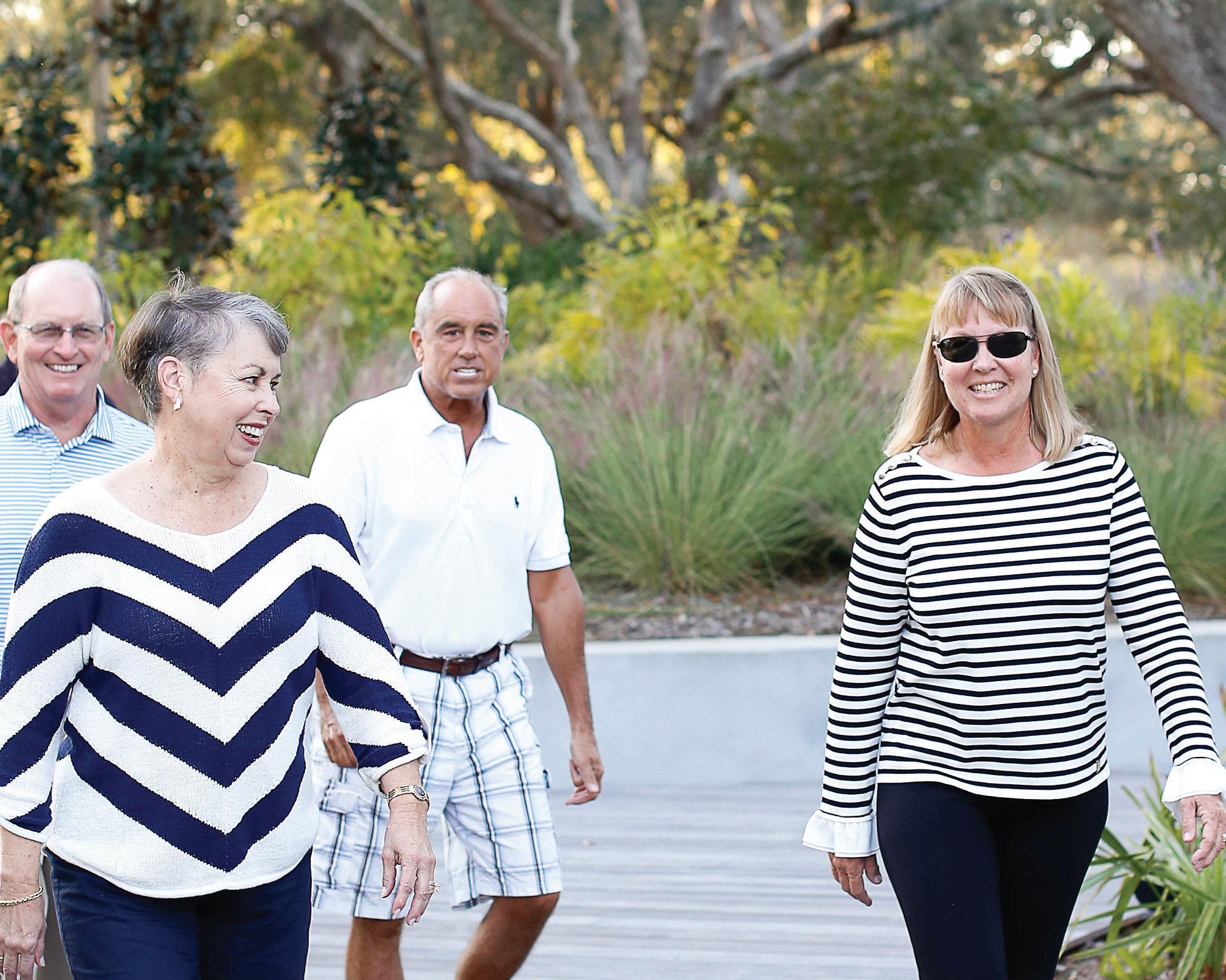

FALL MEMBER MINGLE WOMEN’S GOLF SEWE ART AND WINE WALK NEW YEAR’S EVE BASH NEW YEAR’S EVE BASH FALL MEMBER MINGLE

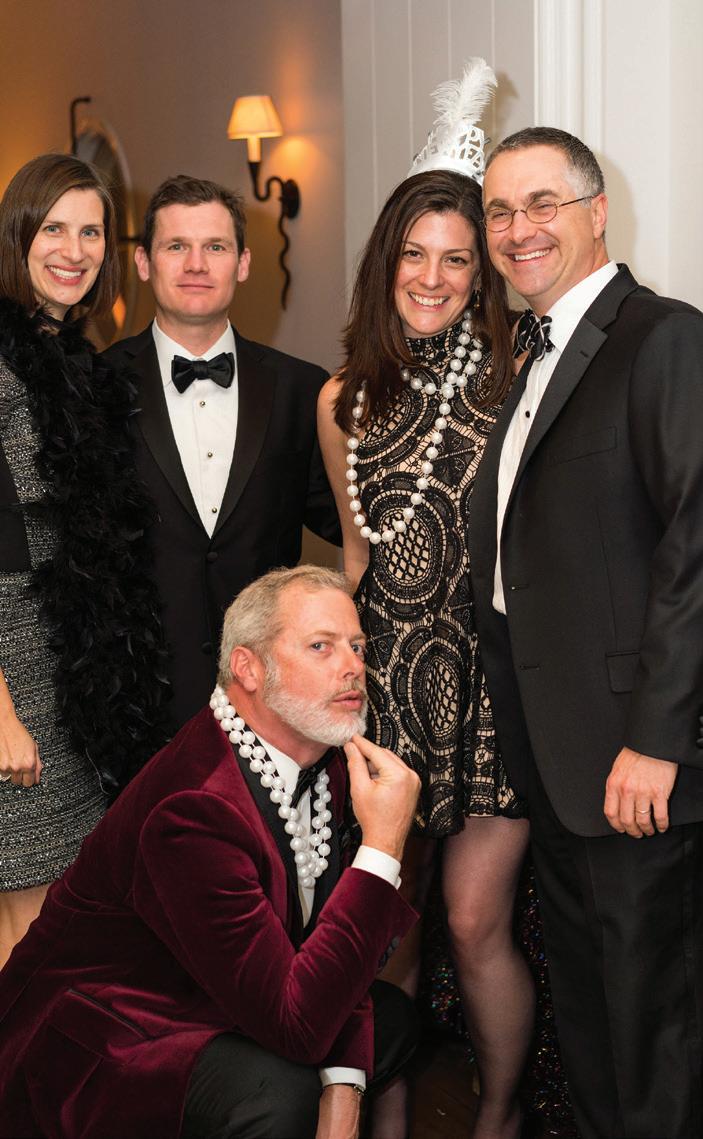
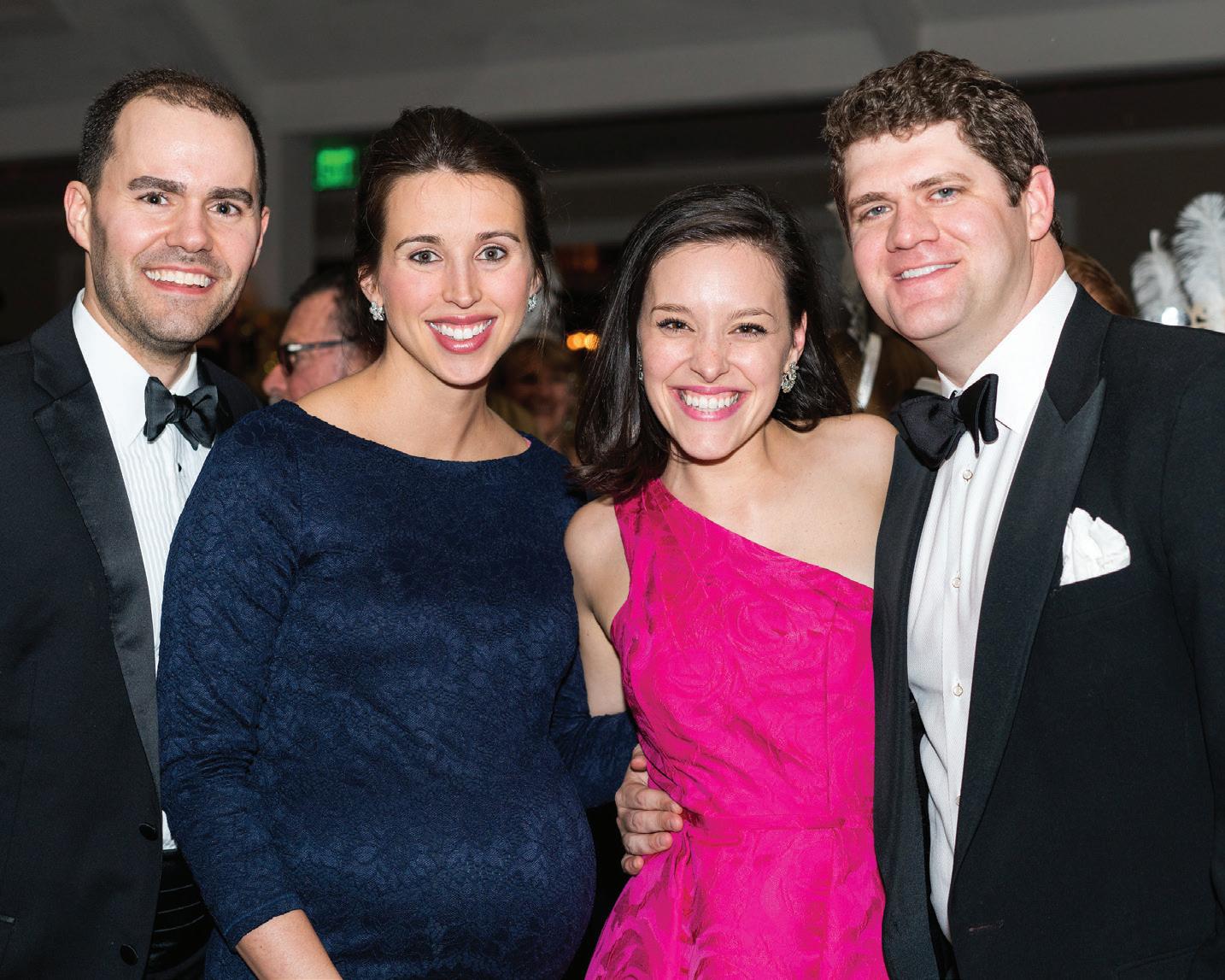
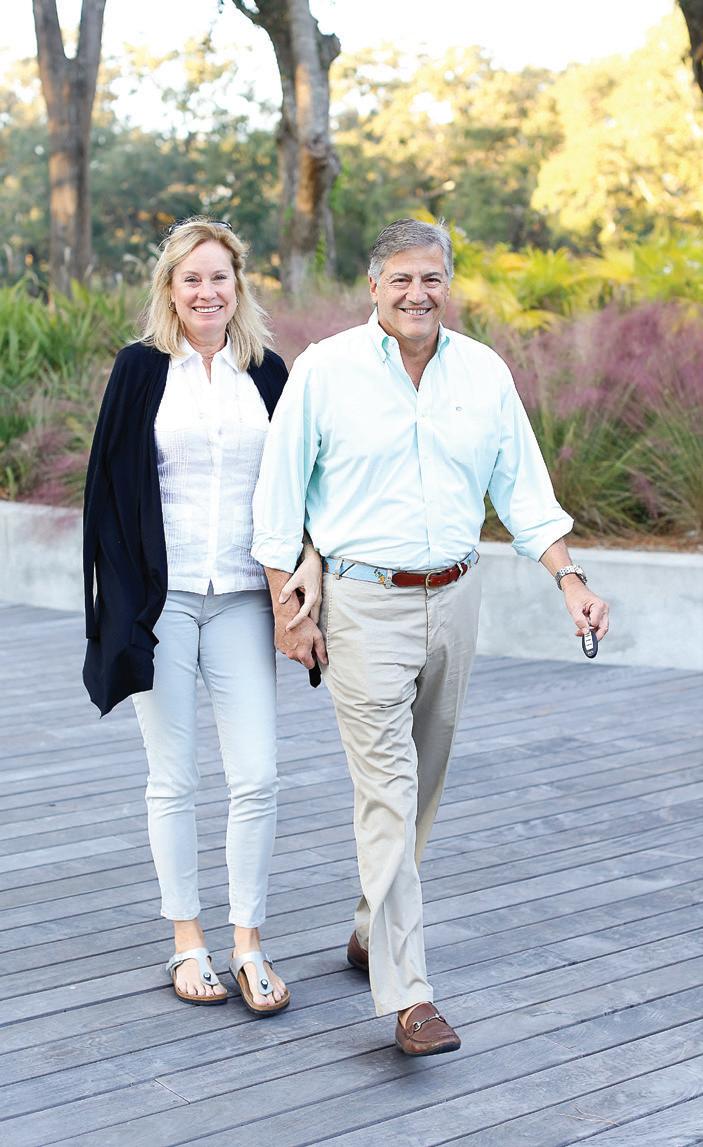
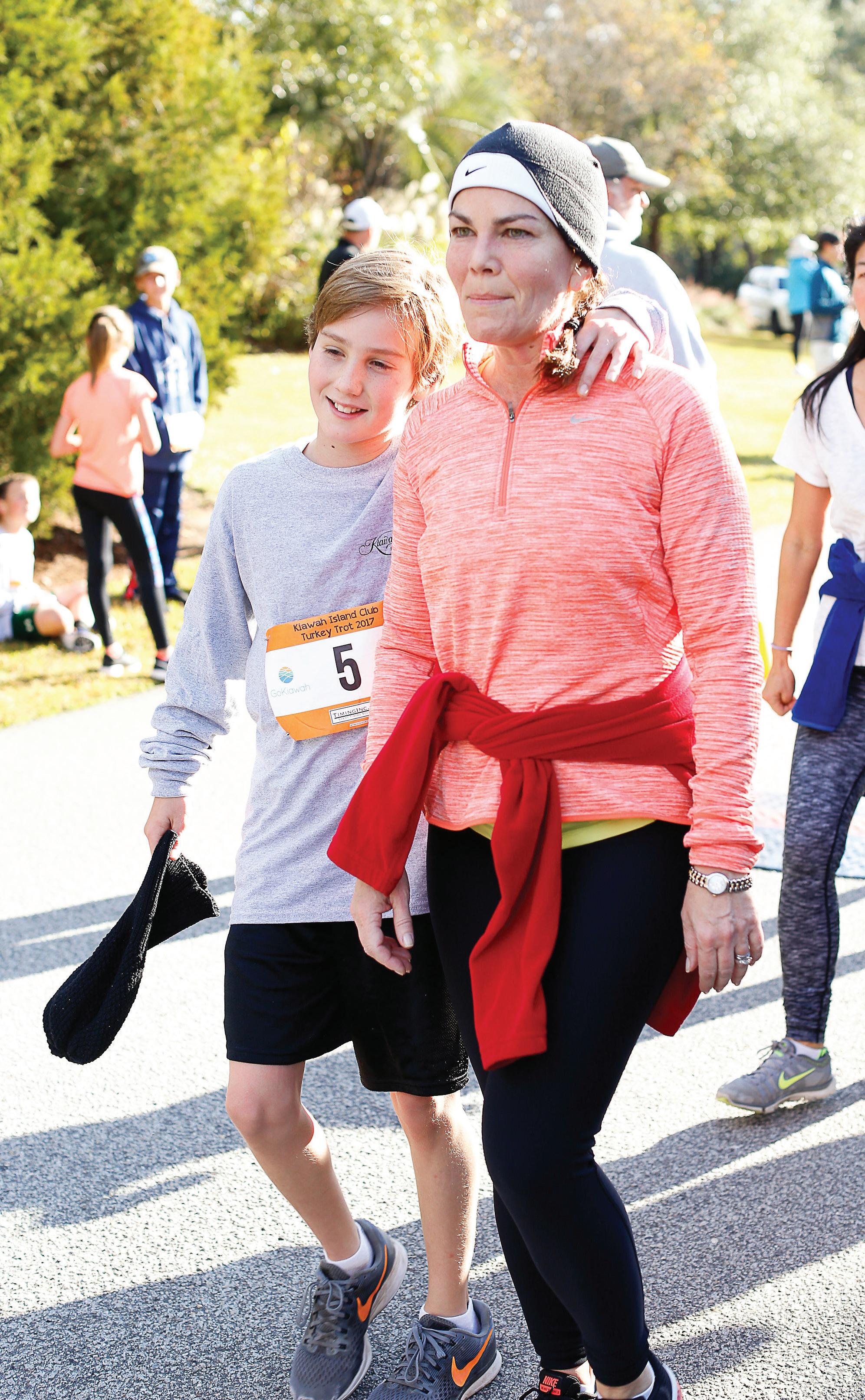

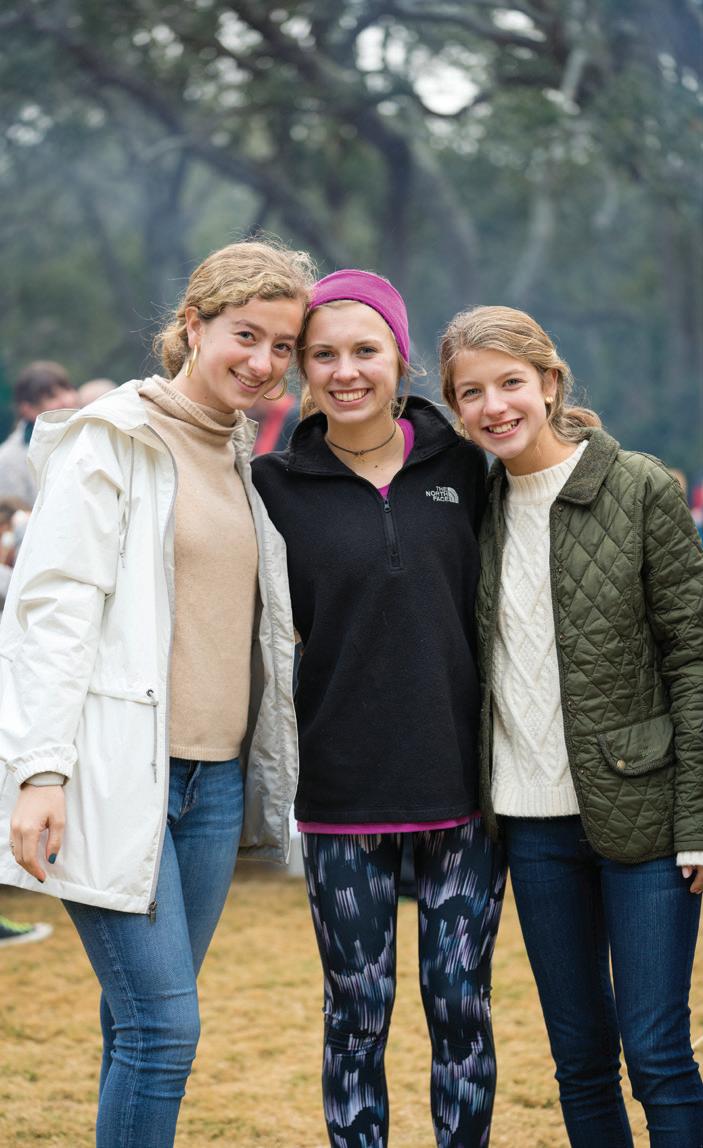
TURKEY TROT NEW YEAR’S EVE BASH FALL MEMBER MINGLE FALL MEMBER MINGLE NEW YEAR’S EVE BASH SEWE ART AND WINE WALK TREE HOUSE RIBBON CUTTING

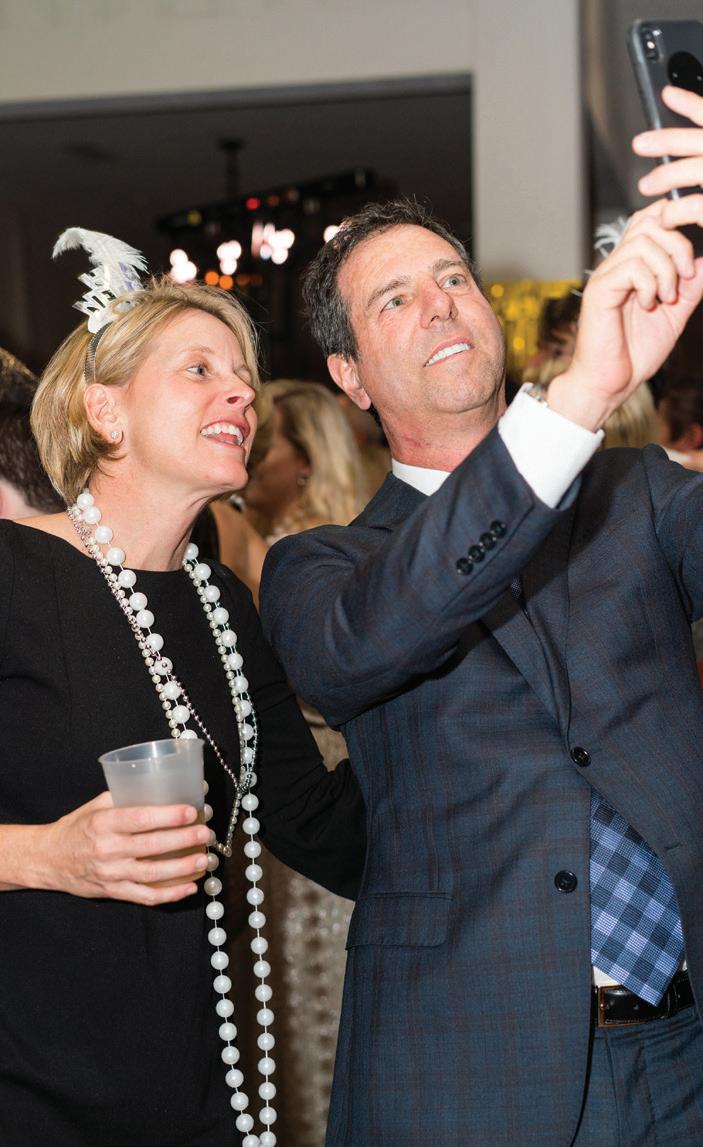
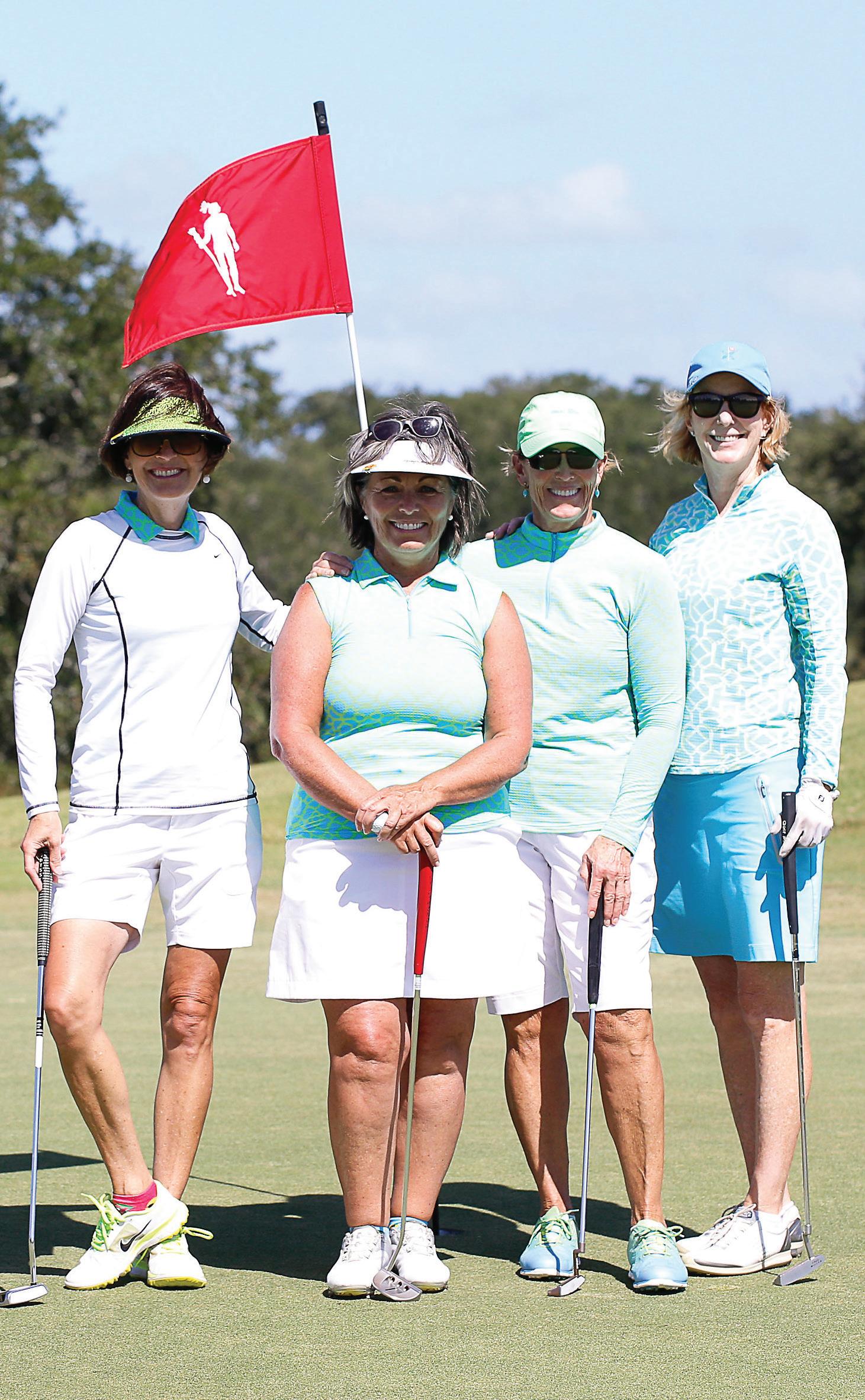



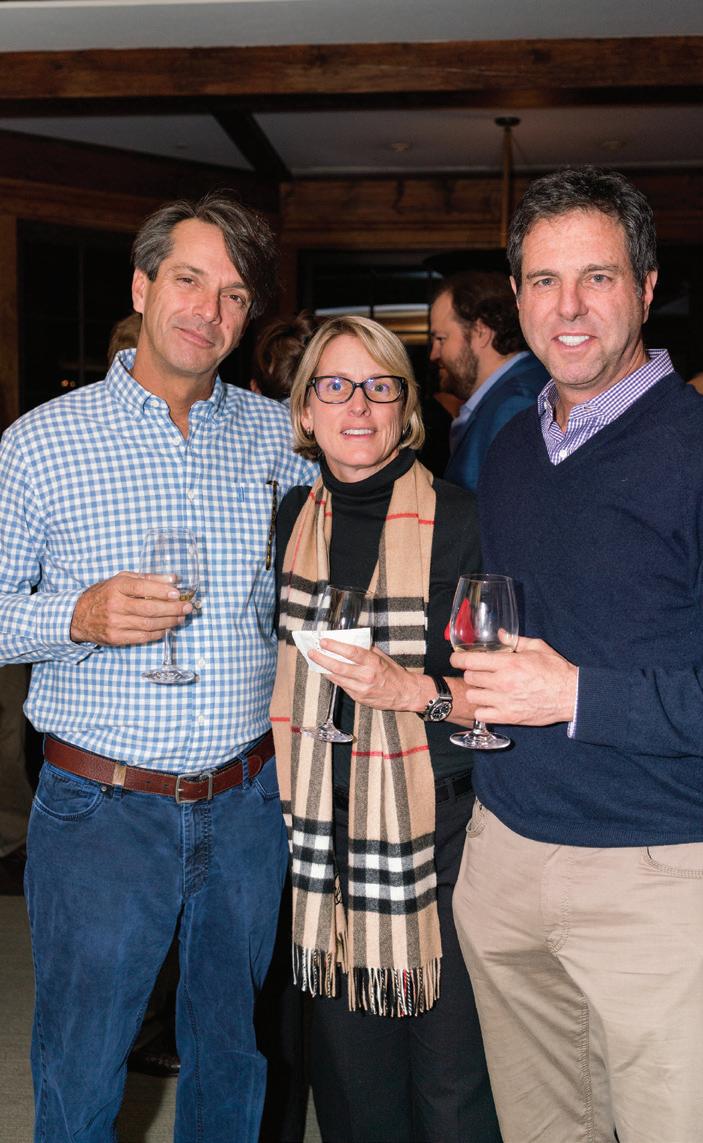
FALL MEMBER MINGLE FALL MEMBER MINGLE KITCHEN TAKEOVER TREE HOUSE RIBBON CUTTING WOMEN’S GOLF FALL MEMBER MINGLE NEW YEAR’S EVE BASH


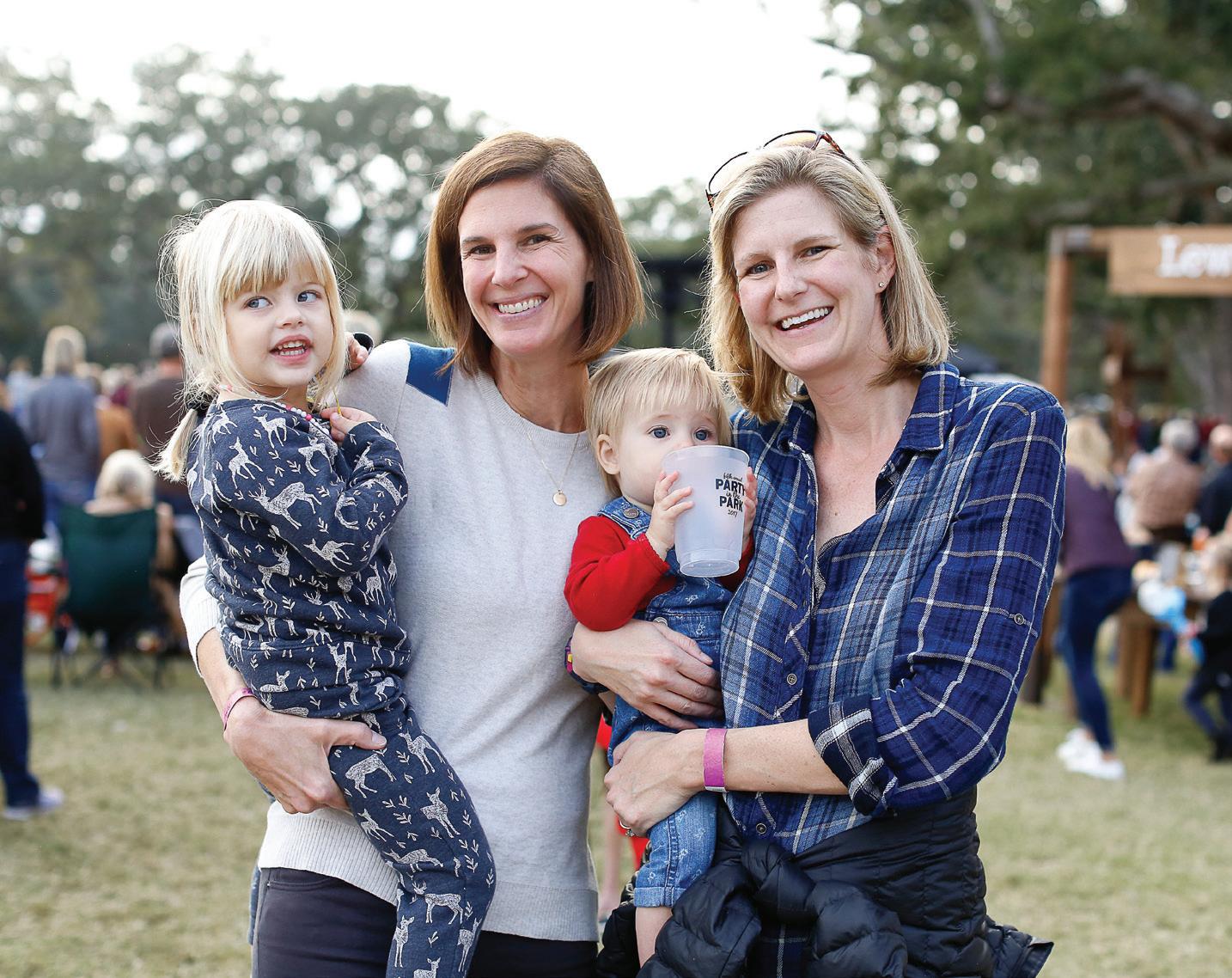
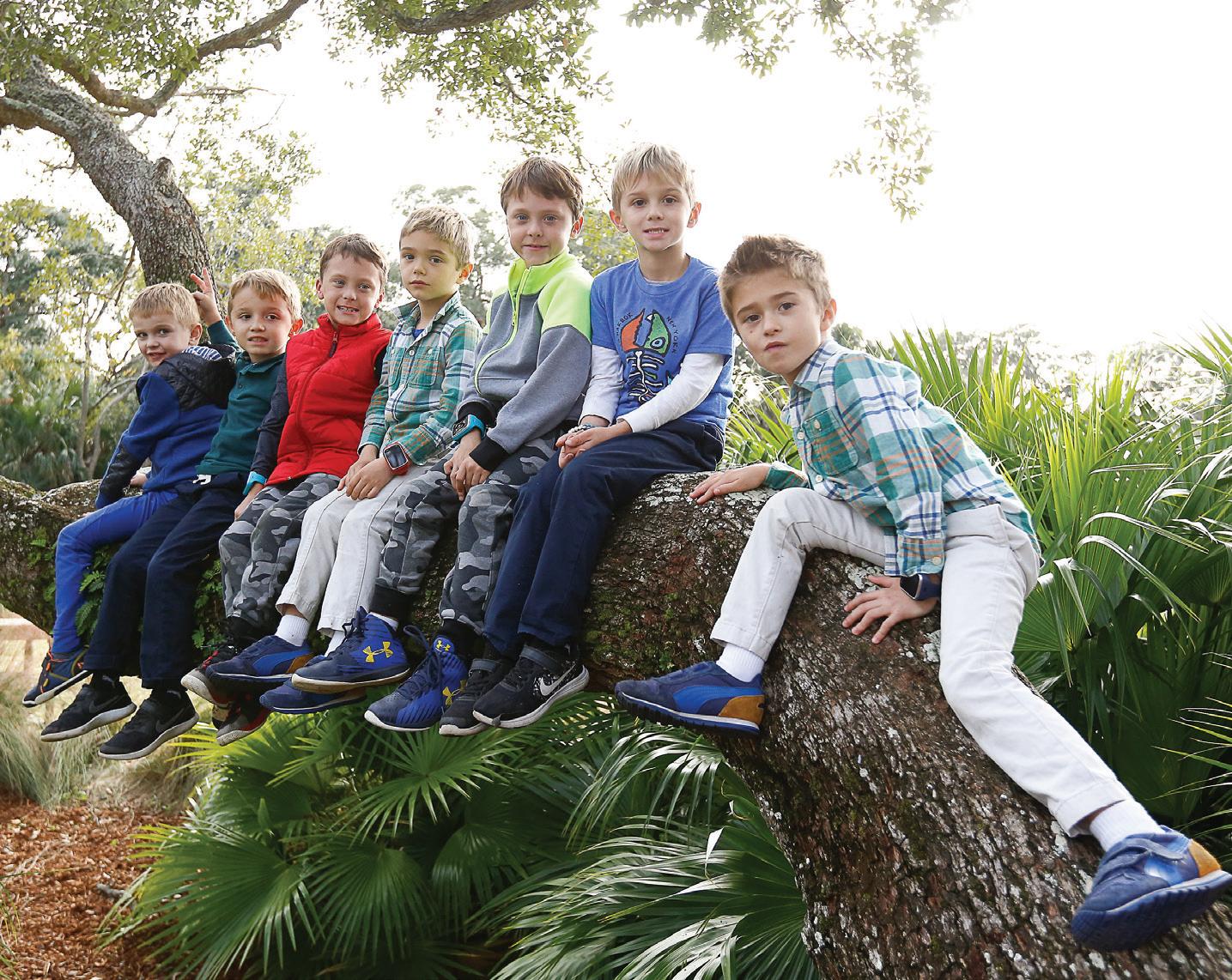
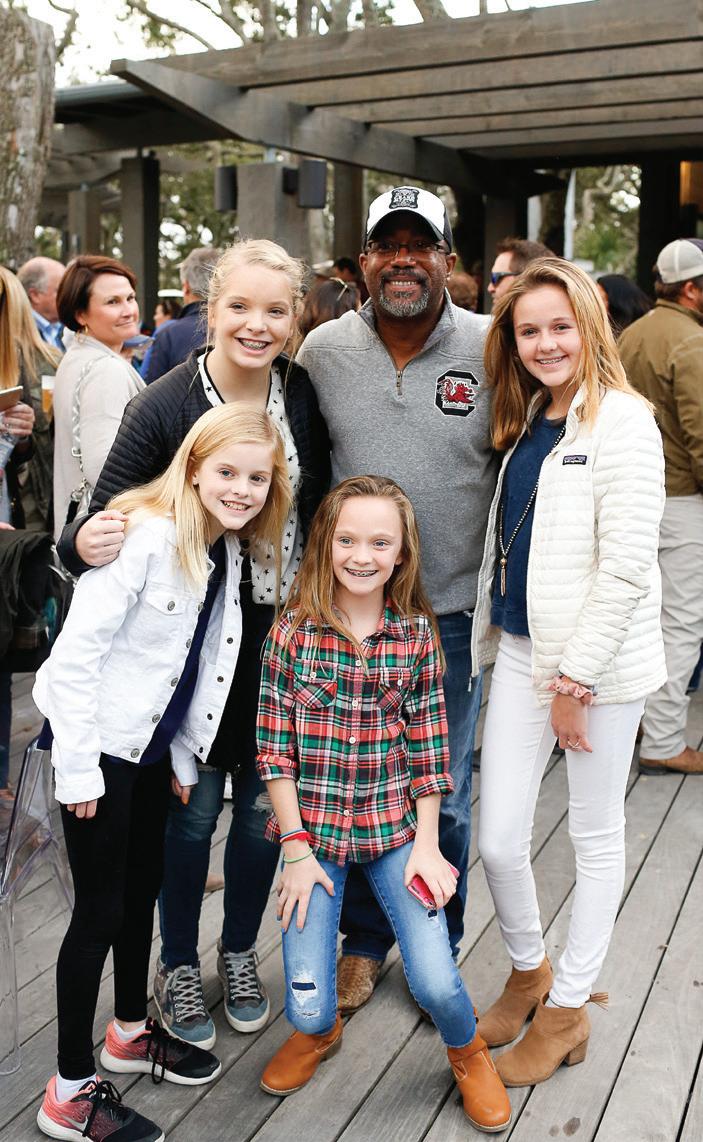

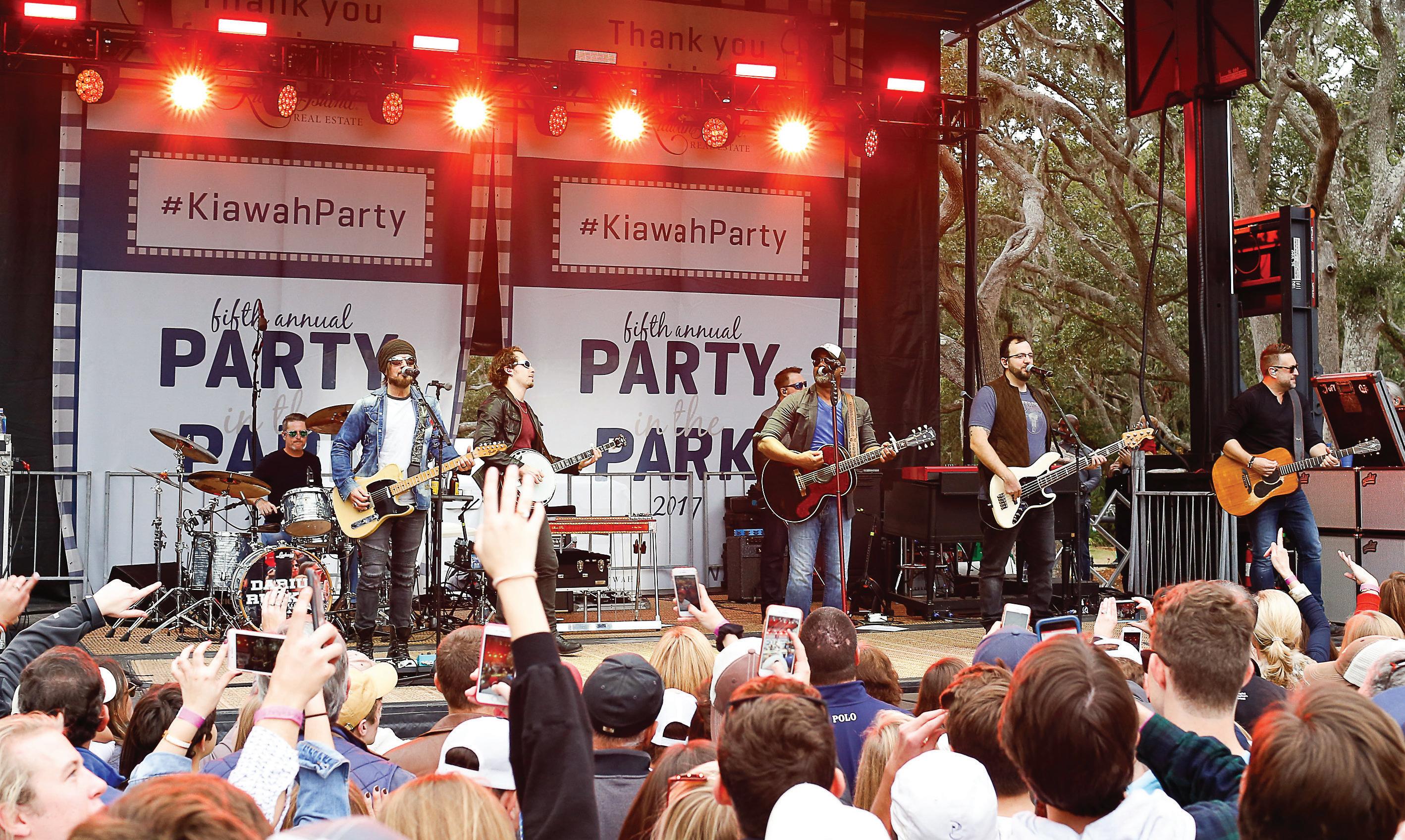




PARTY in the PARK THANK YOU TO OUR SPONSORS 5 th Annual

THOMAS & DENZINGER ARCHITECTS www.thomasanddenzingerarchitects.com 843 723 6651
$5.7 MILLION
Kiawah Partners donated over in conservation easments in 2017 alone.

For the past forty years, Kiawah Partners has been committed to environmental stewardship. Since the inception of the Kiawah Island Conservancy in 1997, the two organizations have worked closely together to preserve the natural integrity of the island. In 2017 alone, Kiawah Partners donated over $5.7 million in conservation easements. The parcels include Mingo North & South, Bass Creek Island, West End Marsh, and Little Rabbit North.

LEGENDS MAGAZINE 2018 NO 30 159
END NOTES
P hoto by Patrick O’Brien

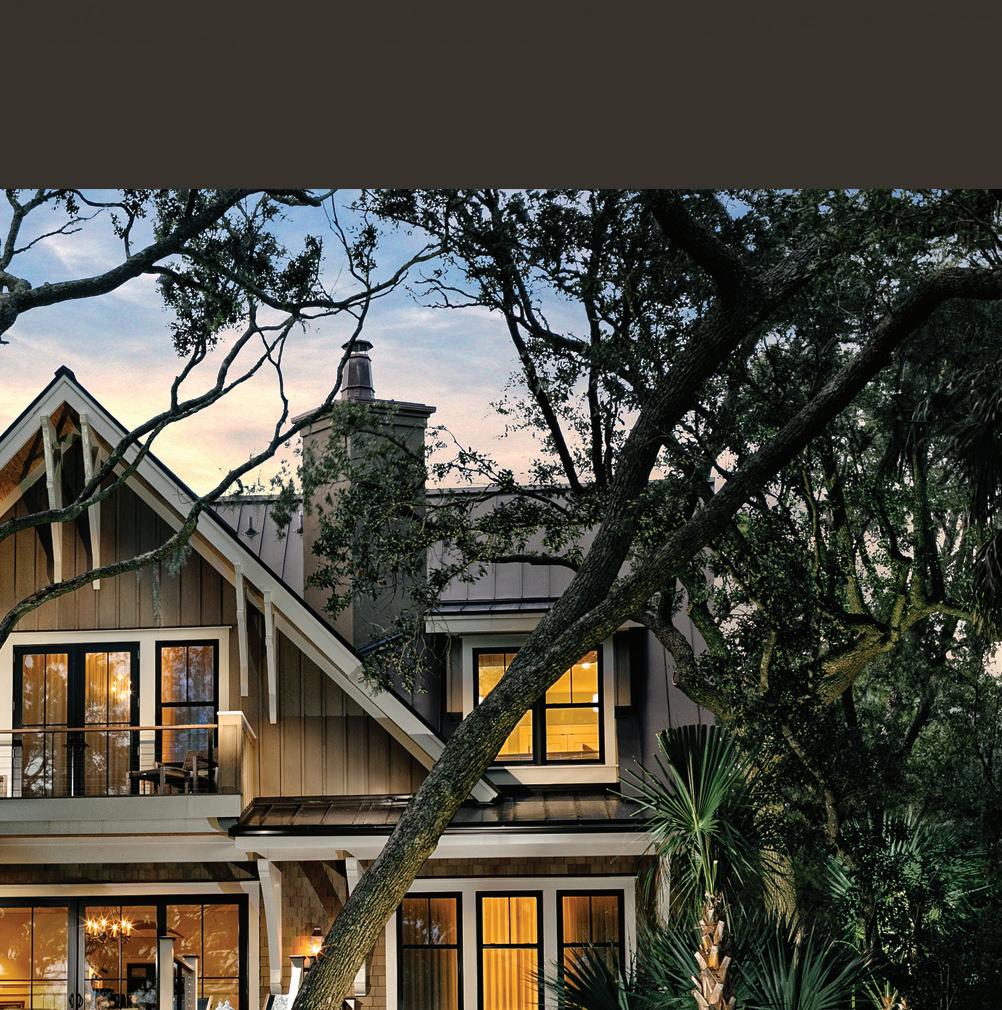
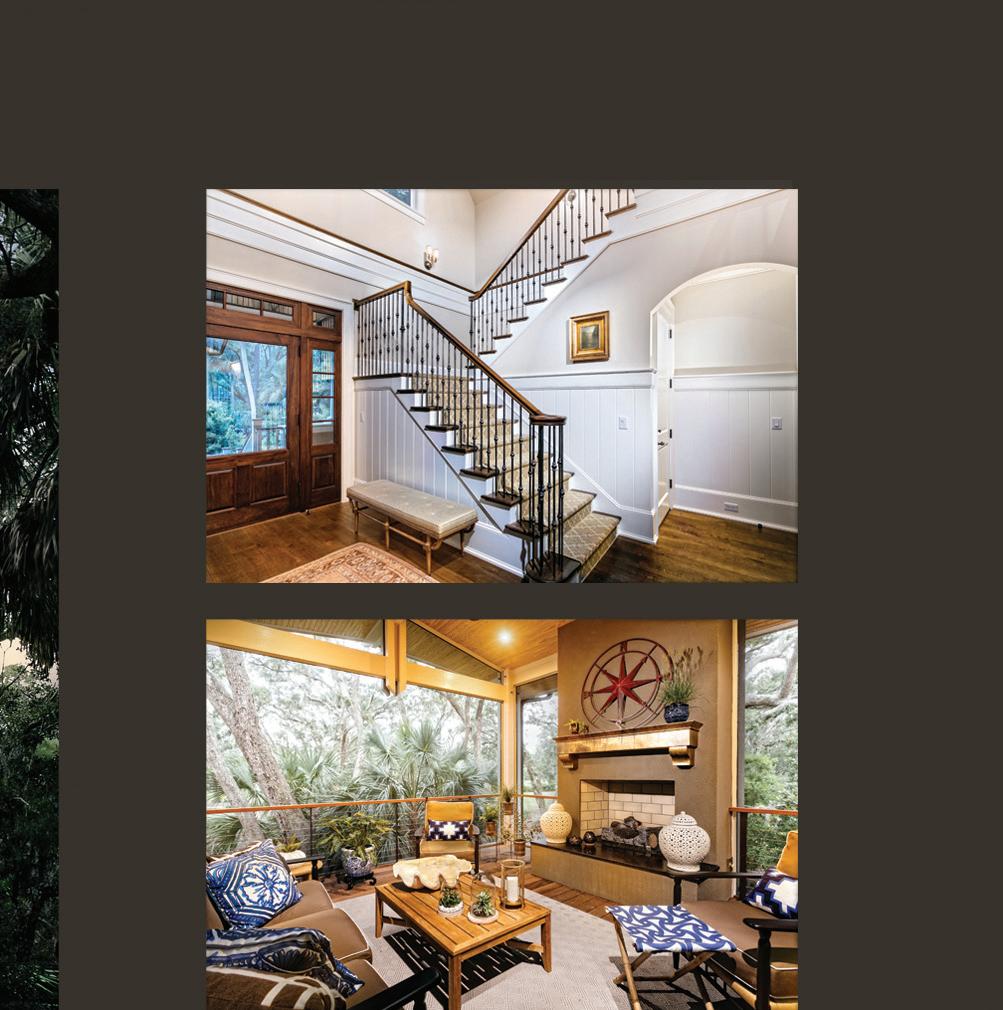



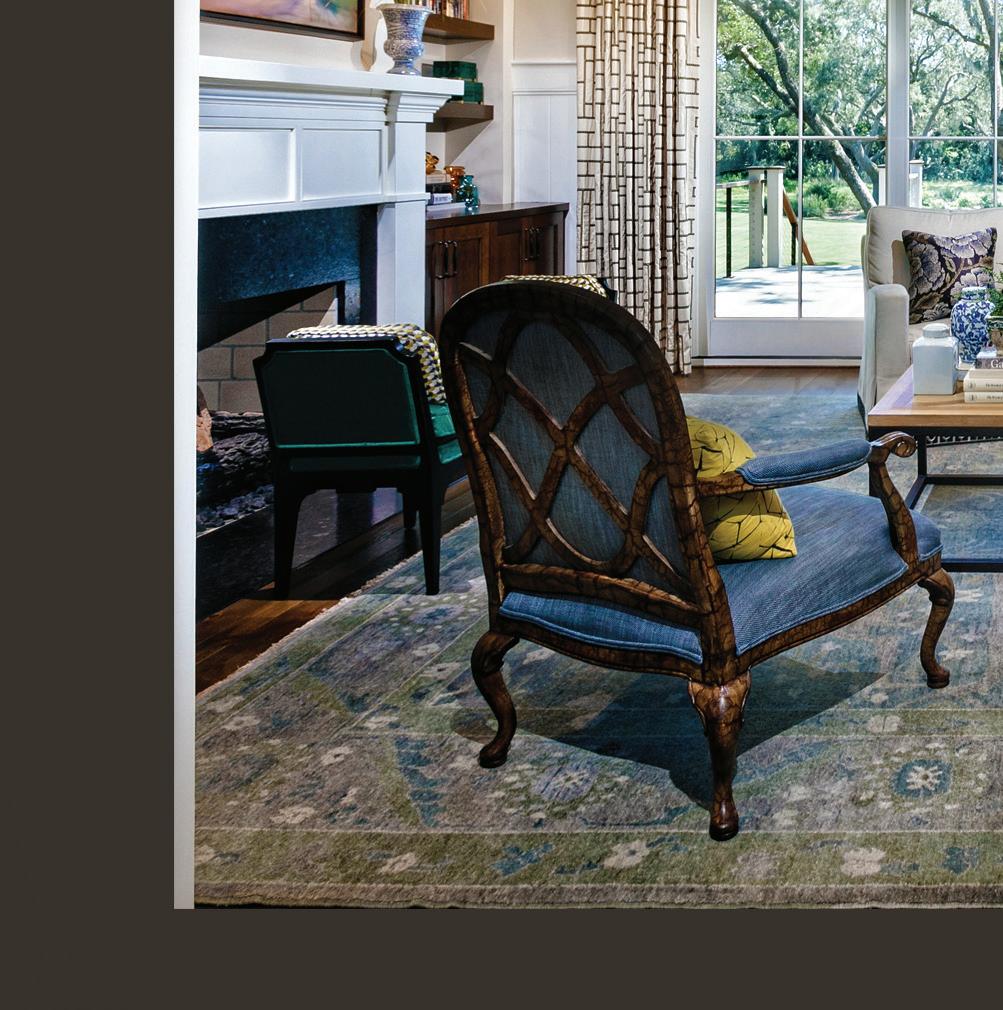



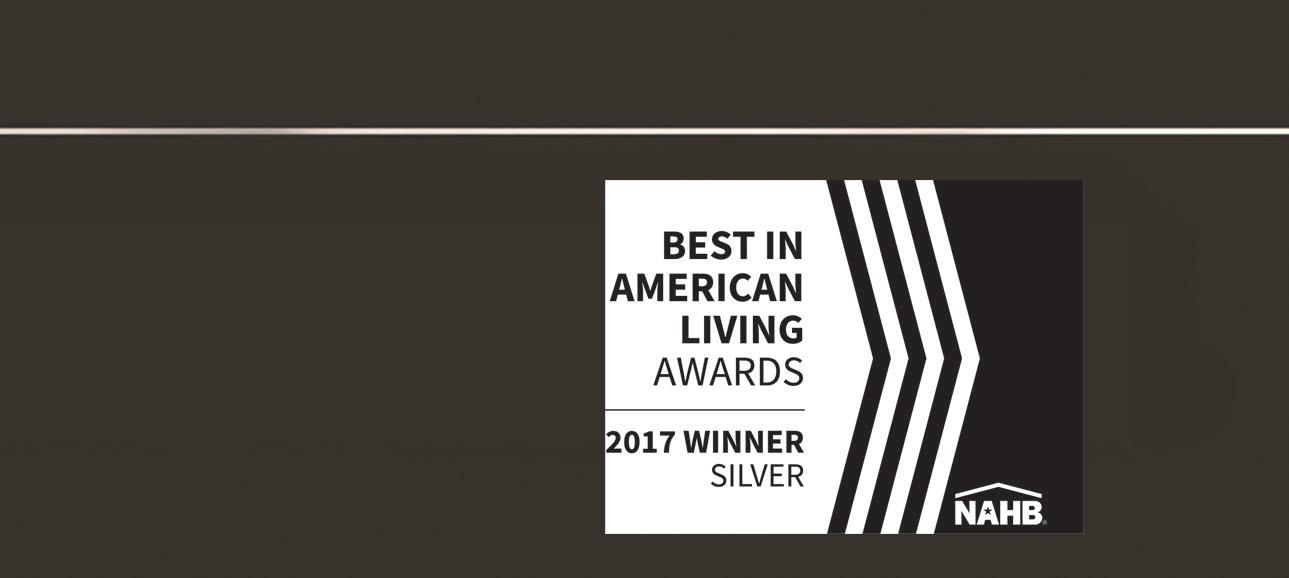







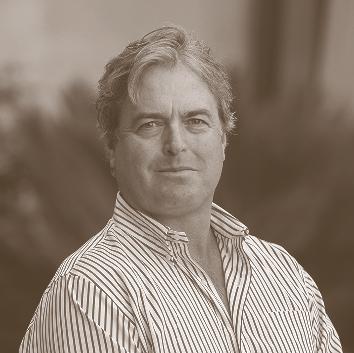


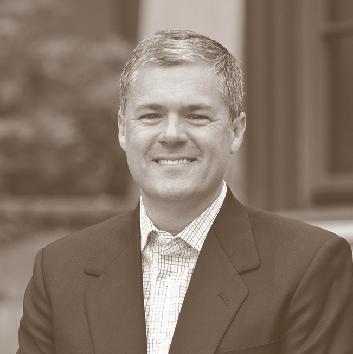


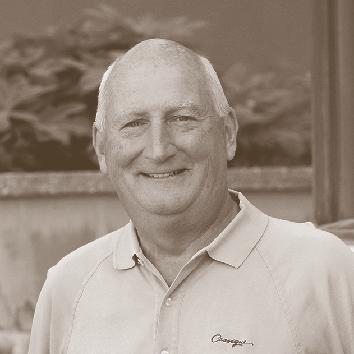
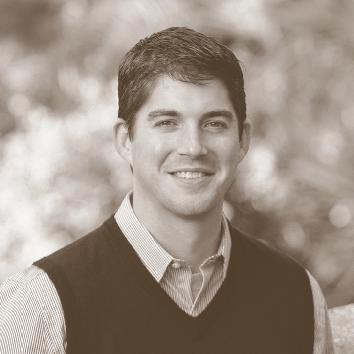

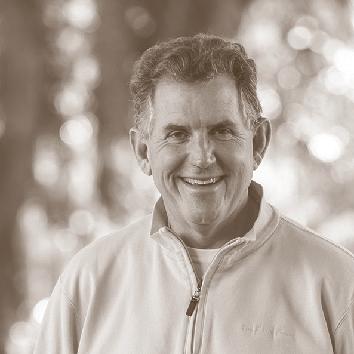

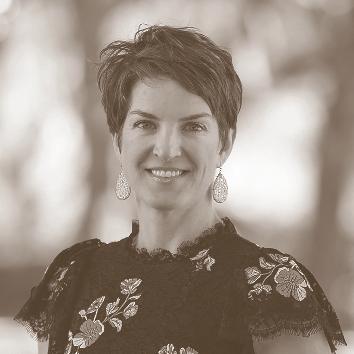
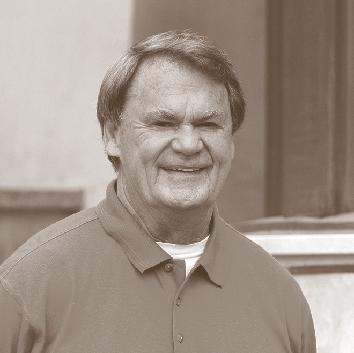



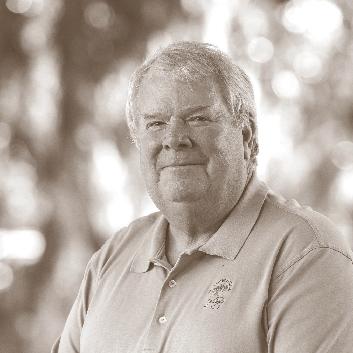

experience access results We sell Kiawah Island properties more quickly—and for a higher price—than anyone else. EXCLUSIVELY FOCUSED ON KIAWAH ISLAND SALES FOR OVER 40 YEARS Obtain the Property Report required by Federal Law and read it before signing anything. No Federal or State agency has endorsed or judged the merits of value, if any, of this property. This is not intended to be an offer to sell nor a solicitation of offer to buy real estate in any jurisdiction where prohibited by law. This offer is made pursuant to the New York State Department of Law’s Simplified Procedure for Homeowners Associations with a De Minimis Cooperative Interest (CPS-7).The CPS-7 application (File No. HO16-0007) and related documents may be obtained from the sponsor. This project is registered with the State of New Jersey Department of Banking and Insurance Real Estate Commission. Obtain and read the NJ Public Offering Statement before signing anything (NJ Reg#16-15-0012). AN AFFILIATE OF KIAWAH PARTNERS Kiawahisland.com • 866.554.2924 TOP 5 PLACES TO BUY A SECOND HOME ~ Barrons, 2017 Four Kiawah Island Real Estate Office Locations Open Daily SANCTUARY: 1 Sanctuary Beach Drive | MAIN GATE: 1 Kiawah Island Parkway FRESHFIELDS VILLAGE: 390 Freshfields Drive | DOWNTOWN CHARLESTON: 12 Queen Street

A NEW VIEW OF KIAWAH TIMBERS KIAWAH OCEAN CLUB & RESIDENCES Kiawah Island, SC | TimbersKiawah.com/Legends | 843.371.5177 Residences now available at Kiawah’s only private residence club. This advertisement does not constitute an offer to sell nor the solicitation of an offer to purchase made in any jurisdiction nor made to residents of any jurisdiction, including New York, where registration is required and applicable registration requirements are not fully satisfied. Timbers Kiawah Acquisition Partner, LLC uses the Timbers Resort,® Timbers Collection ® and certain other Timbers brand names under a limited non-transferable license in connection with the sales and marketing of the Timbers Kiawah Ocean Club & Residences (the “Project” ). If this license is terminated or expires without renewal, the Project will no longer be identified with nor have any right to use the Timbers ® marks and names. All renderings depicted in this advertisement are illustrative only and may be changed at any time. All rights reserved. TIMBERS COLLECTION l Aspen l Bachelor Gulch l Cabo San Lucas l Jupiter l Kaua‘i l Kiawah Island l Maui l Napa Scottsdale l Snowmass l Sonoma l Southern California l Steamboat l Tuscany l U.S. Virgin Islands l Vail A TIMBERS VIEW OF HOME
Timbers Kiawah, life has its own ebb and flow. Whether you’re at the beach or the Beach Club. Mastering three-footers or sinking ten-footers. Or simply taking in the view from your oceanfront home. With a private concierge to handle every detail, it’s all effortless, and it’s all yours.
At







































































































 From ATLANTA, GEORGIA KAREN & DEE BURGER Property Owners
From ATLANTA, GEORGIA KAREN & DEE BURGER Property Owners













































































































 STORY and PHOTOGRAPHY by HAILEY WIST
STORY and PHOTOGRAPHY by HAILEY WIST








 PHOTOGRAPHY by JOEL CALDWELL STORY by STEPHANIE HUNT
PHOTOGRAPHY by JOEL CALDWELL STORY by STEPHANIE HUNT










 PHOTOS by PETER FRANK EDWARDS STORY by SANDY LANG
PHOTOS by PETER FRANK EDWARDS STORY by SANDY LANG














 Custom
Custom








 PHOTOGRAPHY by LINDSEY SHORTER
PHOTOGRAPHY by LINDSEY SHORTER
















 PHOTOGRAPHY by GATELY WILLIAMS
STORY by STEPHANIE HUNT
PHOTOGRAPHY by GATELY WILLIAMS
STORY by STEPHANIE HUNT
































































































































